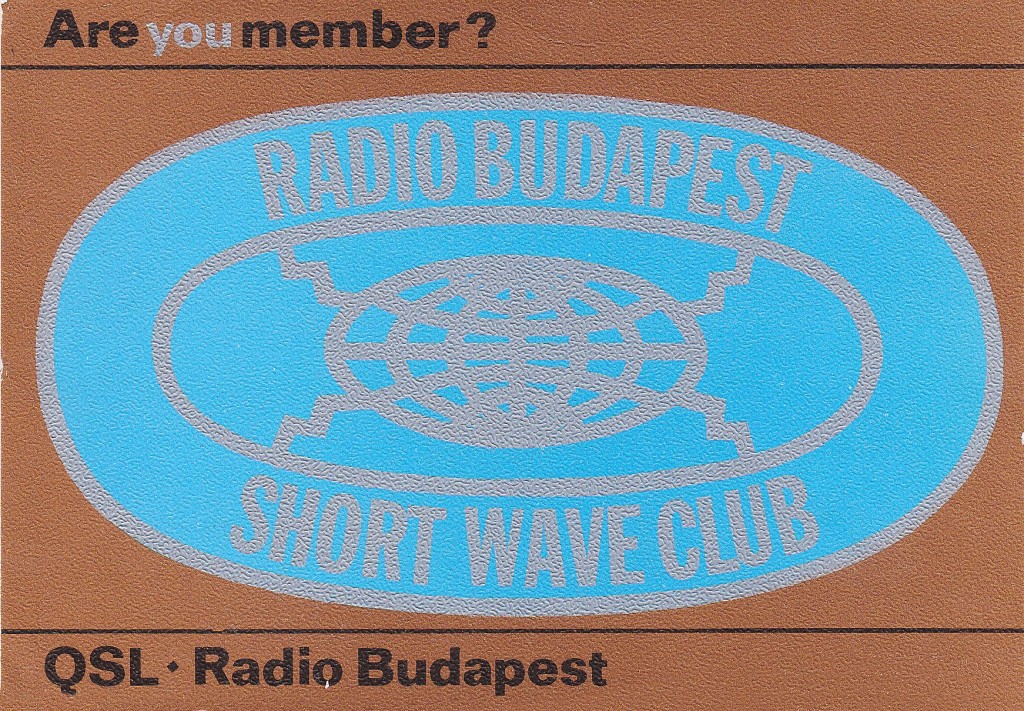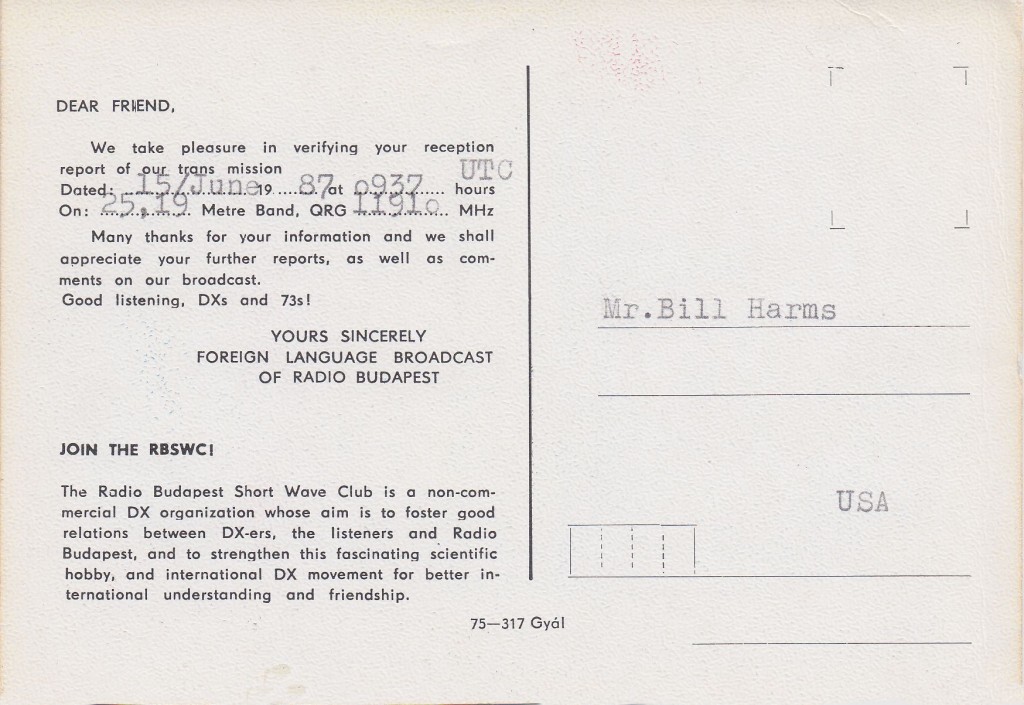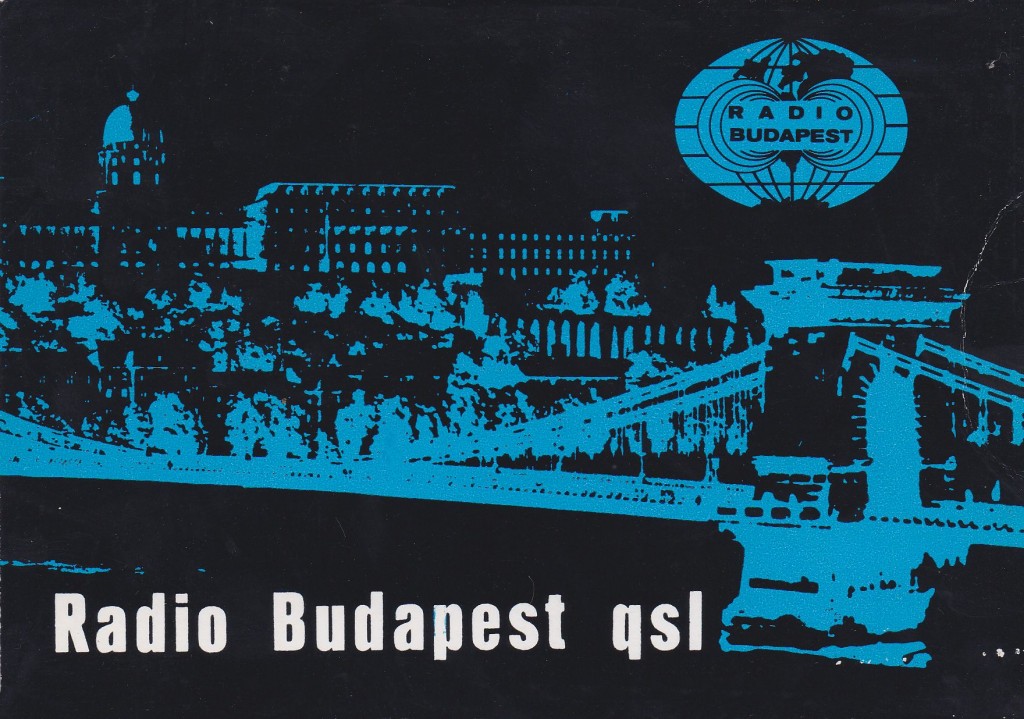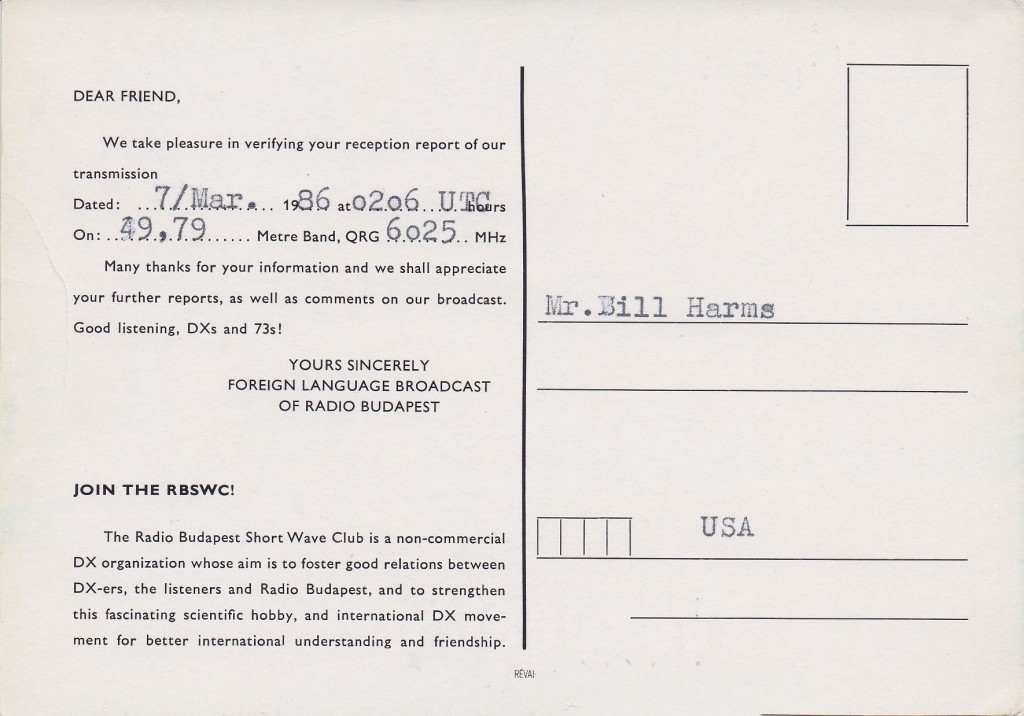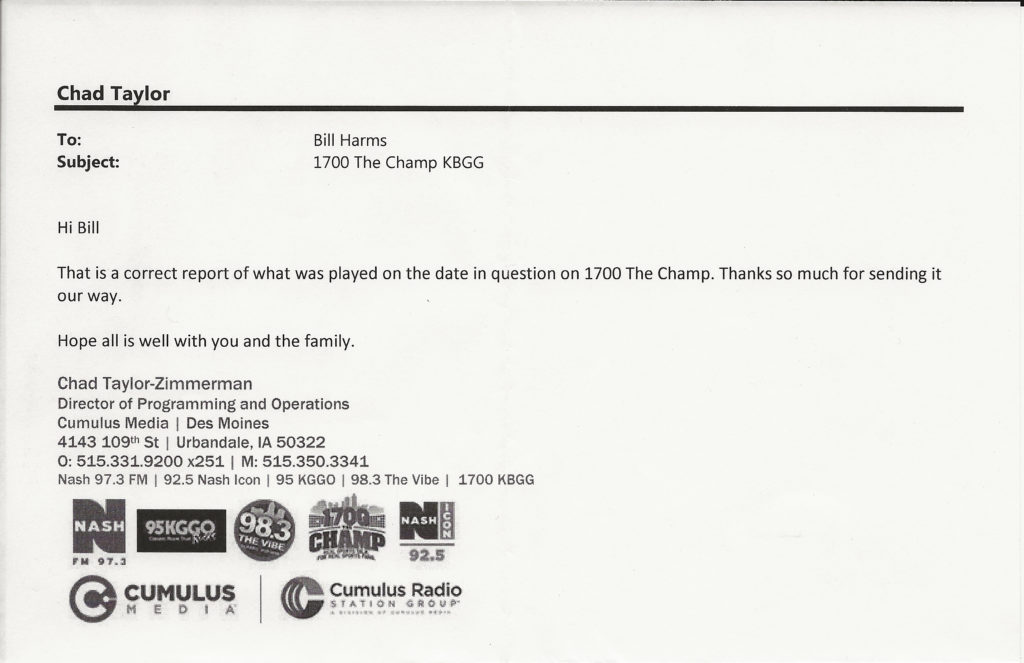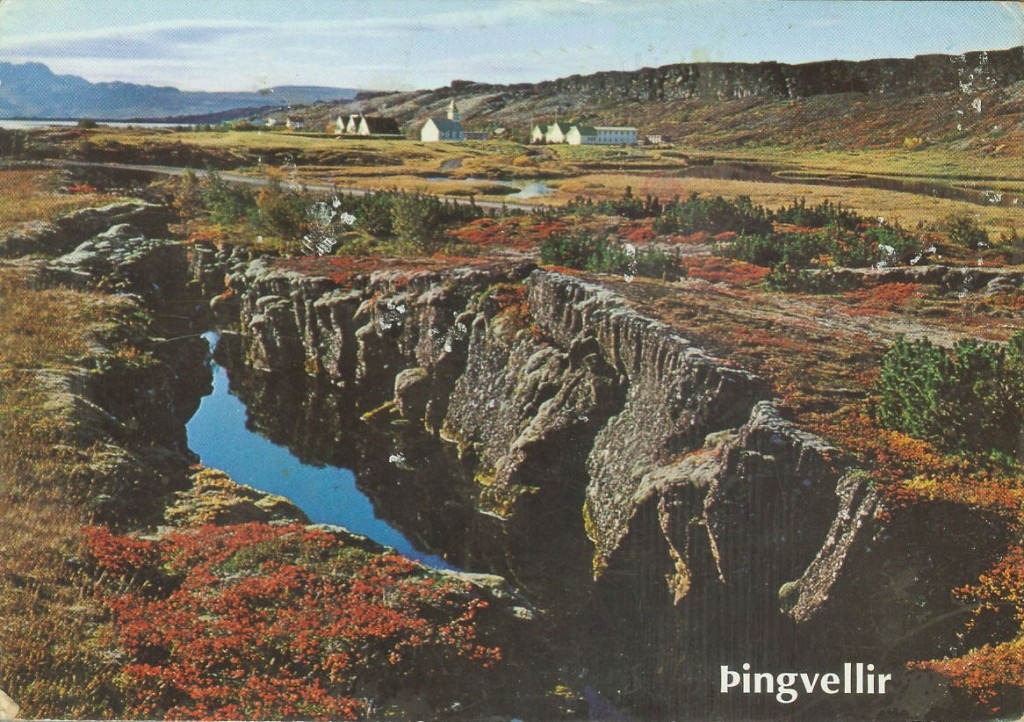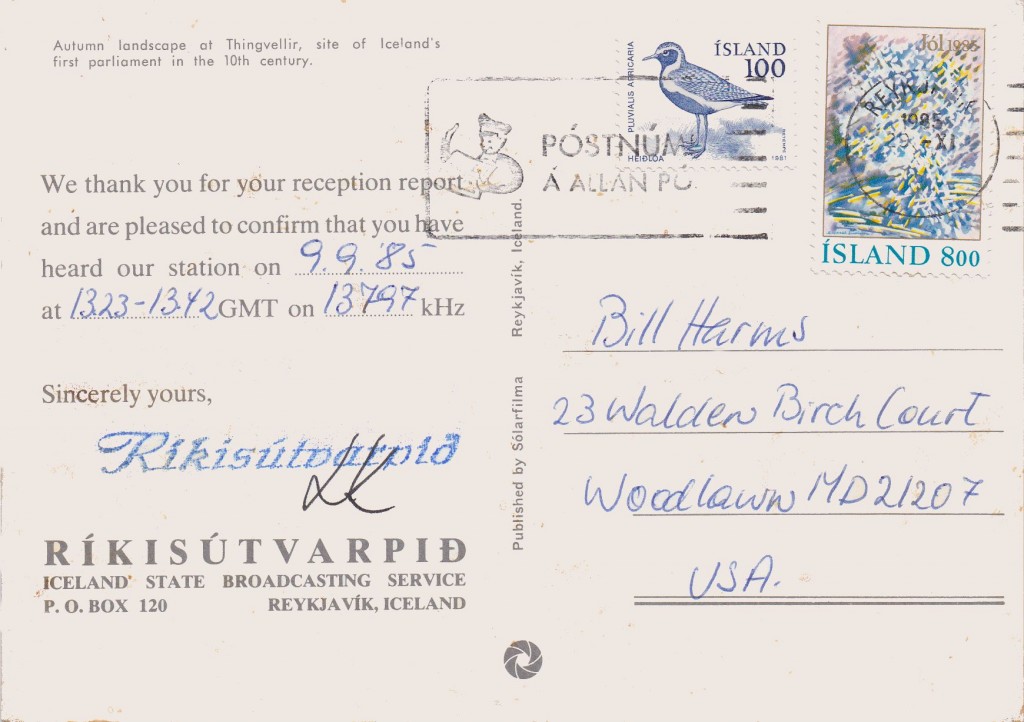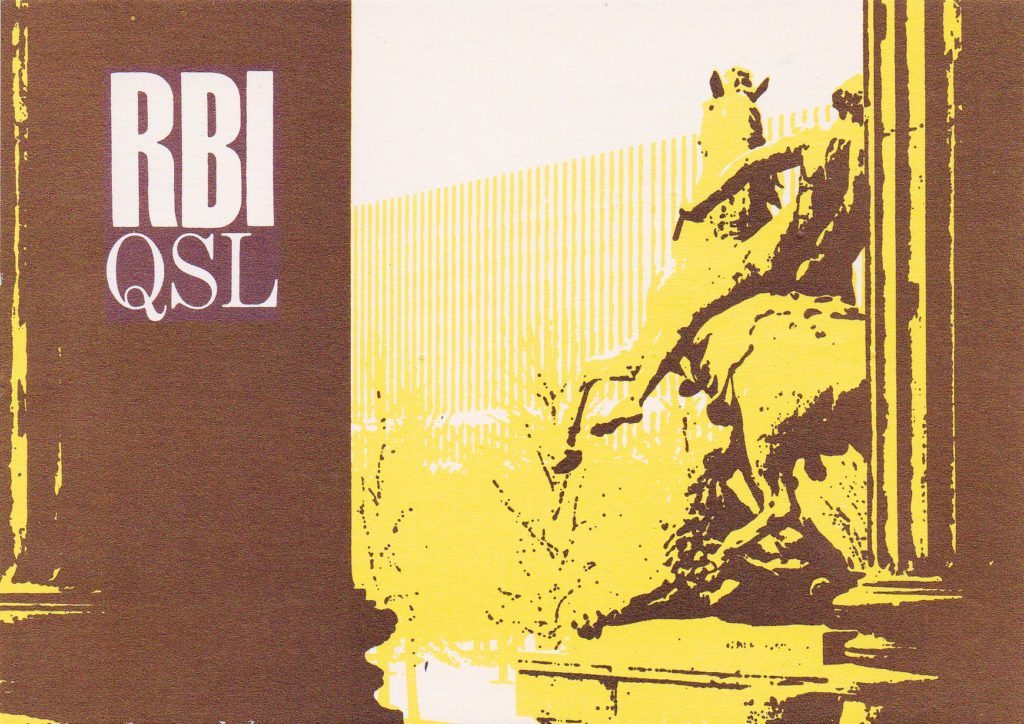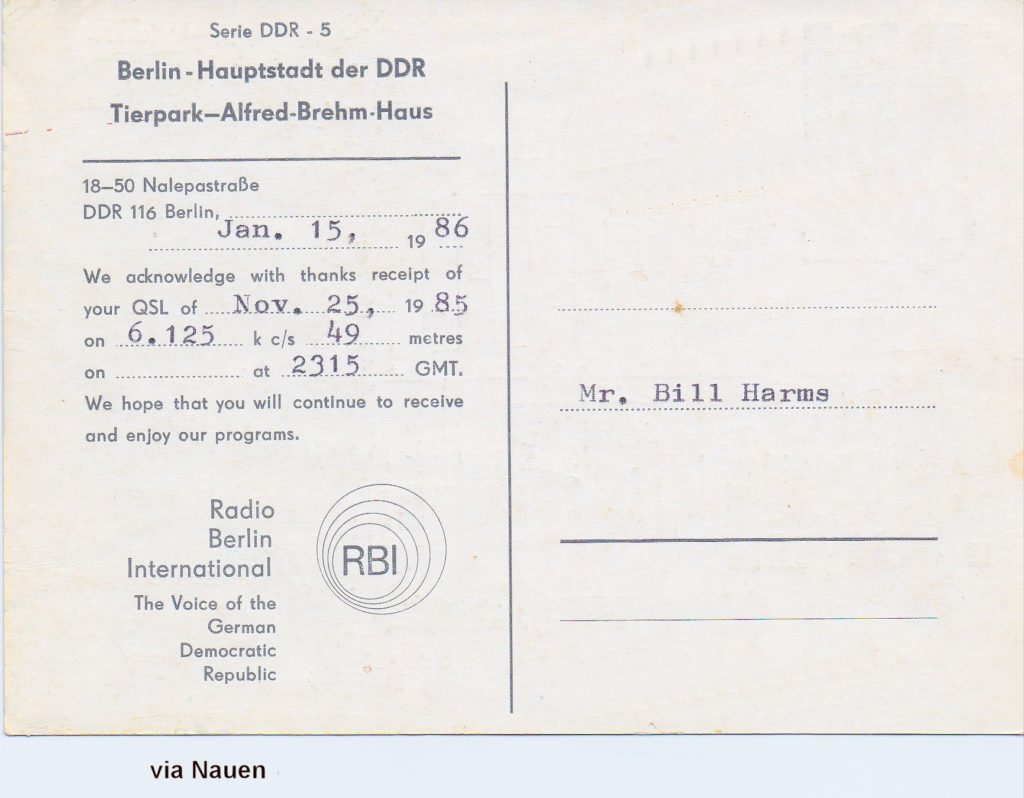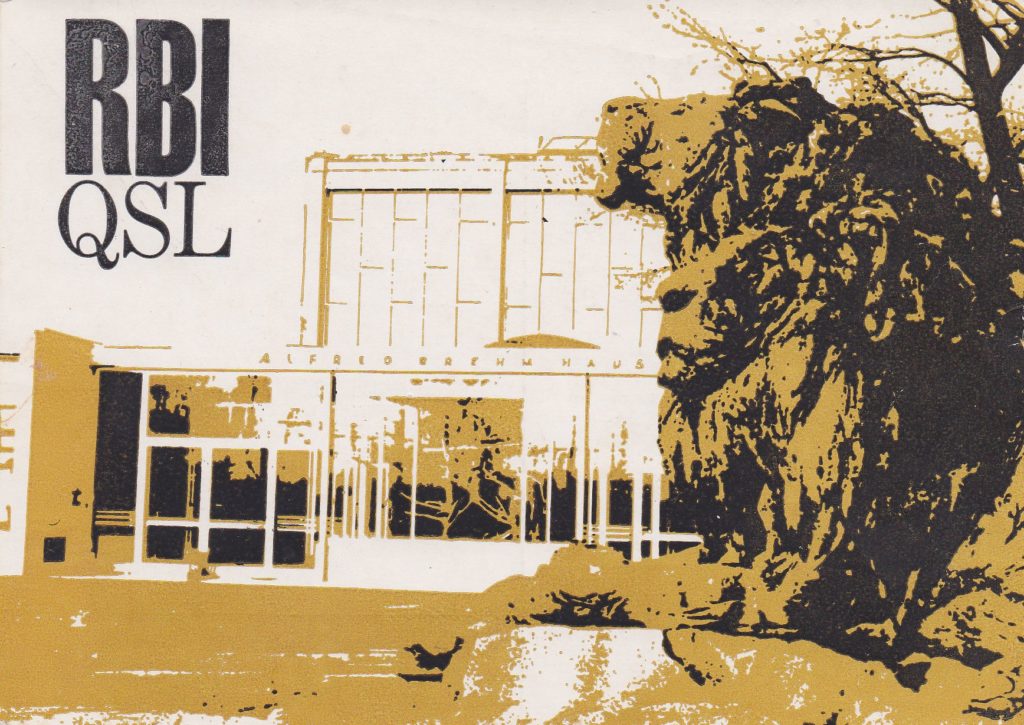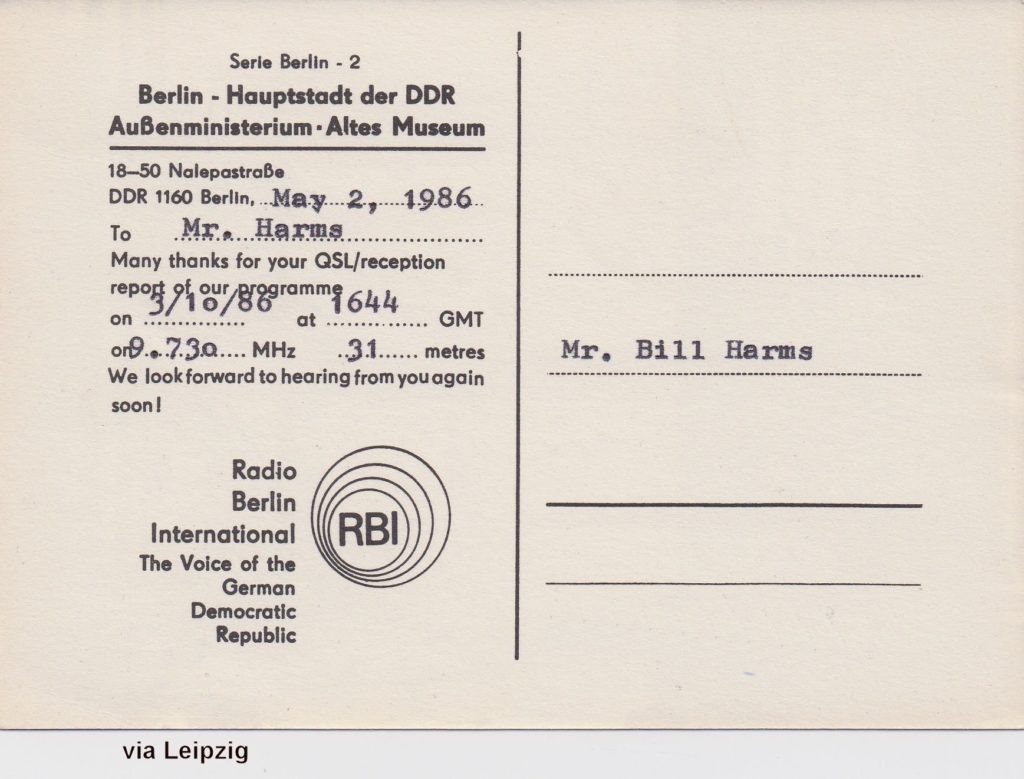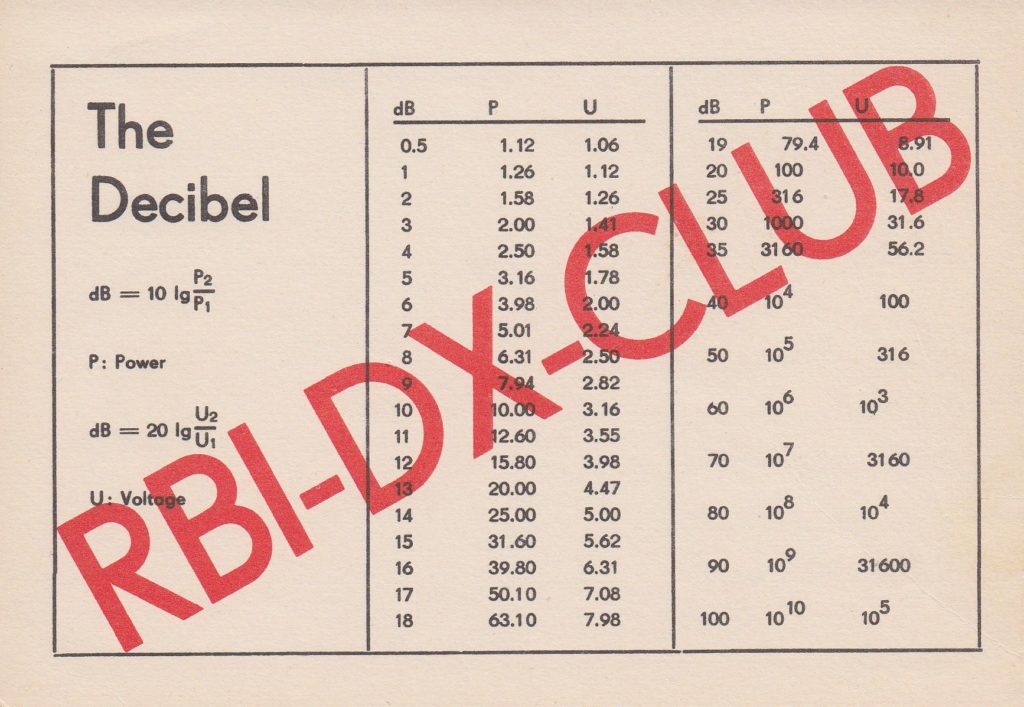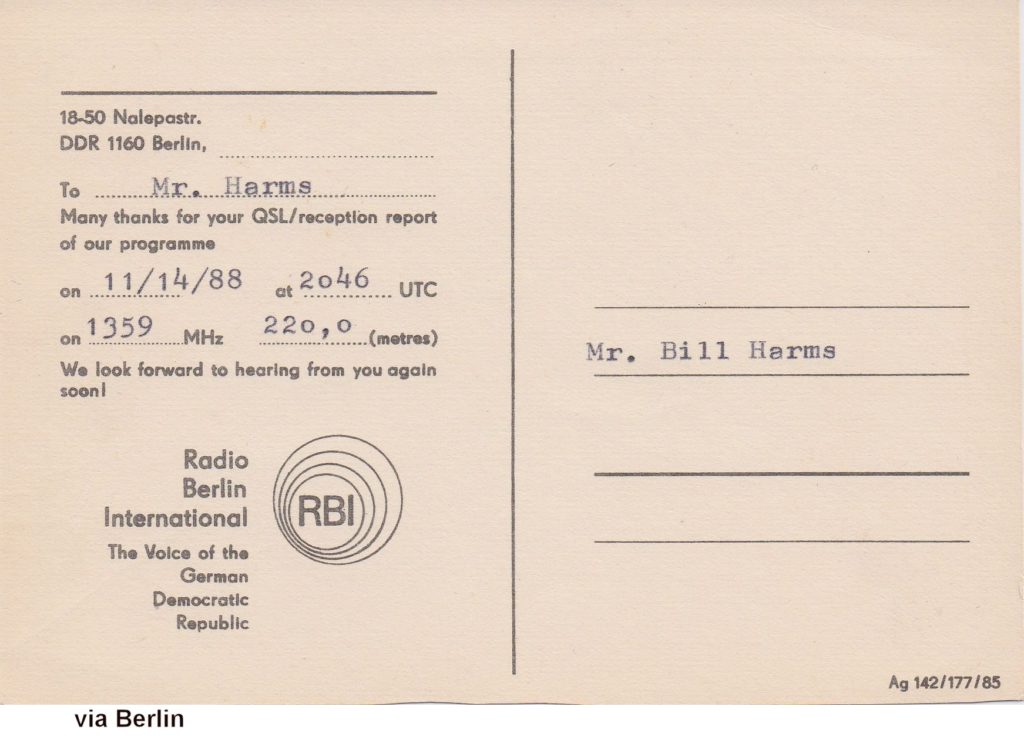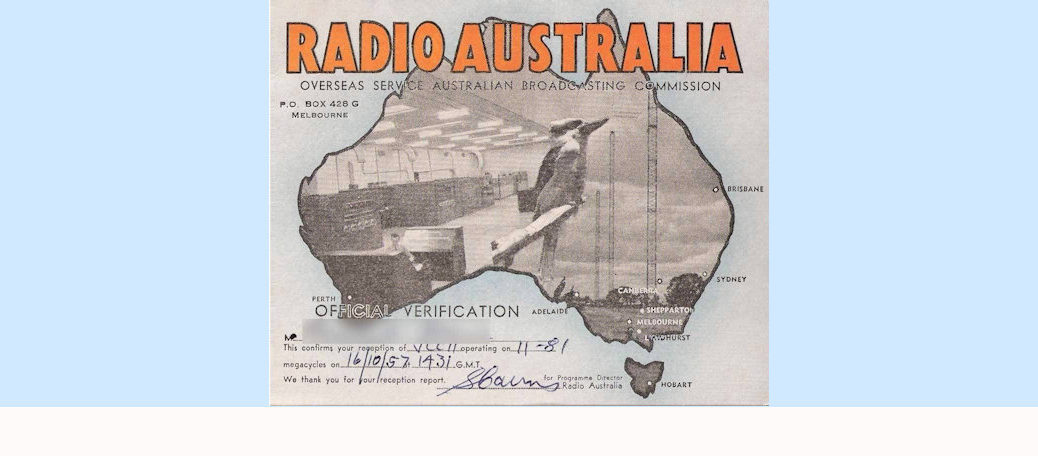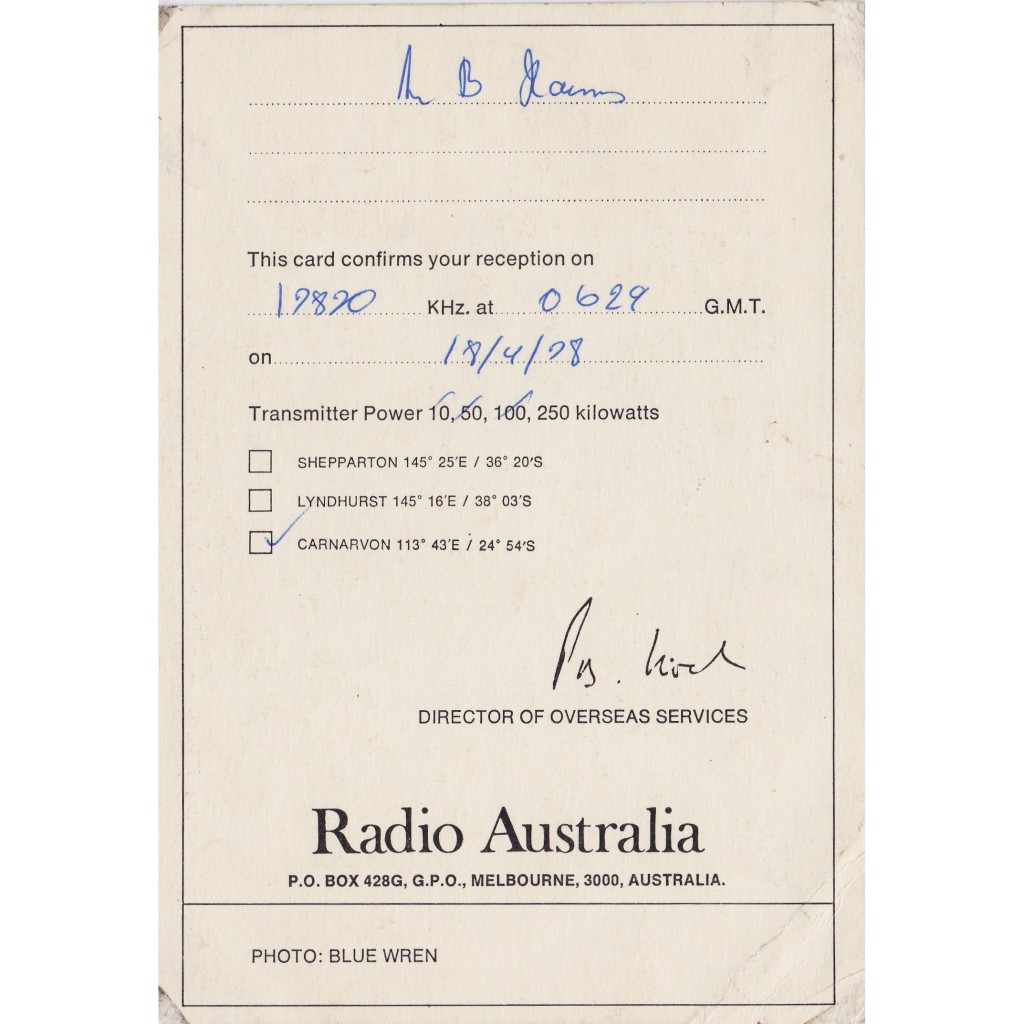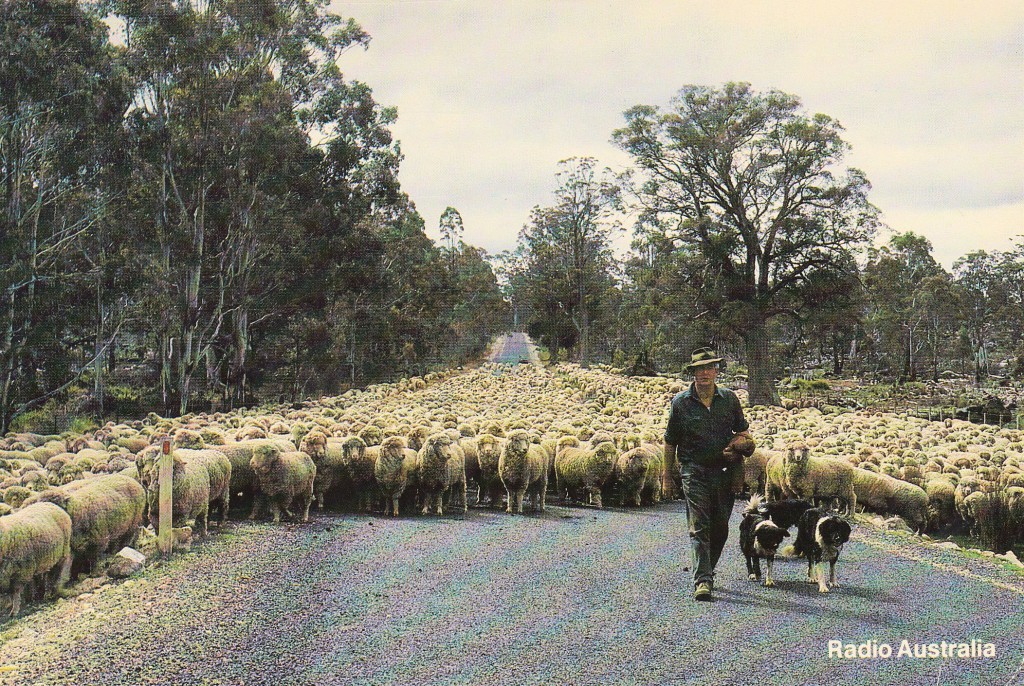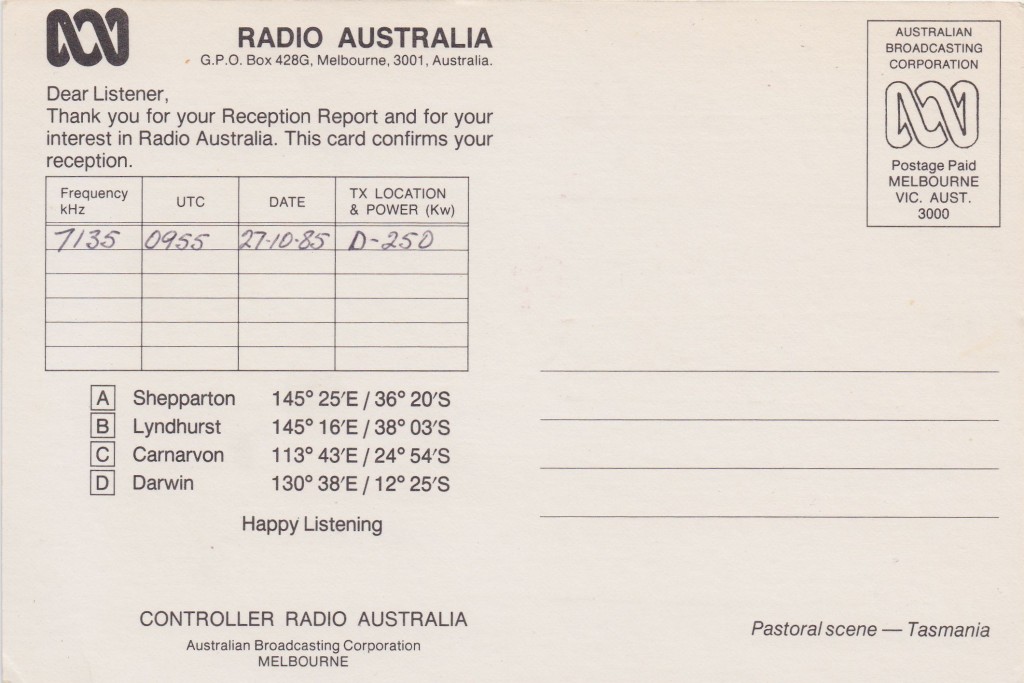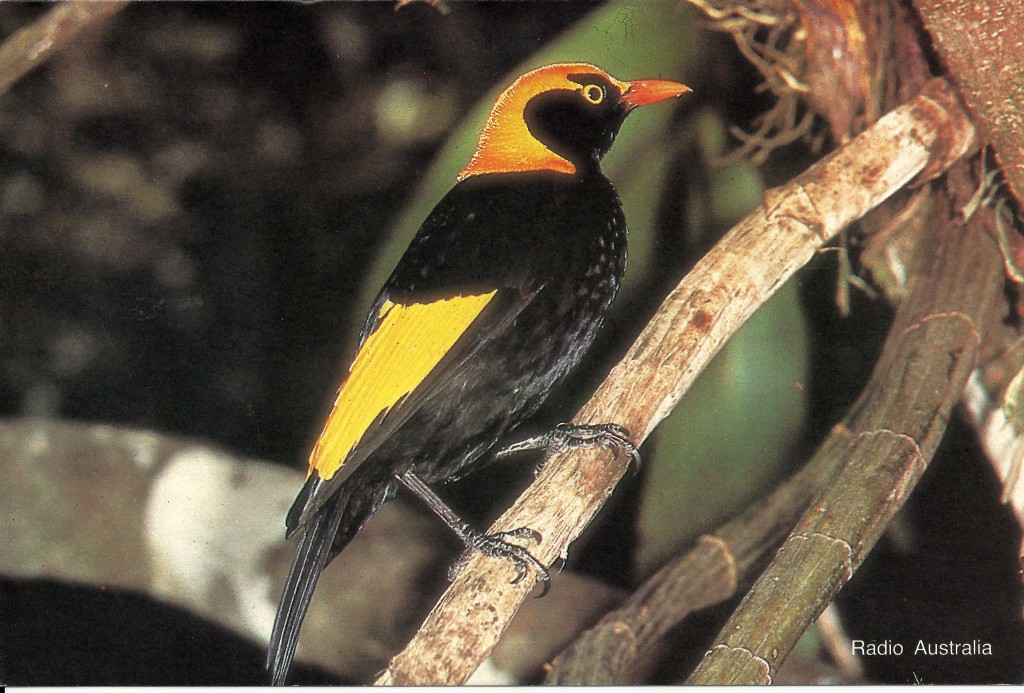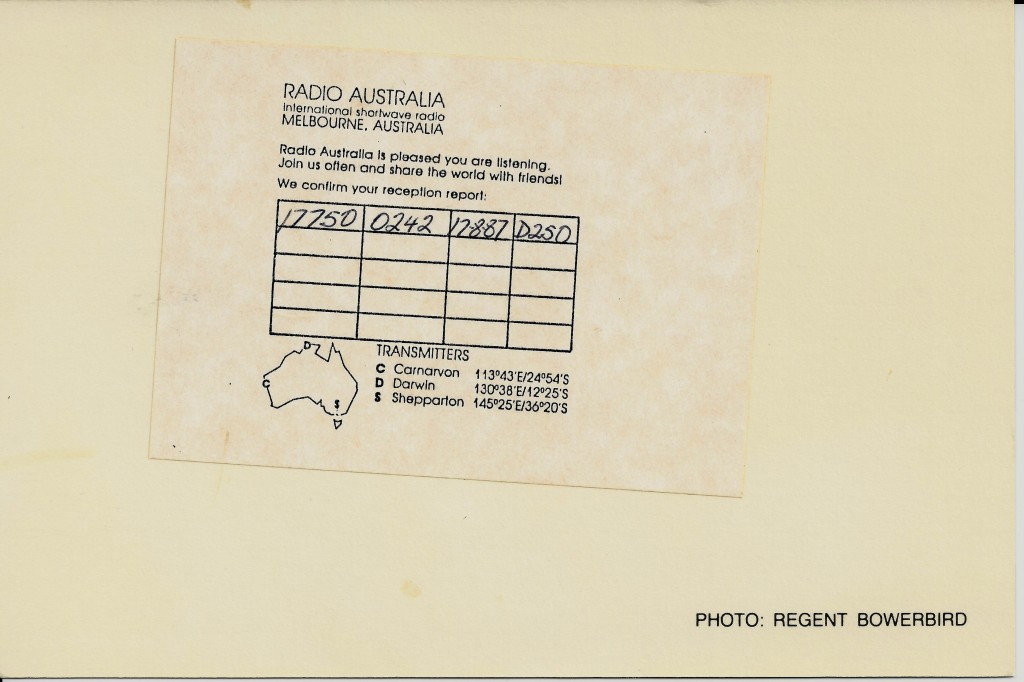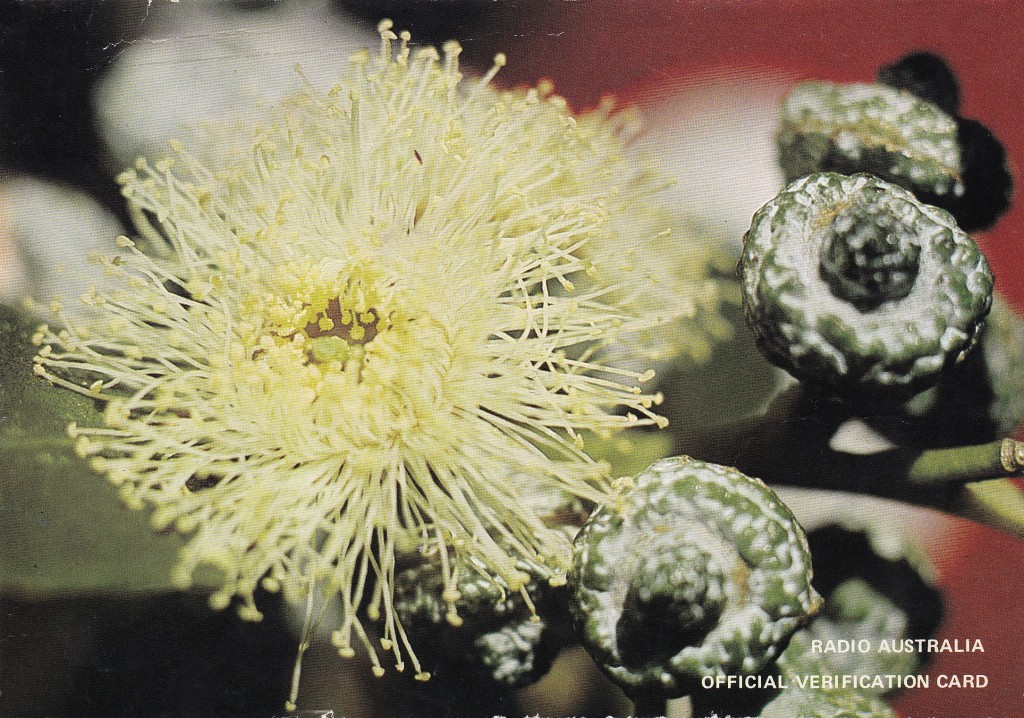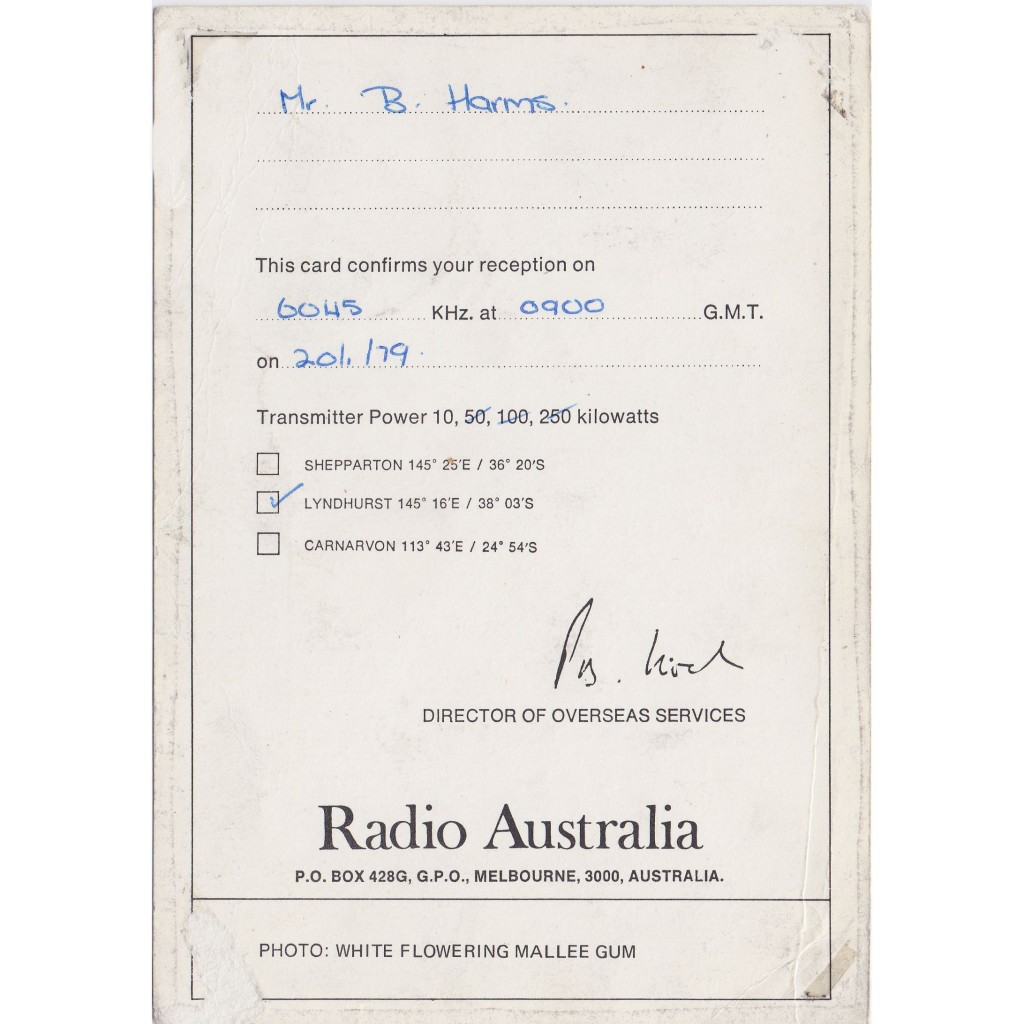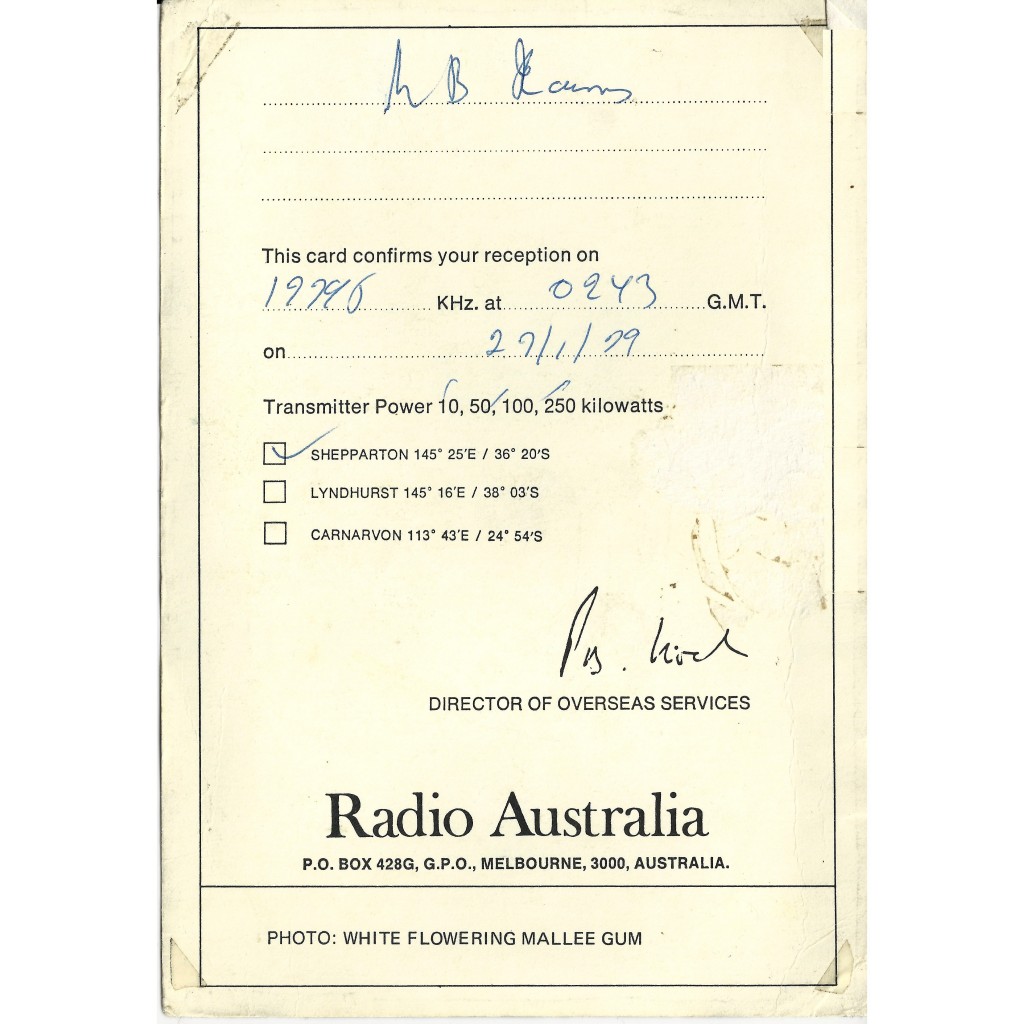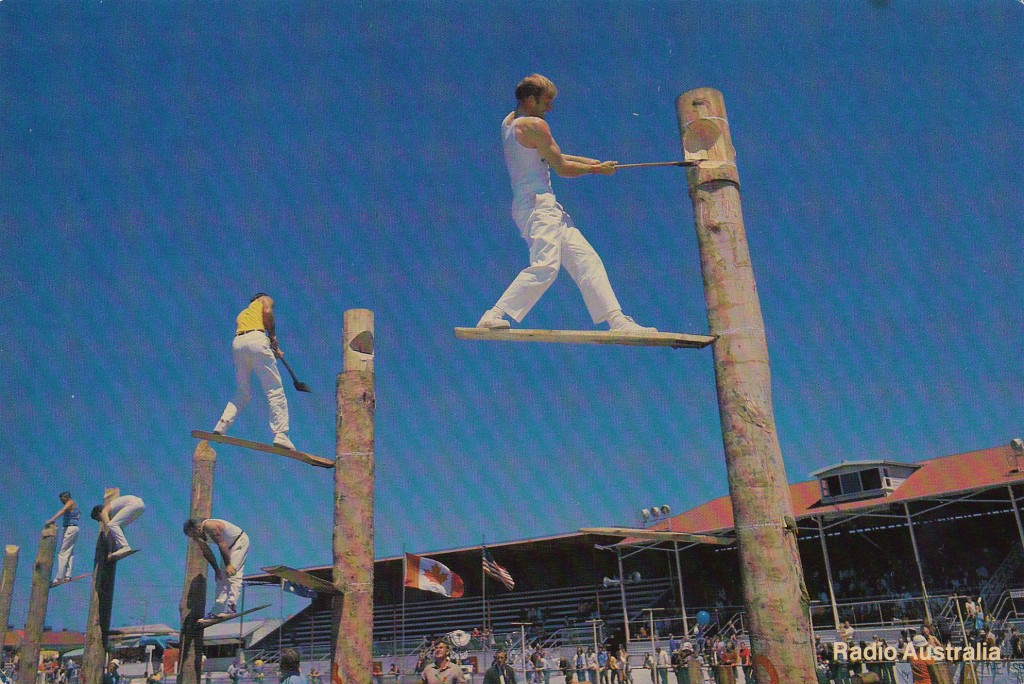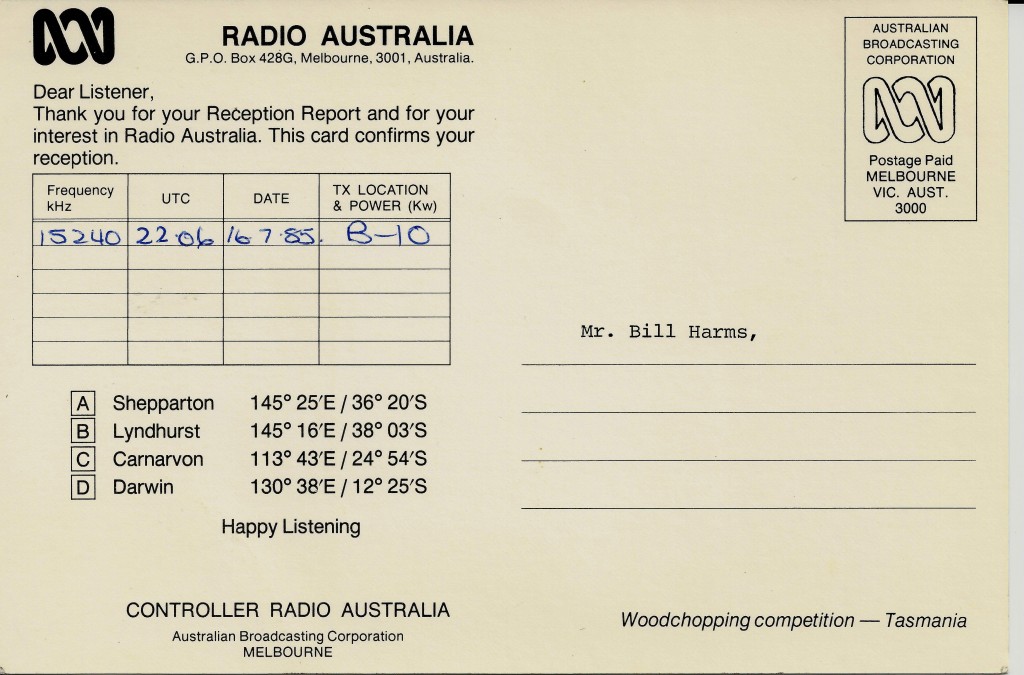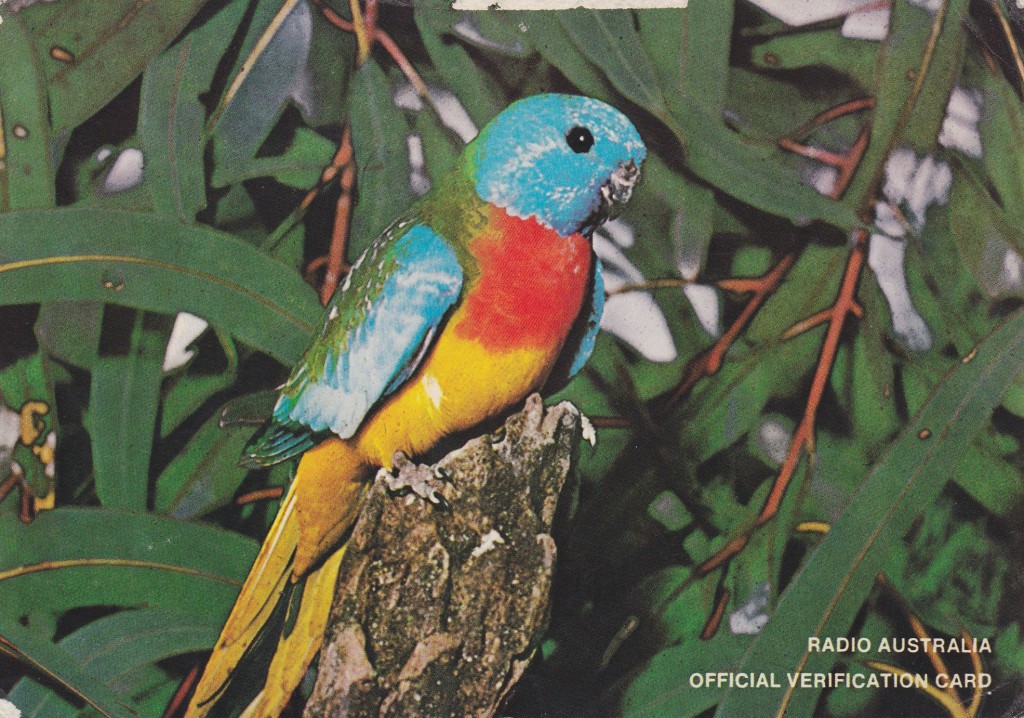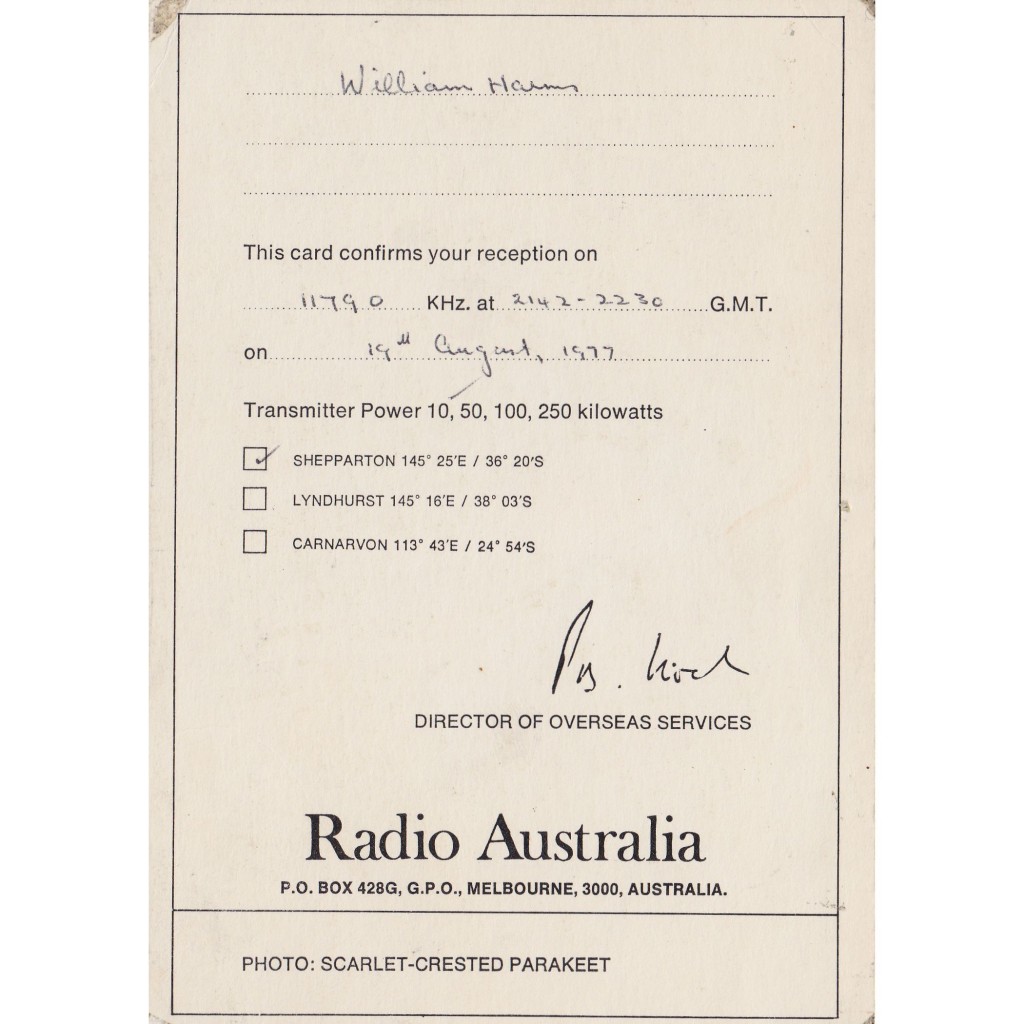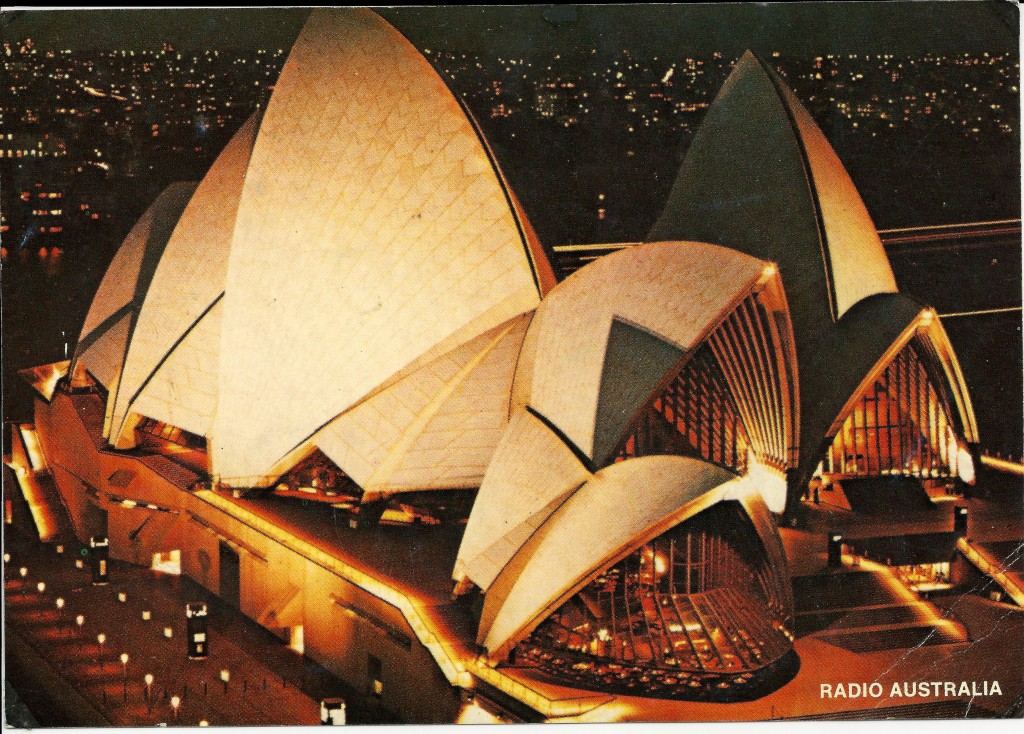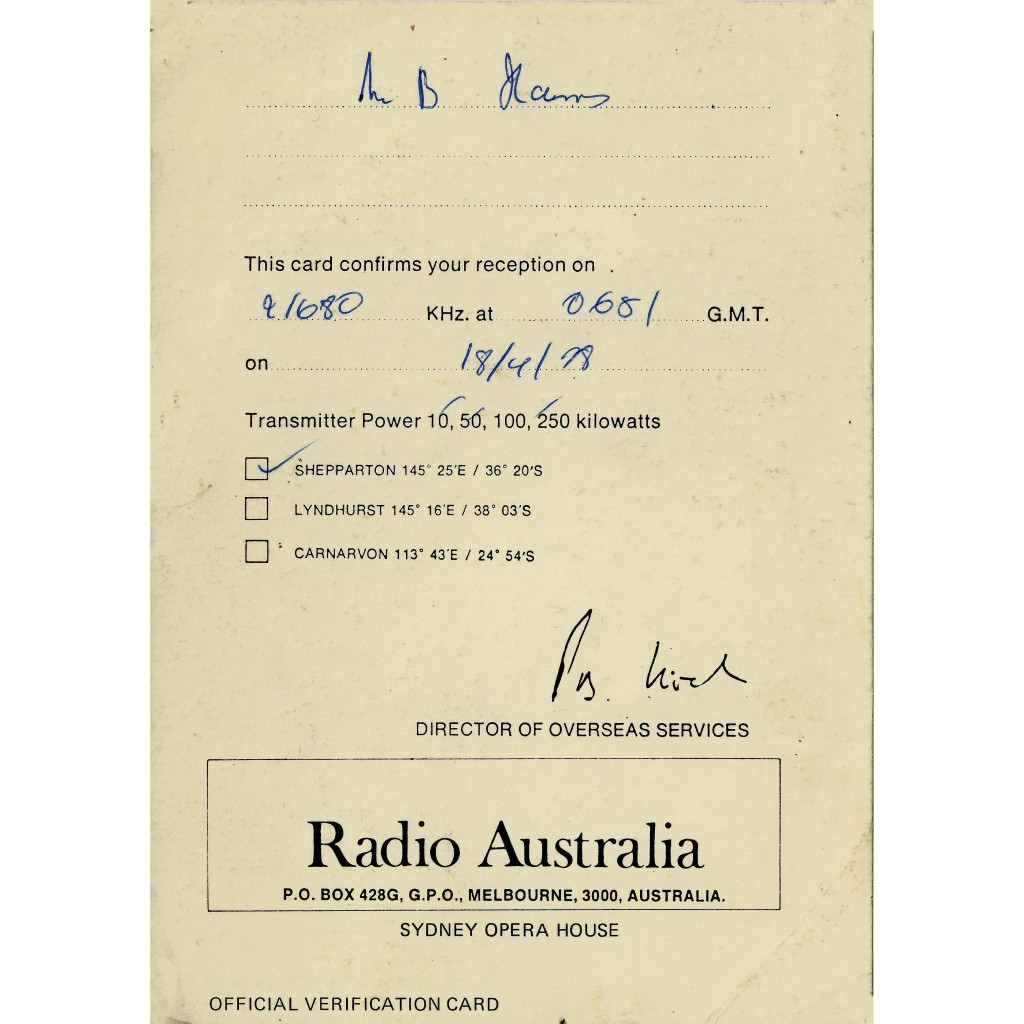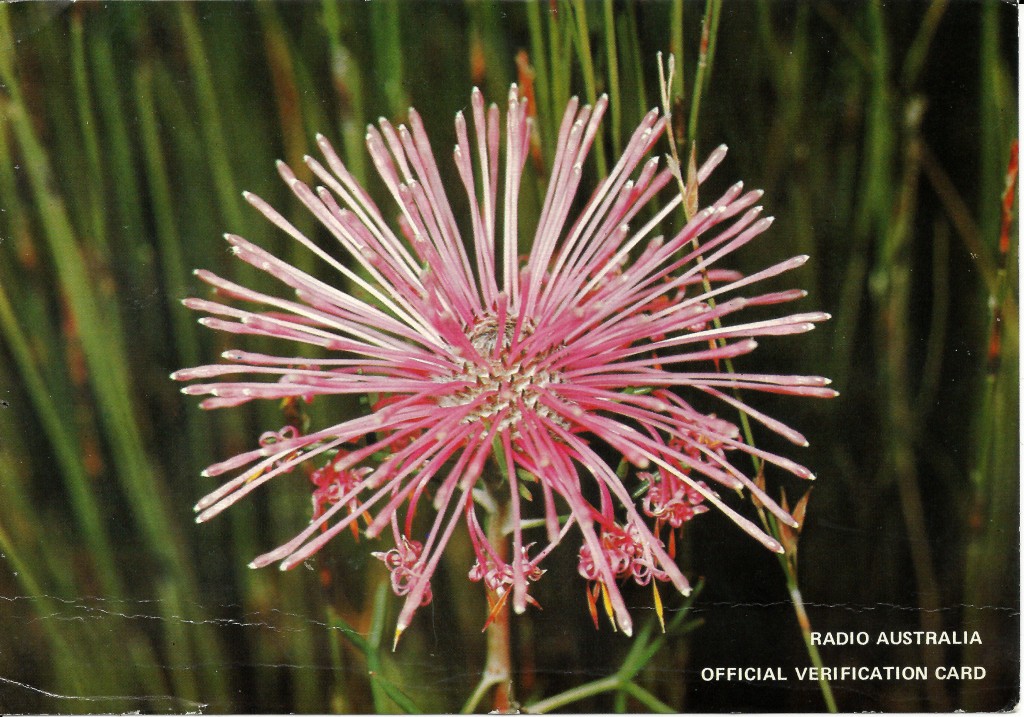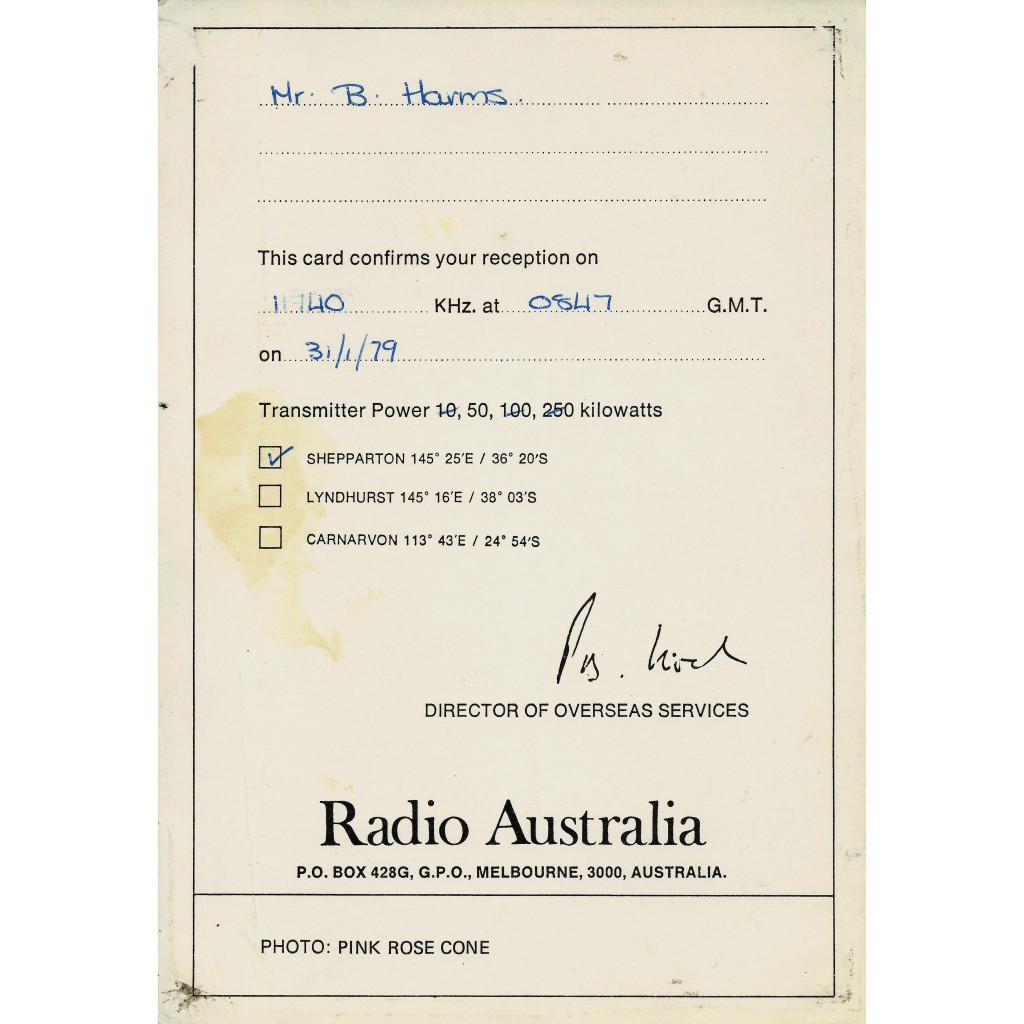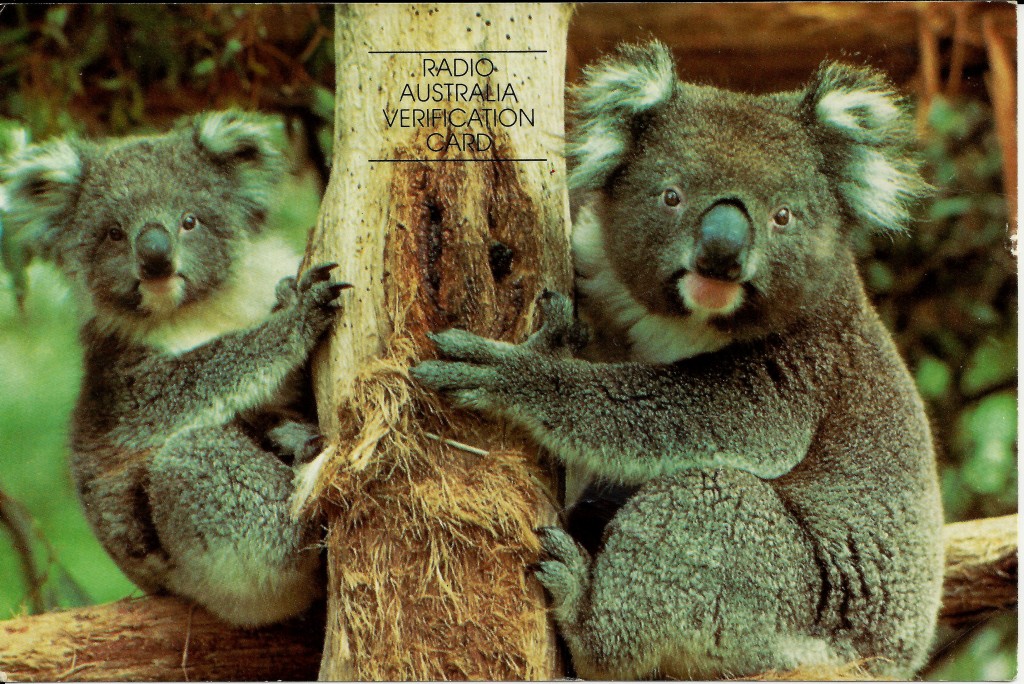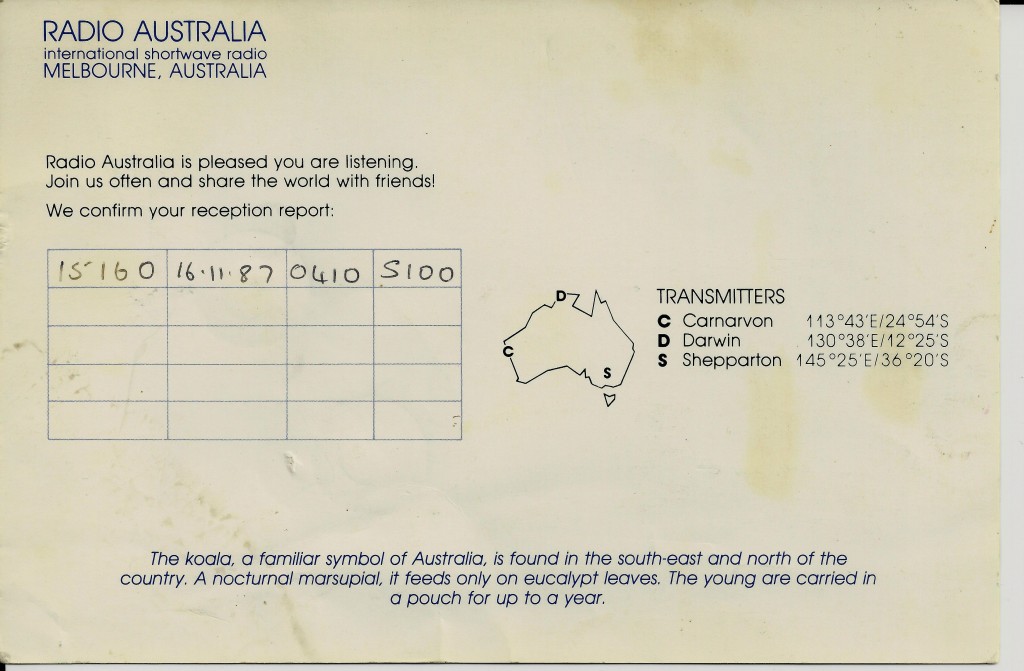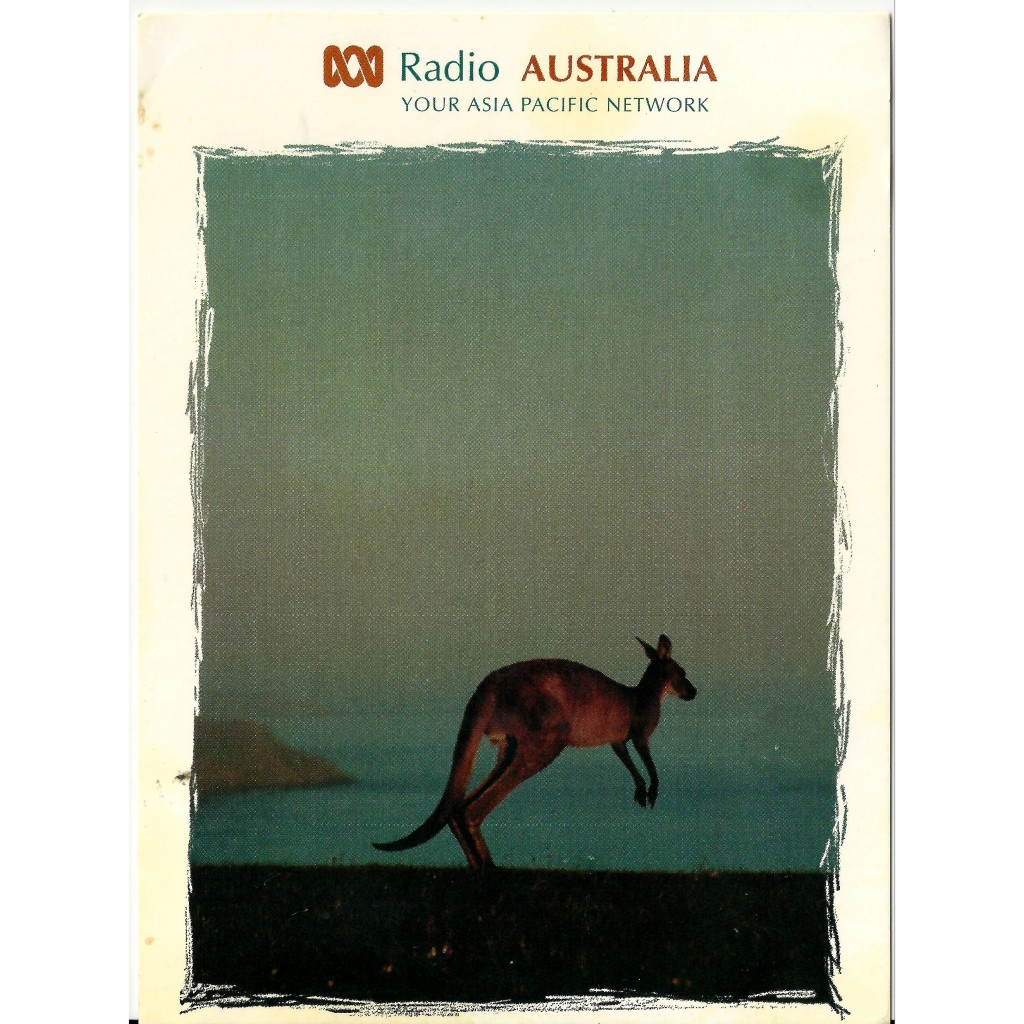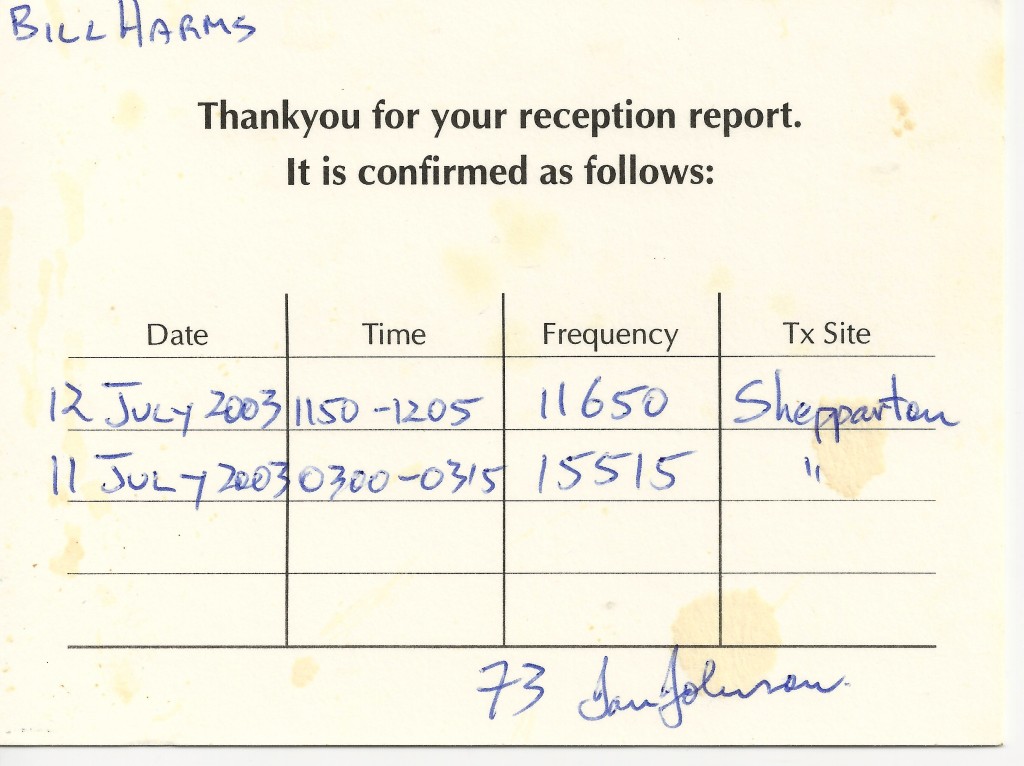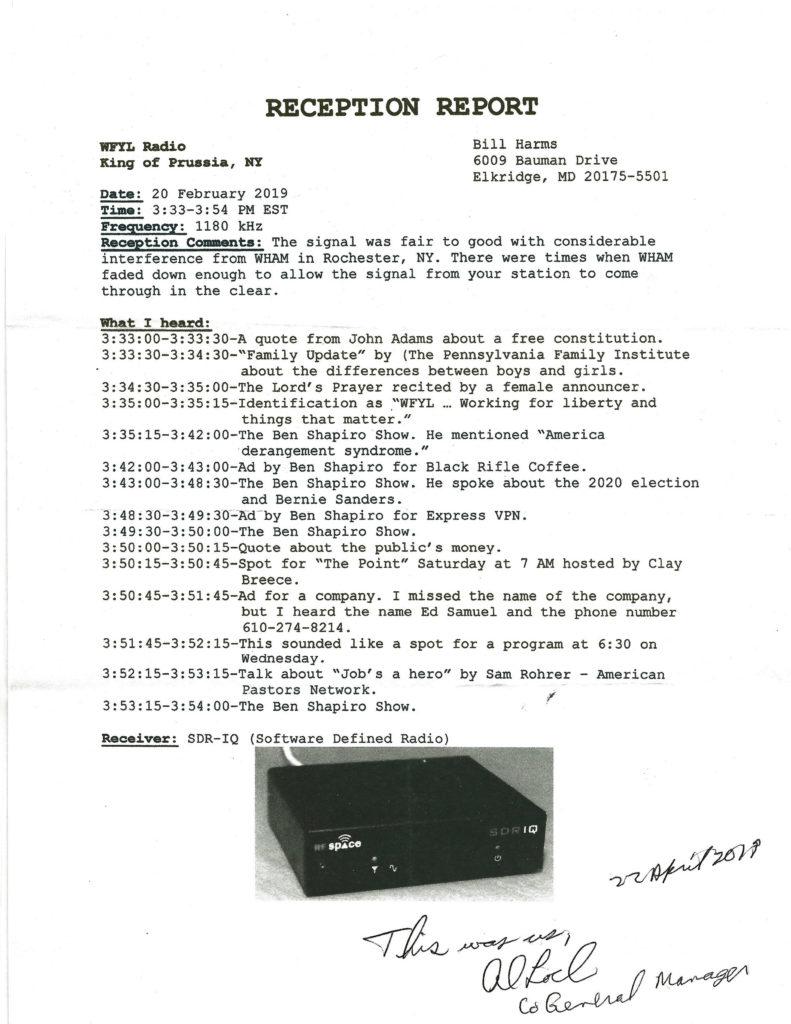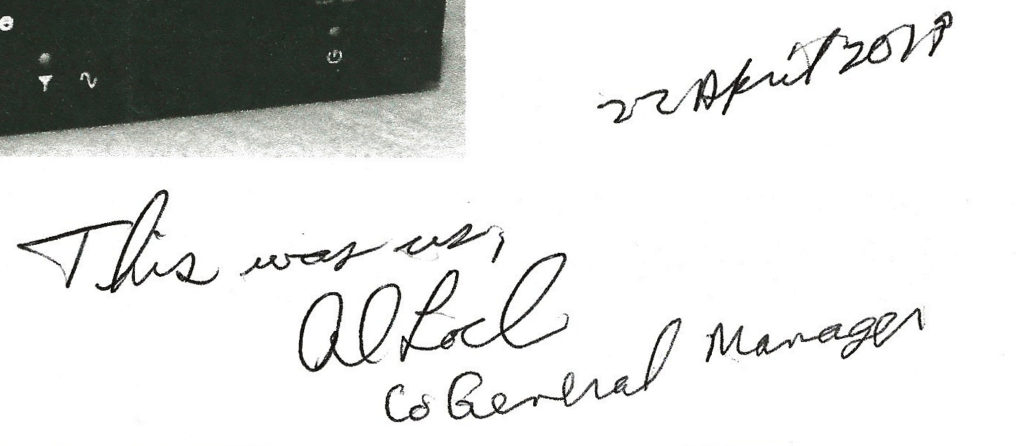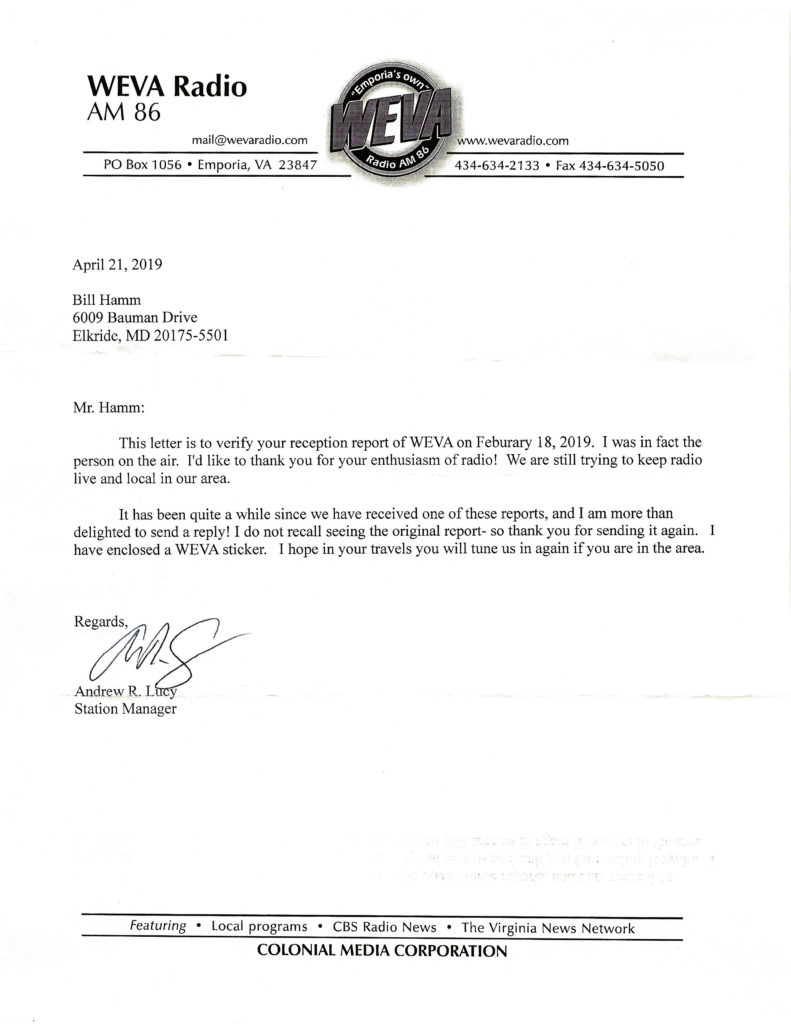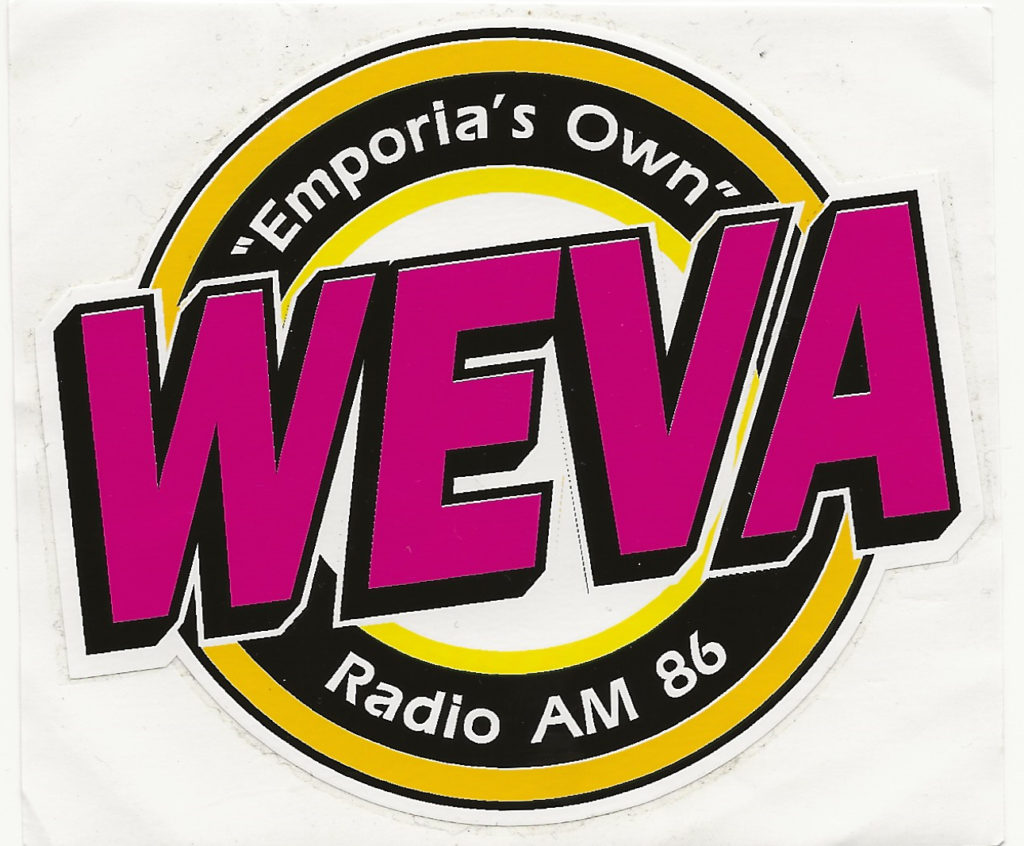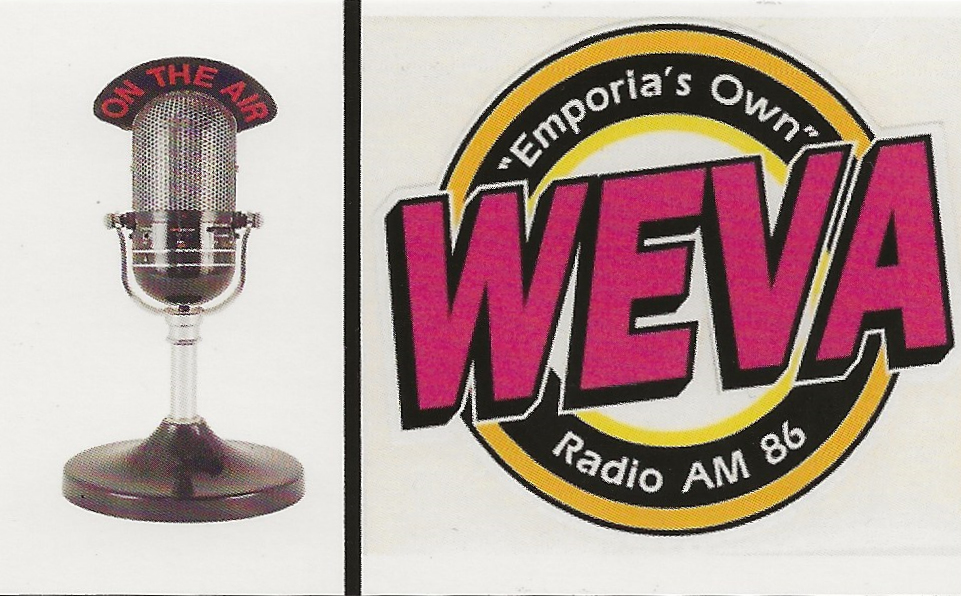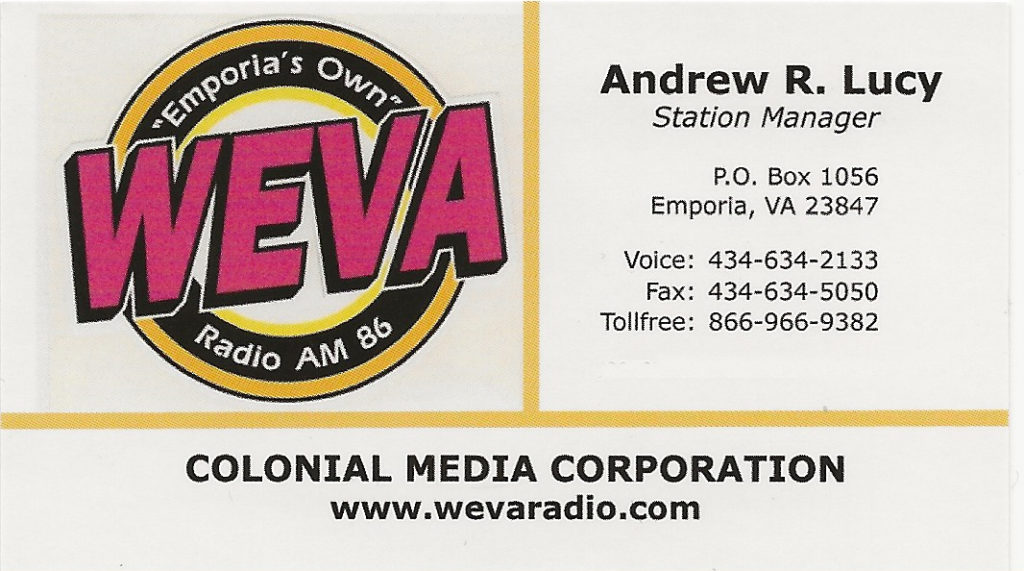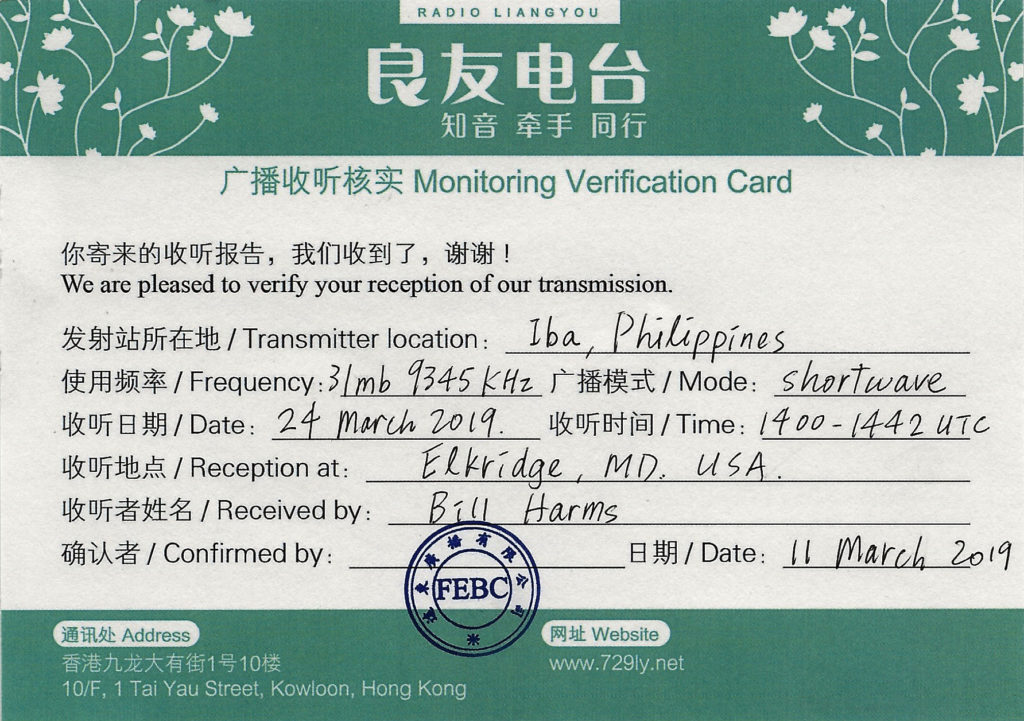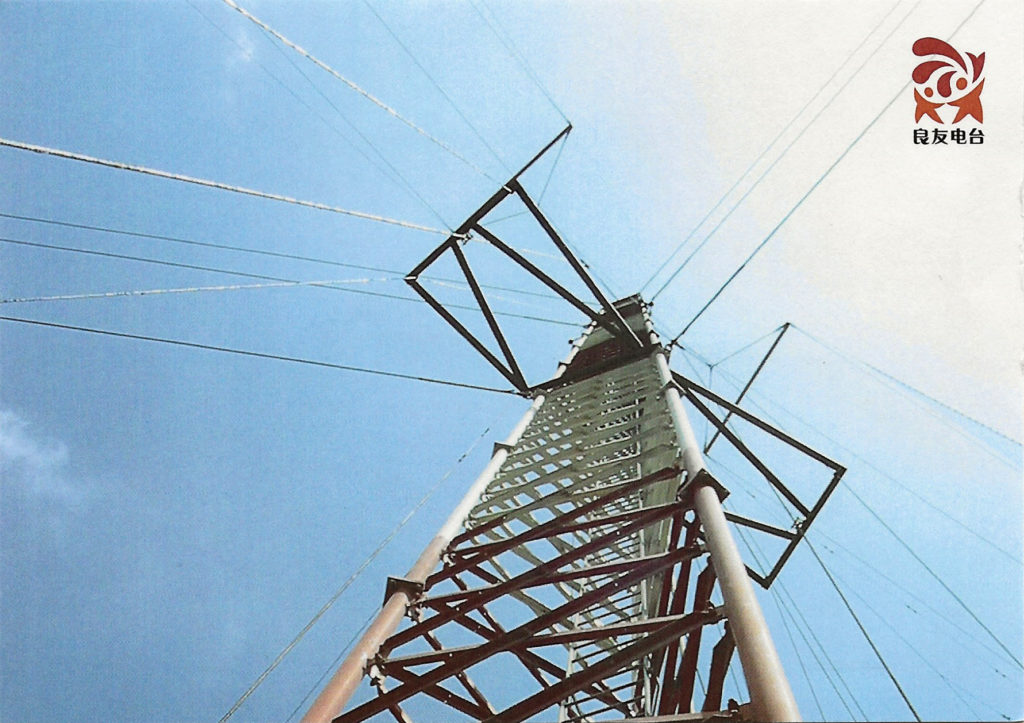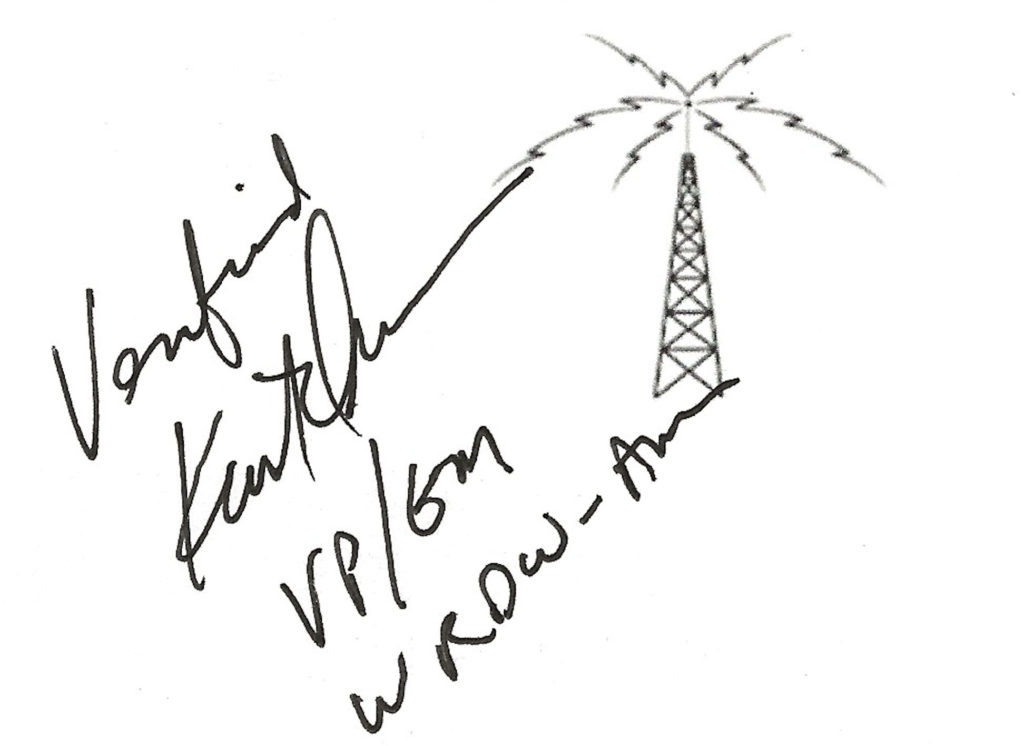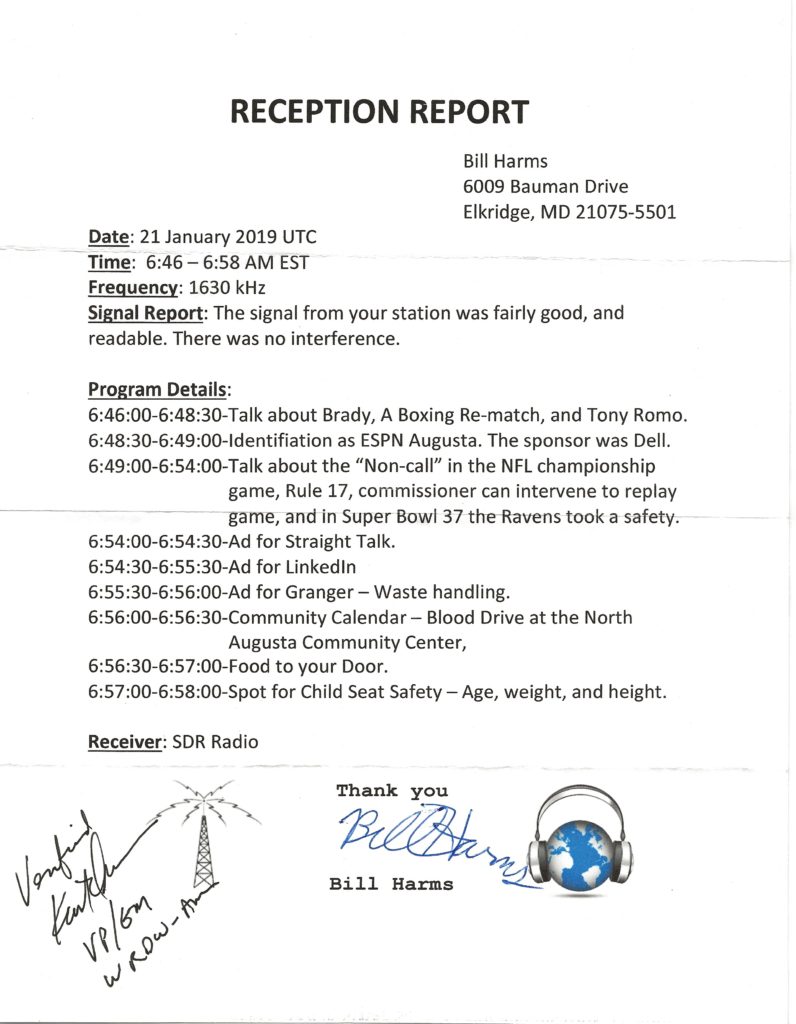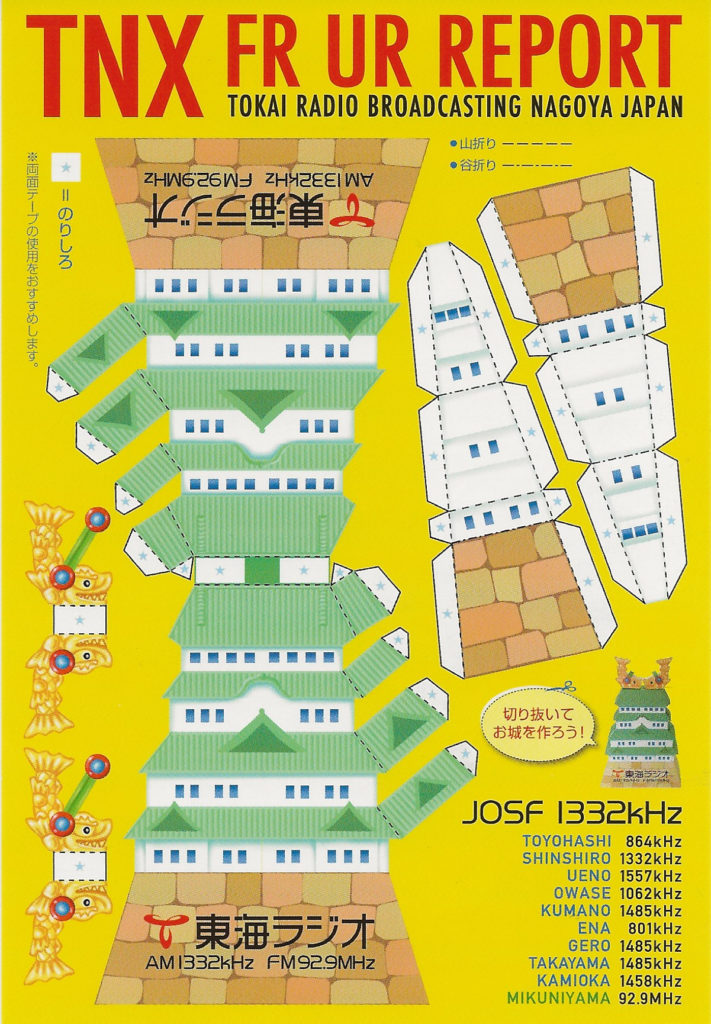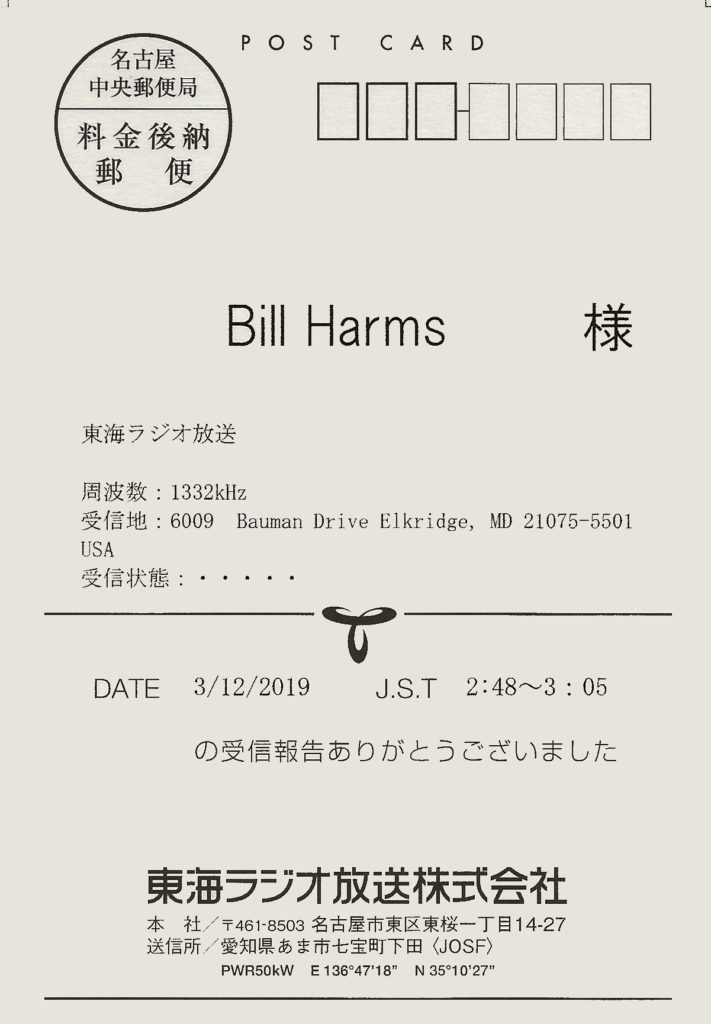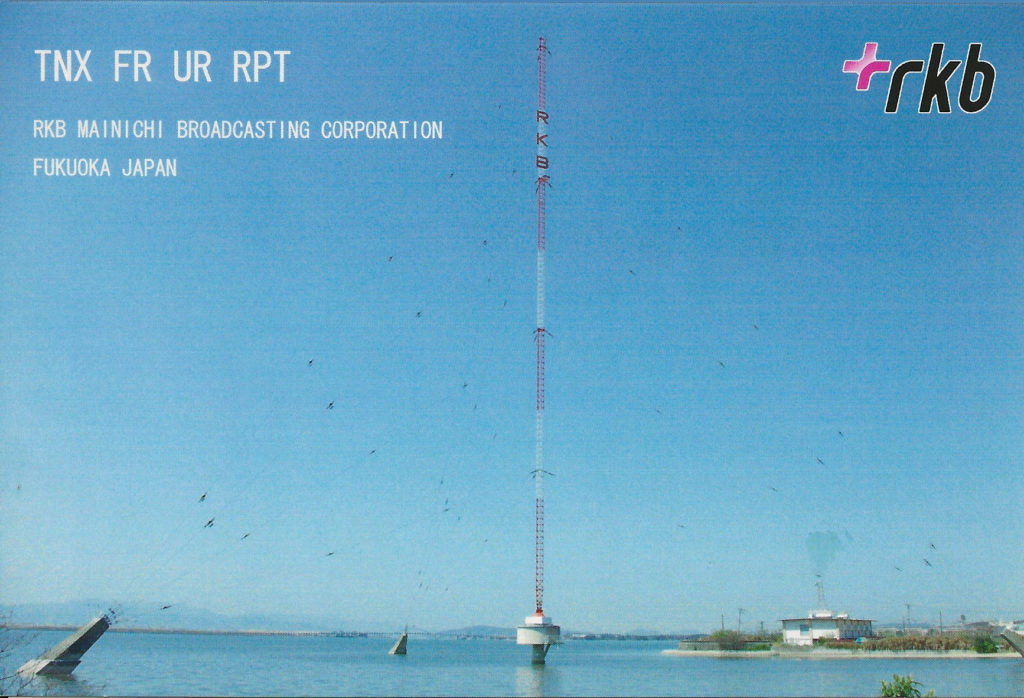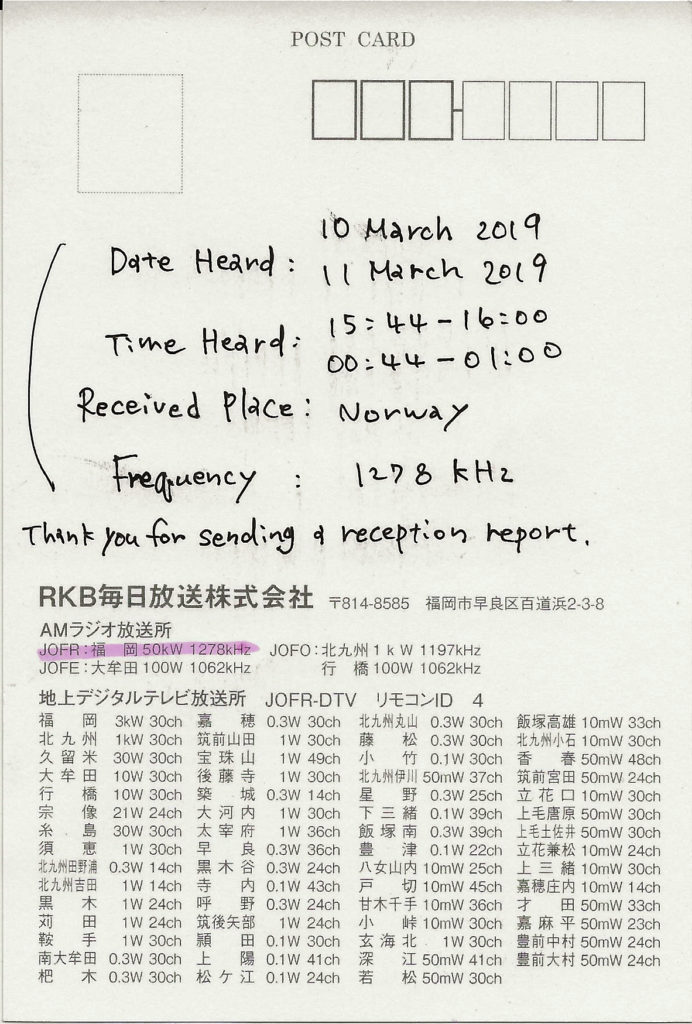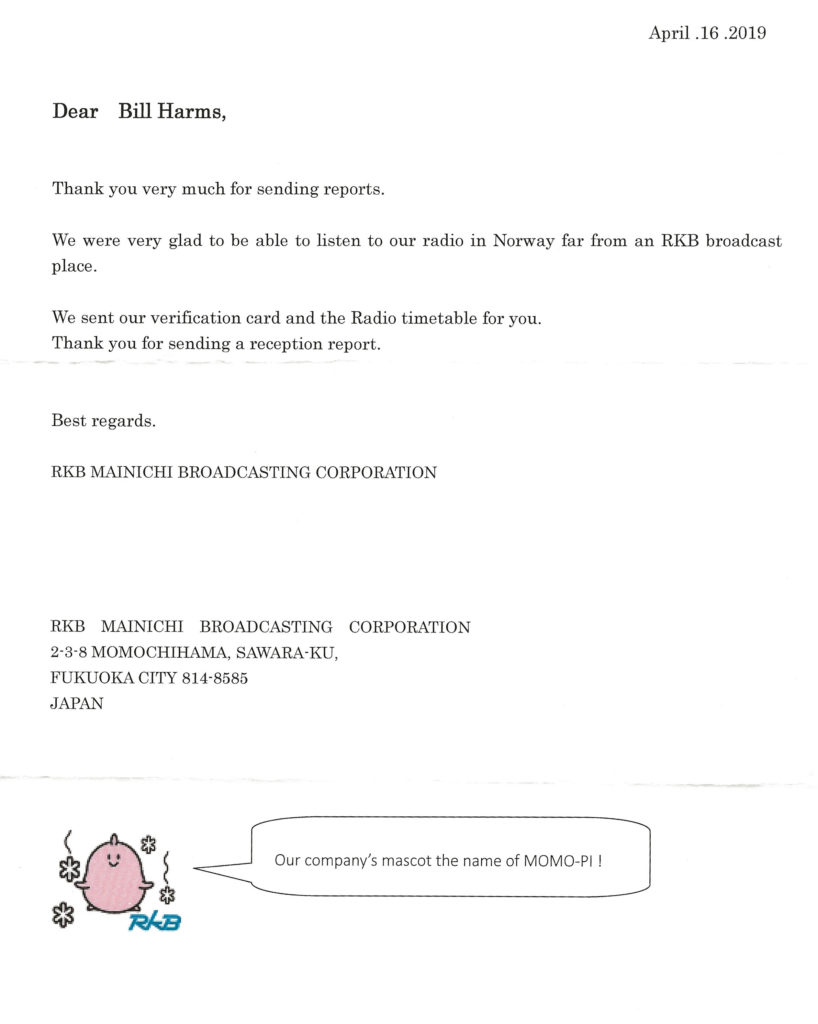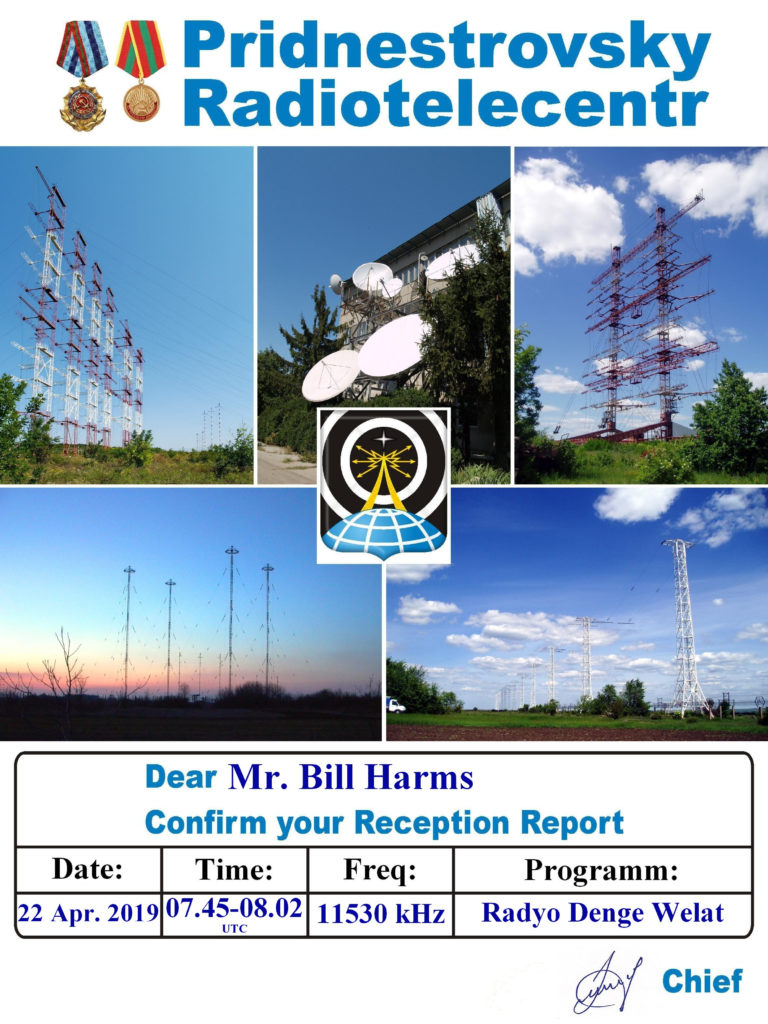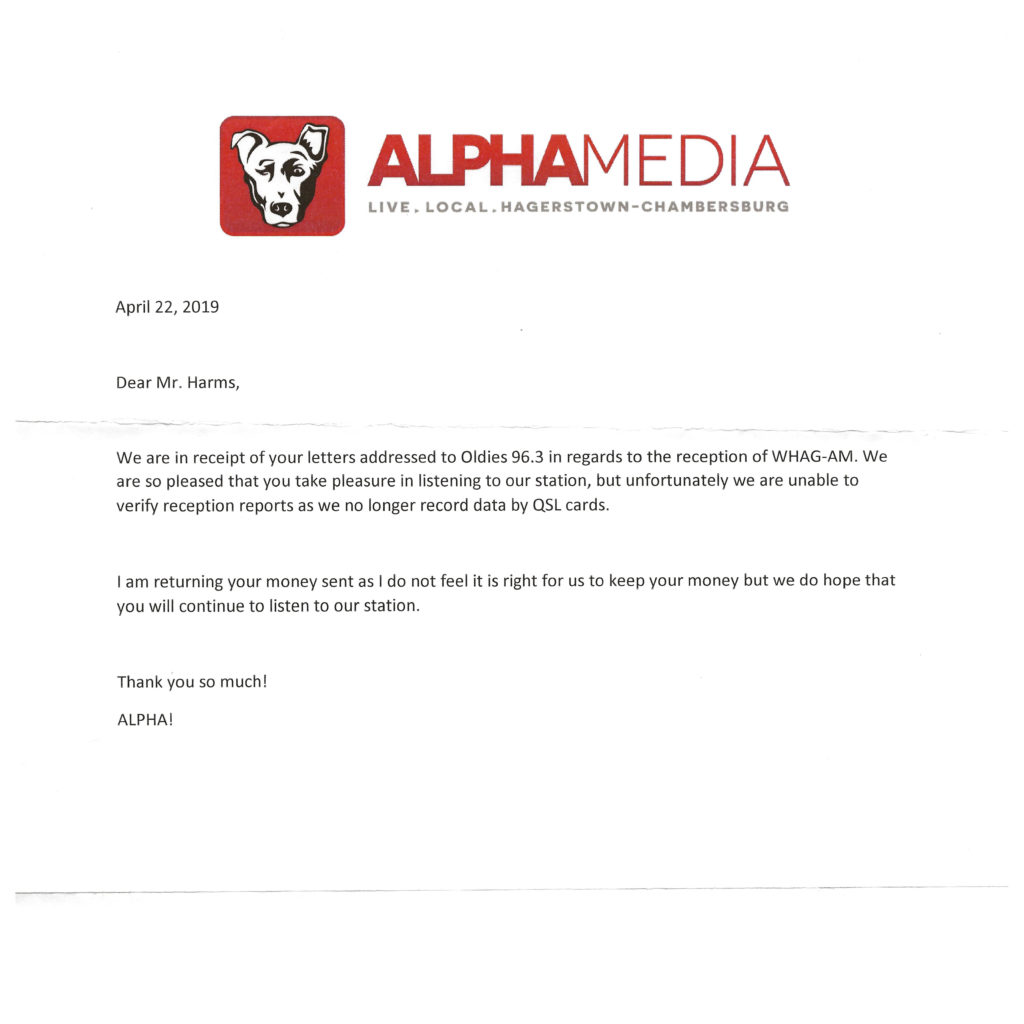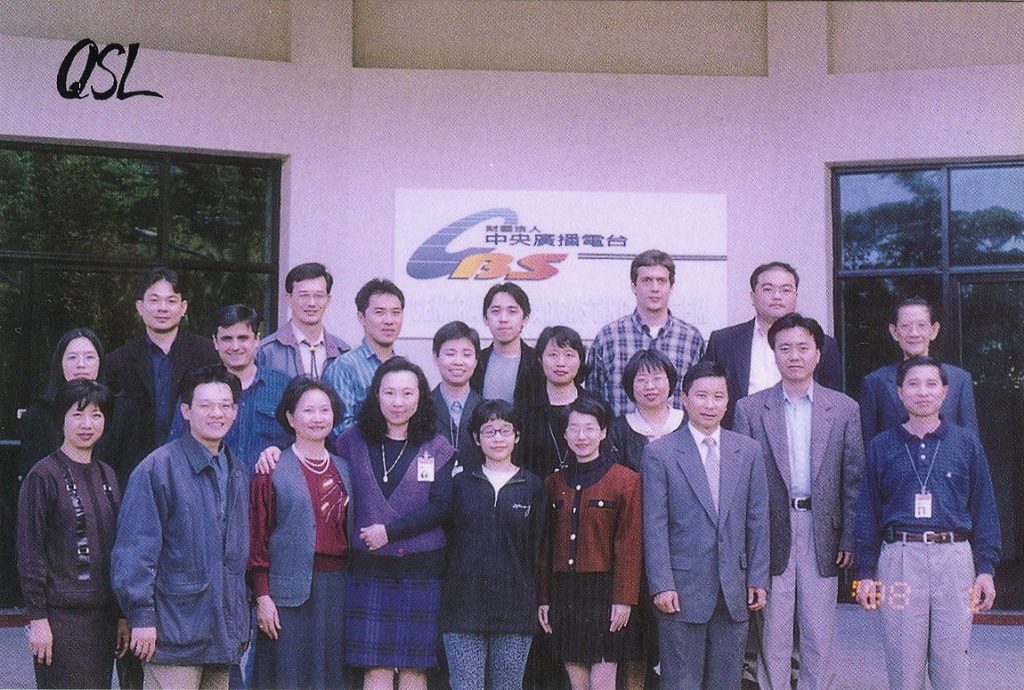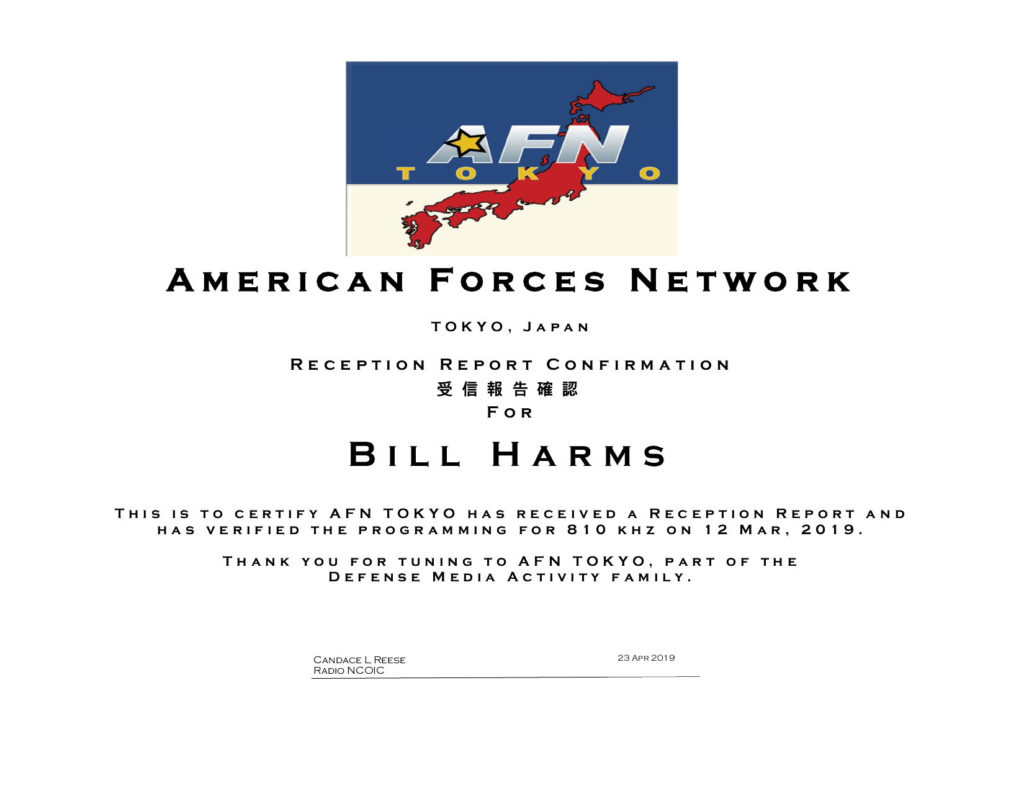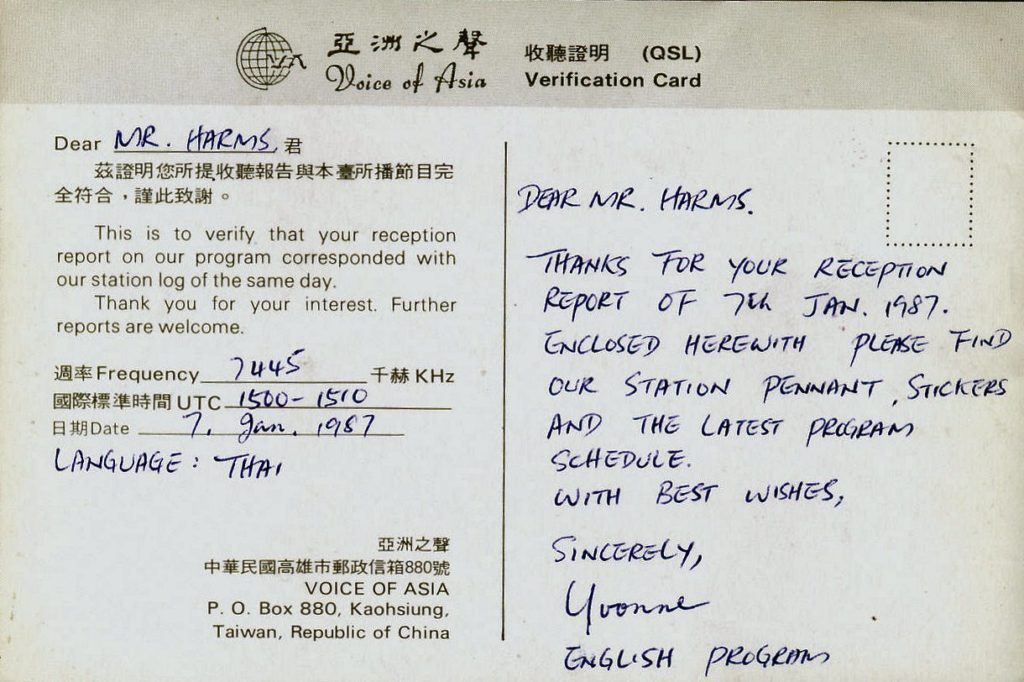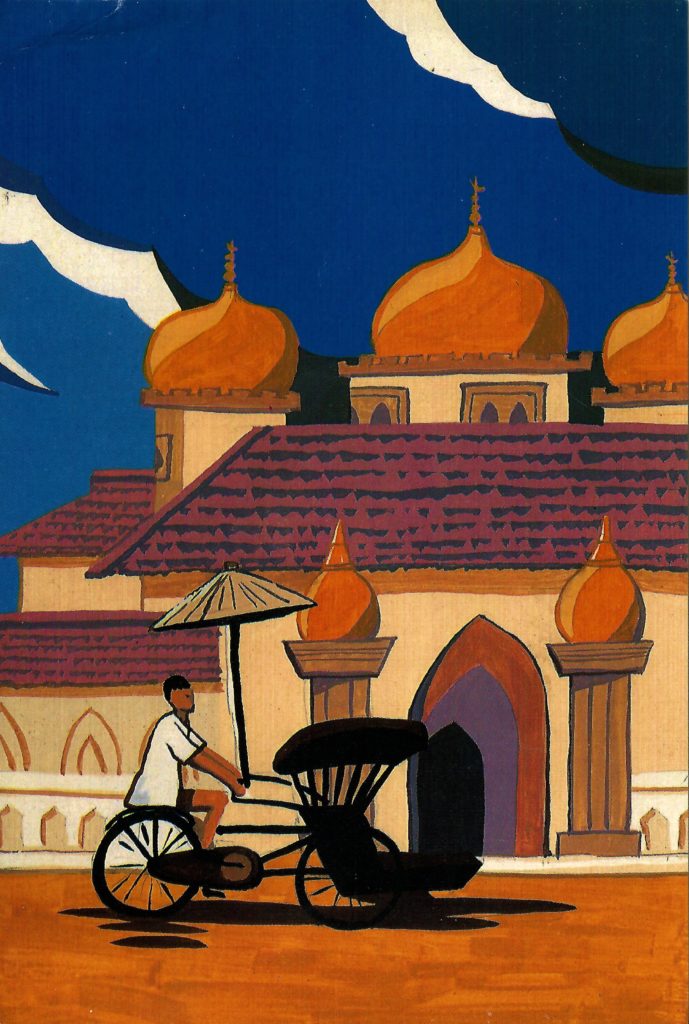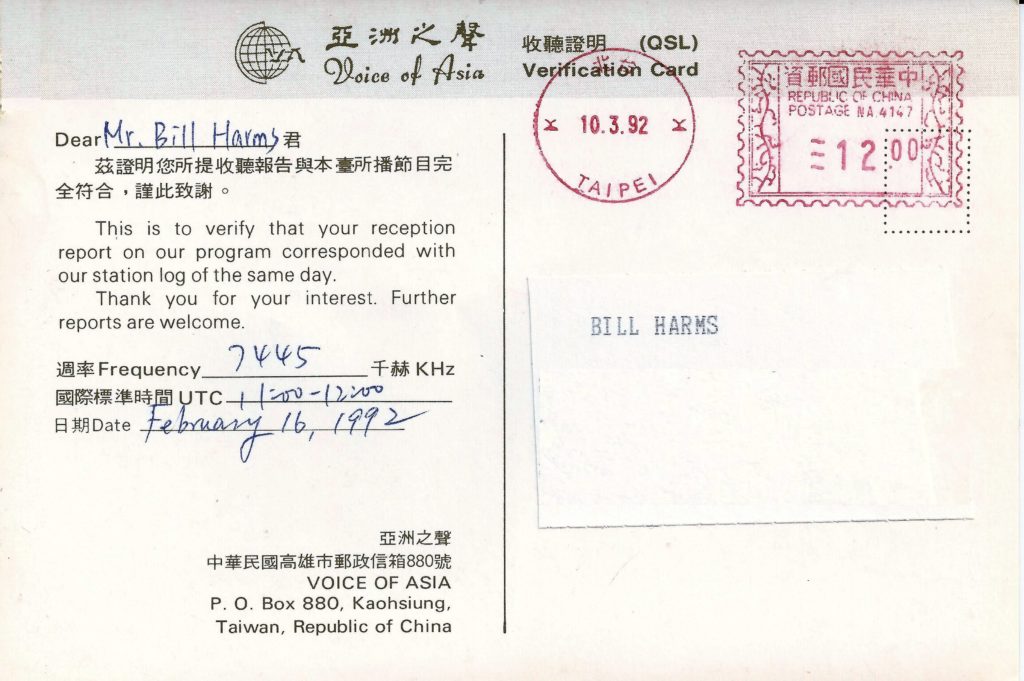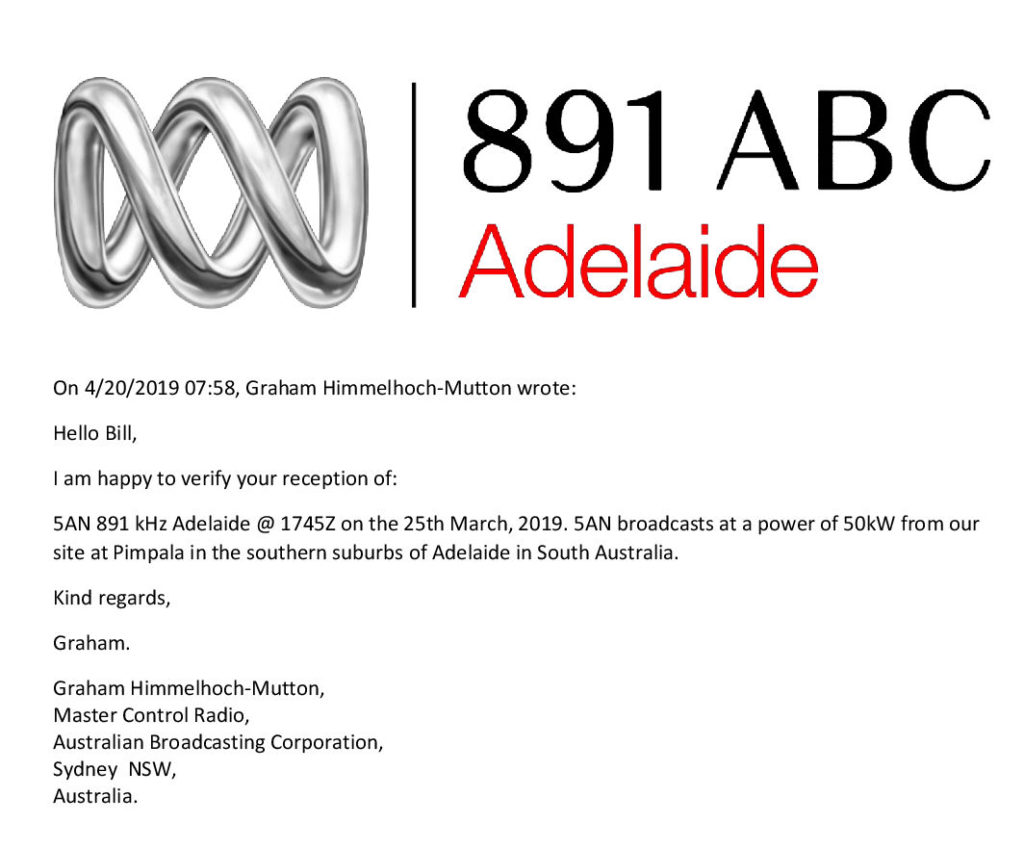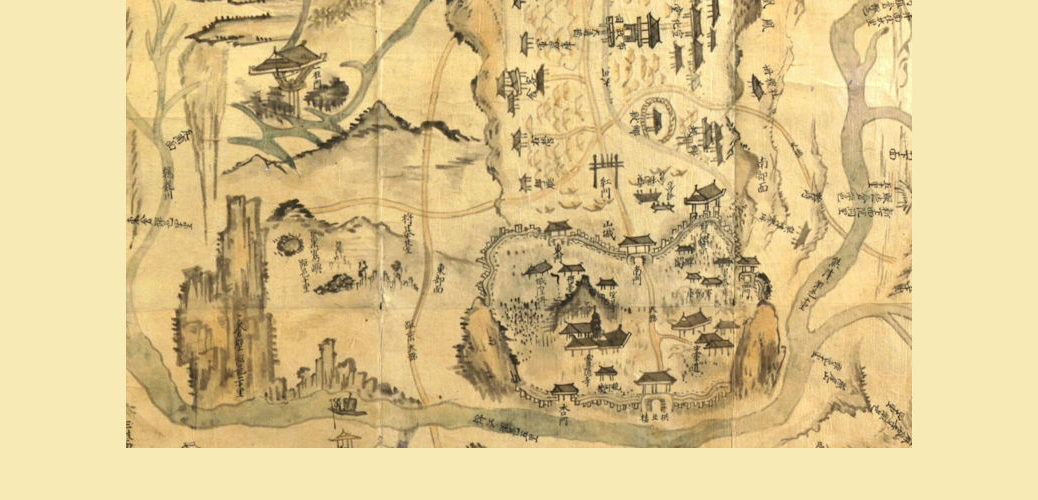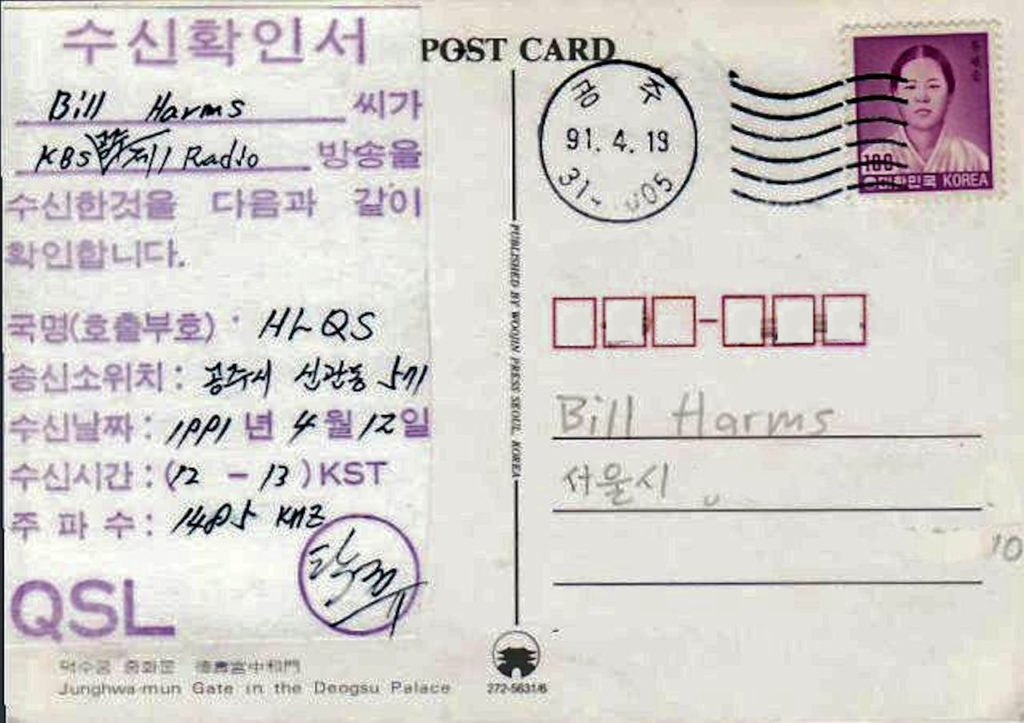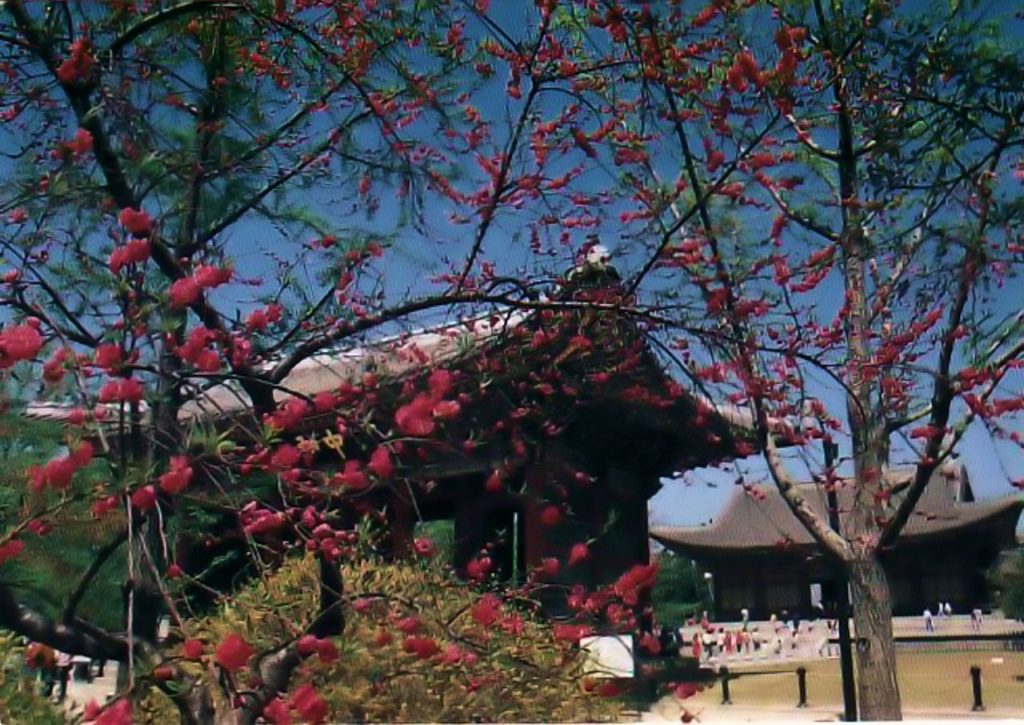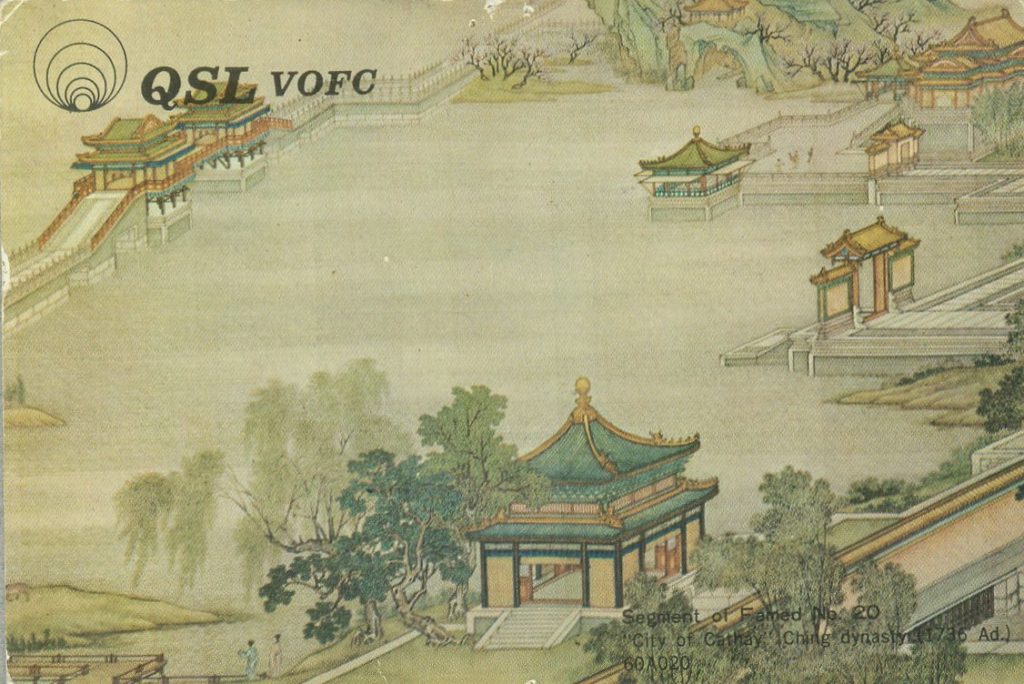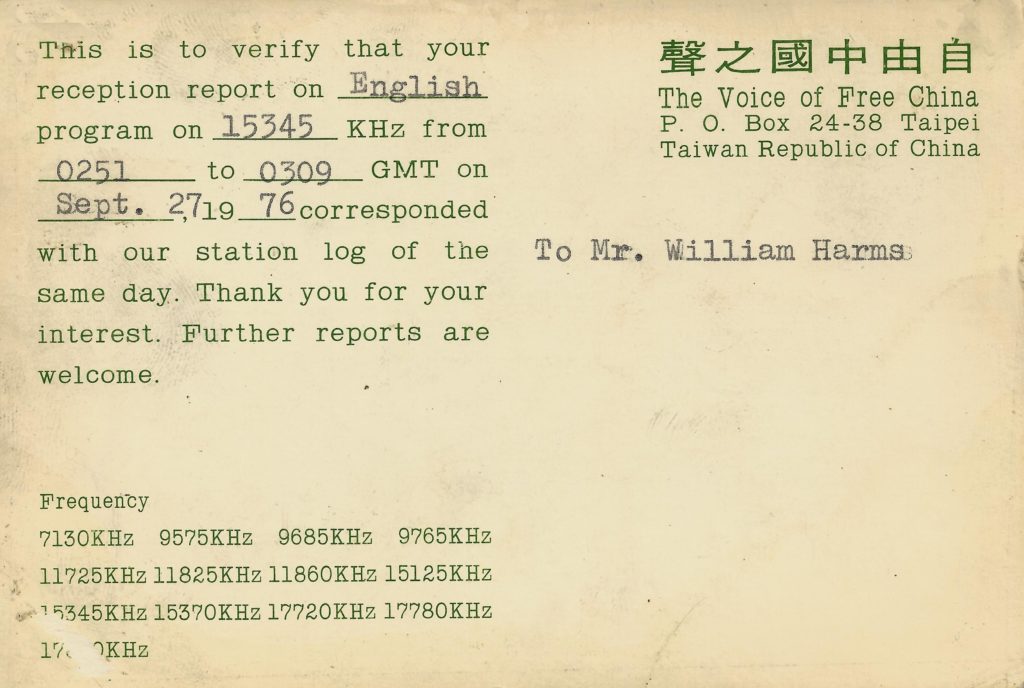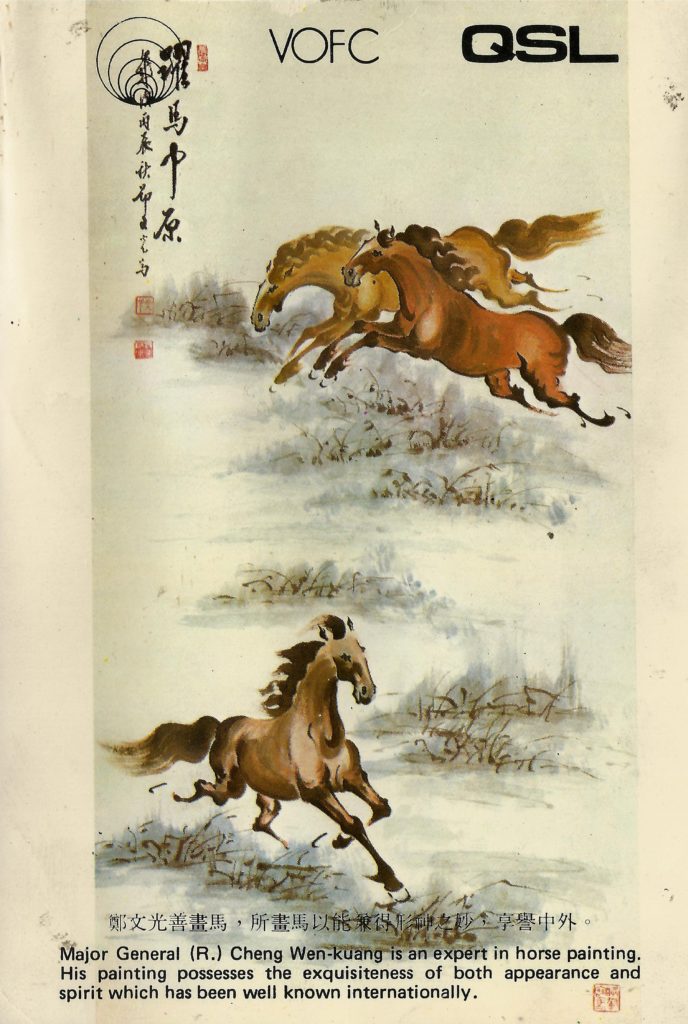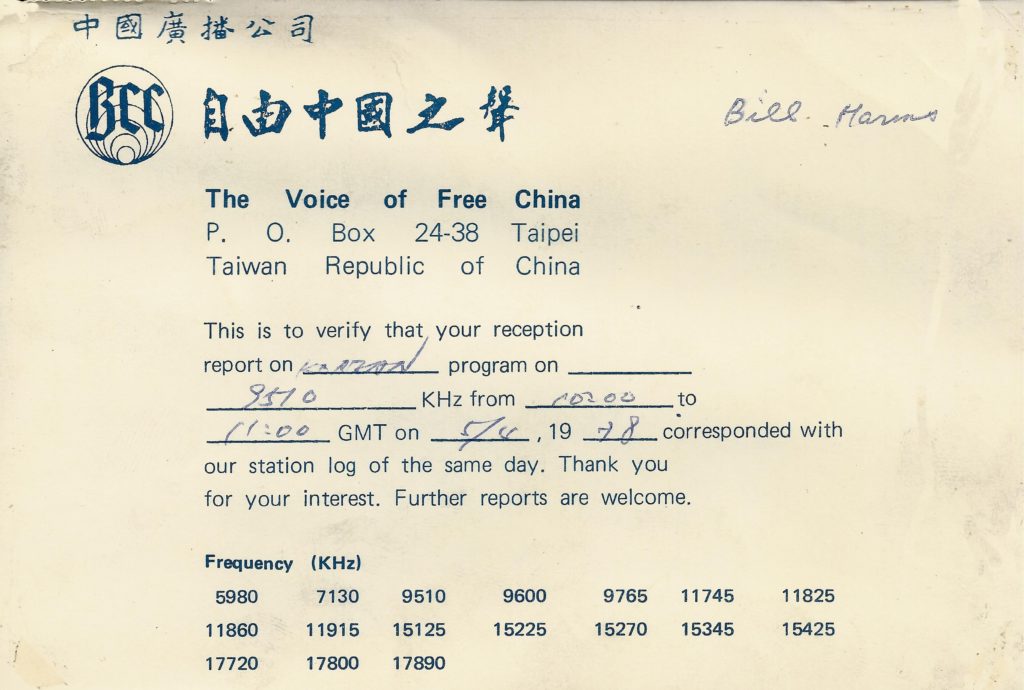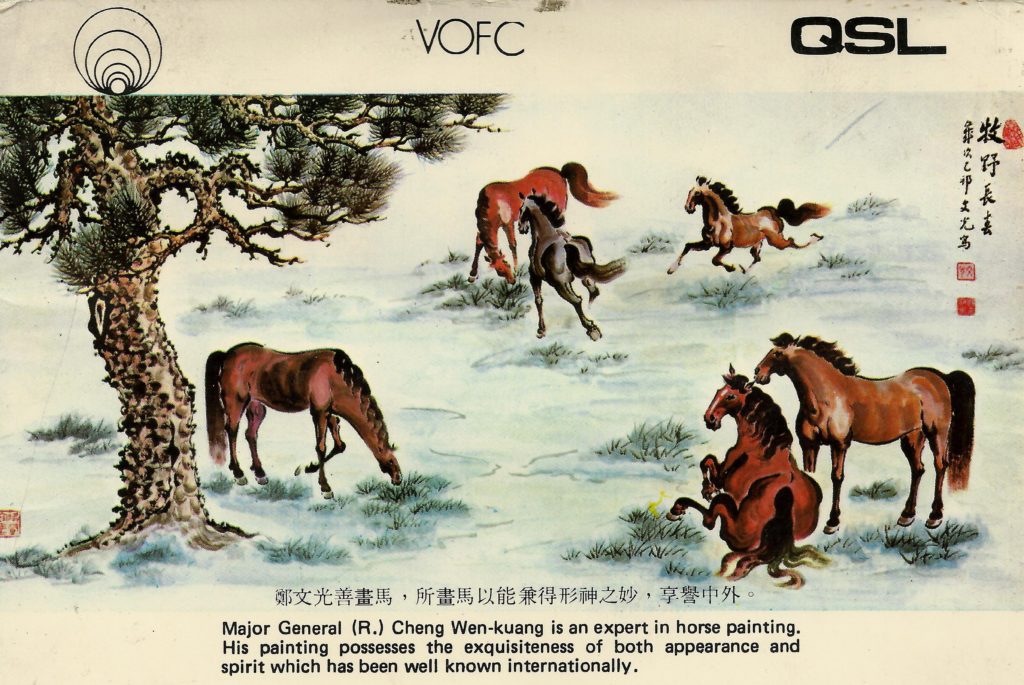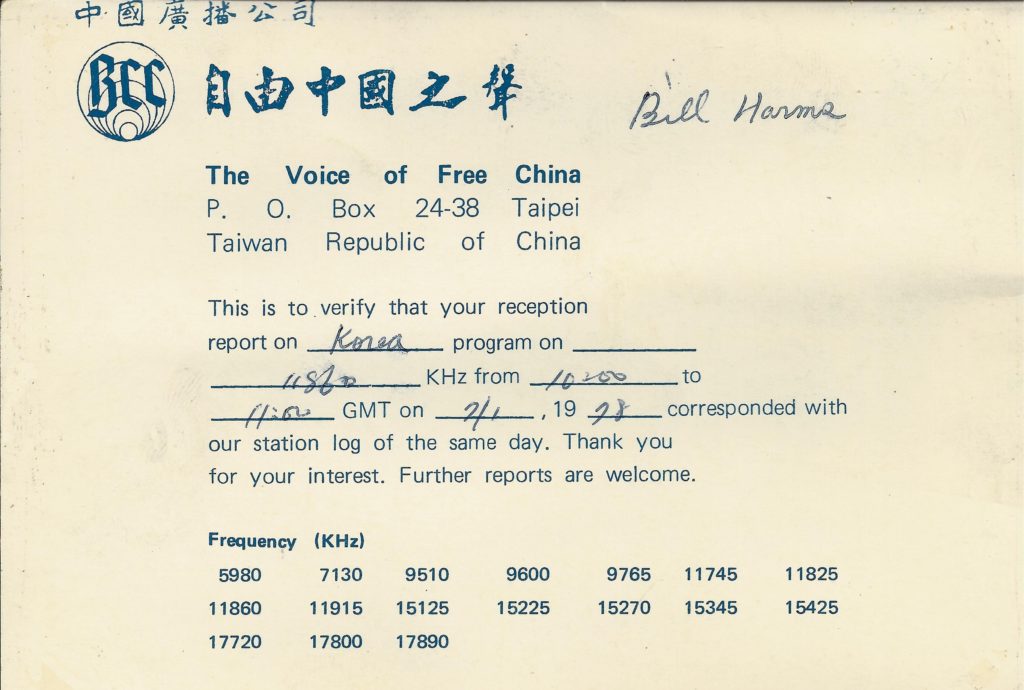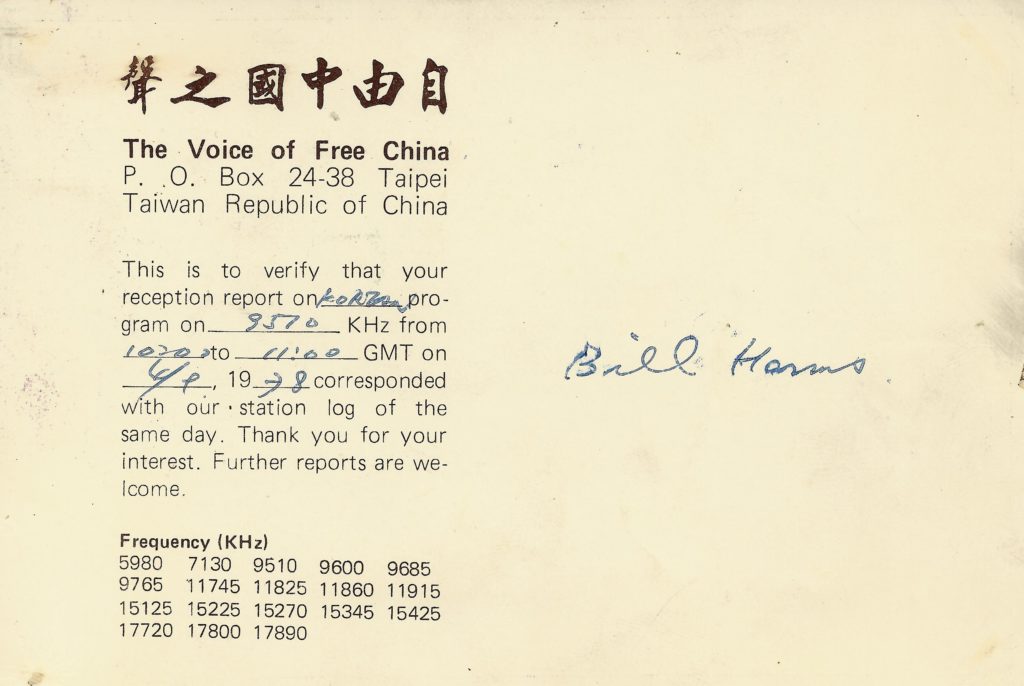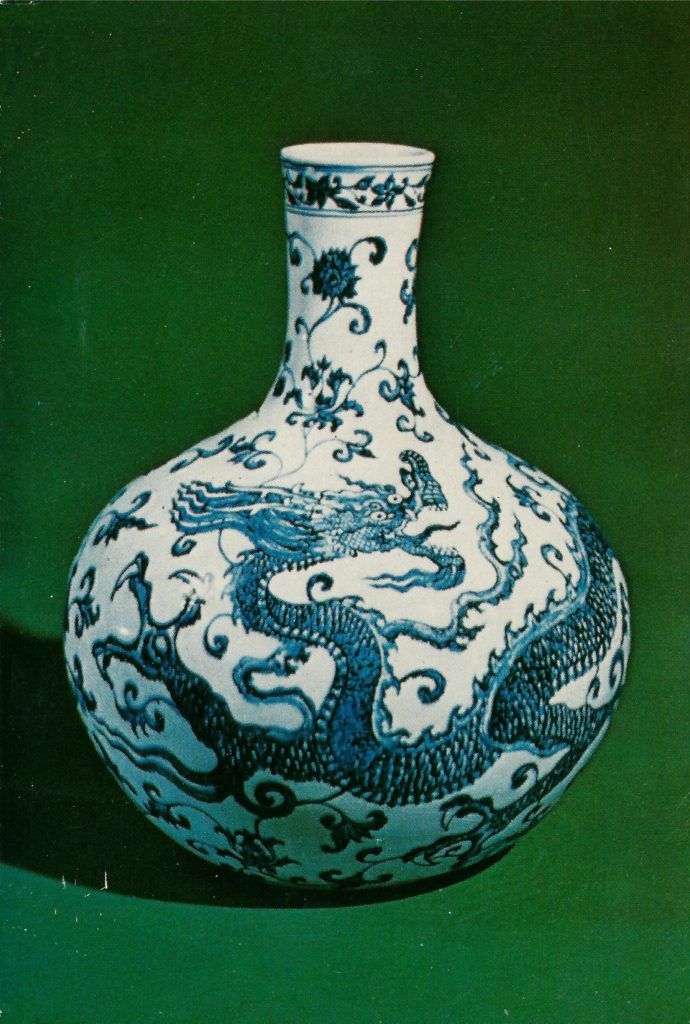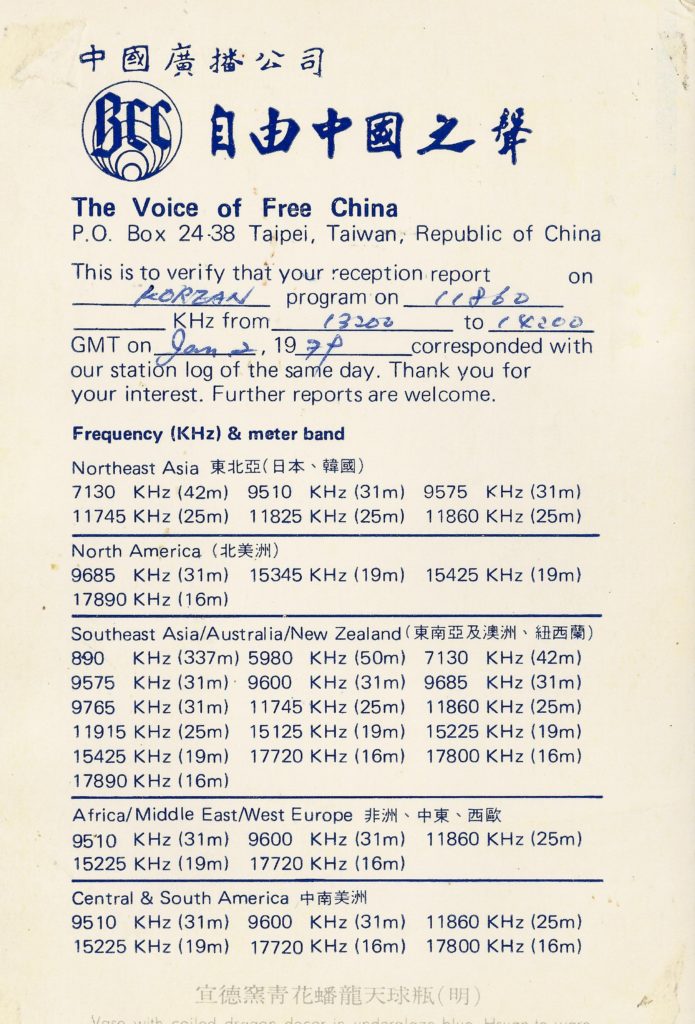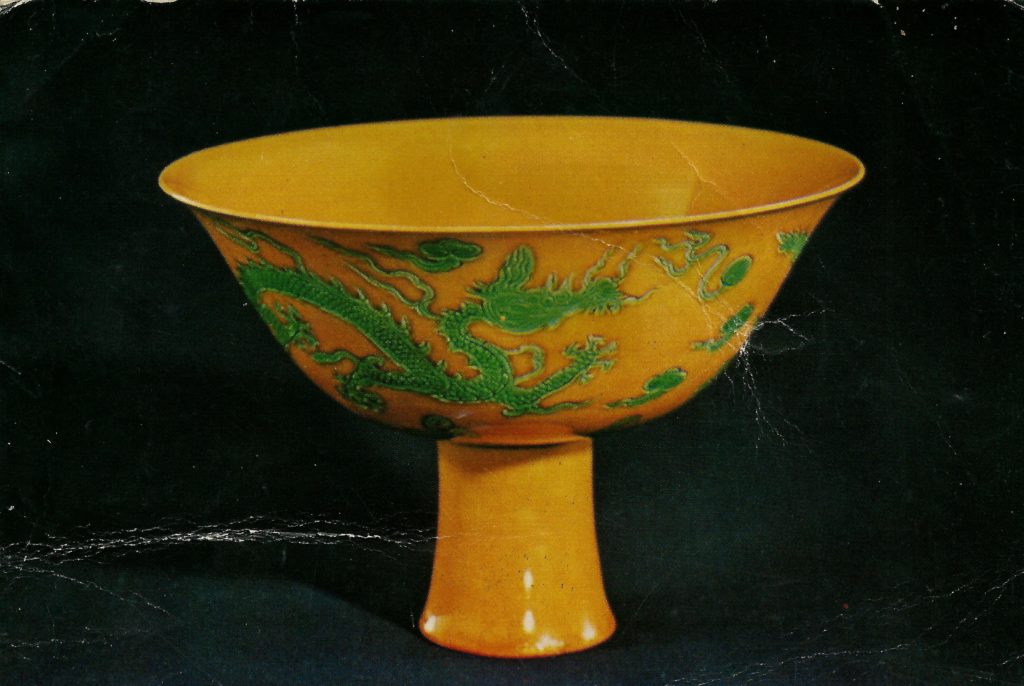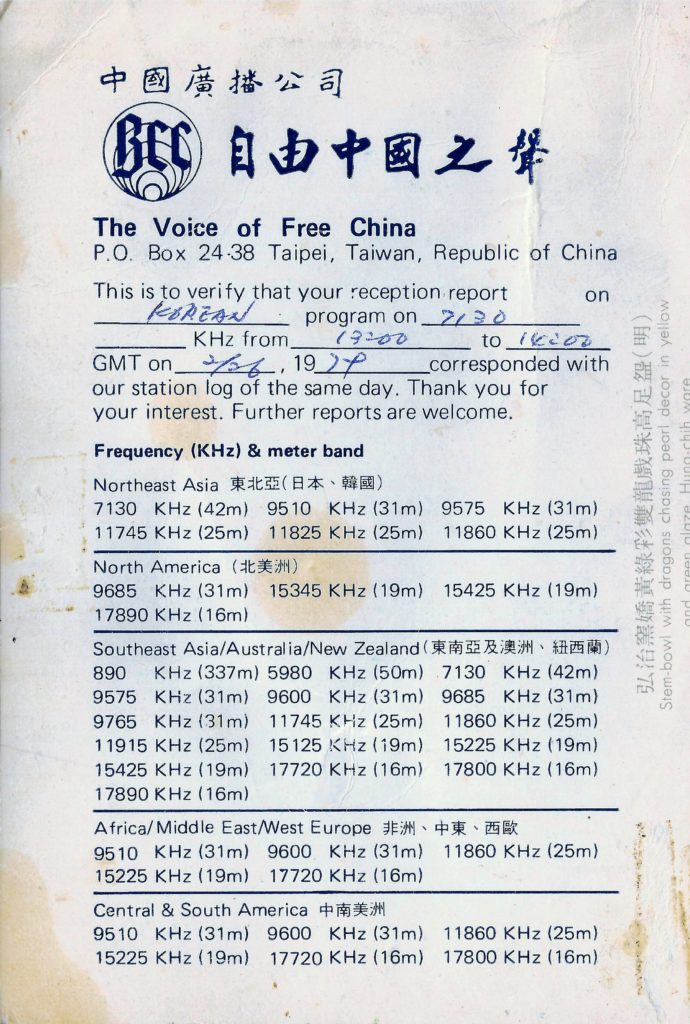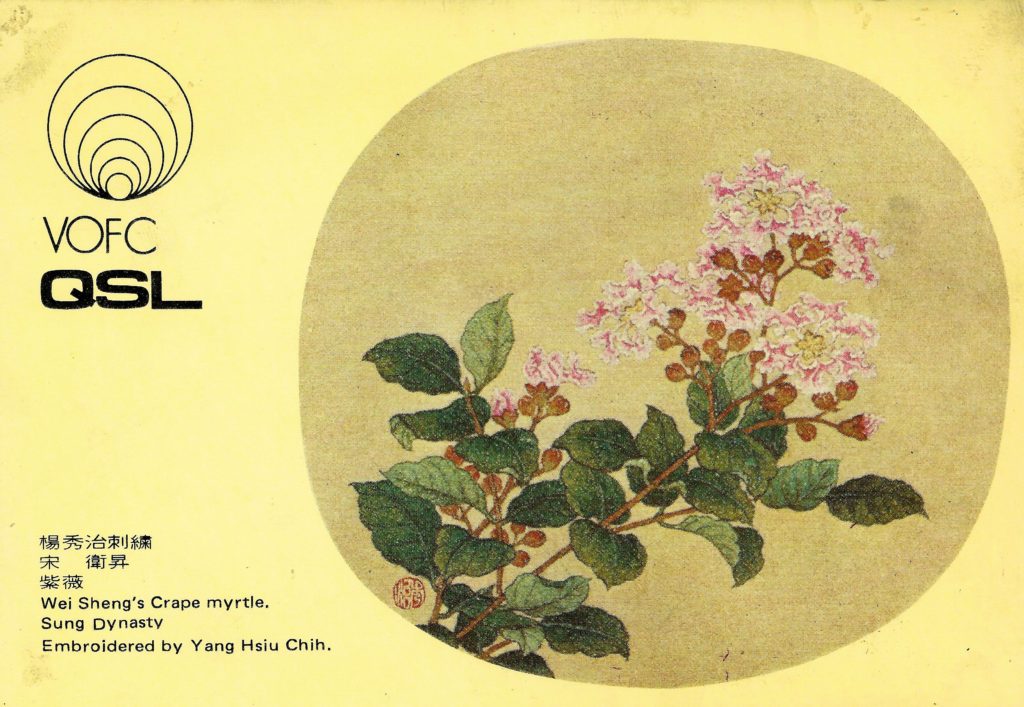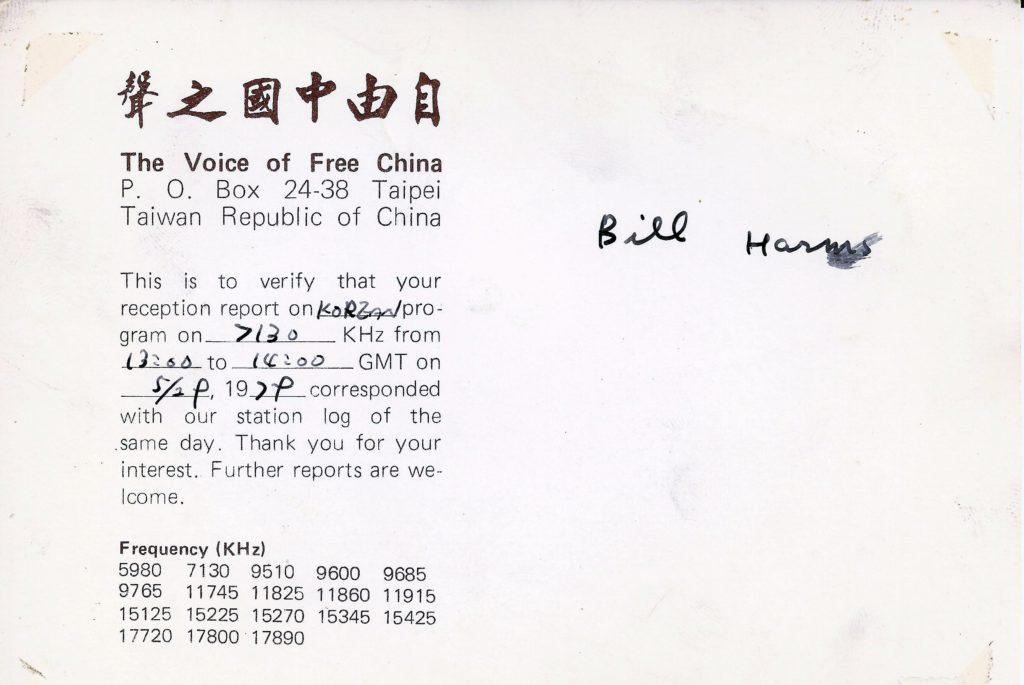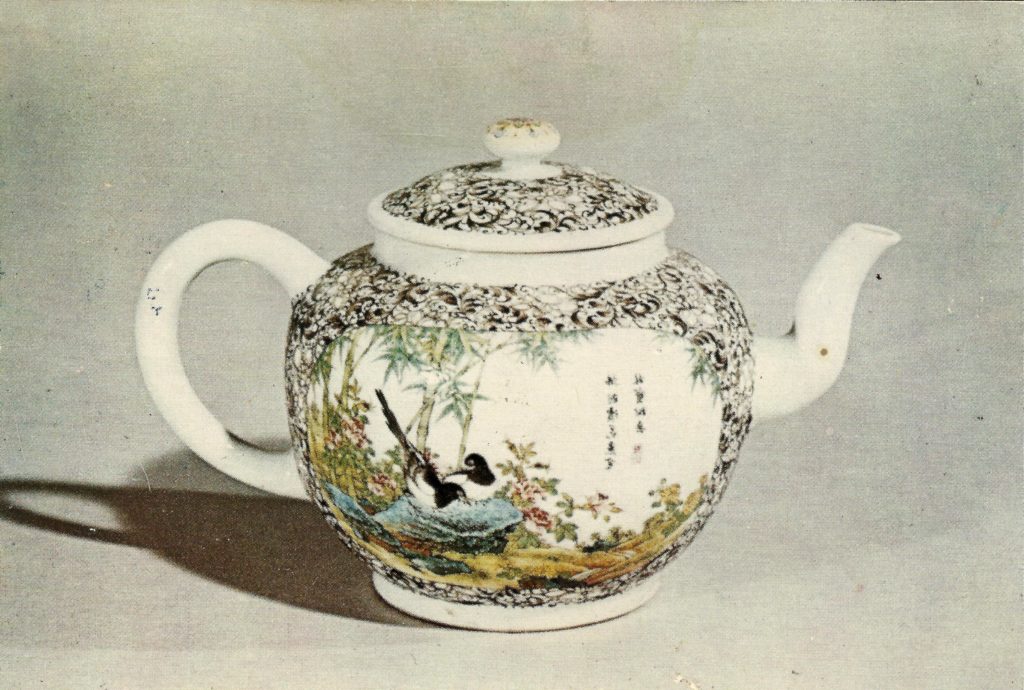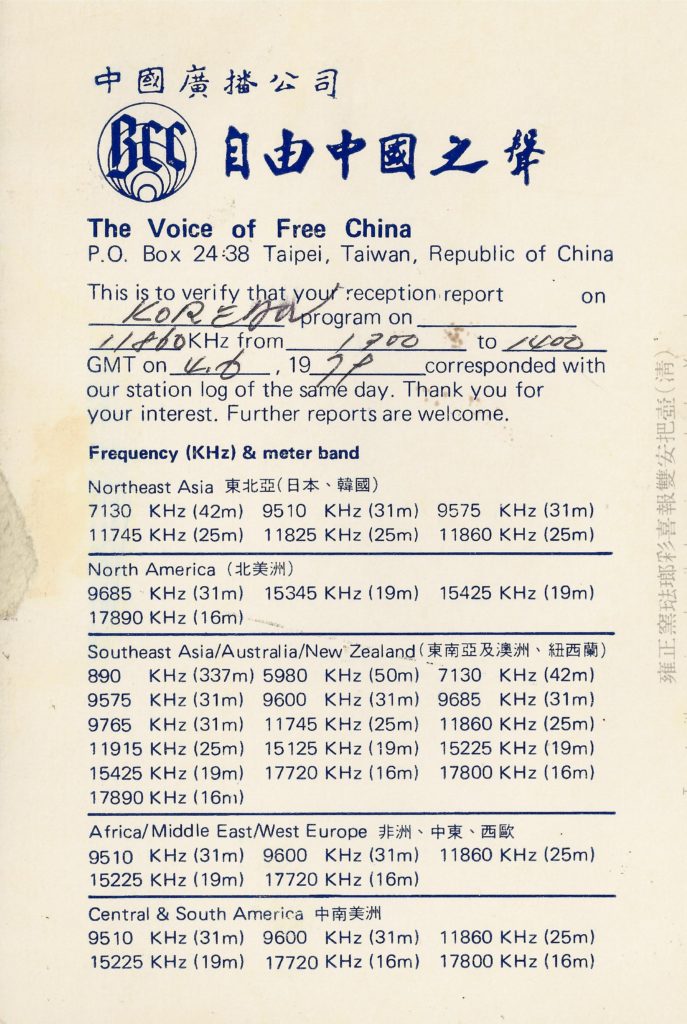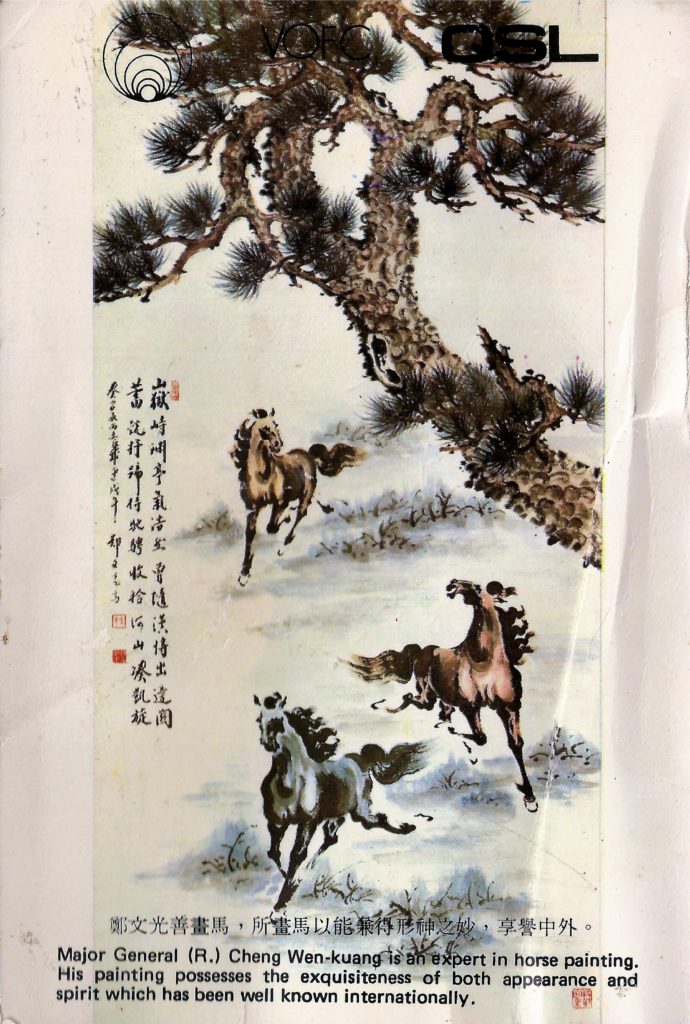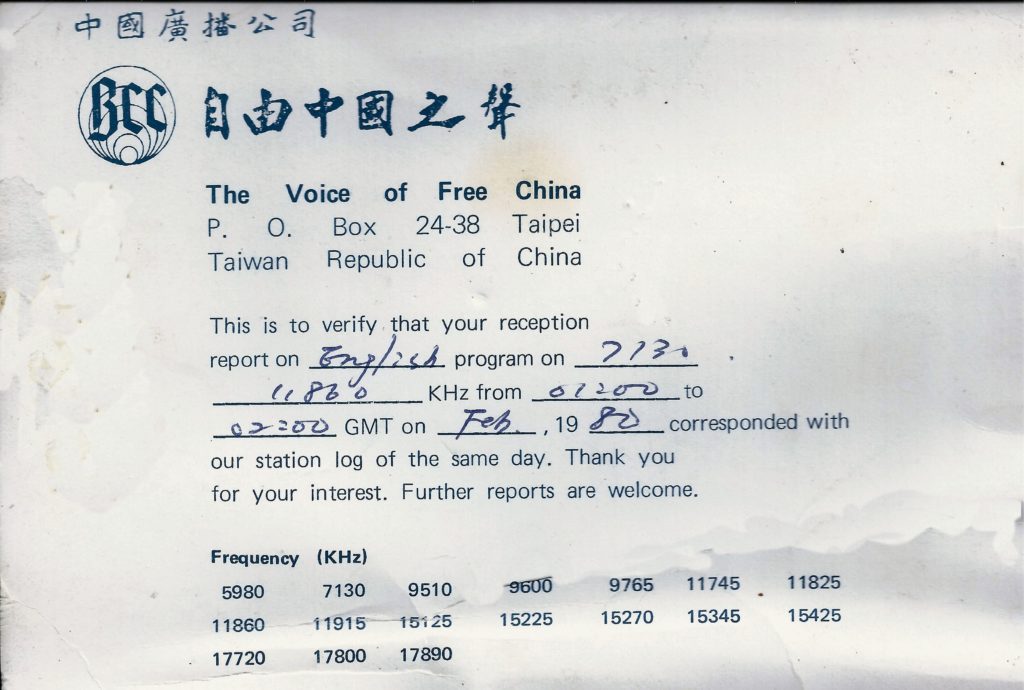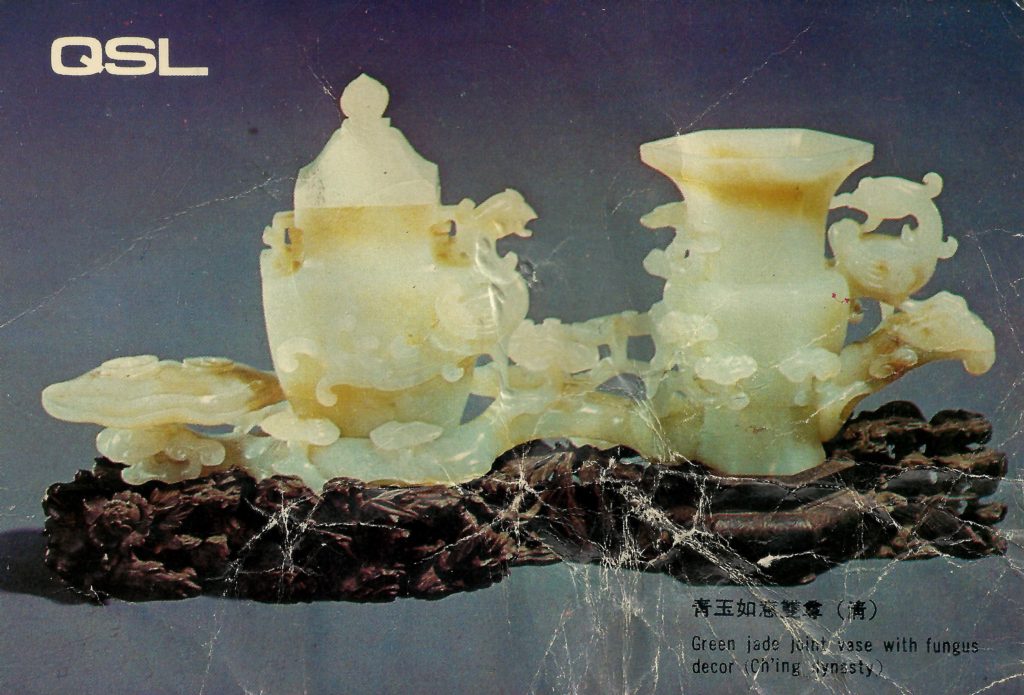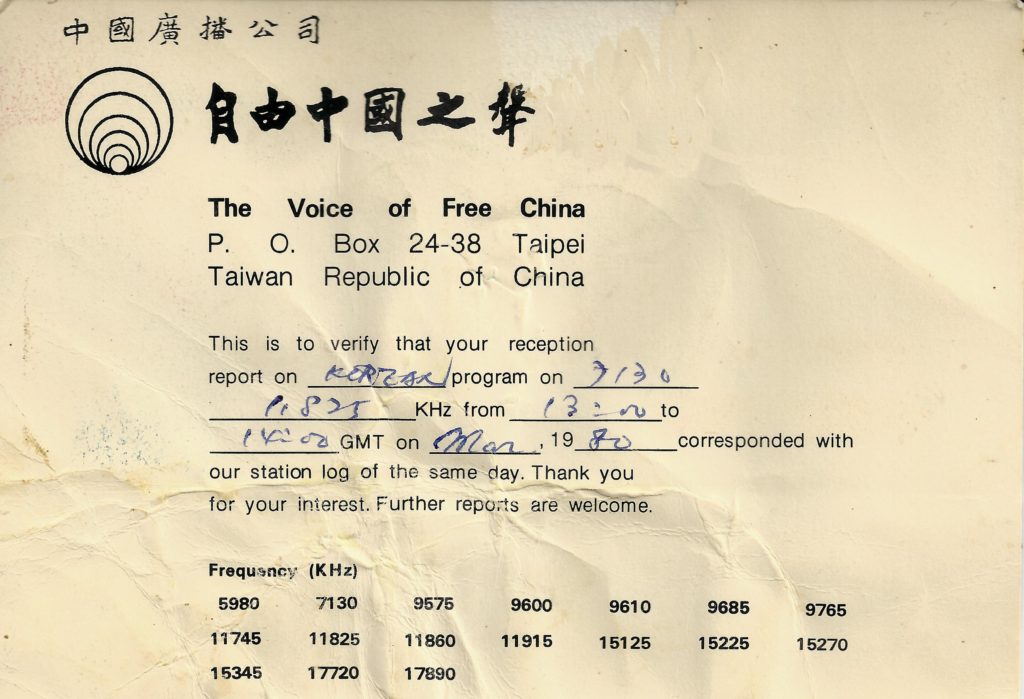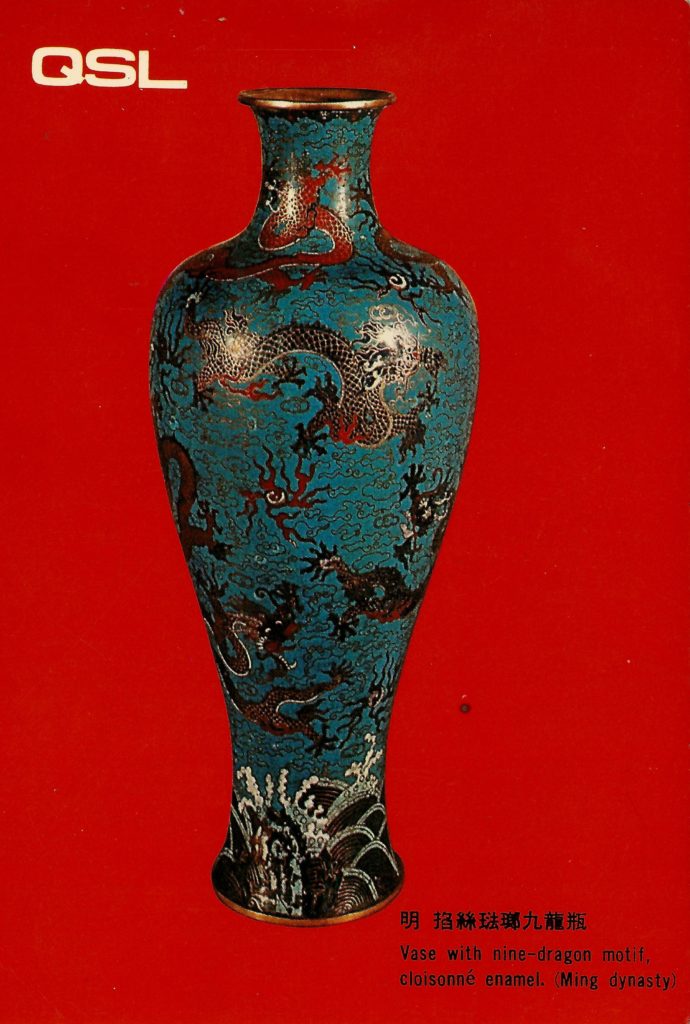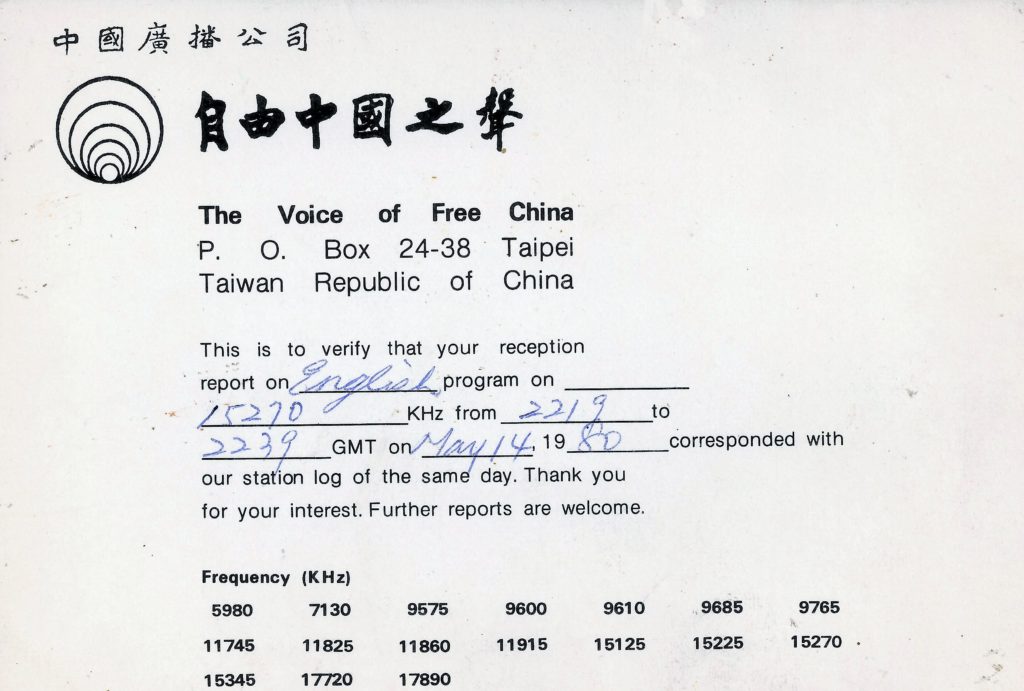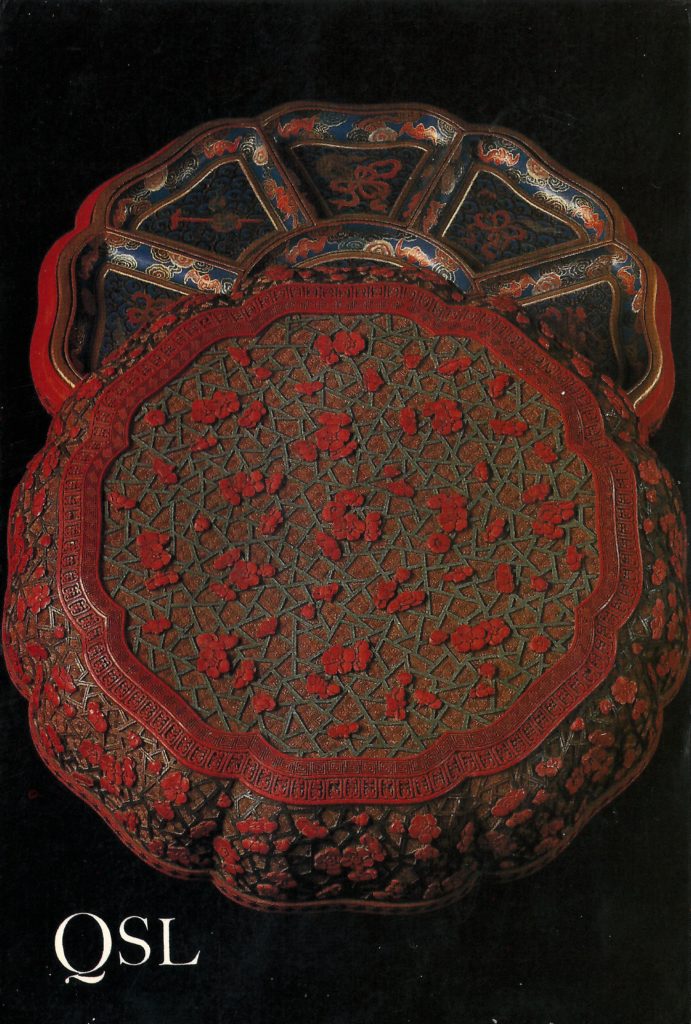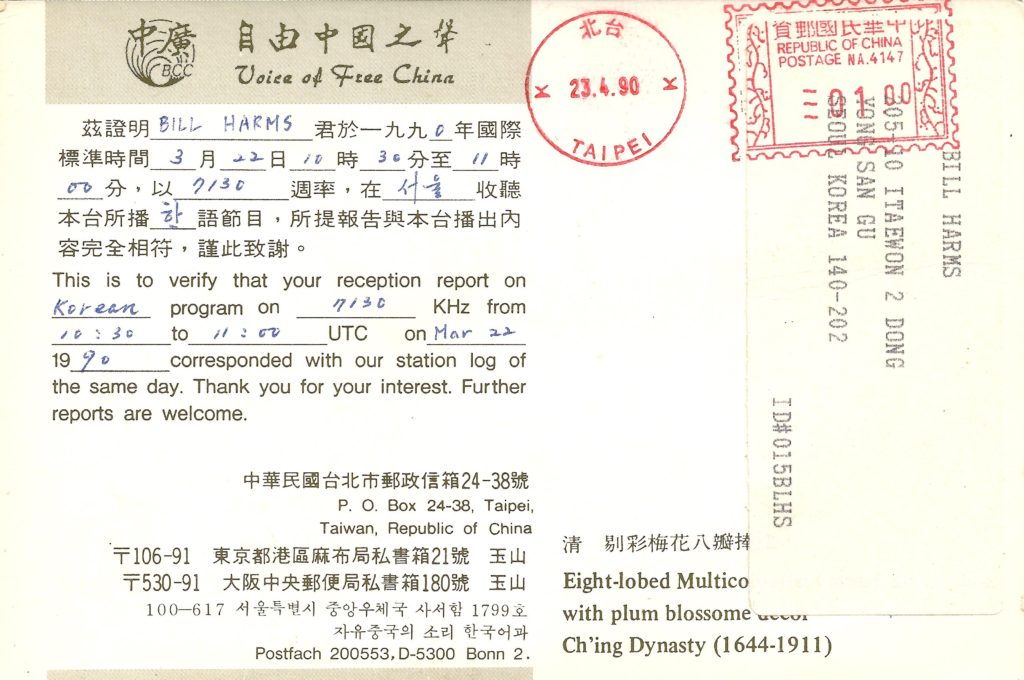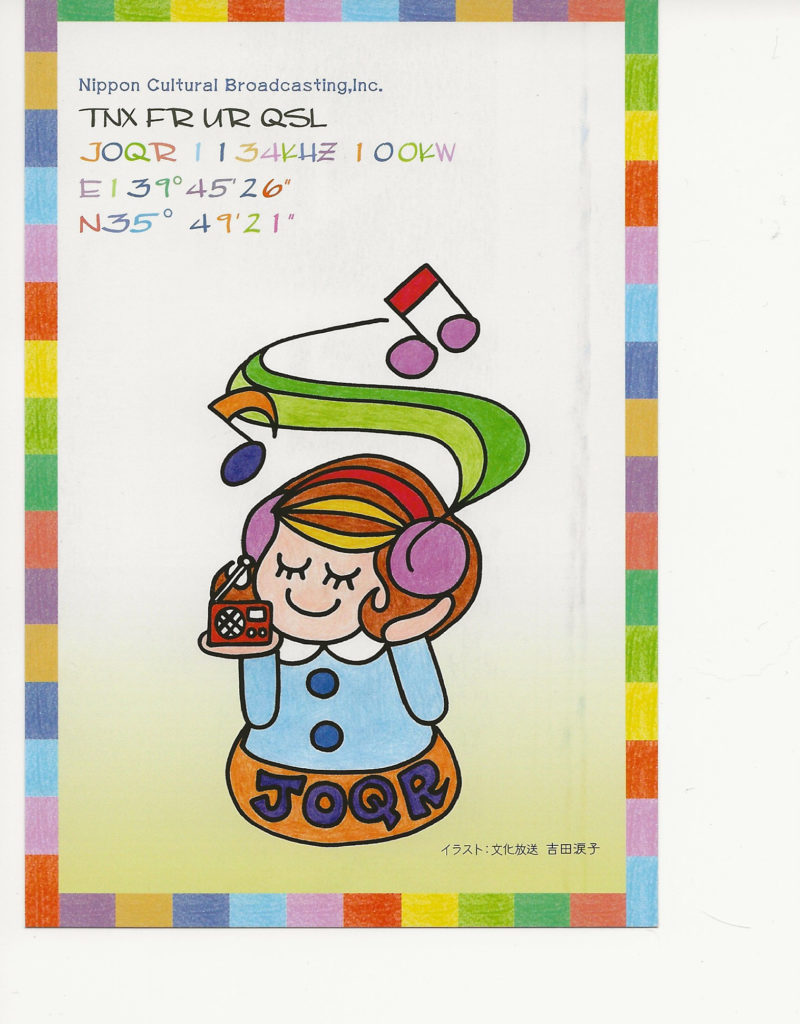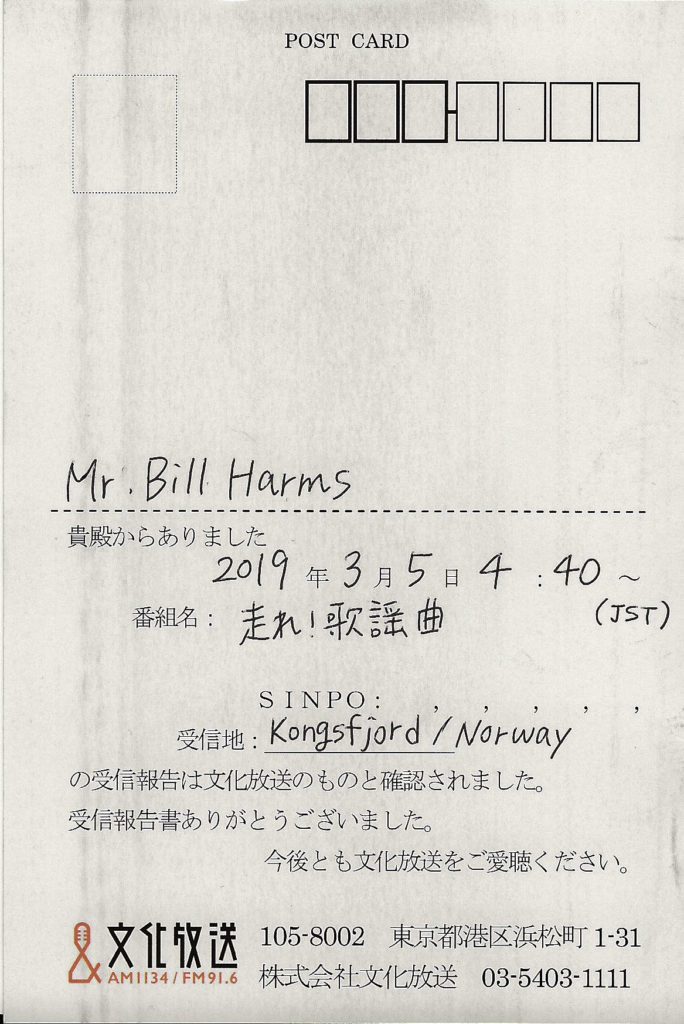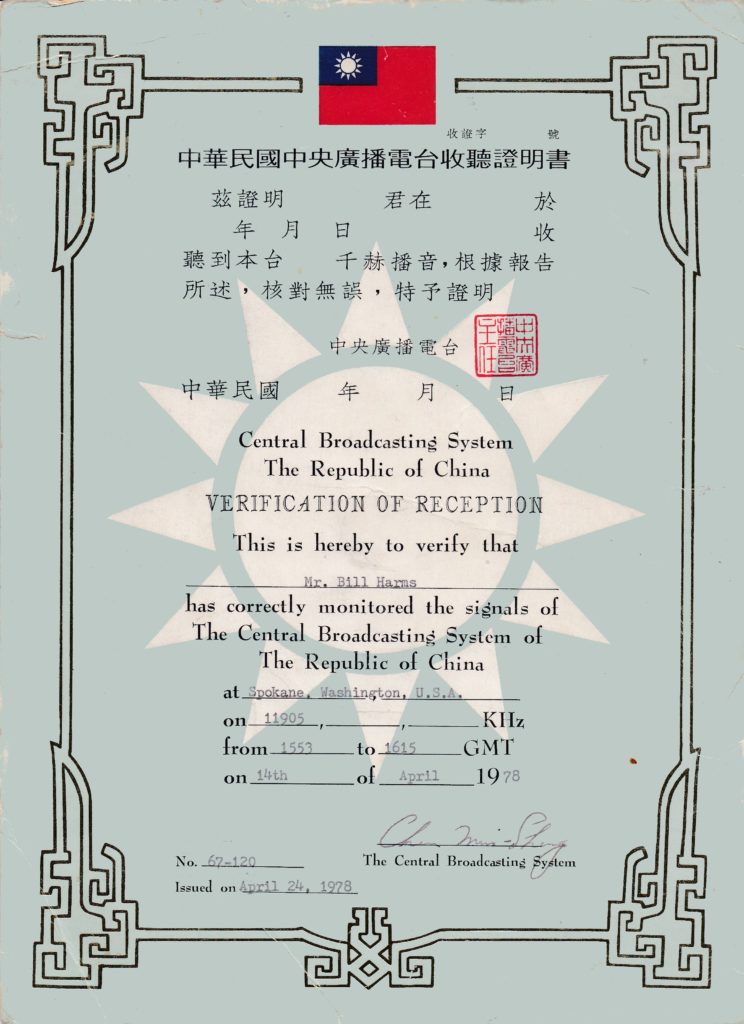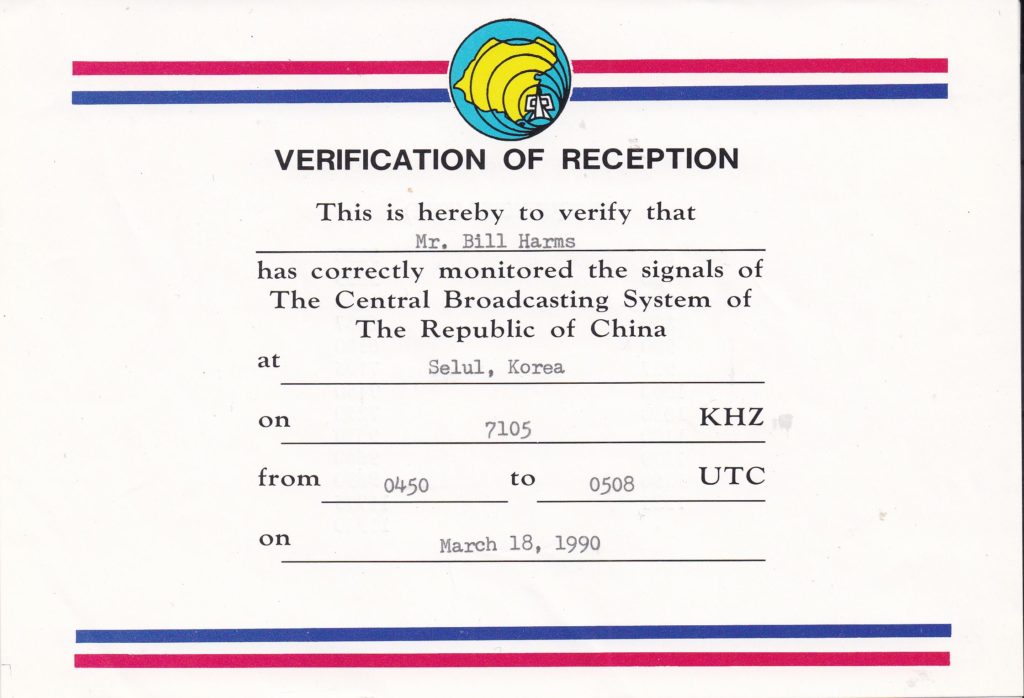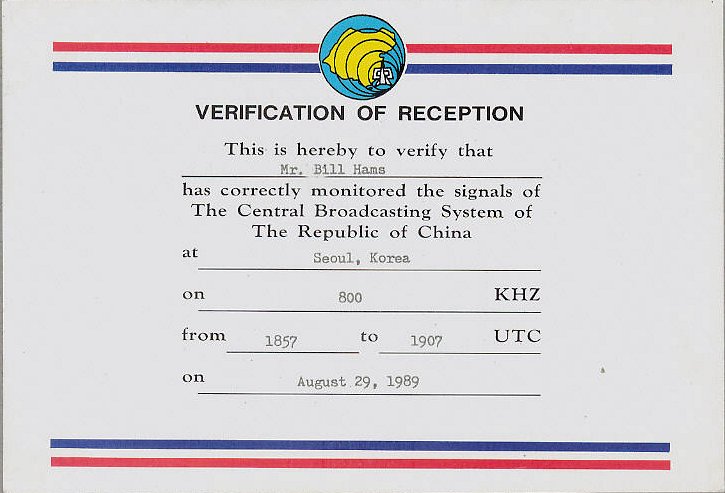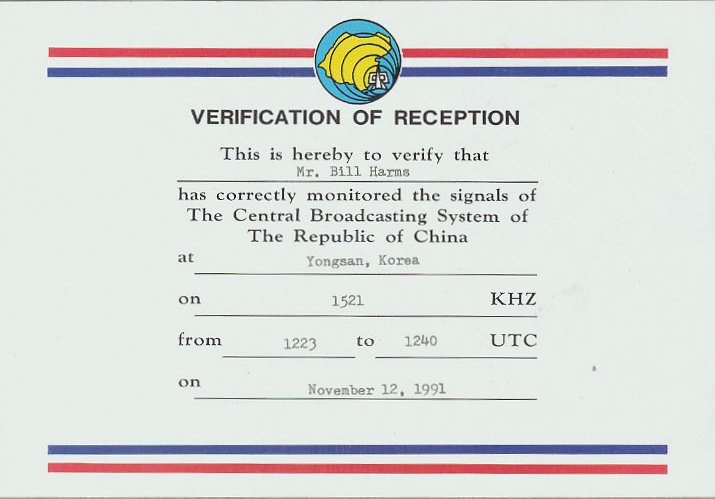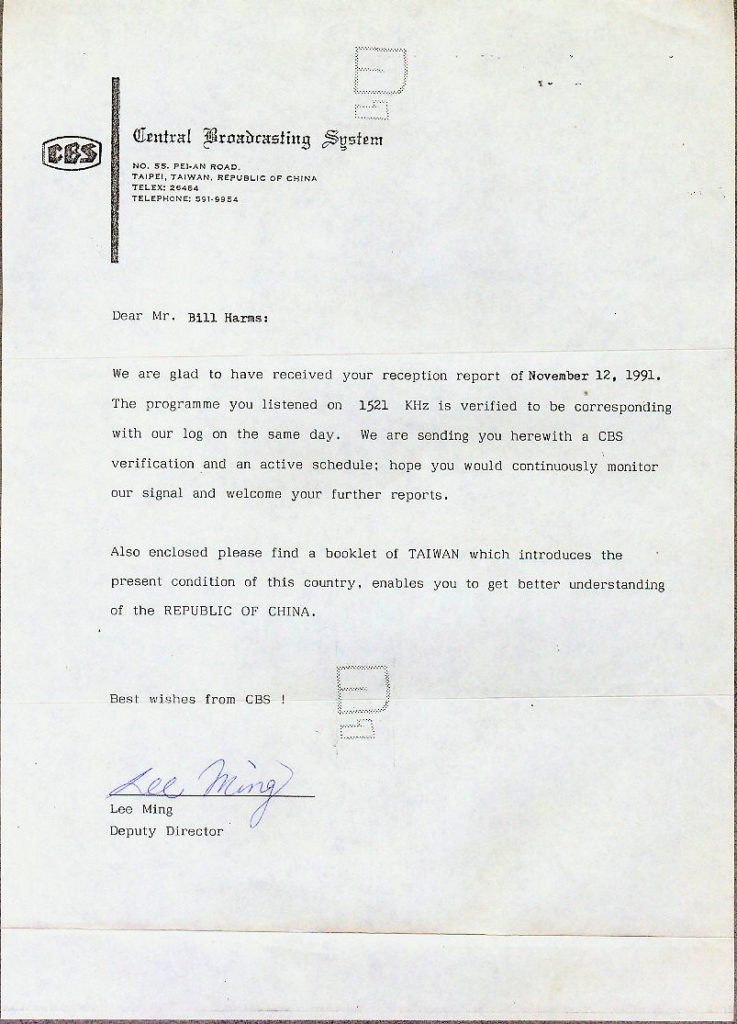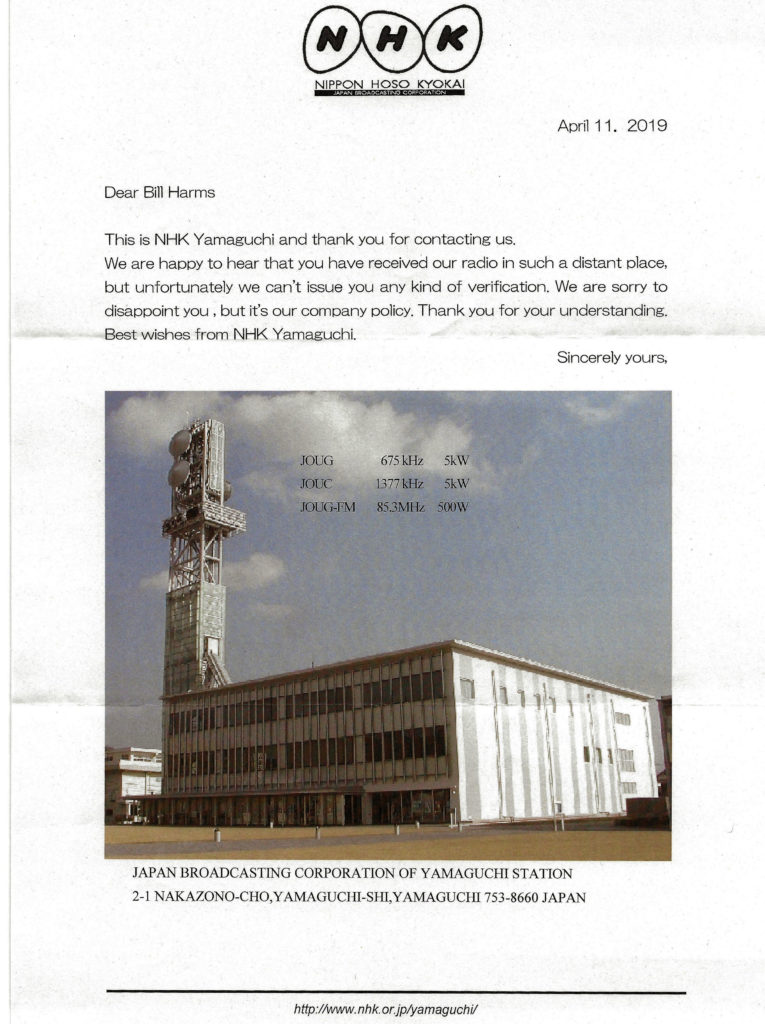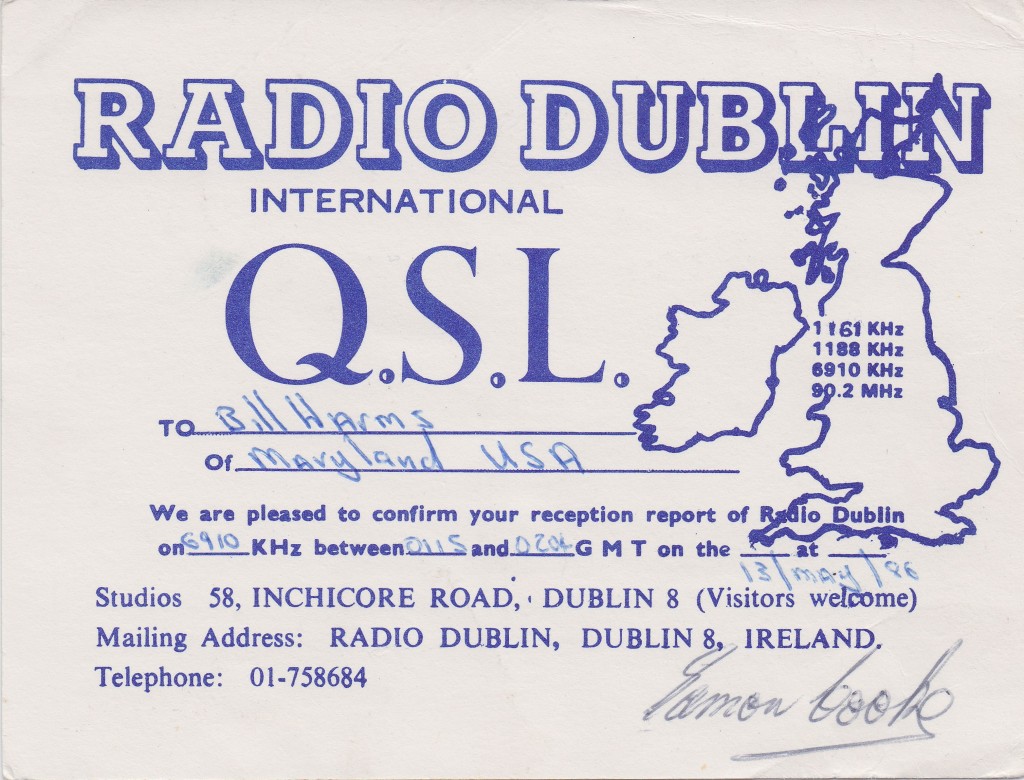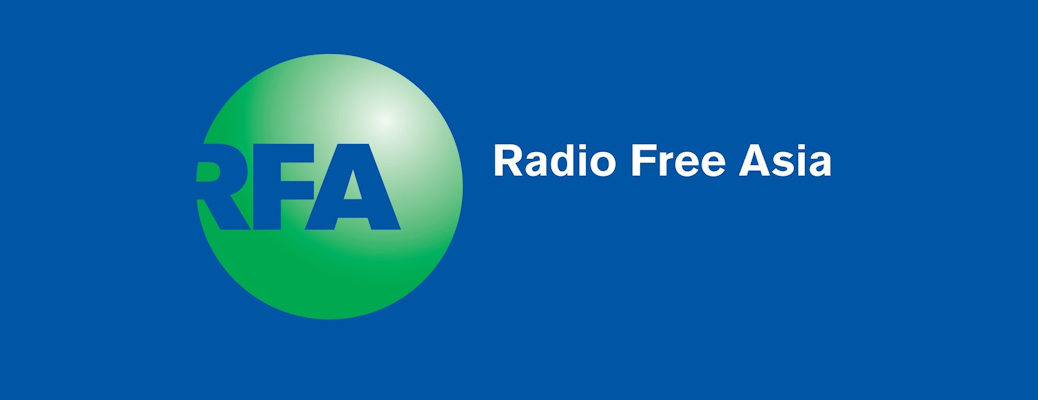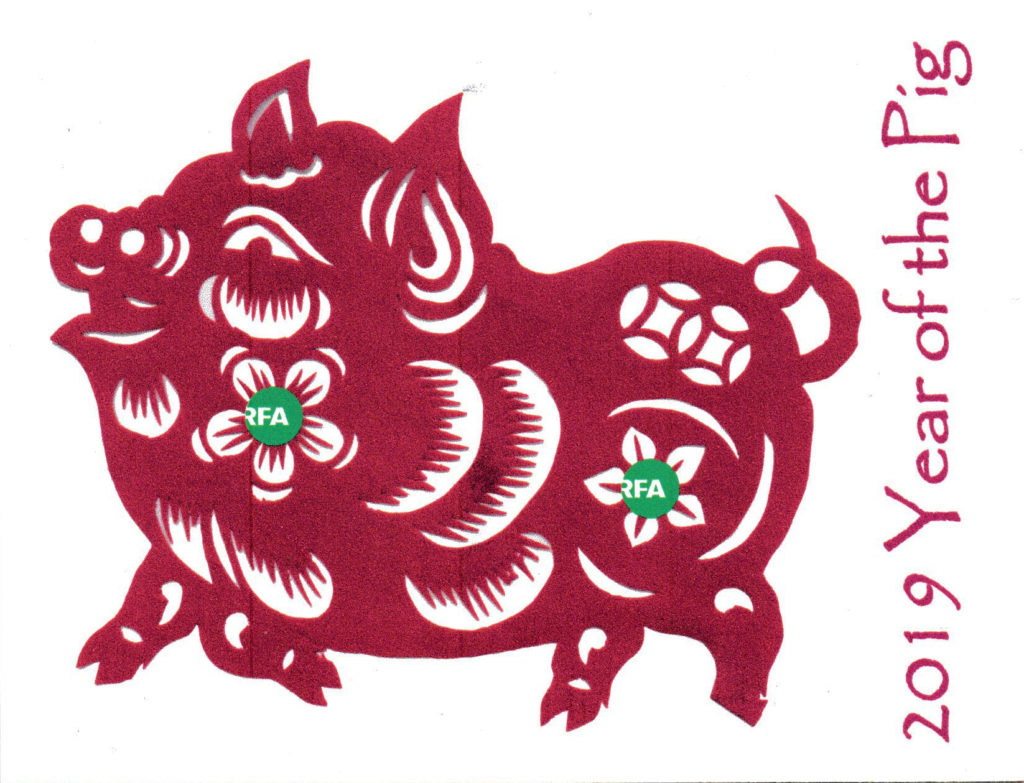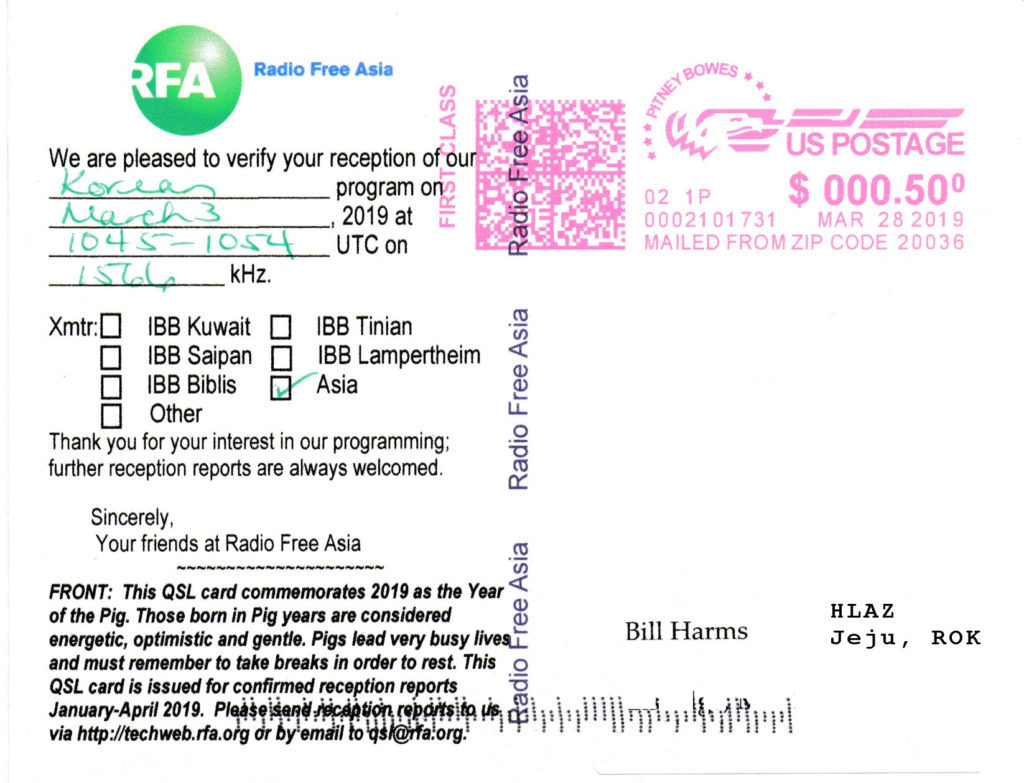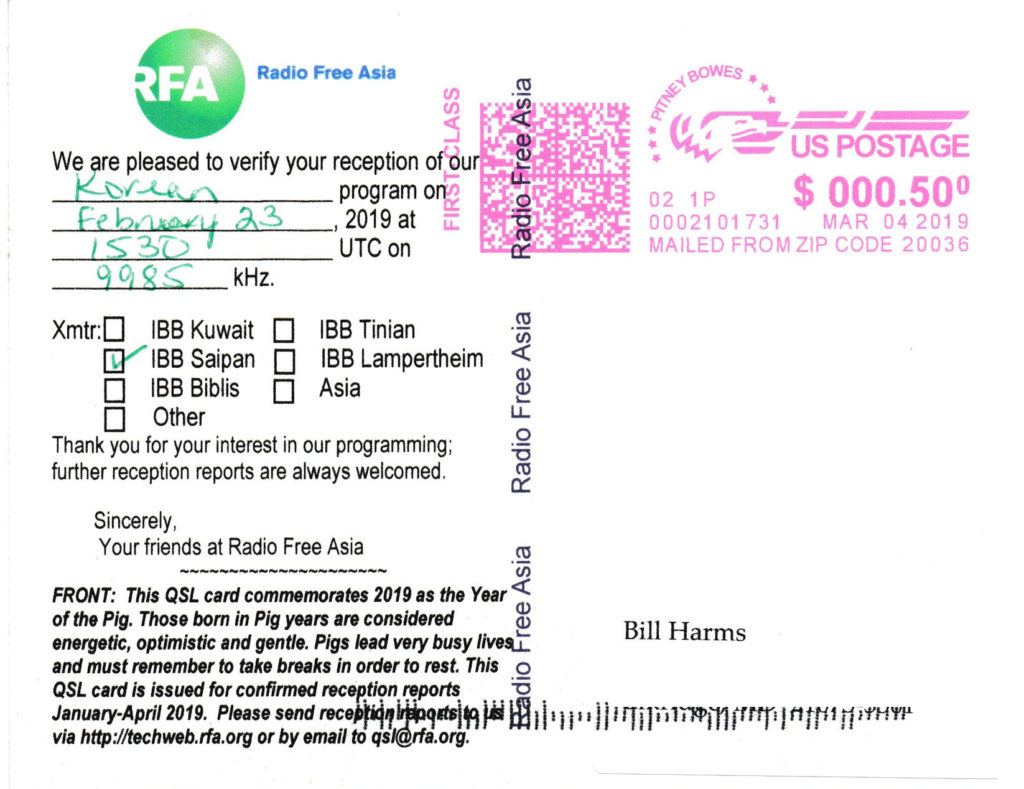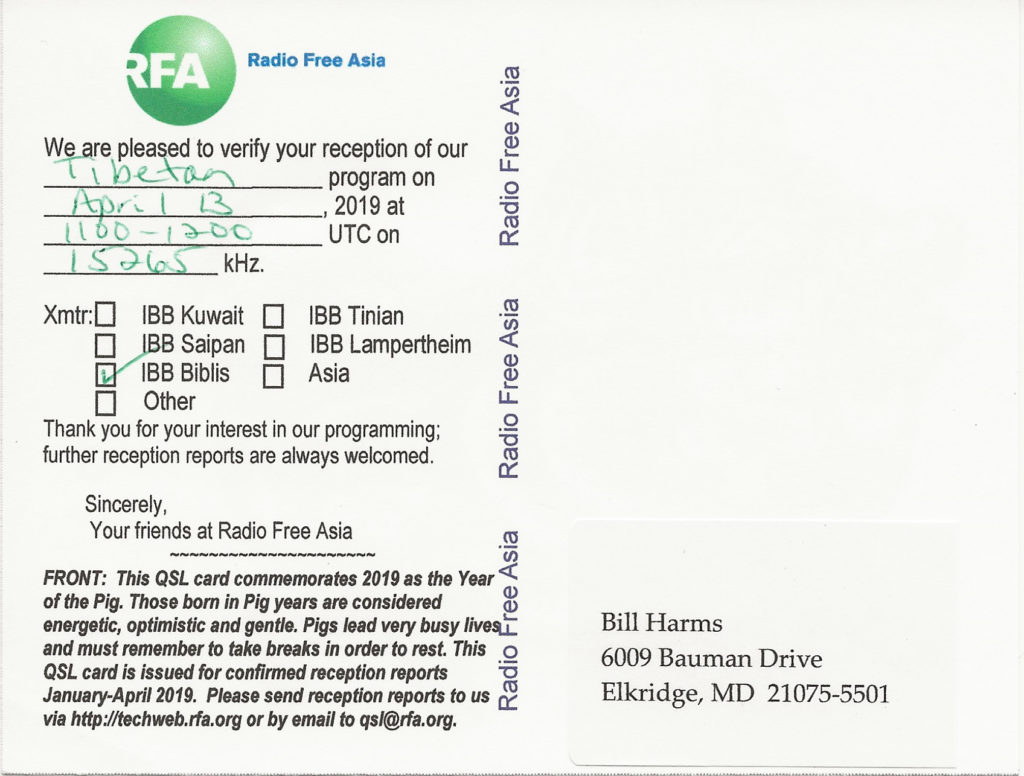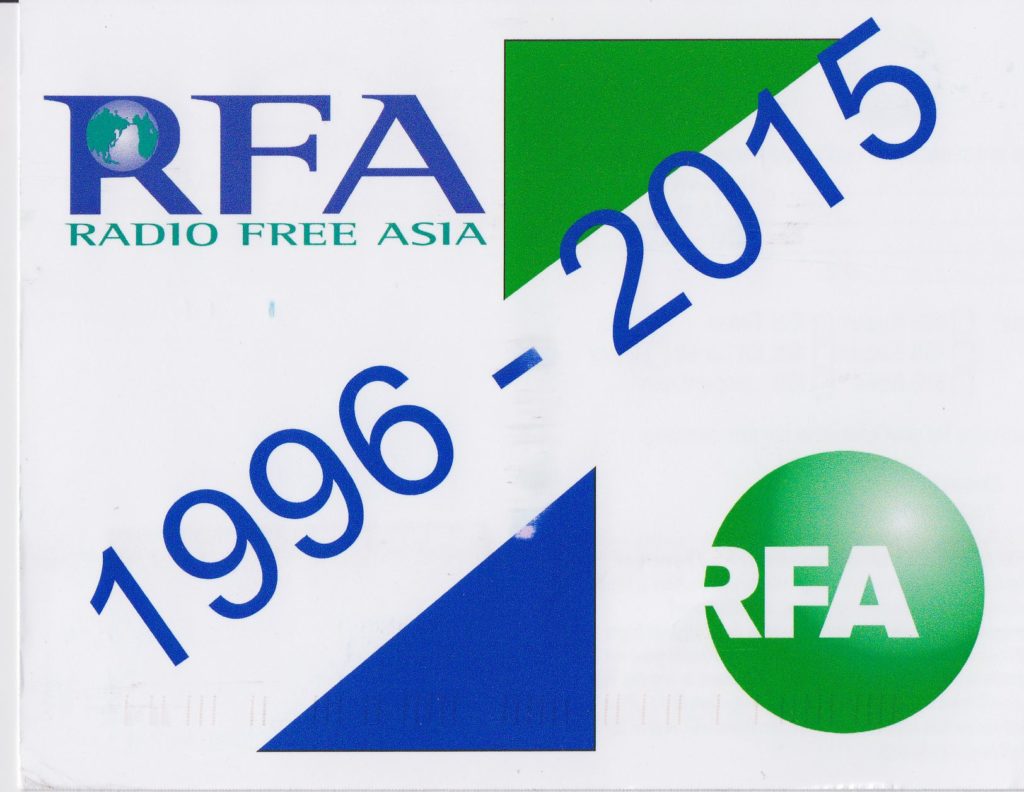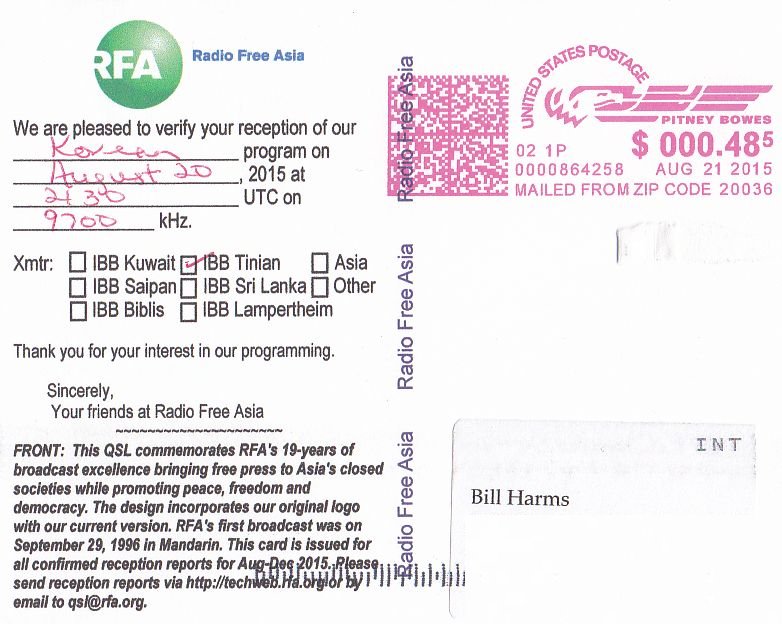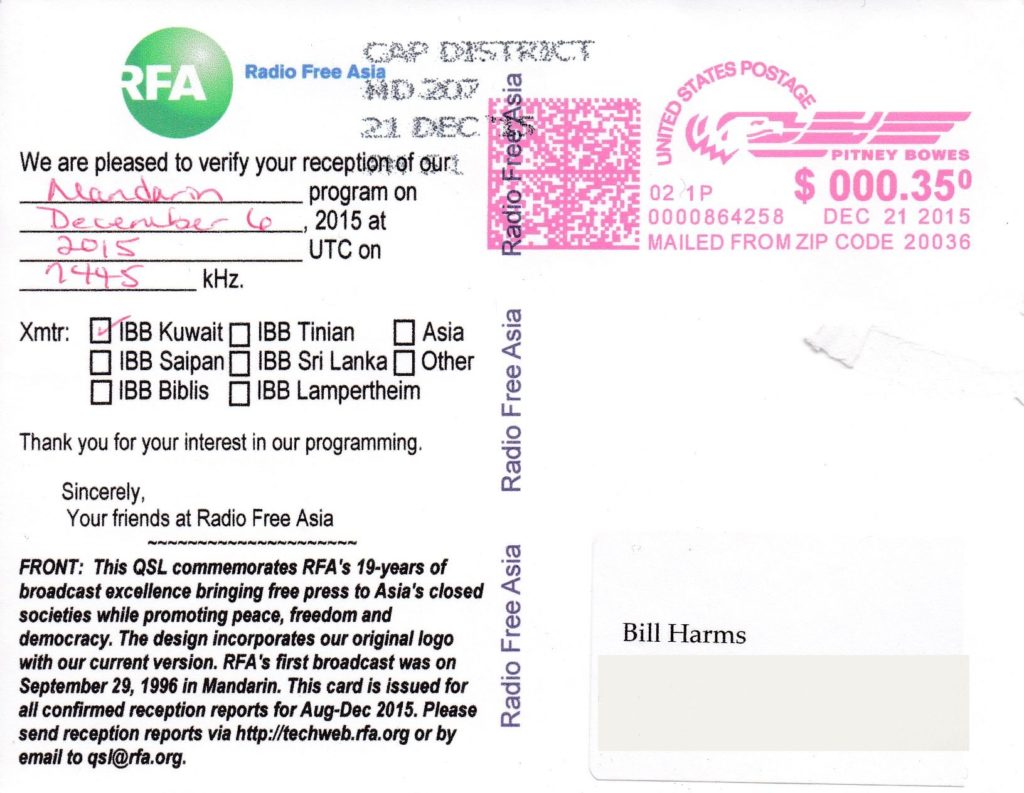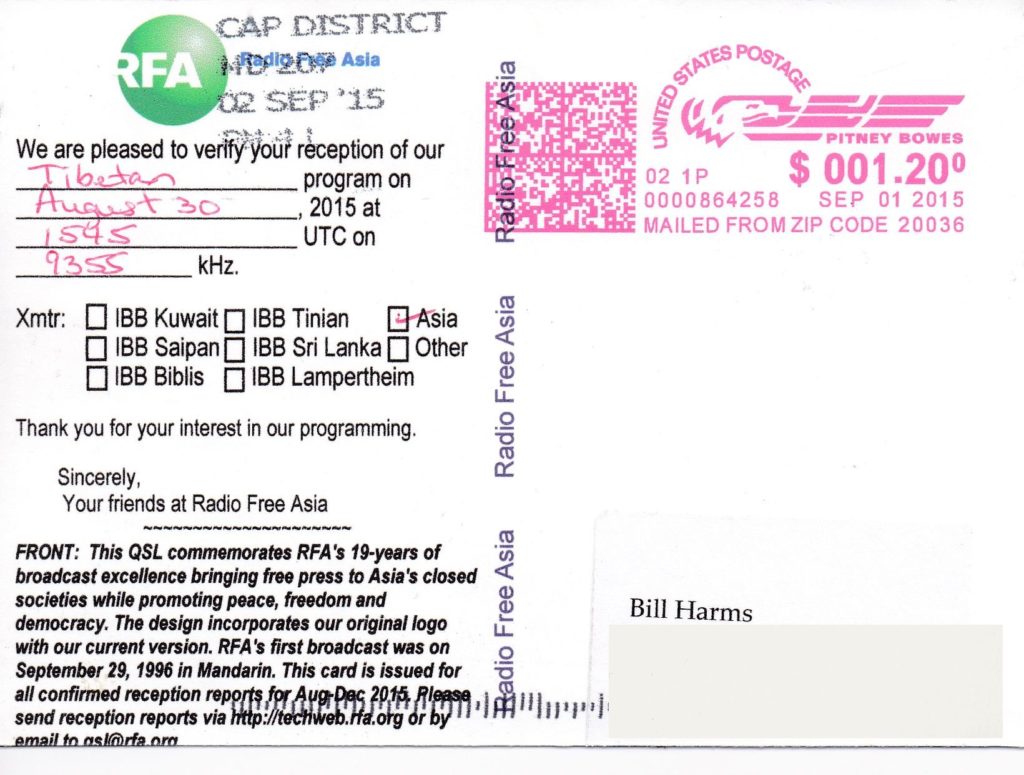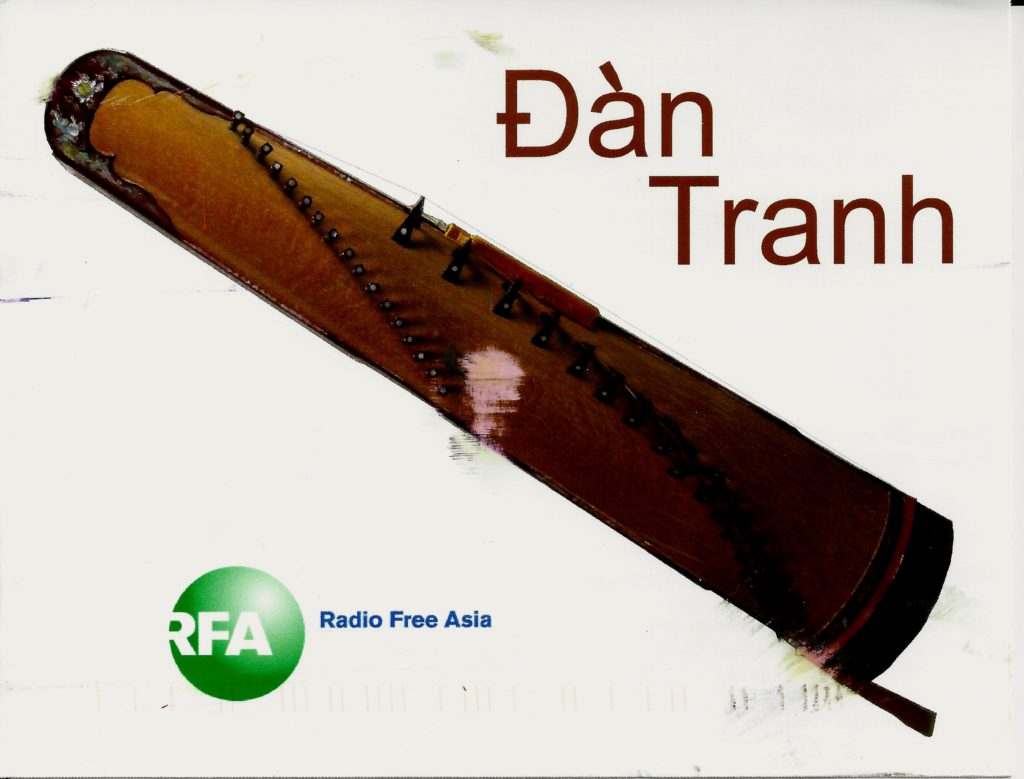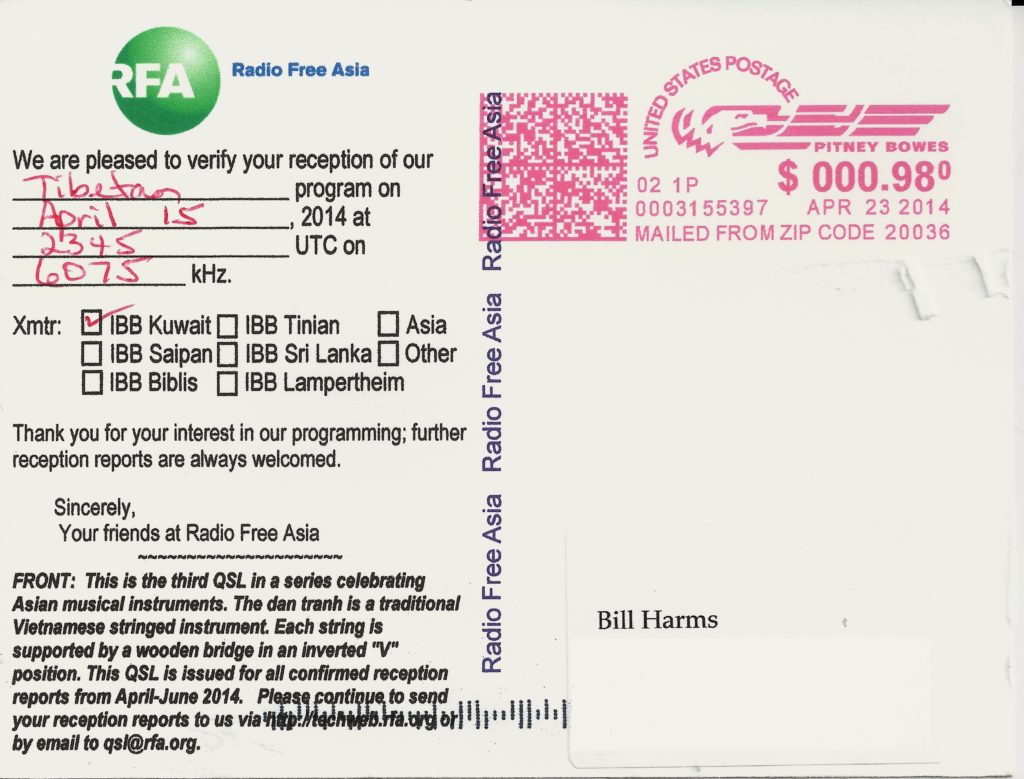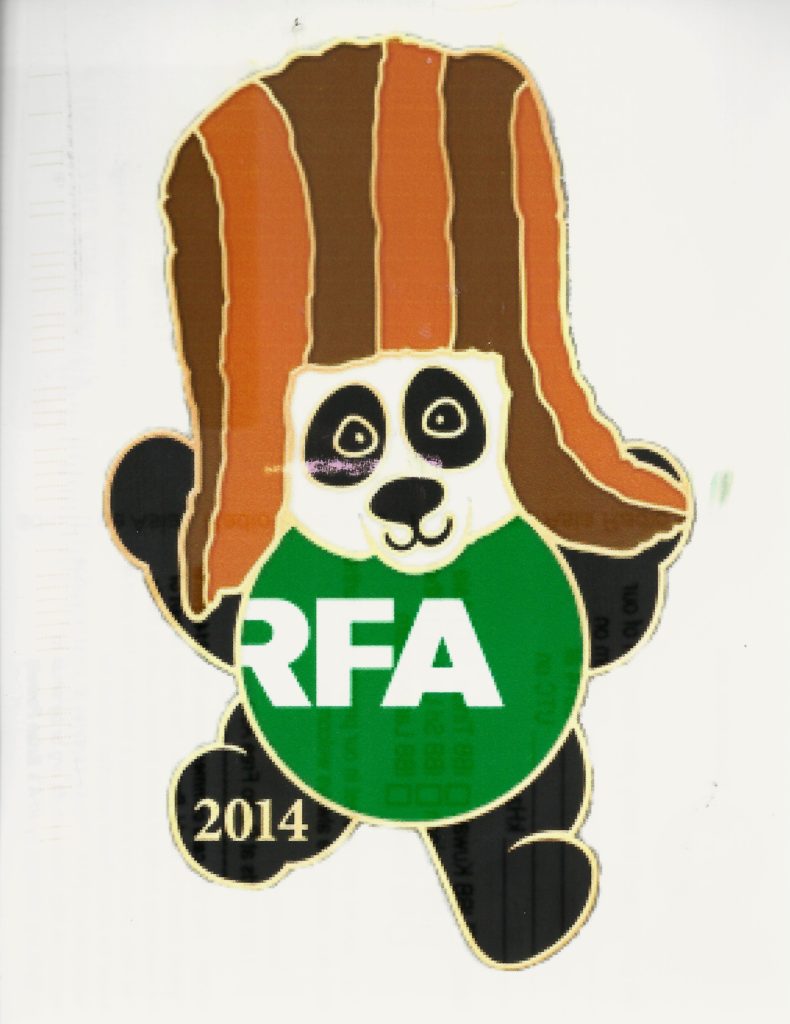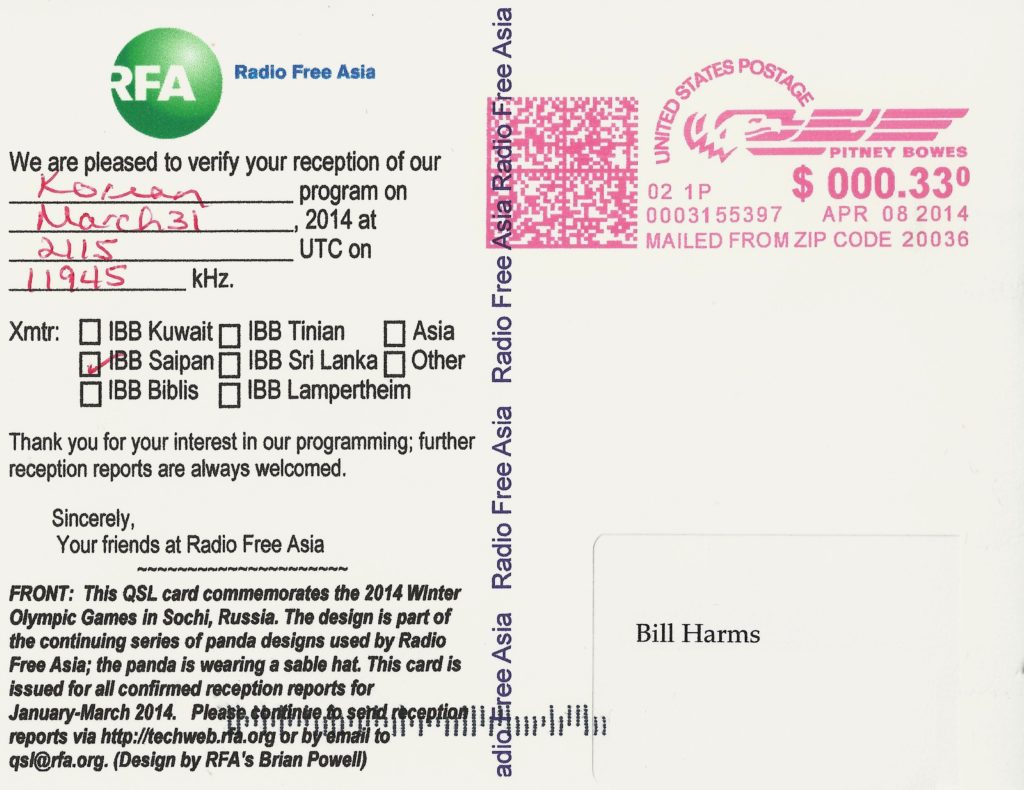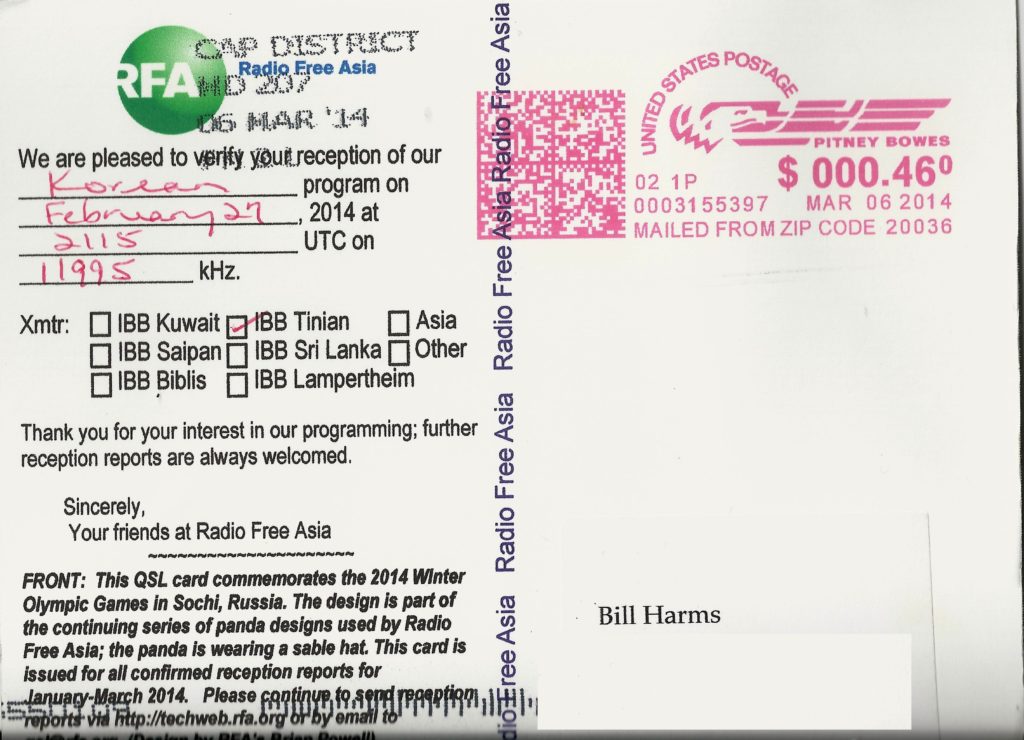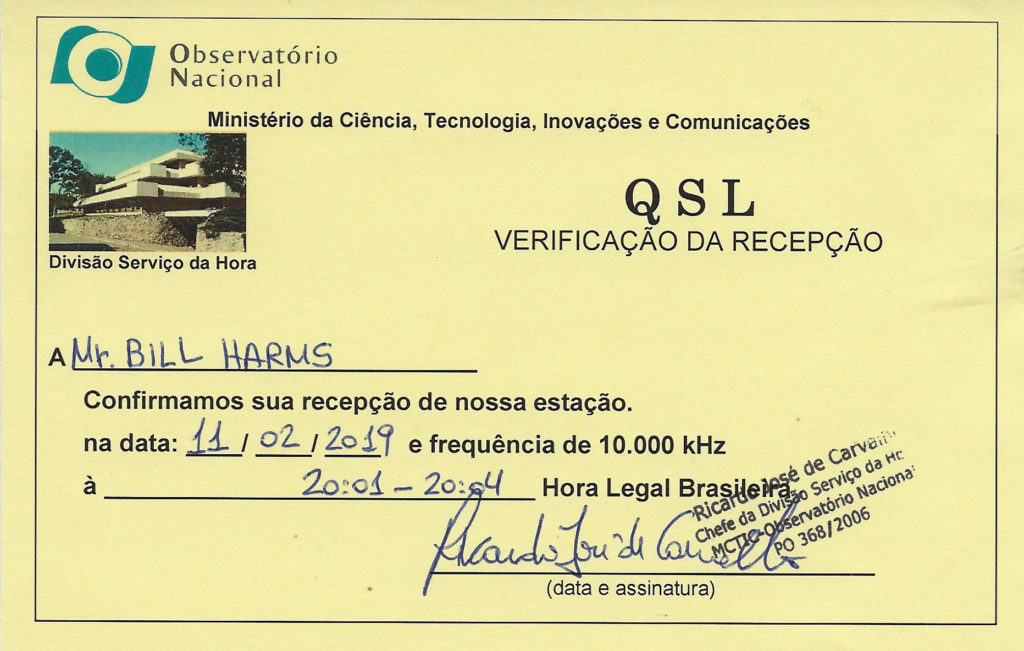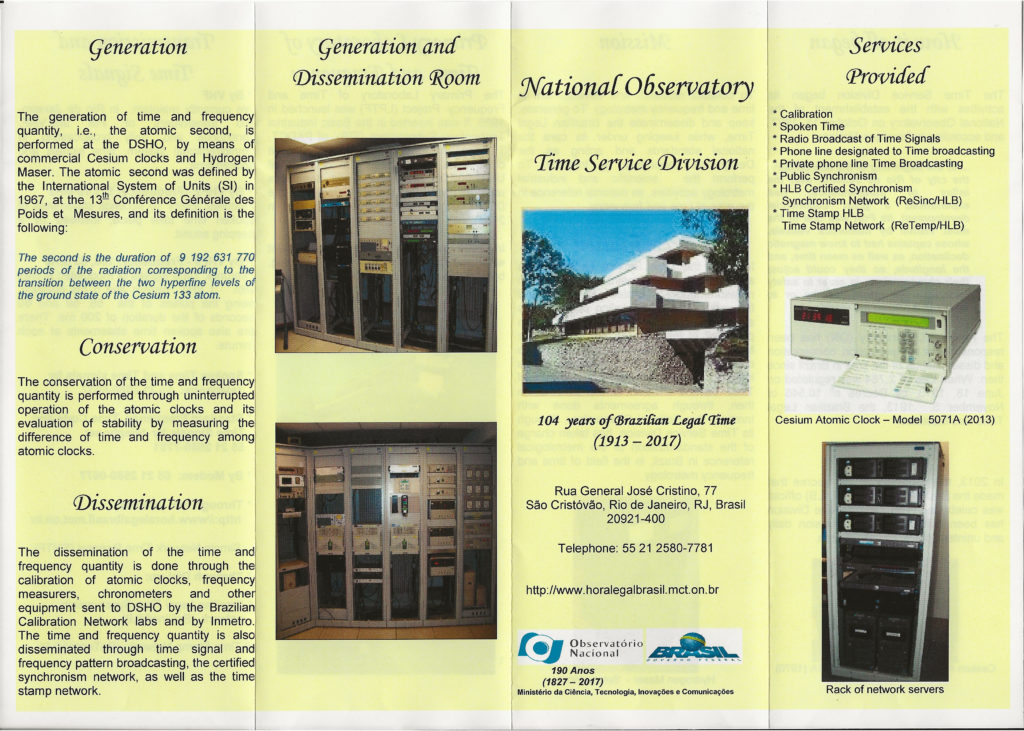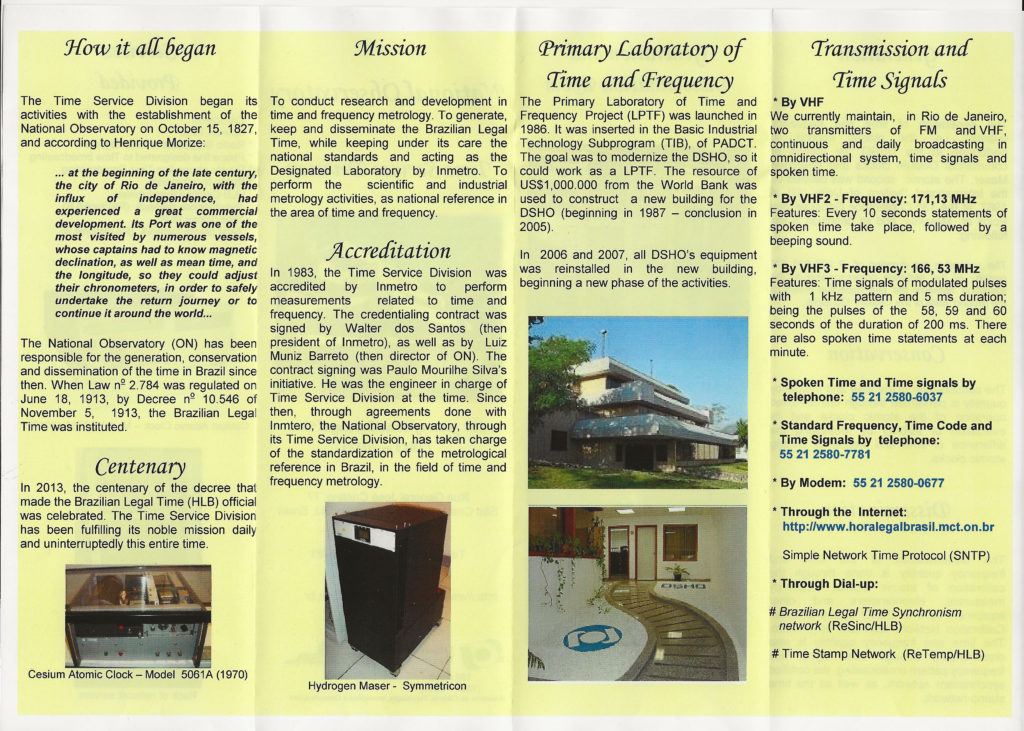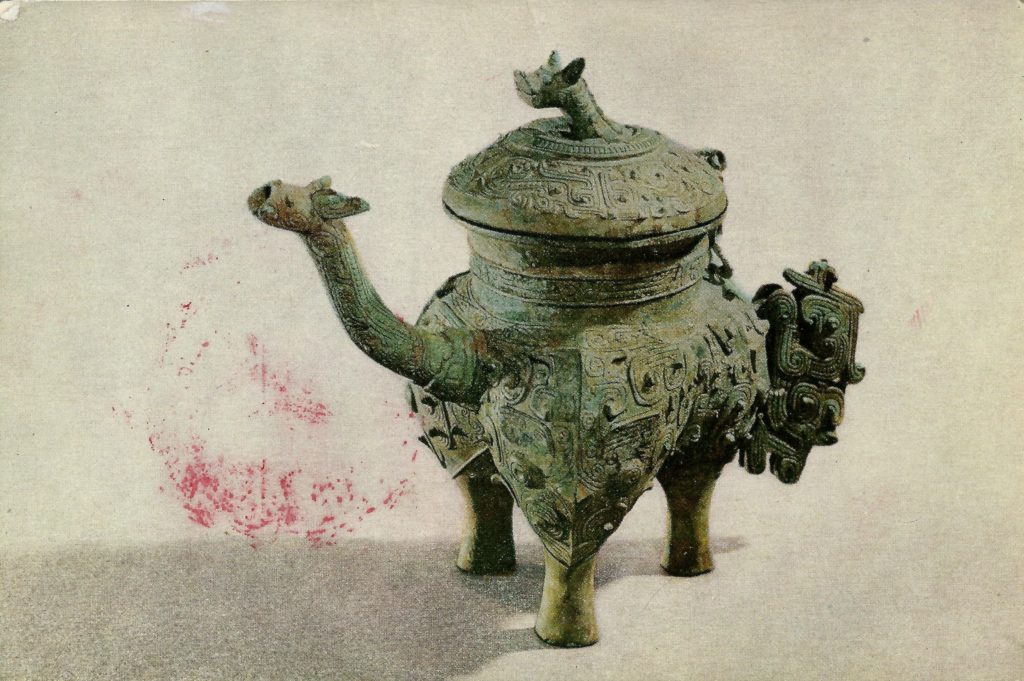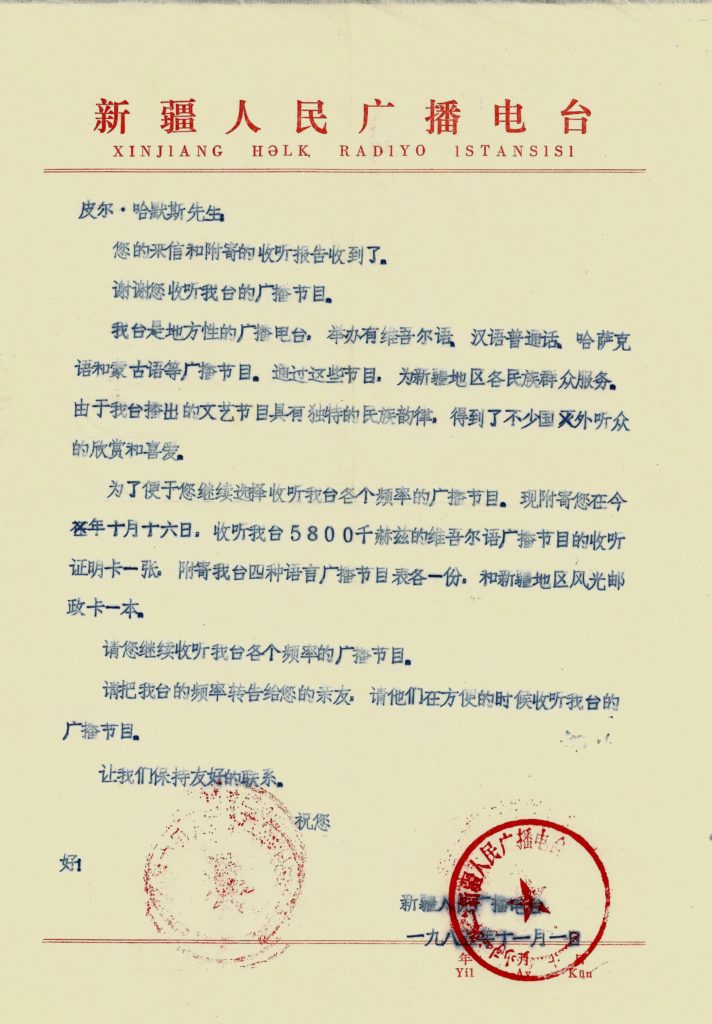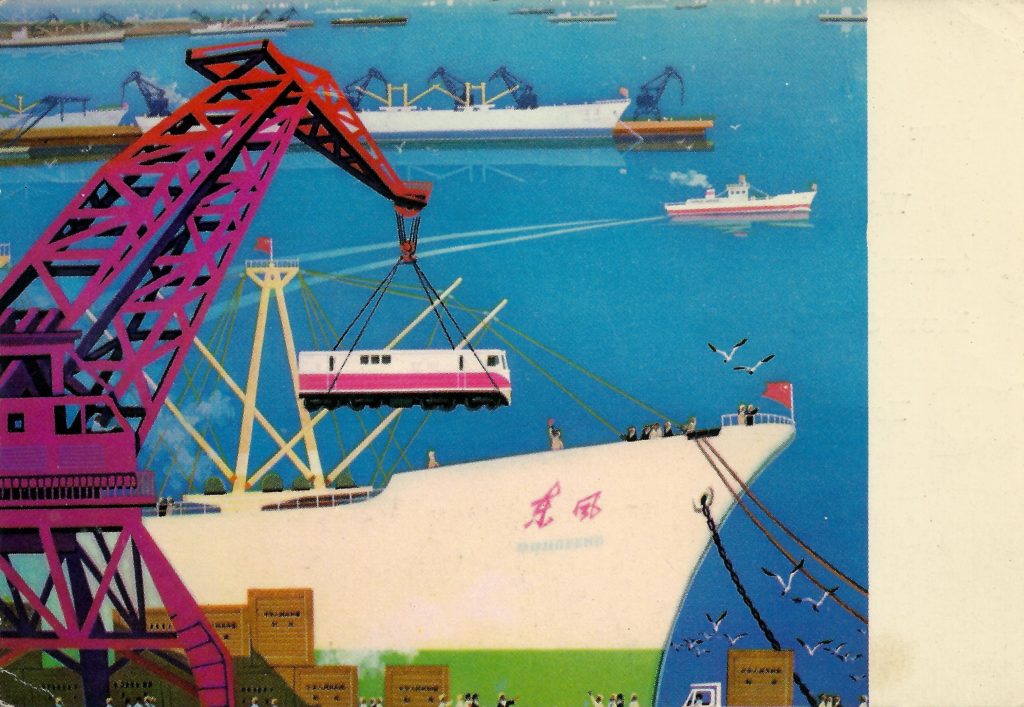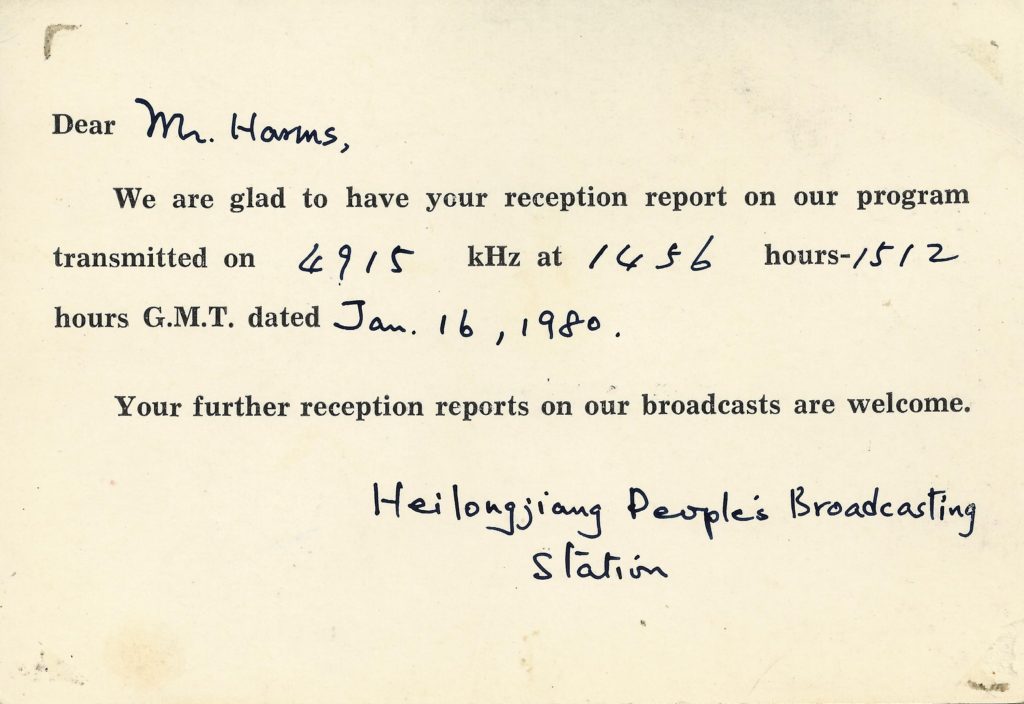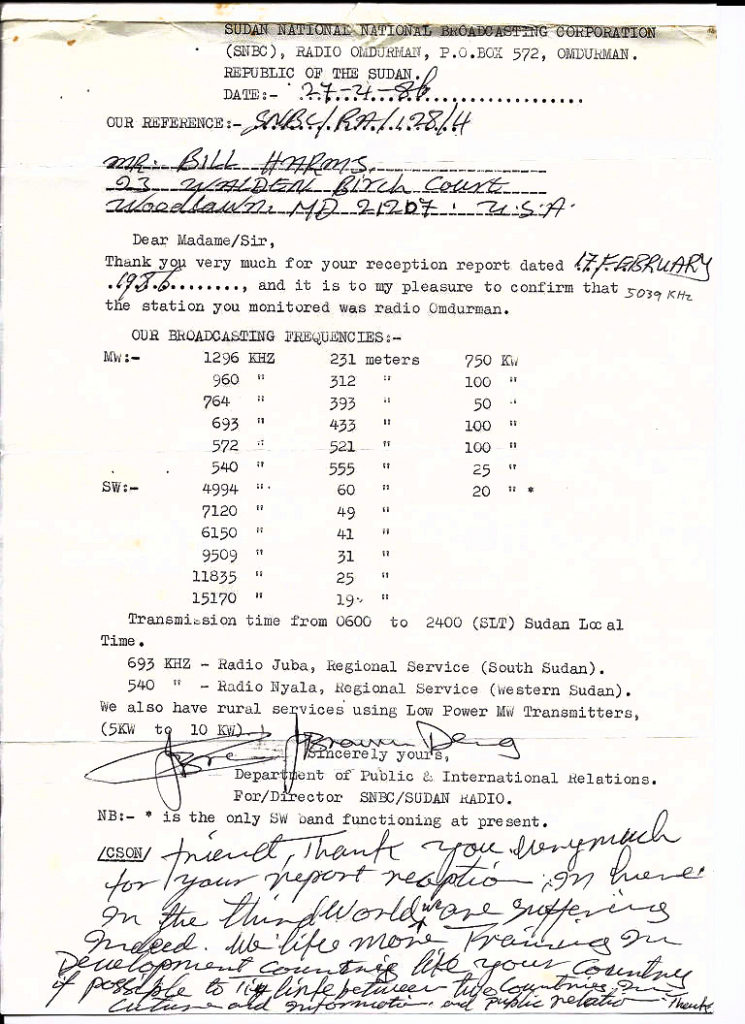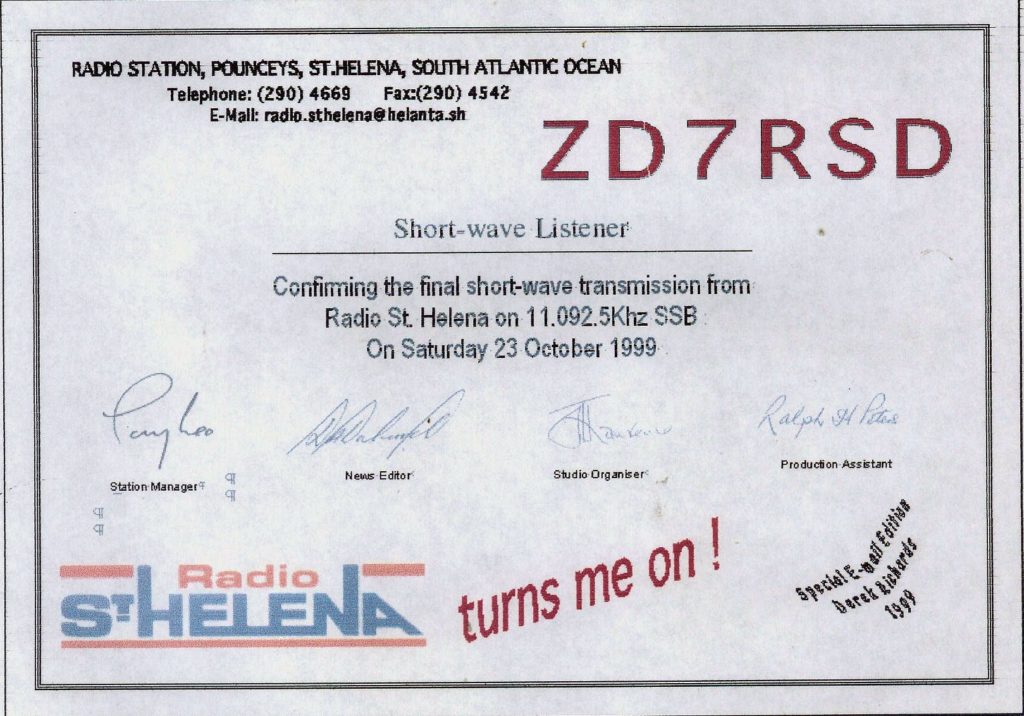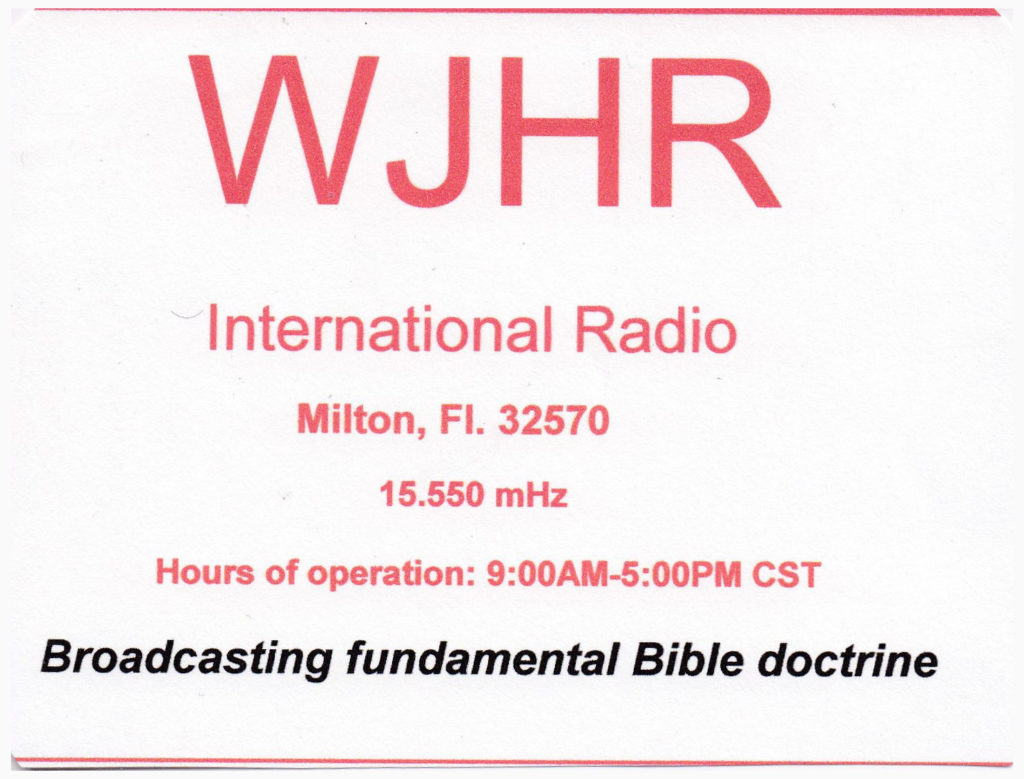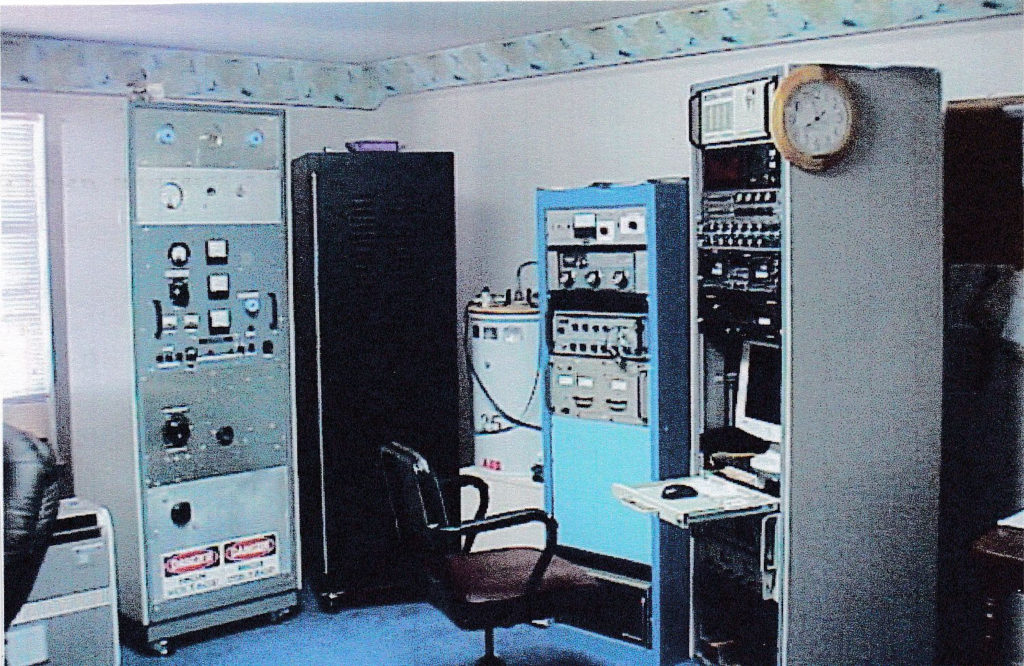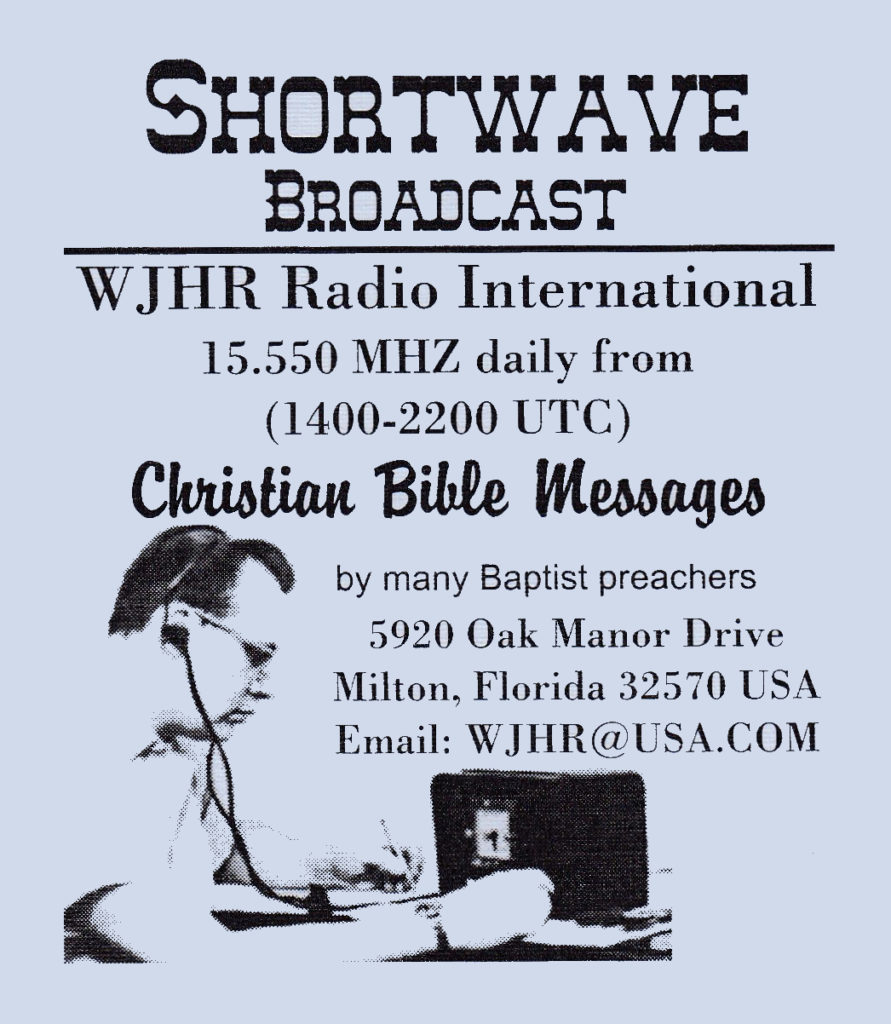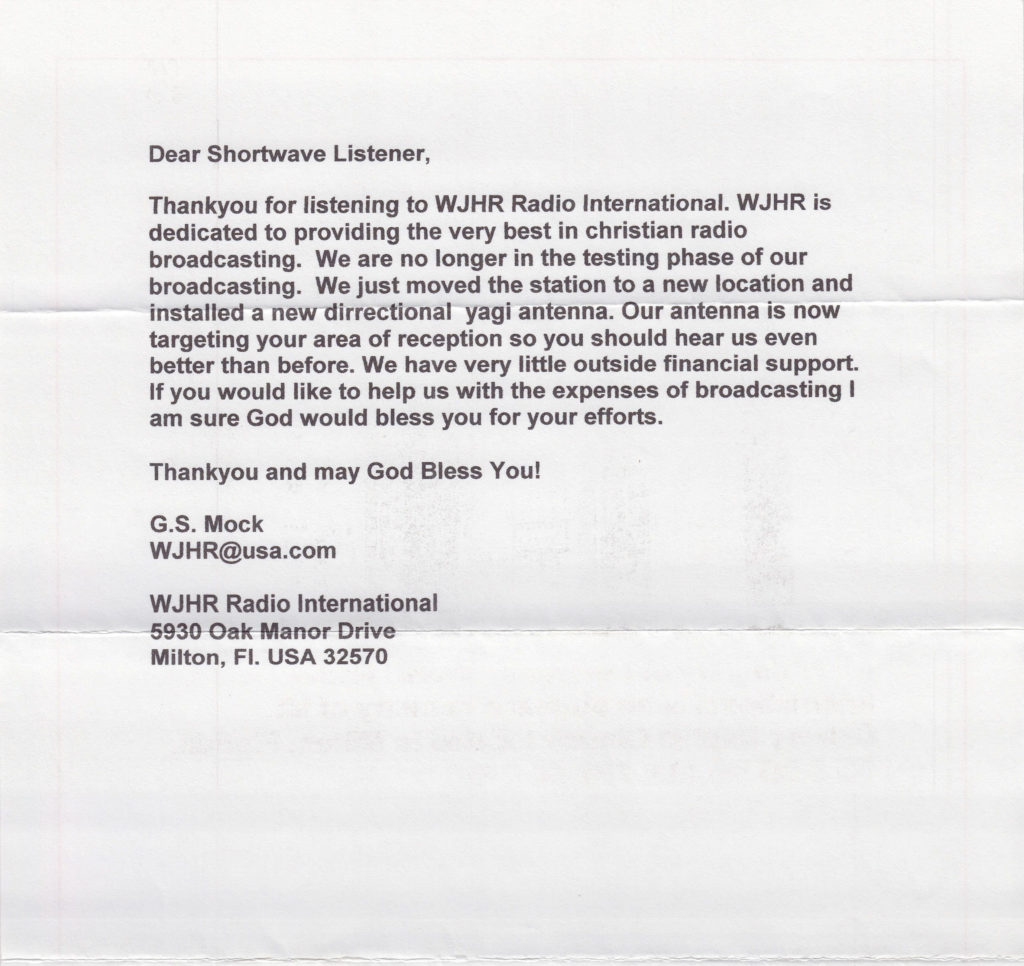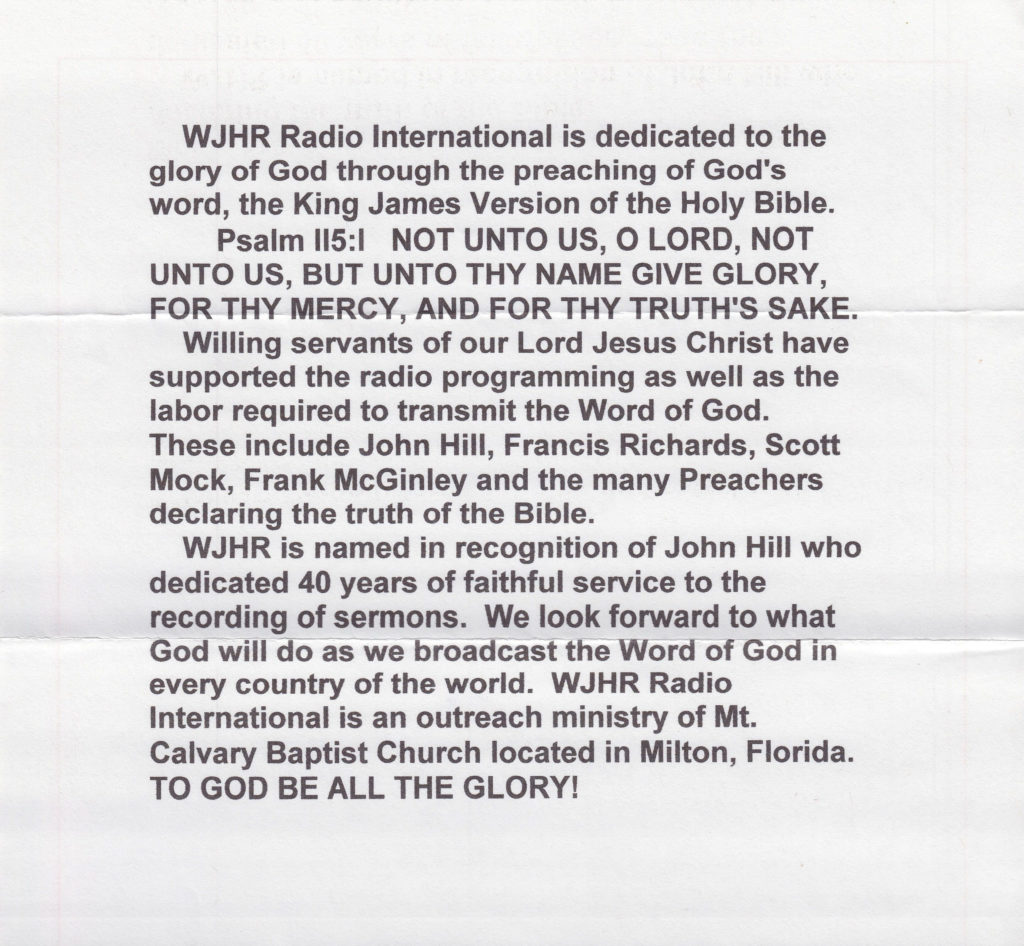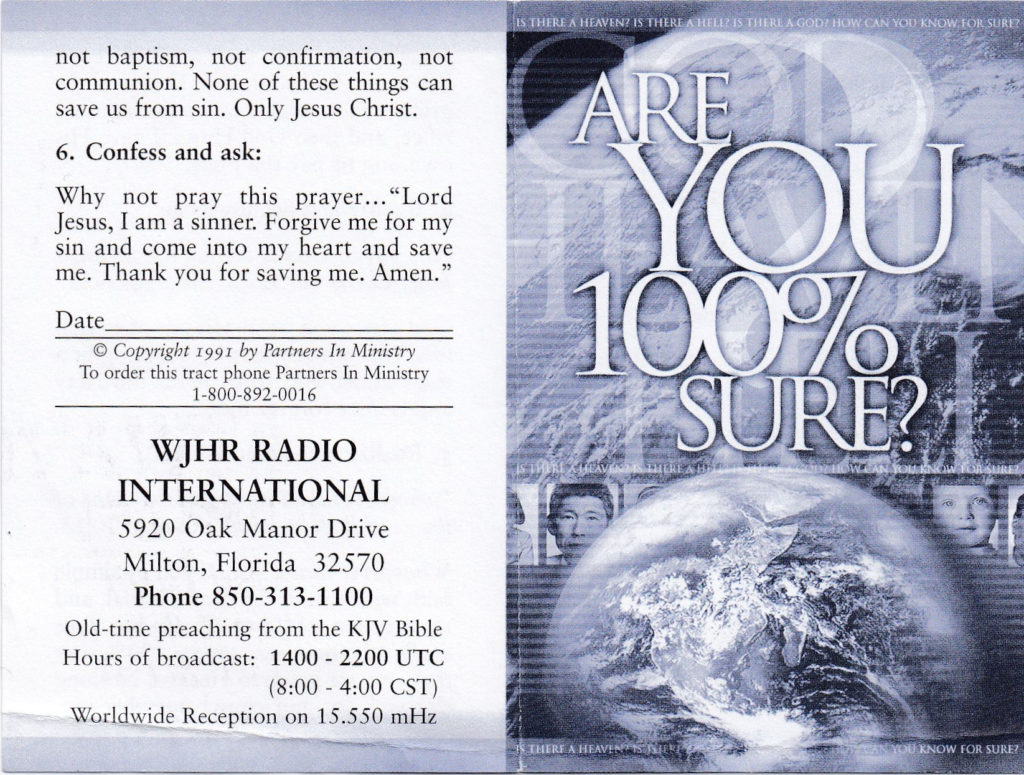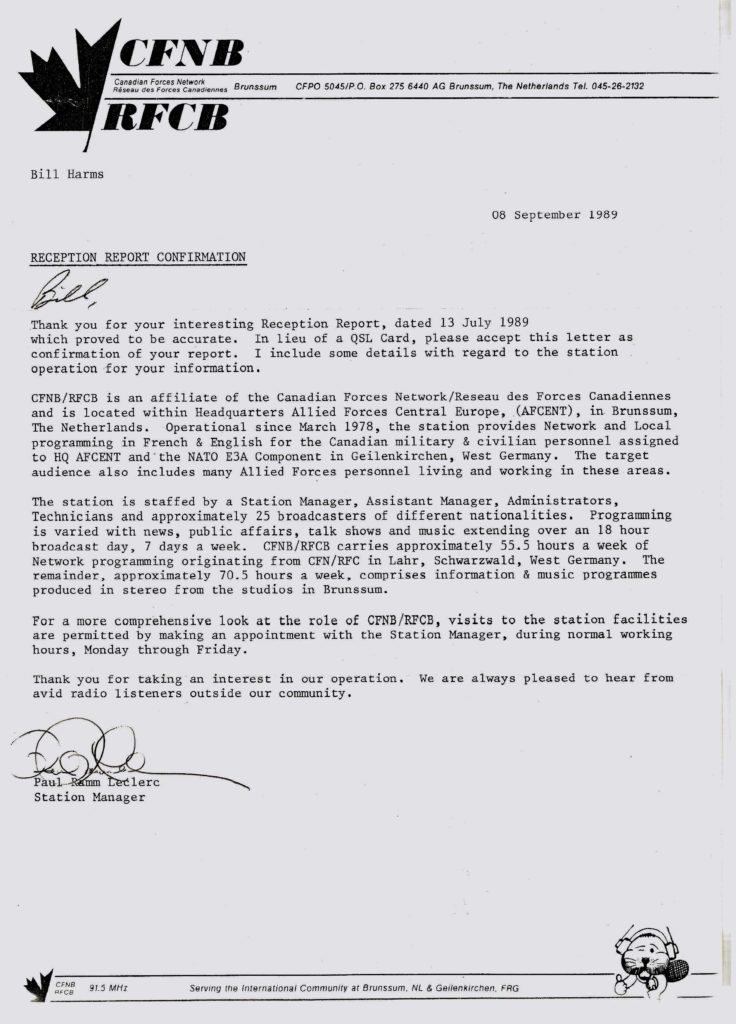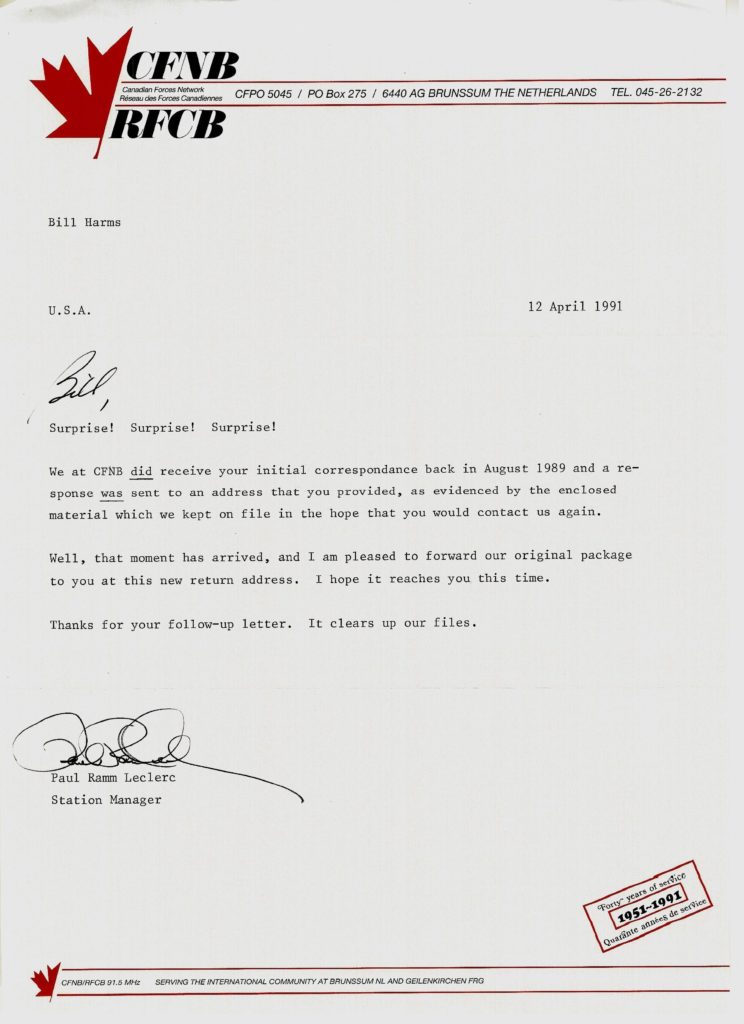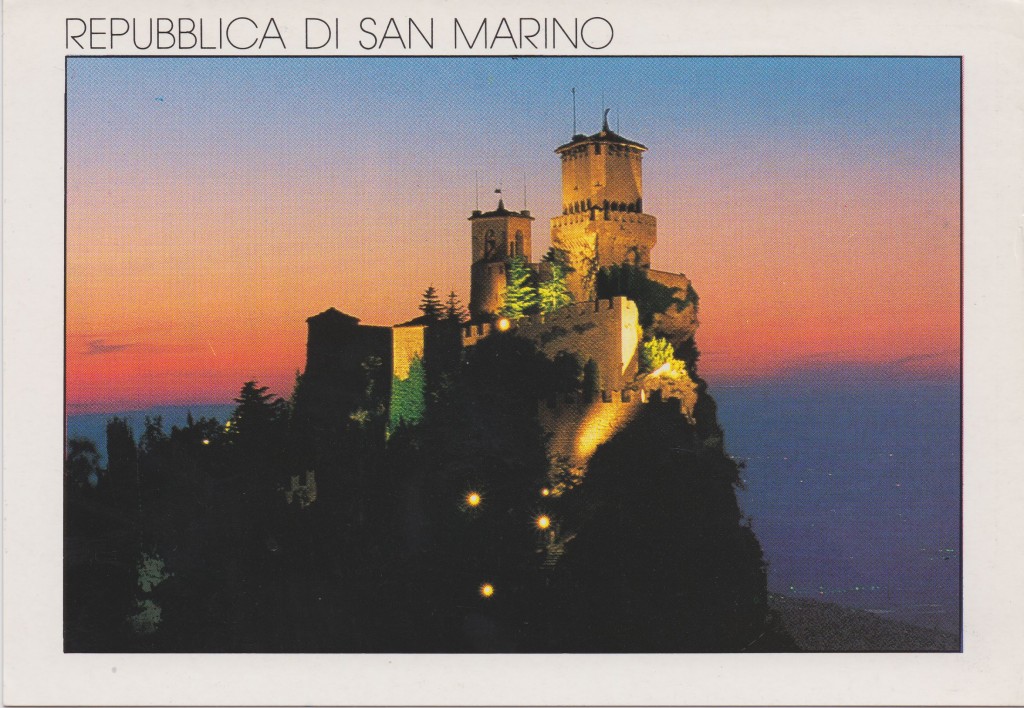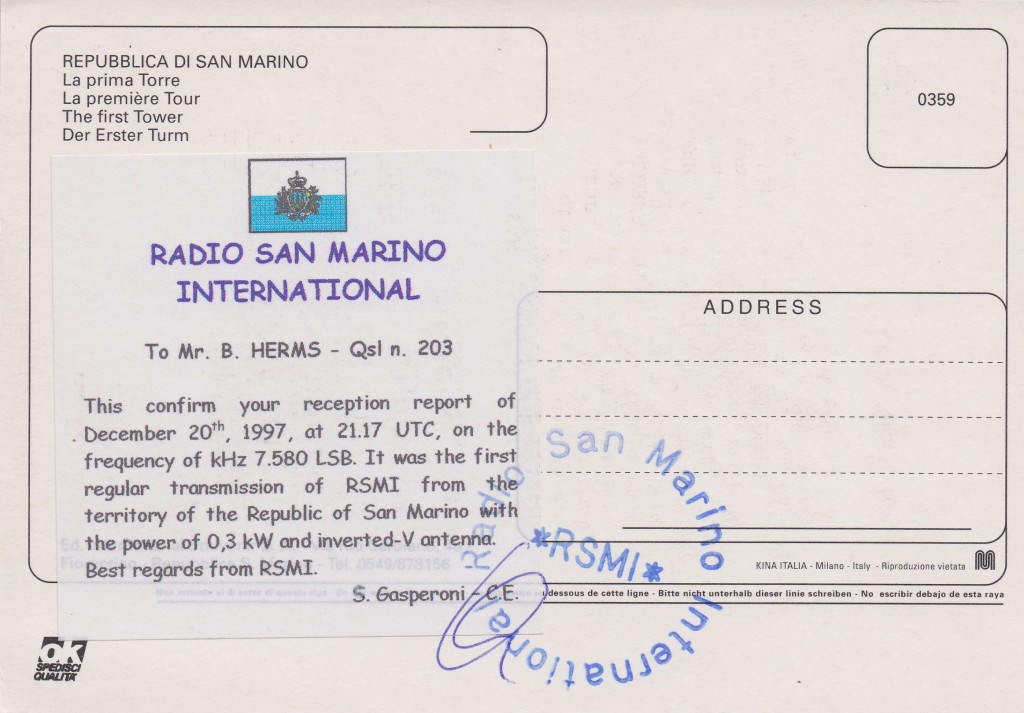Radio Budapest was launched in 1950 as the international broadcaster for Hungary. The station stayed on the shortwave bands until 2007. It was famous for broadcasting a statement by Hungarian Premier Imre Nagy charging the Soviets with attempting to overthrow Hungary’s “lawful democratic government” on 4 November 1956. I remember the station being fairly stable on the channel of 9835 kHz in the evenings. Below are the QSL cards they sent for my reception reports.
Monthly Archives: April 2019
KBGG 1700 kHz
Des Moines, Iowa
Ríkisútvarpið (RÚV)
The Icelandic National Broadcasting Service
Ríkisútvarpið (RÚV) is the national public-service broadcasting service in Iceland. It operates a network which consists of two longwave stations, a number of FM and television transmitters. They also used shortwave for some time. It is my understanding that they used shortwave to broadcast to seamen and fisherman while out at sea. They verified my reception report with the QSL seen here.
Radio Nederland Wereldomroep
Radio Nederland, a renowned presence on shortwave bands, held significant popularity among enthusiasts of the medium. Its origins trace back to the mid-1920s when Phillips initiated experimental international broadcasts from Holland. By 1927, these broadcasts became regular, with the station adopting the call letters PCJ by 1929. During the tumult of the Second World War, the Dutch government-in-exile collaborated with the BBC to produce and transmit programs. On 15 April 1947, the Stichting Radio Nederland Wereldomroep (Radio Netherlands International Foundation) was established, marking a formalization of its mission. In that same year, Radio Nederland commenced broadcasts in English, Spanish, Dutch, and Indonesian.
However, as the new millennium dawned, the Dutch government embarked on a gradual defunding process for Radio Nederland. By 2014, all programming had ceased, marking the end of an era. In its wake, RNW Media emerged as the successor, focusing primarily on fostering media communities for social change.
Among the myriad programs that captivated listeners, DX Jukebox, and later the Media Network, stood out as favorites among DXers. These programs served as invaluable resources, offering tips and insights into shortwave listening and DXing. Another beloved show, The Happy Station Show, entertained audiences from 1928 to 1995, leaving an indelible mark on the airwaves.
One notable aspect of Radio Nederland was its meticulous verification process, often including transmitter site details on their QSL cards. Over the years, enthusiasts like myself received these QSL cards in response to our reception reports, serving as cherished mementos of our interactions with the station. While I had the pleasure of tuning in to broadcasts from various transmitting stations and relay sites, I never had the opportunity to verify reception from the original site in Hilversum.
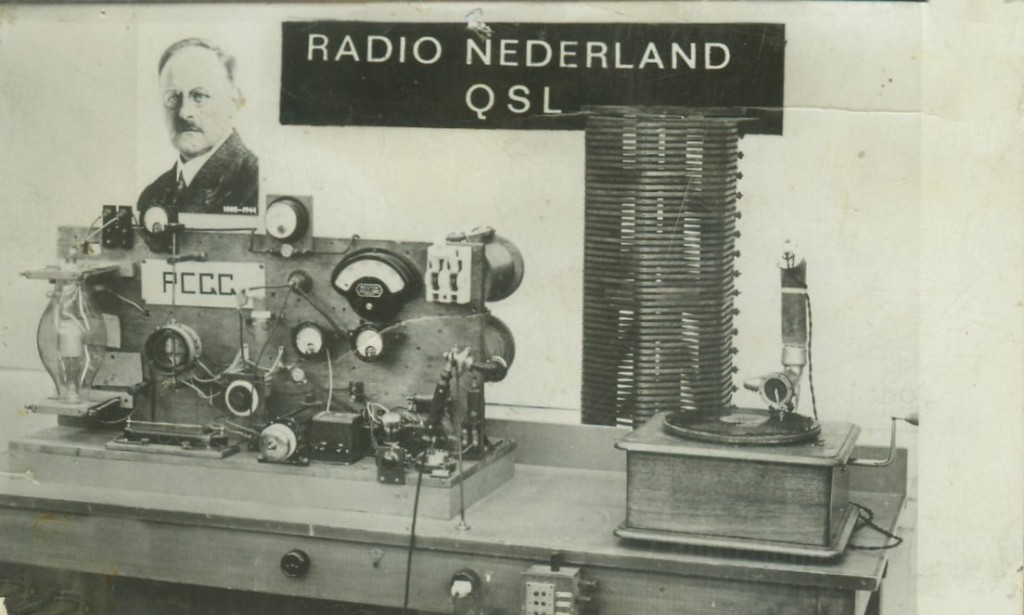
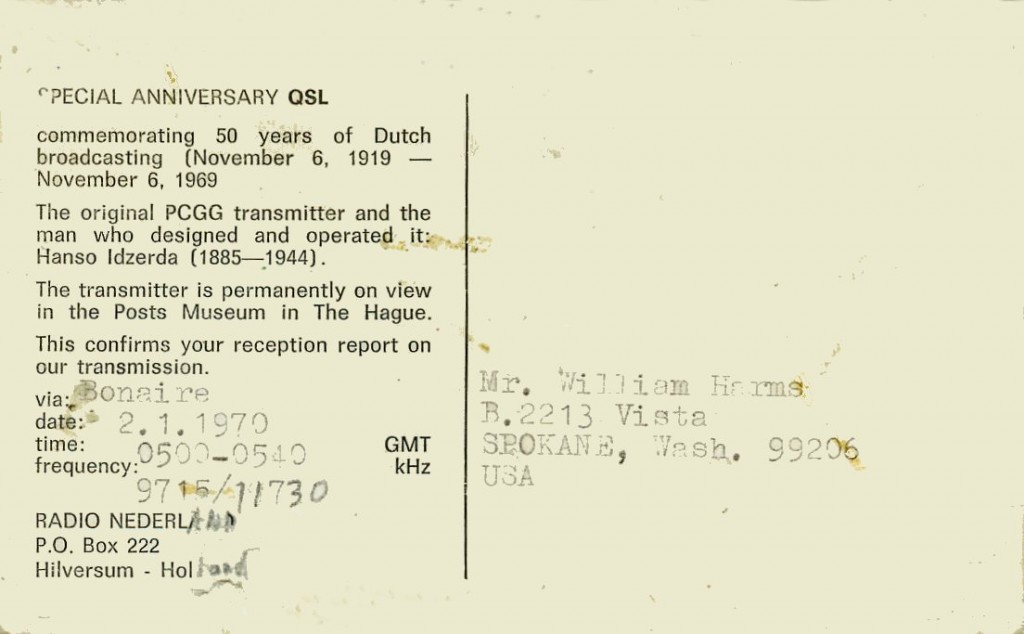
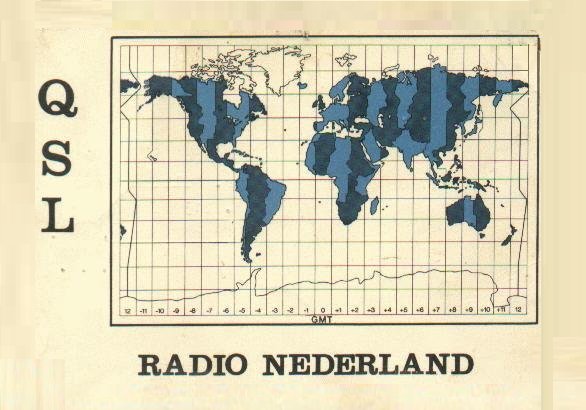
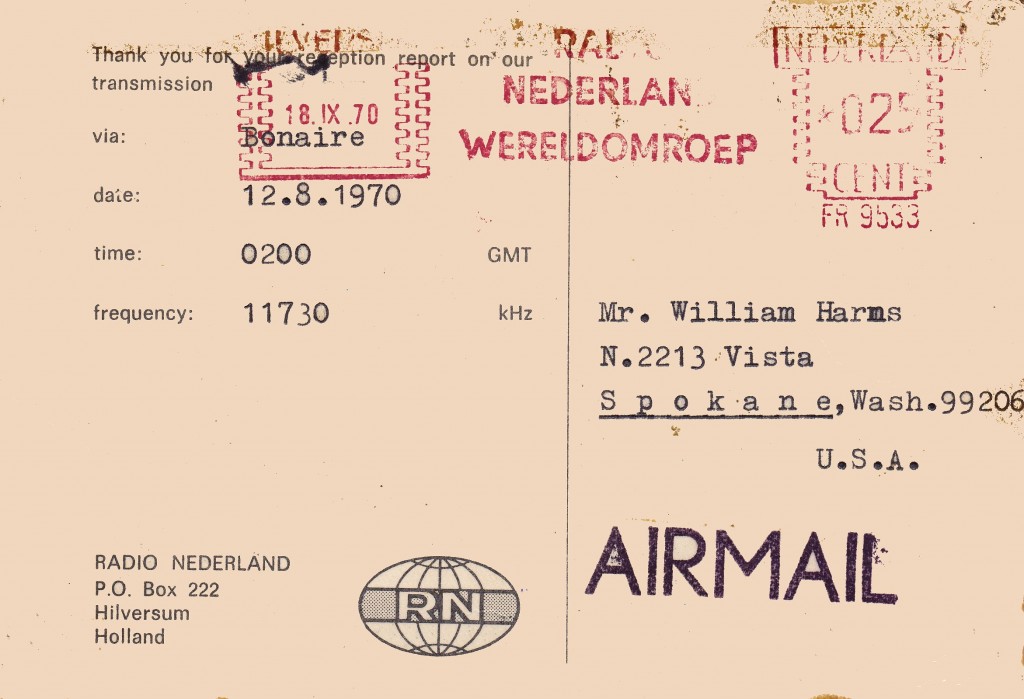
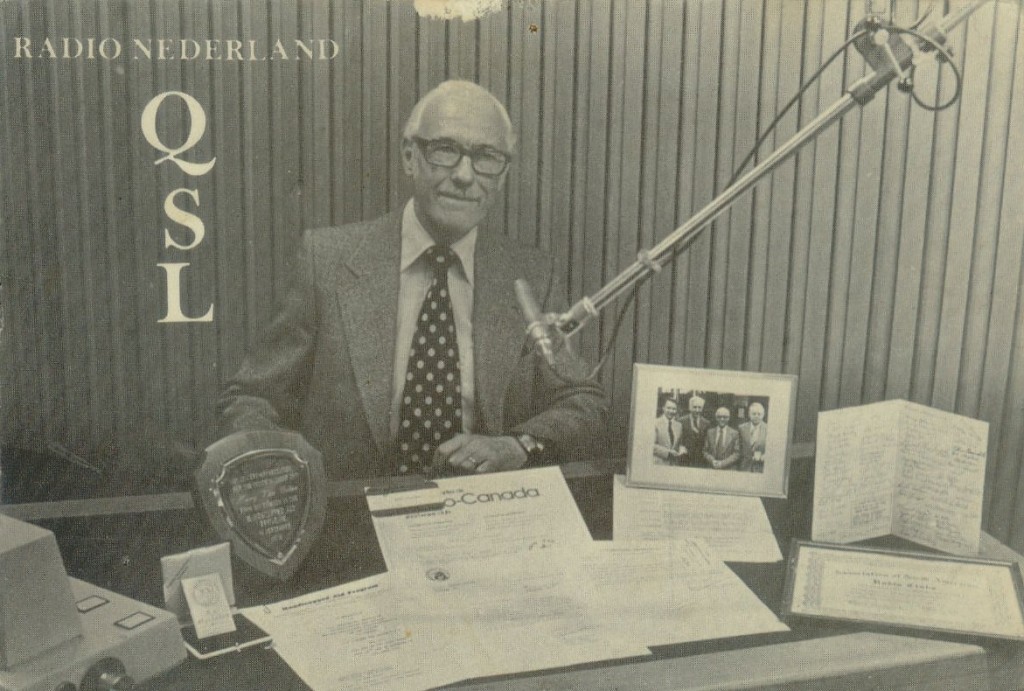
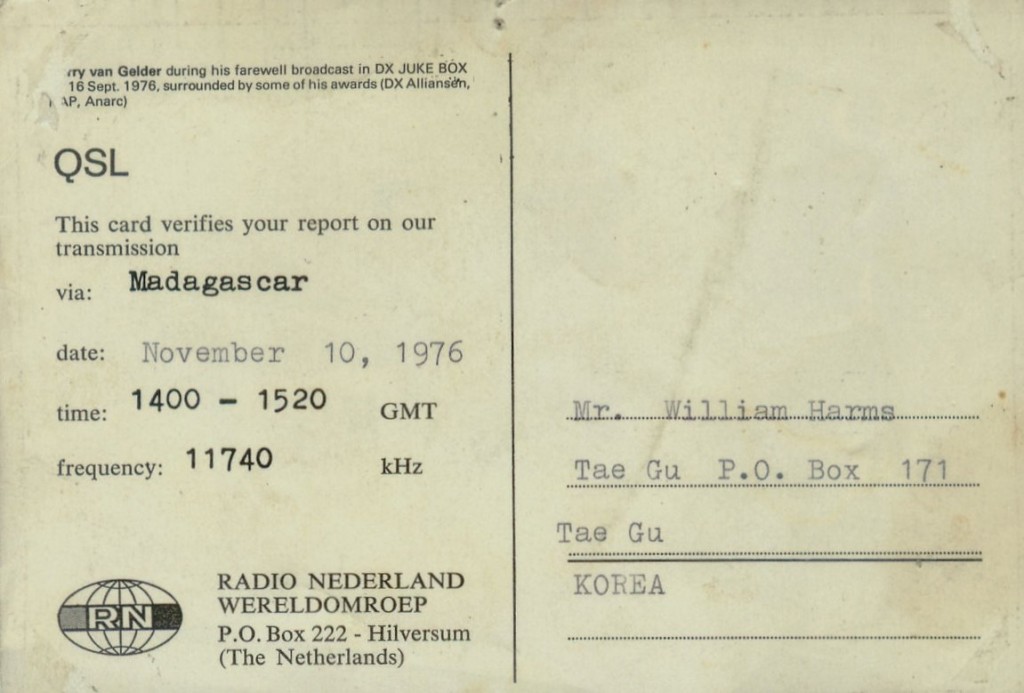

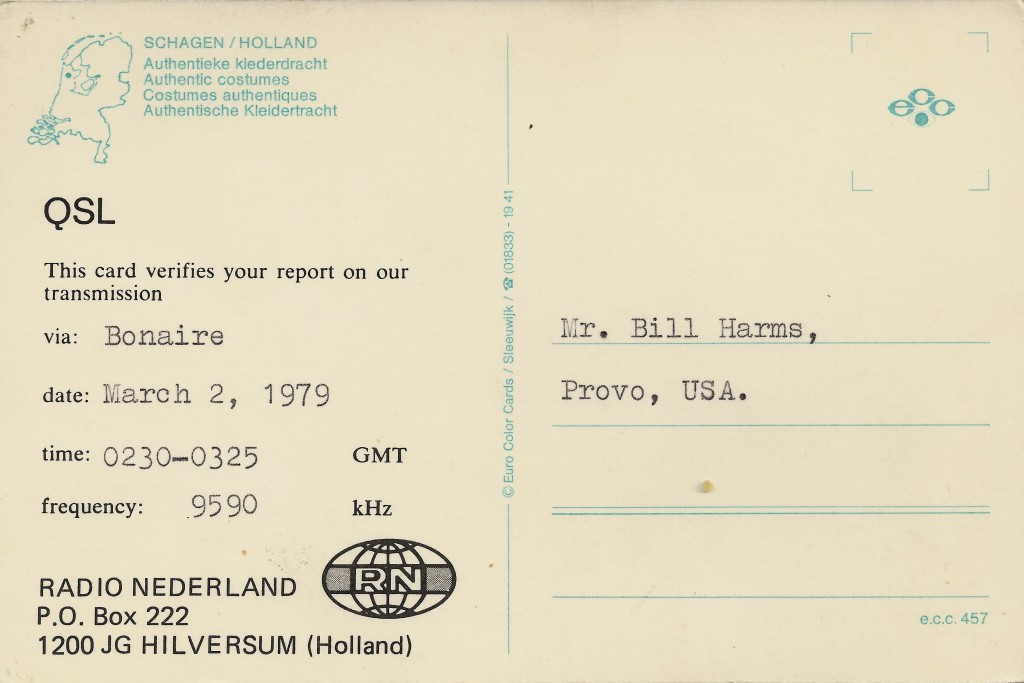
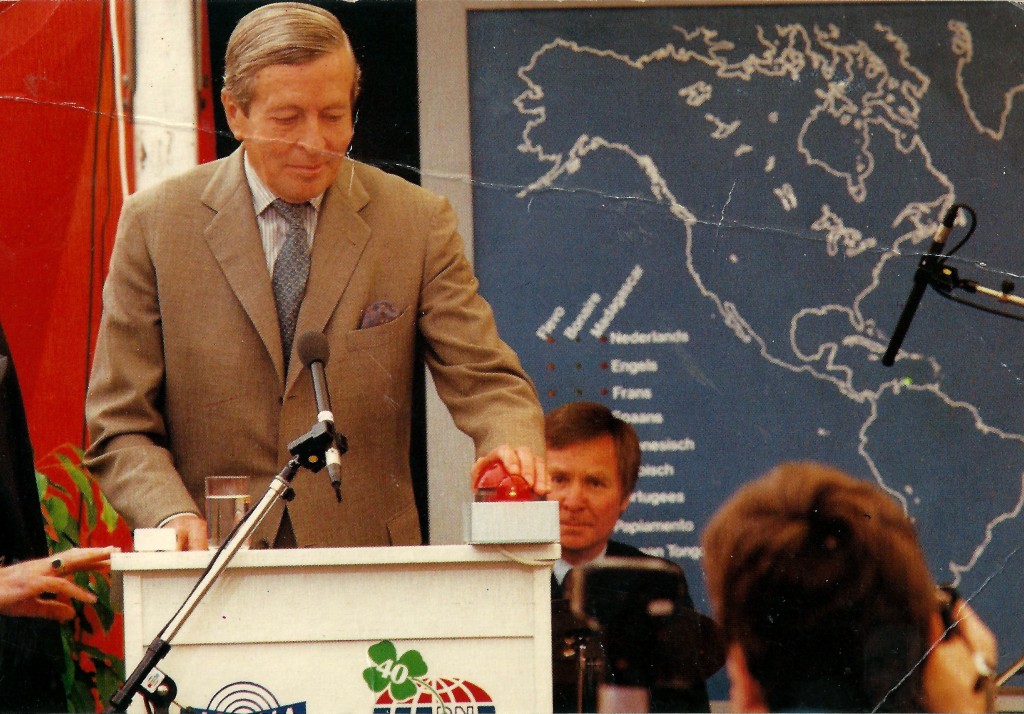
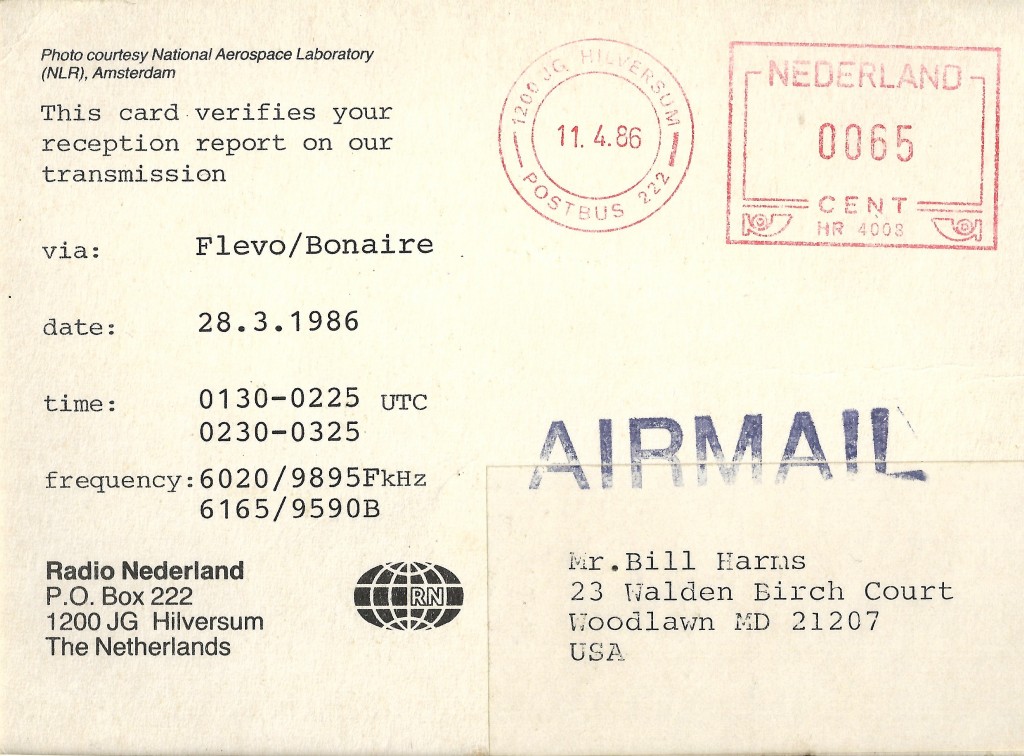
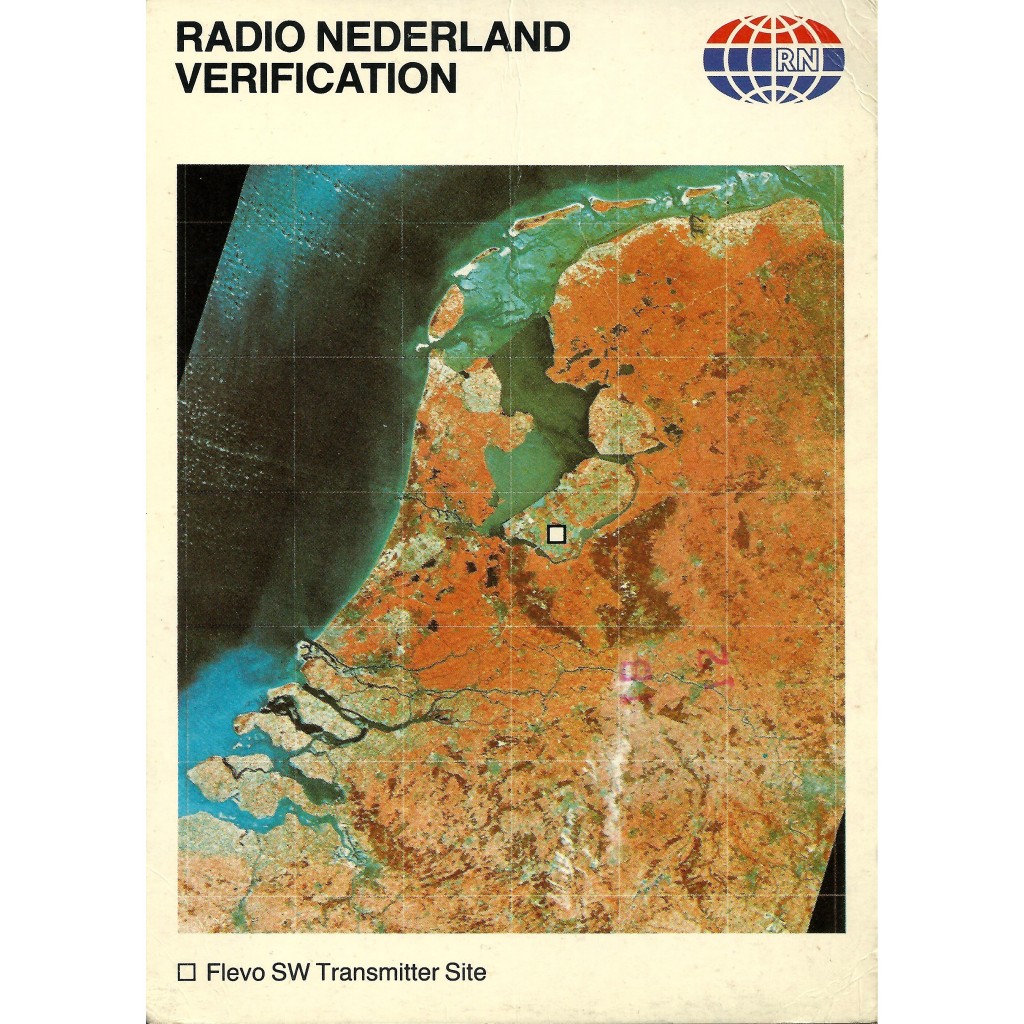
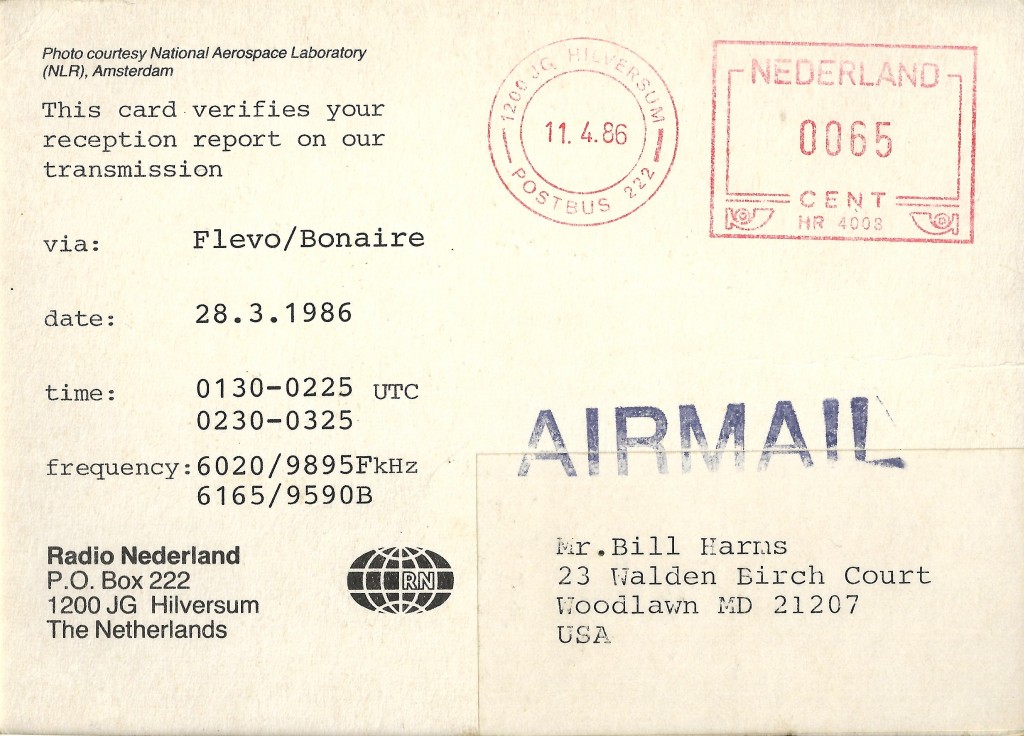
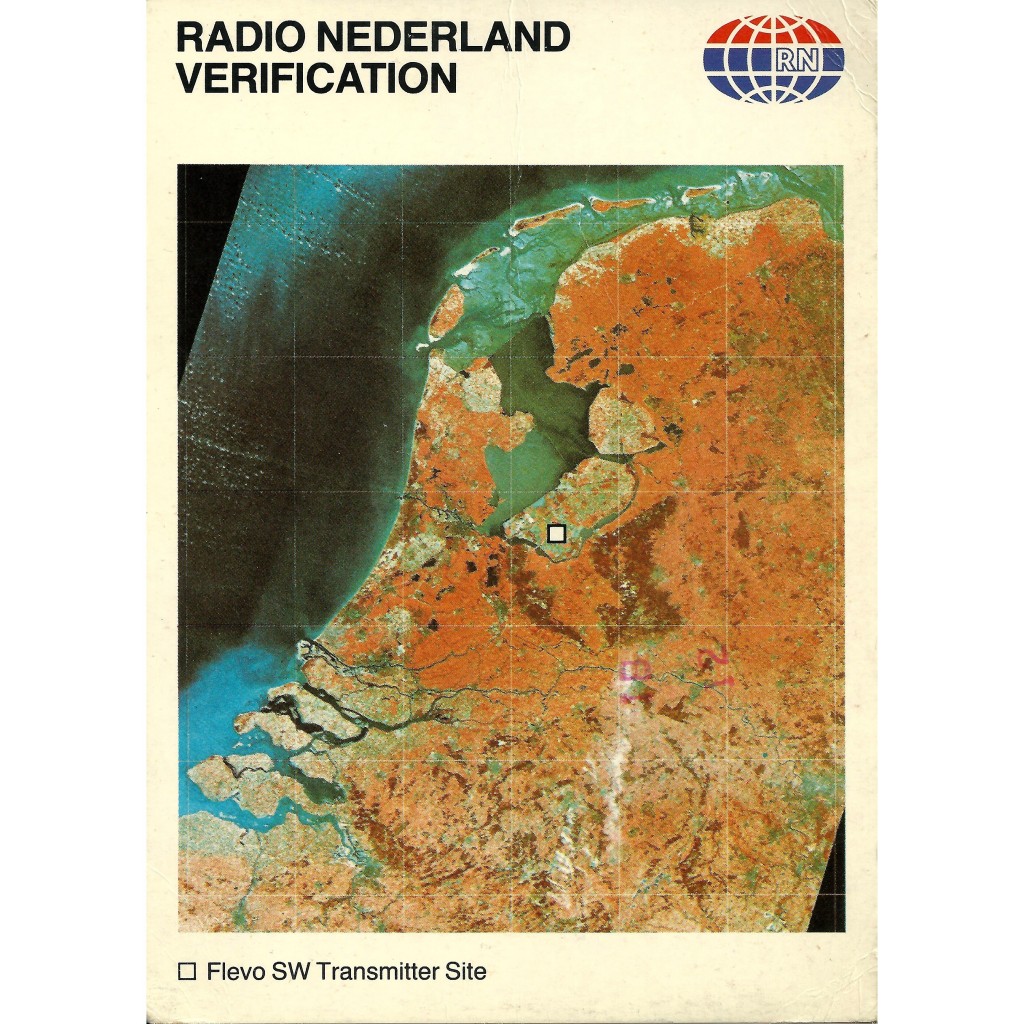
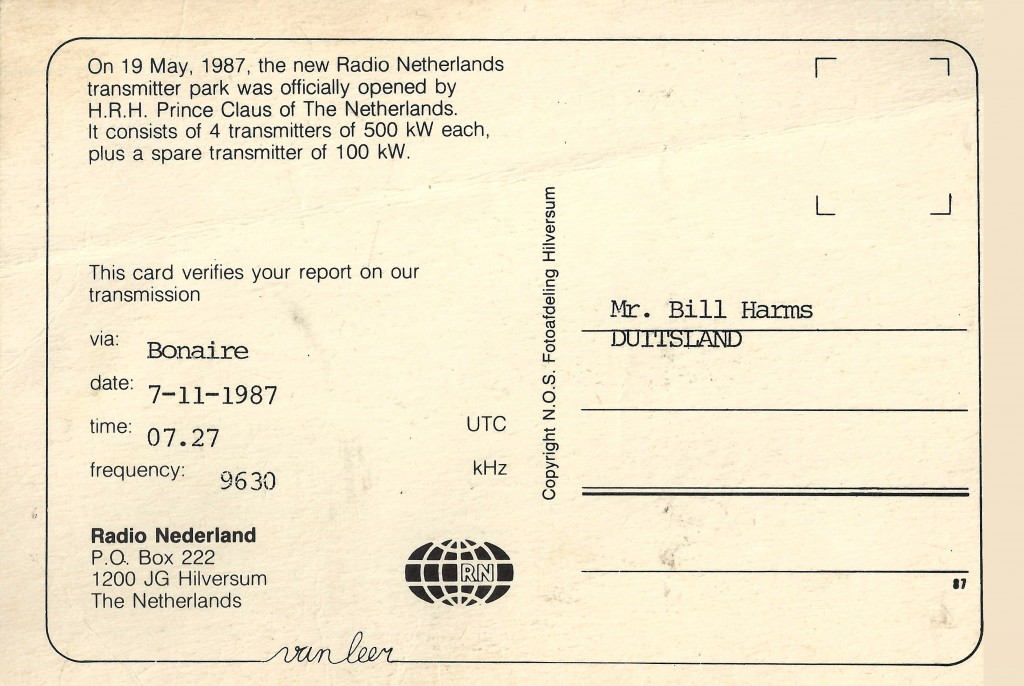
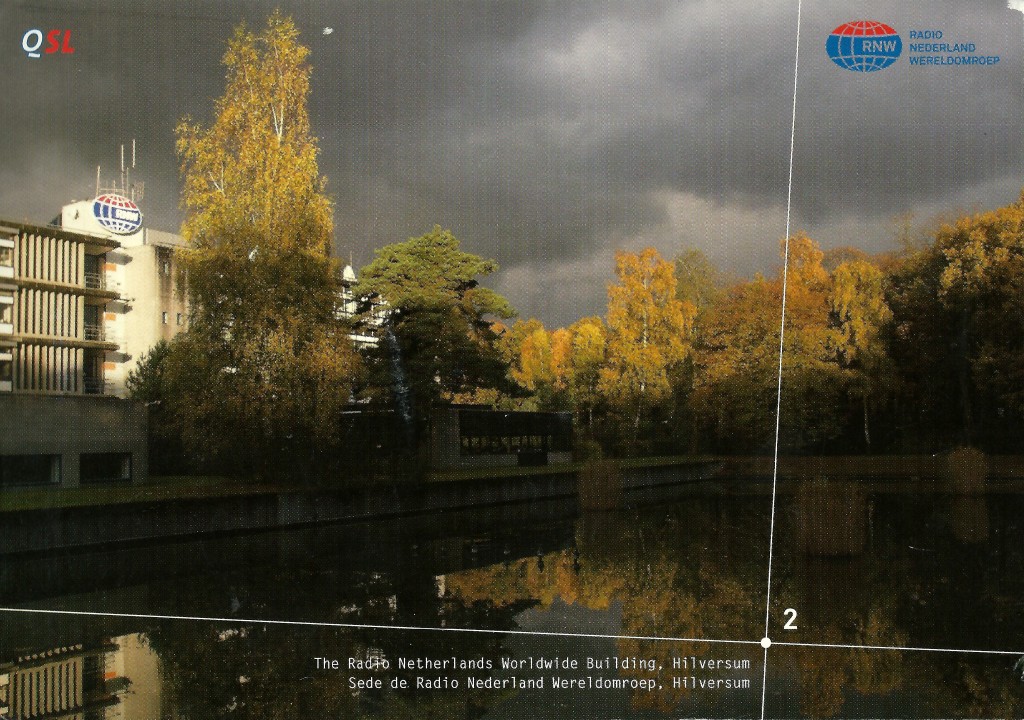
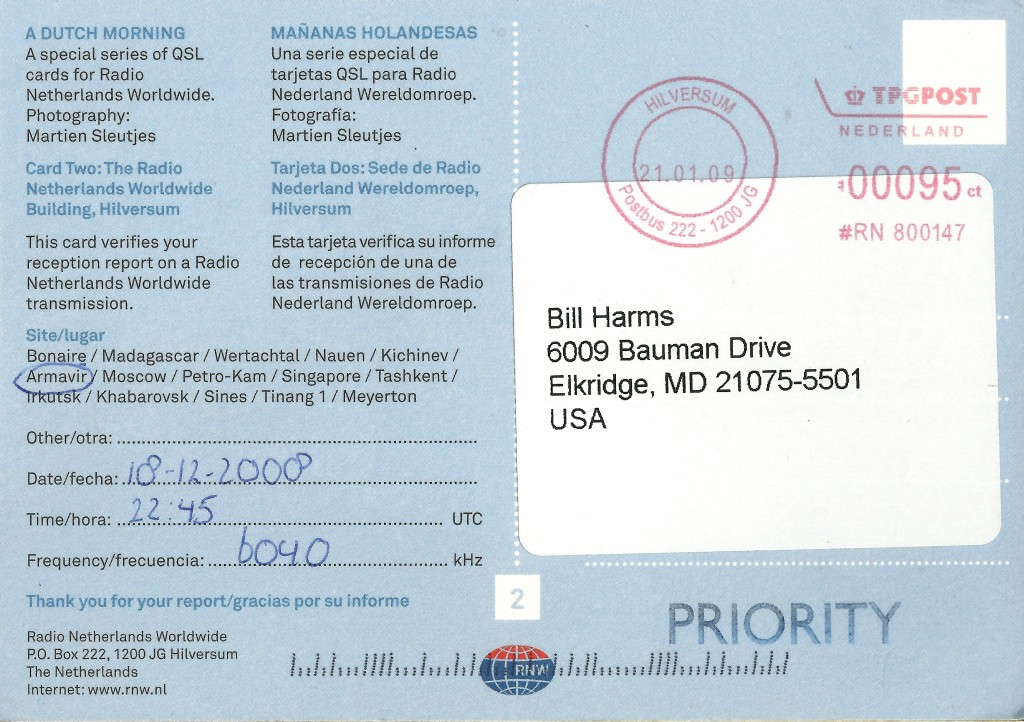
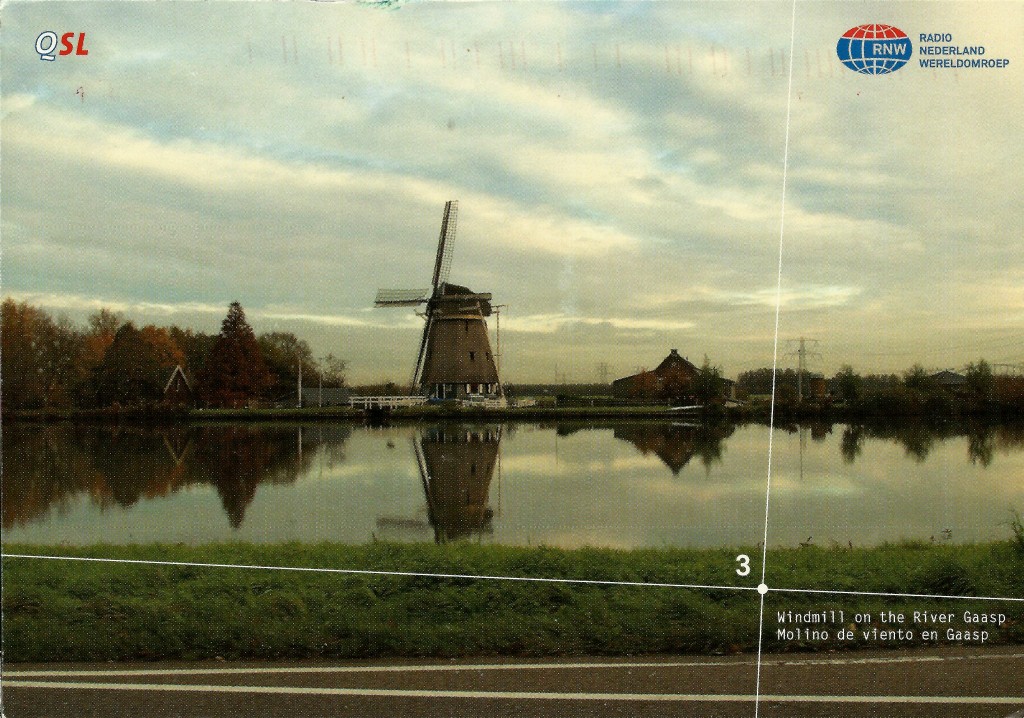
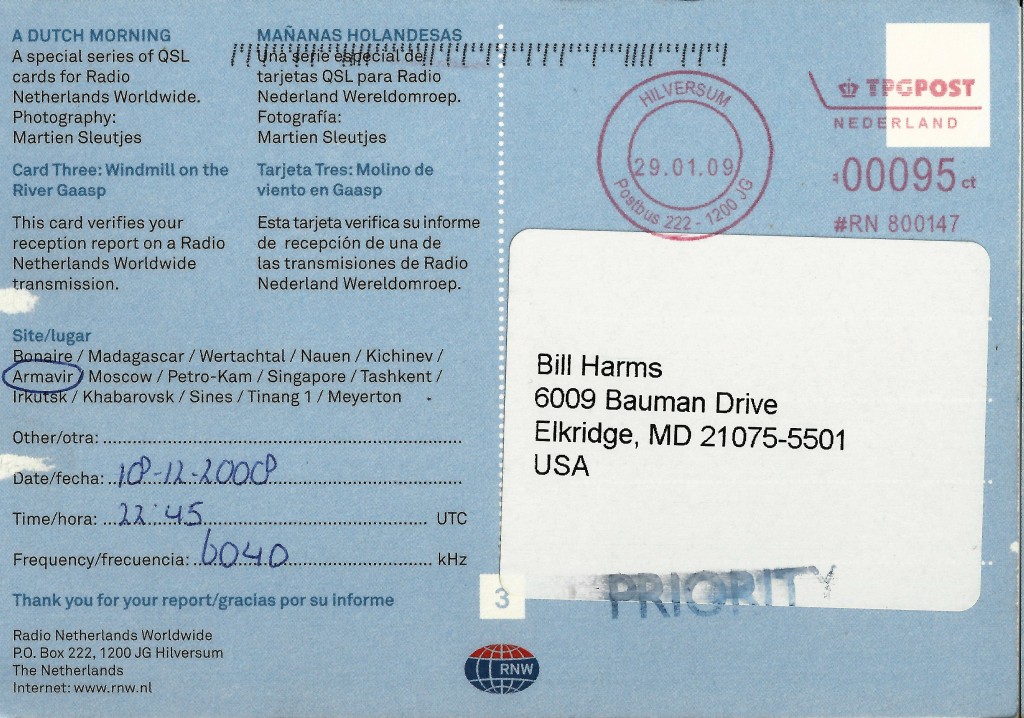
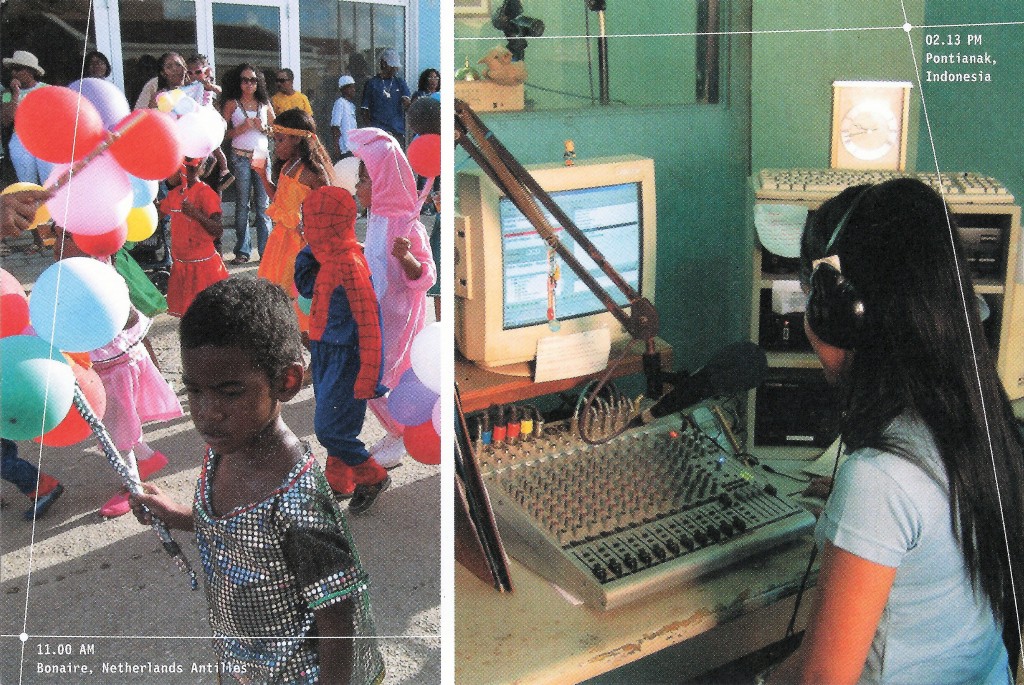
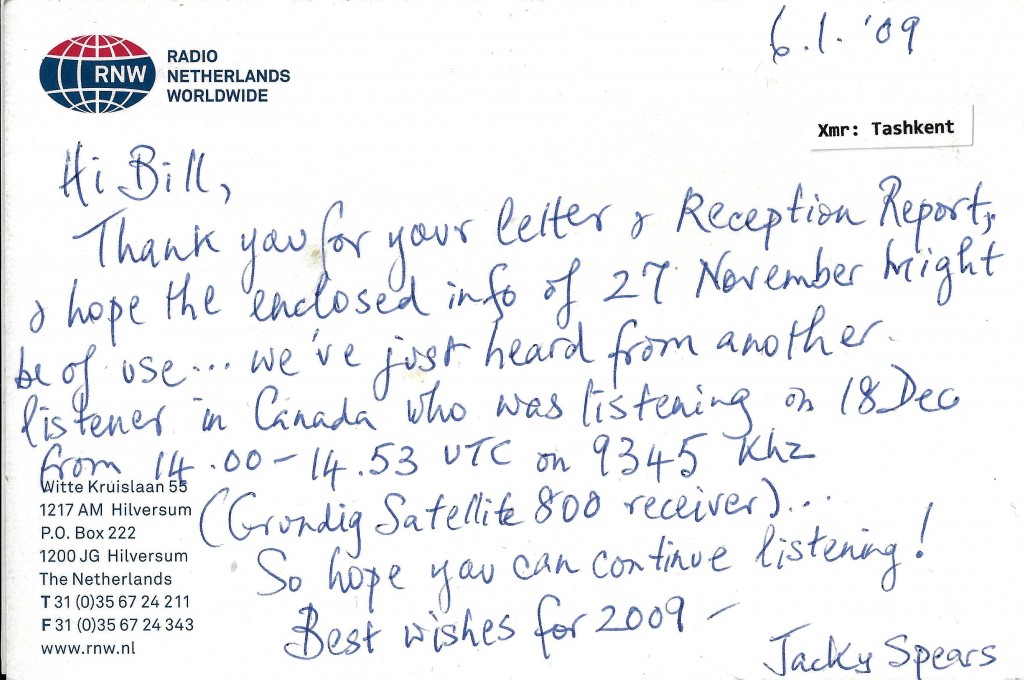
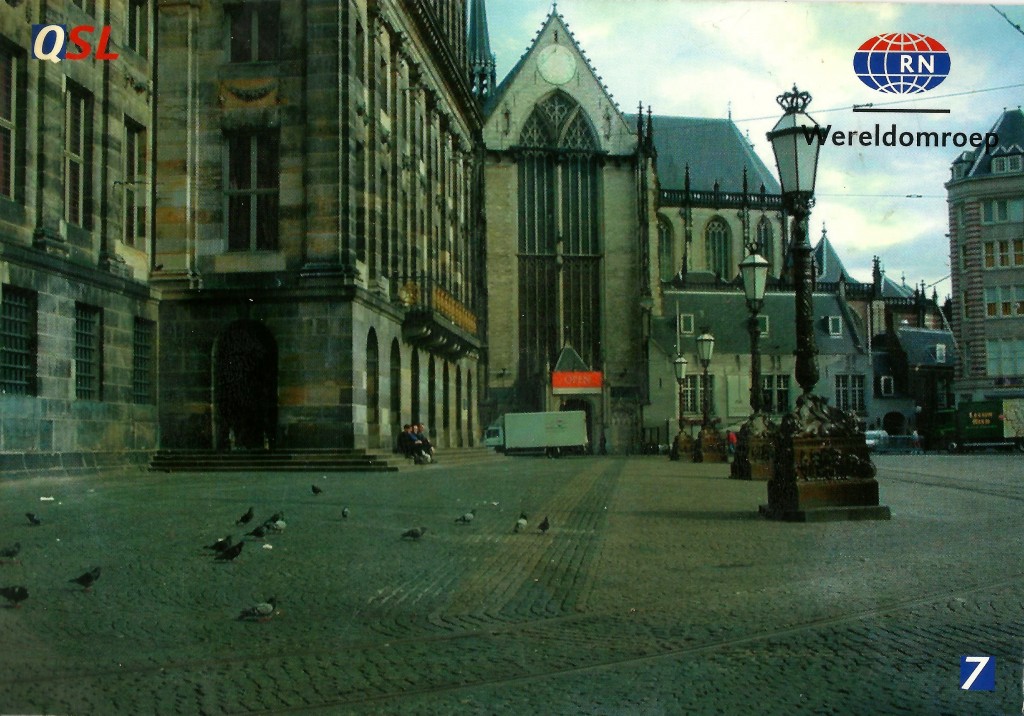
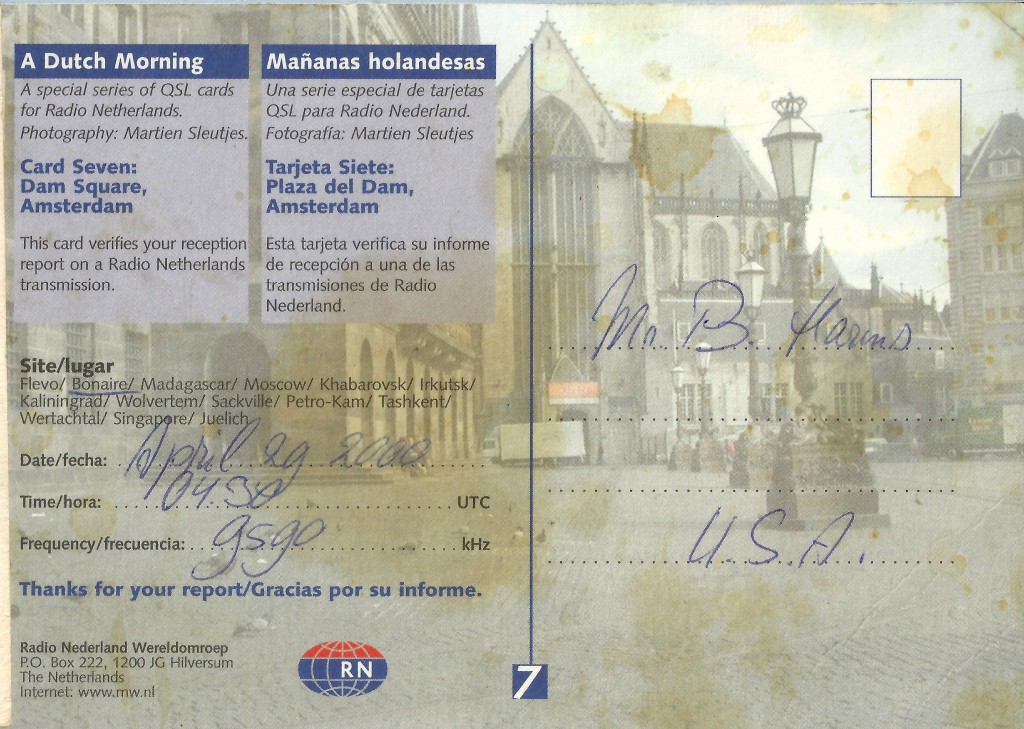
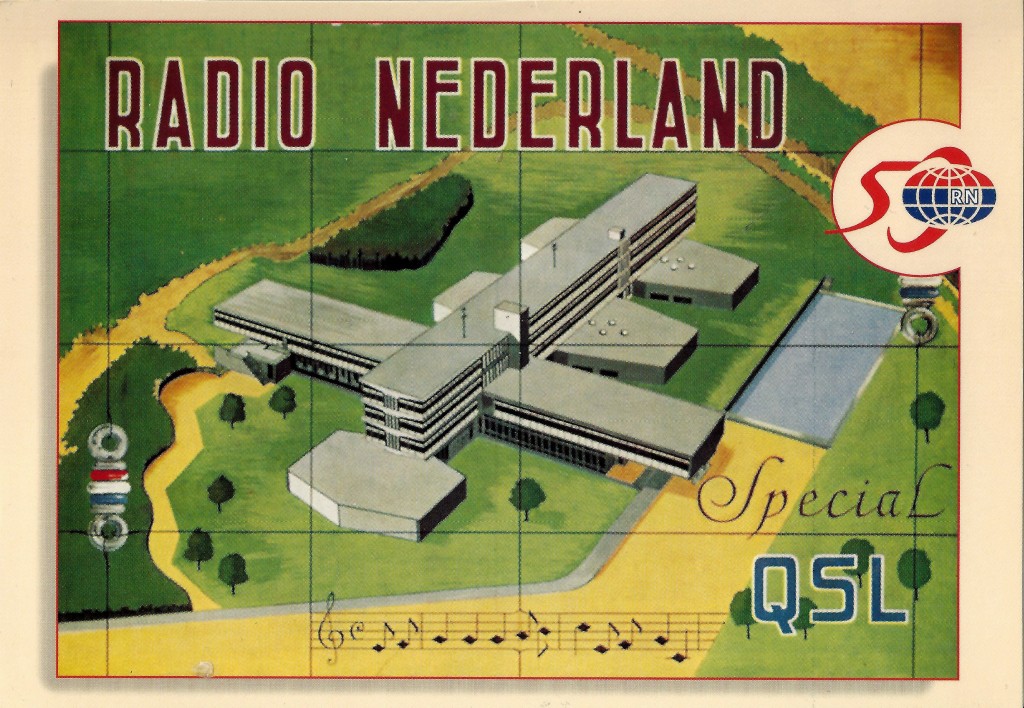
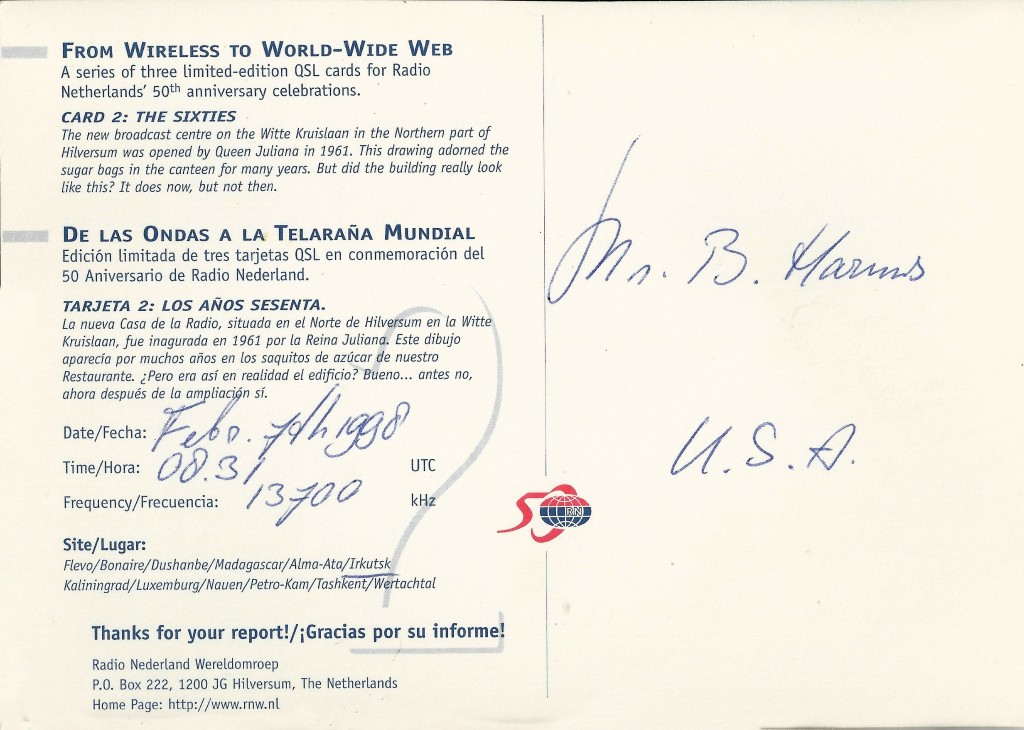
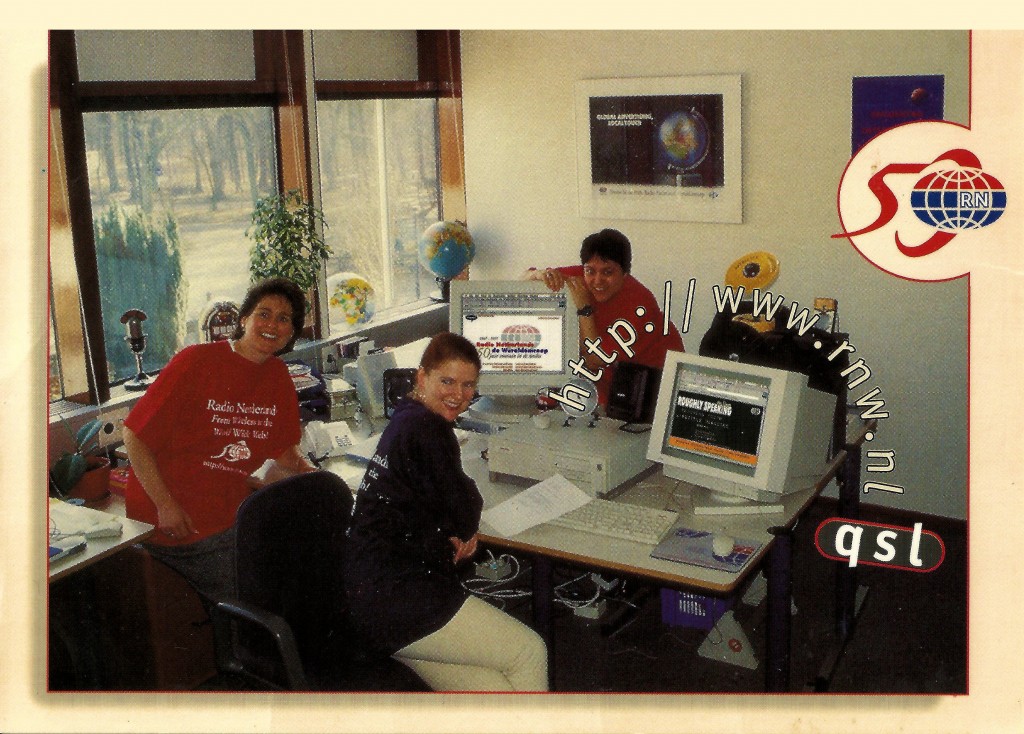
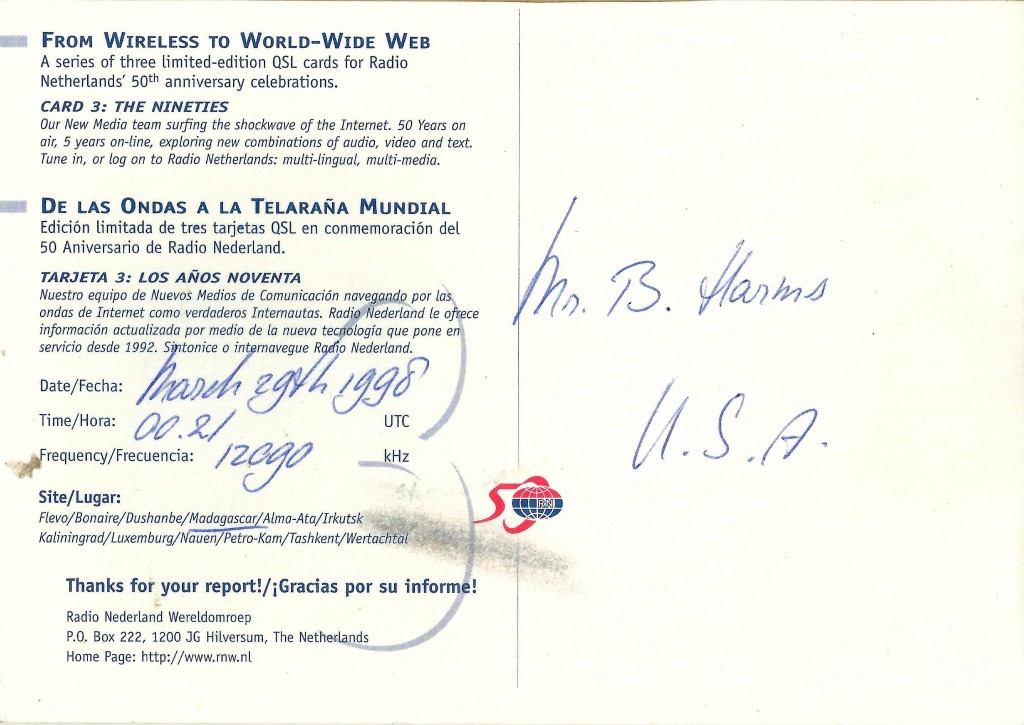
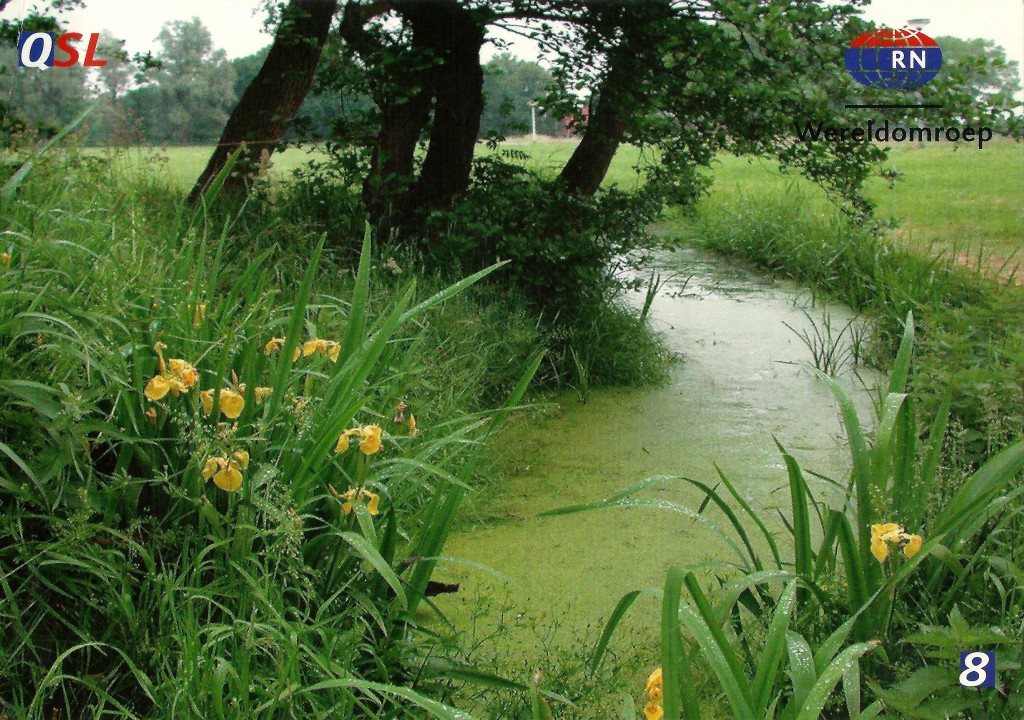
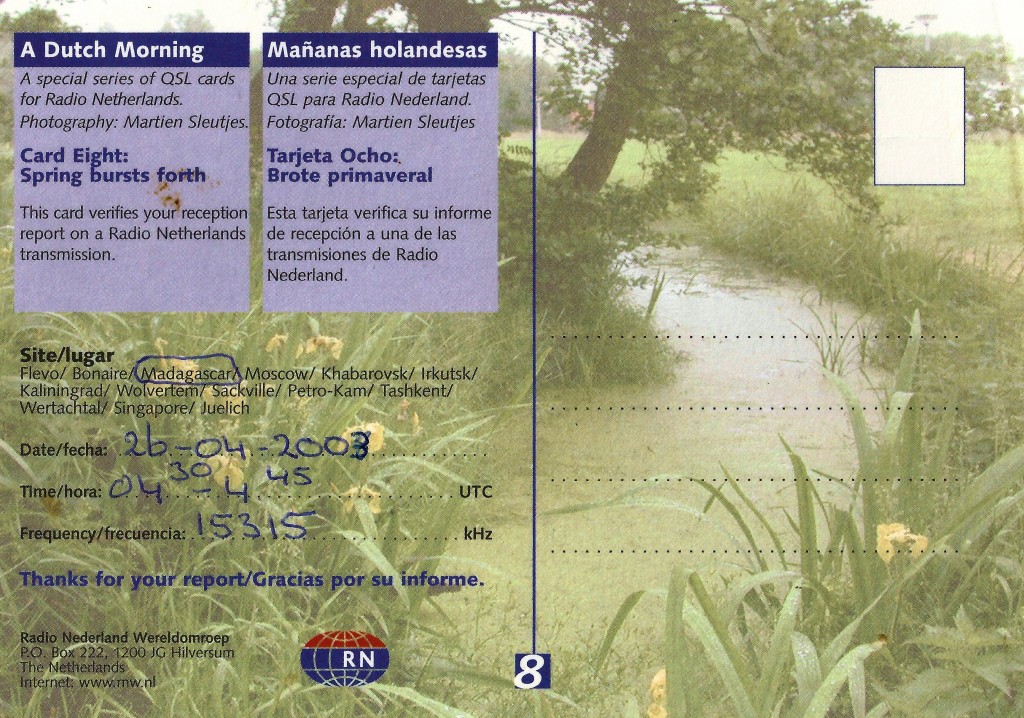
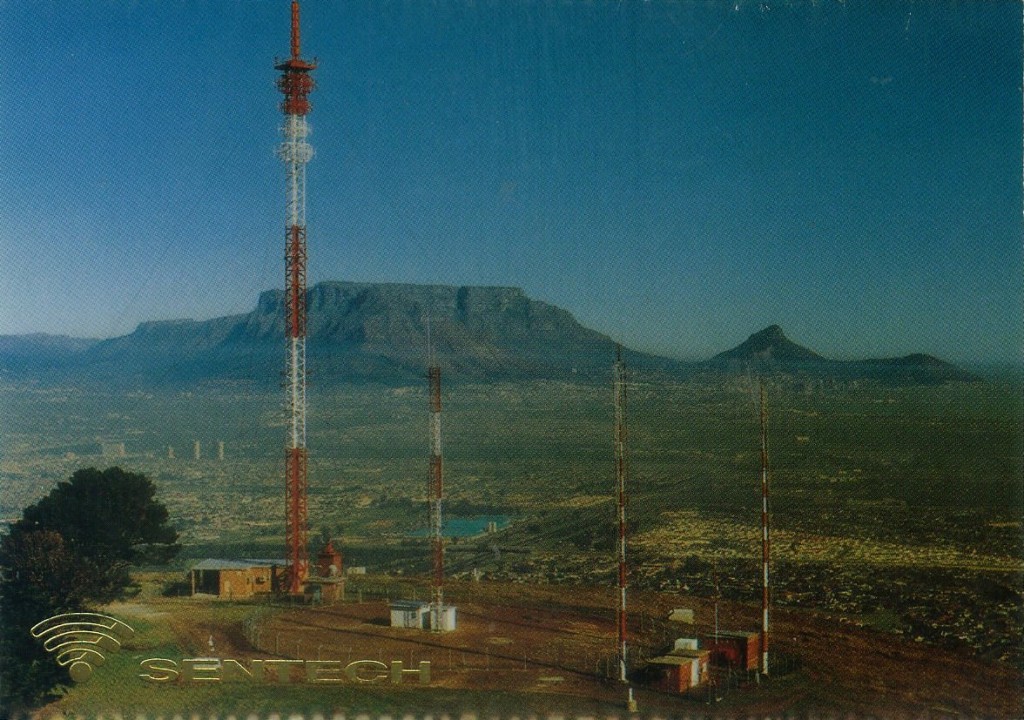
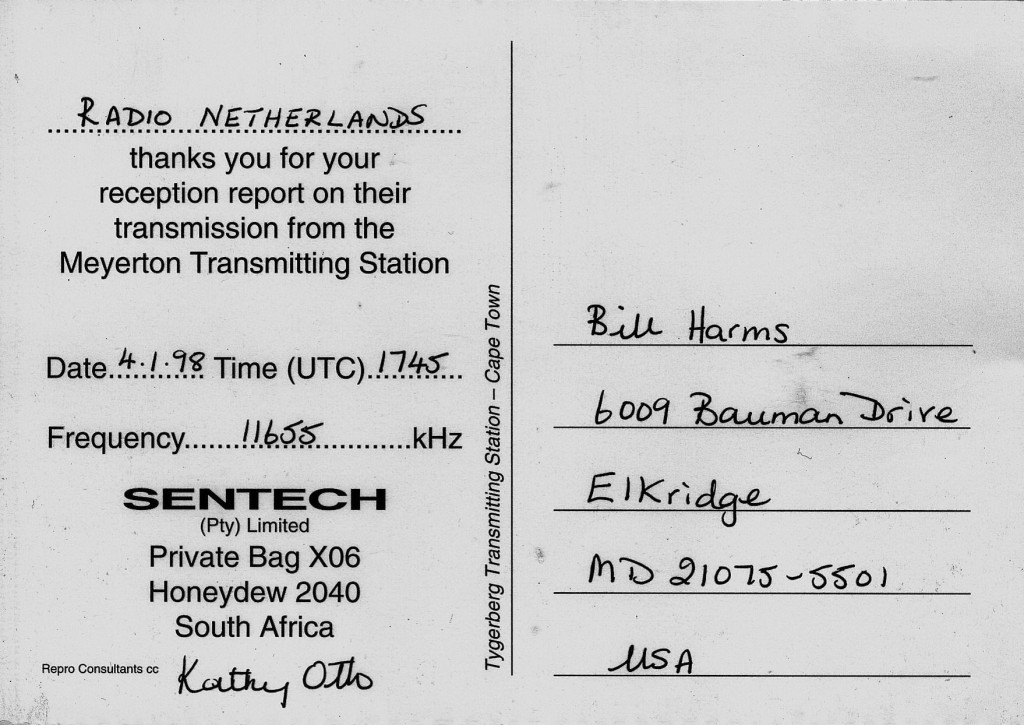
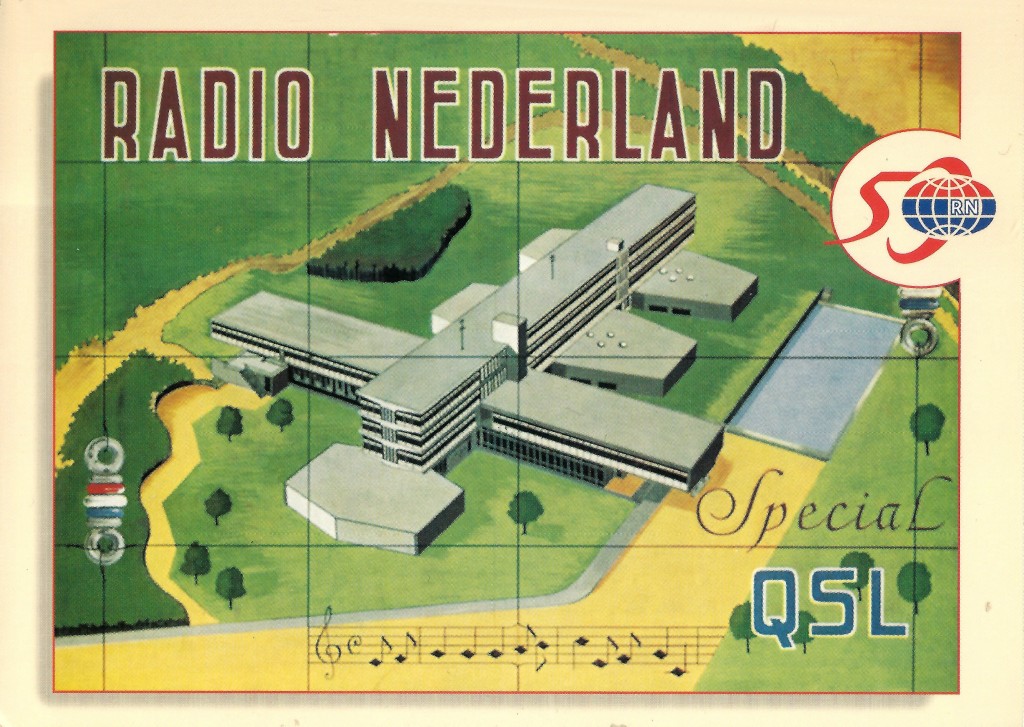
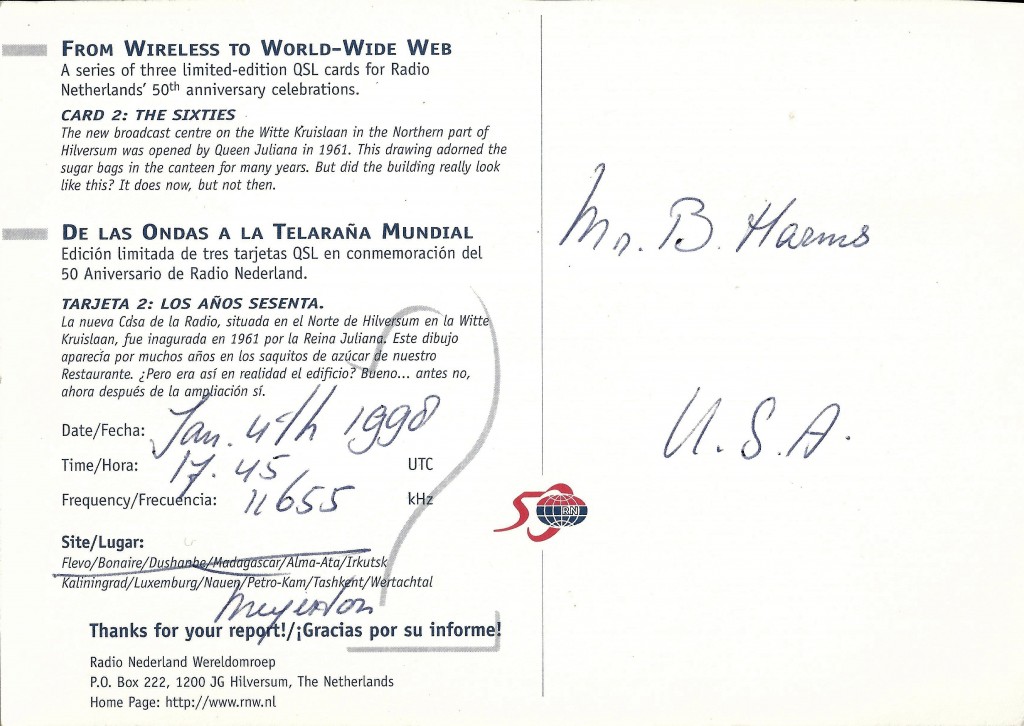
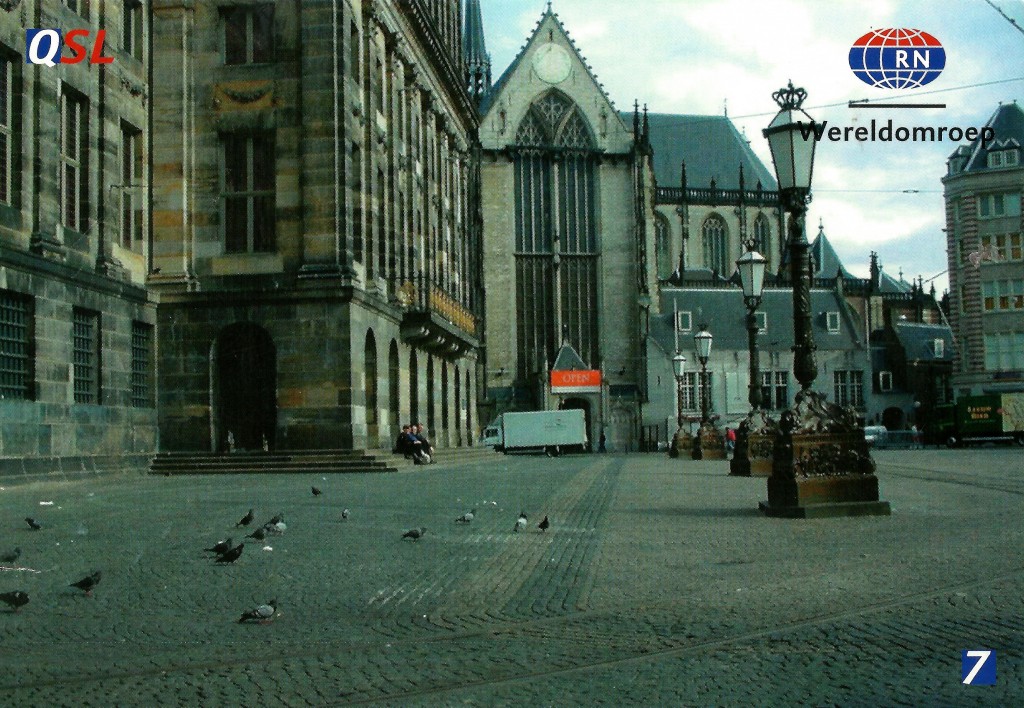
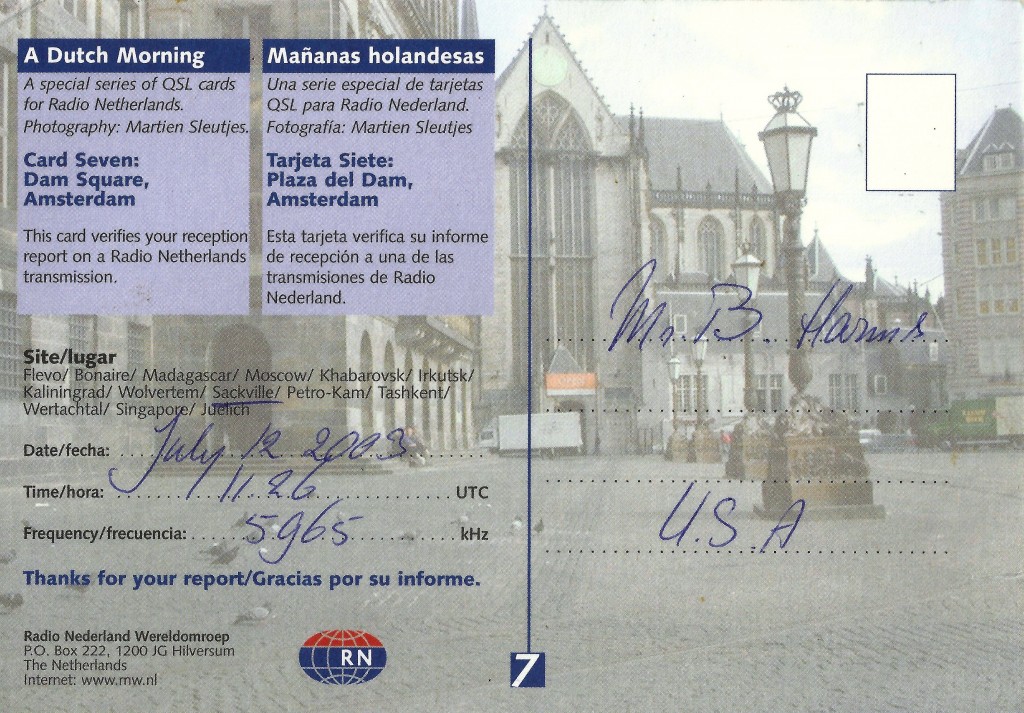
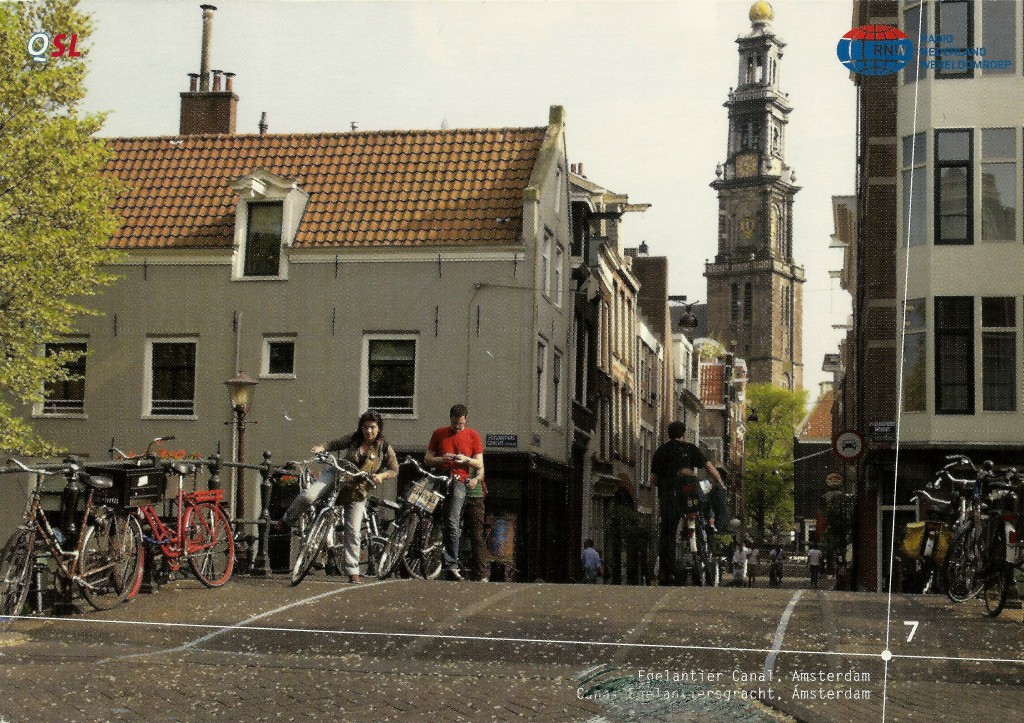
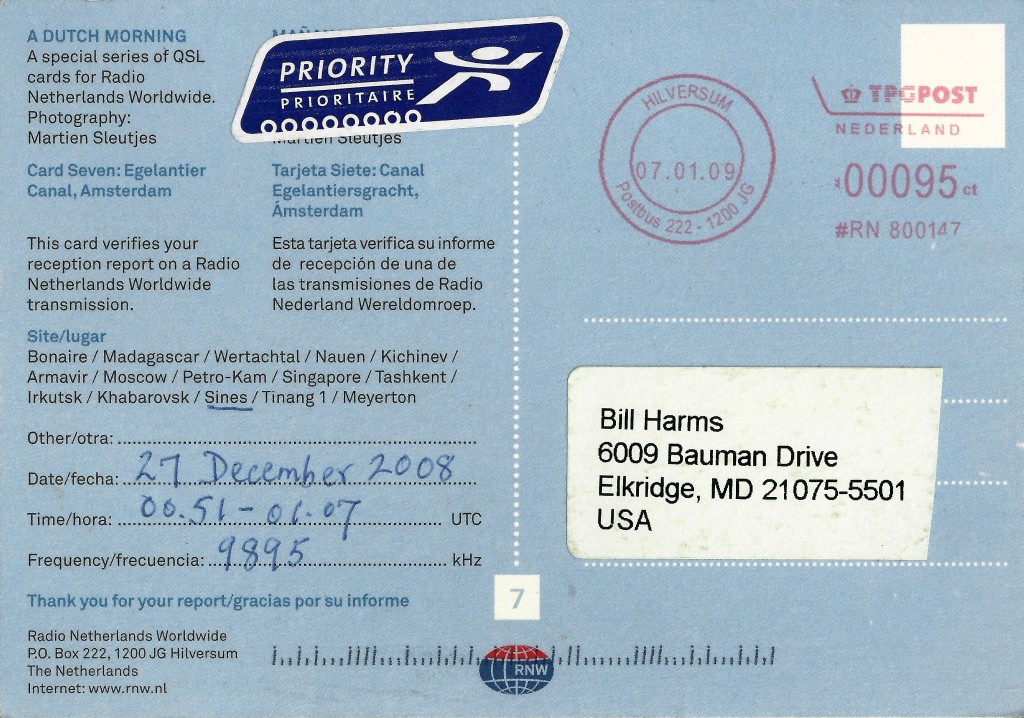
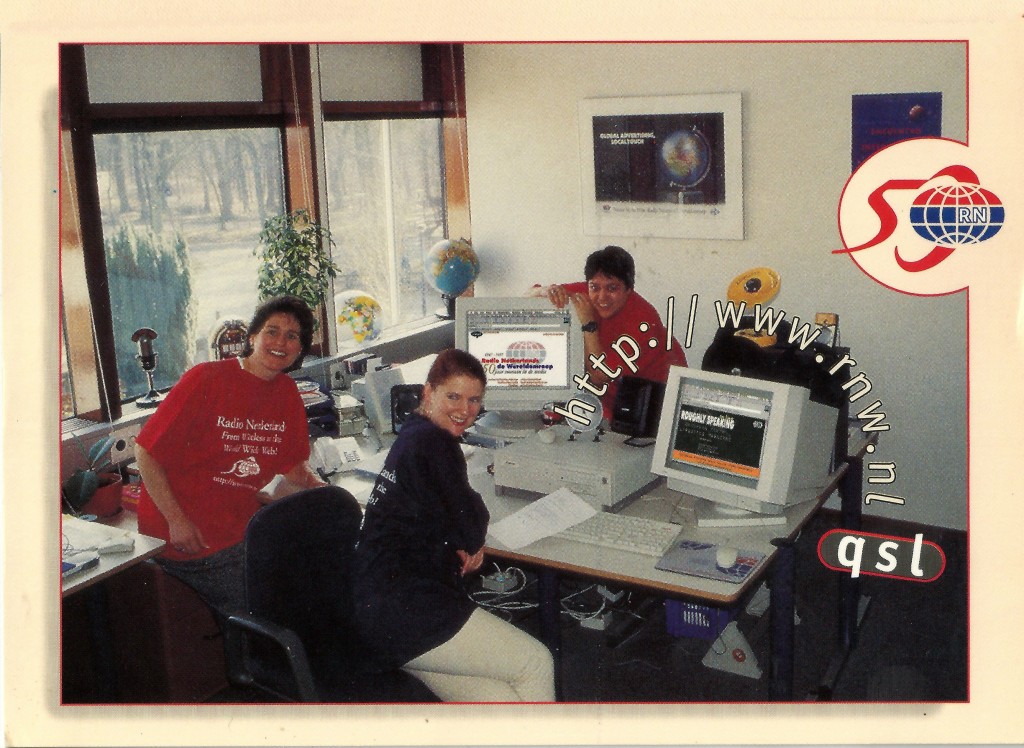
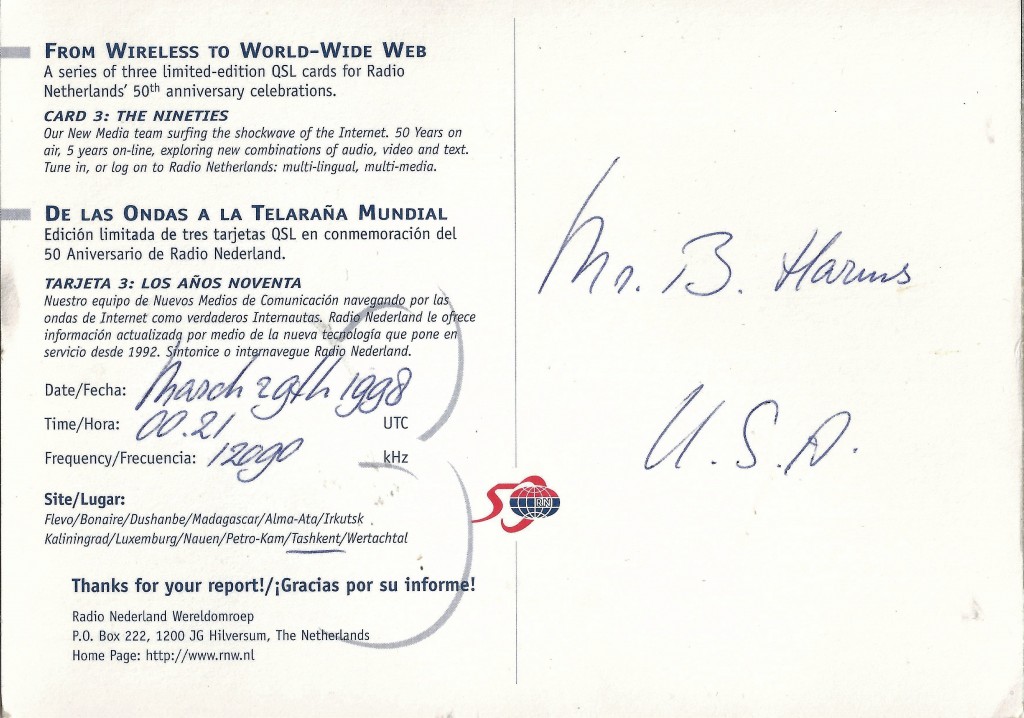
Radio Berlin International
Radio Berlin International (RBI) was the official international broadcaster for East Germany (AKA German Democratic Republic or GDR/DDR). It came on the air in May 1959 as a counter to West Germany’s Deutsche Welle. It left the air in 2 October 1990 just before German reunification. One of its transmitter sites, the one in Nauen, is still in use by shortwave broadcasters. They sent the QSLs seen below for my reception reports.
A Dear Old Friend –
Radio Australia
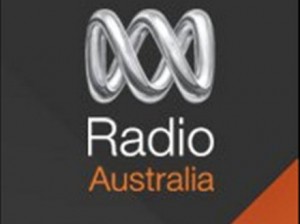 Radio Australia was a dear old friend on the shortwave bands. They were one of the first stations I heard in 1969. Perhaps it was because of their strong signal or maybe it was because of the fact they broadcast in English. Besides, imagine the mystic of hearing a radio signal from the opposite side of the world. Who can forget their Waltzing Matilda music box interval signal as well as the call of the kookaburra when they signed on?
Radio Australia was a dear old friend on the shortwave bands. They were one of the first stations I heard in 1969. Perhaps it was because of their strong signal or maybe it was because of the fact they broadcast in English. Besides, imagine the mystic of hearing a radio signal from the opposite side of the world. Who can forget their Waltzing Matilda music box interval signal as well as the call of the kookaburra when they signed on?
Listen to the interval signal here.
I listened to them in the late afternoons and early evenings when I lived in Korea beginning in the 1970’s on 9580 kHz. I liked to listen to them in the mornings before I going to work also on 9580 kHz.
Unfortunately, they signed off the shortwave bands on 31 January 2017. They still produce programs on other media such as as digital radio, digital television, podcasting, and vodcasting.
Over the years ten Radio Australia QSL cards made it into my collection, each picturing something uniquely Australian.
(Click on the thumbnails below for a larger view.)
WFYL 1180 kHz
King of Prussia
Thank you Alan Loch, Co General Manager, WFYL
WEVA 860
Emporia, Virginia
My wife and I had fun listening to WEVA 860 kHz as we drove through the Emporia, Virginia area on our February trip to Myrtle Beach, SC. Mr. Lucy, the station manager sent this friendly QSL letter for my reception report.
Radio Liangyou – FEBC
Philippines
I spent several weekends monitoring 9345kHz until I got a readable signal of this broadcast. (1400 UTC is during my work day Mon-Fri.) On 24 March, the signal was strong enough to hear some decent audio for a report. Radio Liangyou in Hong Kong, the producer of this broadcast, sent this QSL card for my reception report. As noted on the card, the station was FEBC (The Far East Broadcasting Corporation) using a transmitter in Iba, Philippines.
WRDW 1630 kHz
Augusta, Georgia
This verification from WDRW 1630 is today’s fifth QSL. Kent Dunn, Vice President and General Manager of the station sent annotated the bottom of my reception report (seen below). According to Radio Insight, WDRW went silent on 19 April 2019.
Radio Taiwan International
on Shortwave
Radio Taiwan International (RTI) sent a QSL for their English language service to Southeast Asia on 12,100 kHz. This is today’s fourth QSL. RTI is Taiwan’s current international broadcaster and has been on the air since 2002 when they were called Radio Taipei International. Reception of RTI is difficult here on the East Coast of North America.
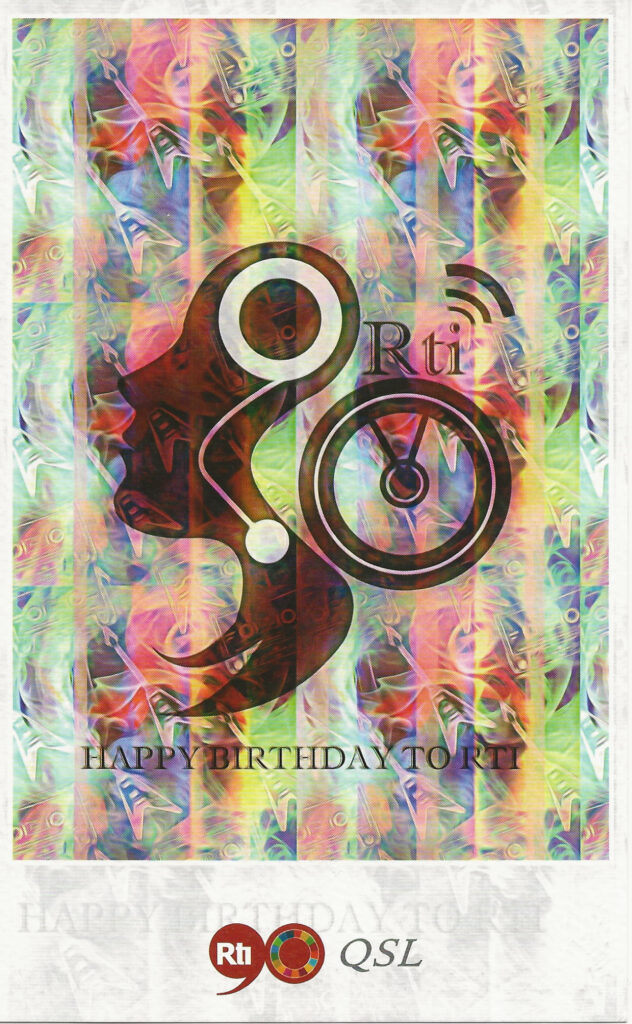
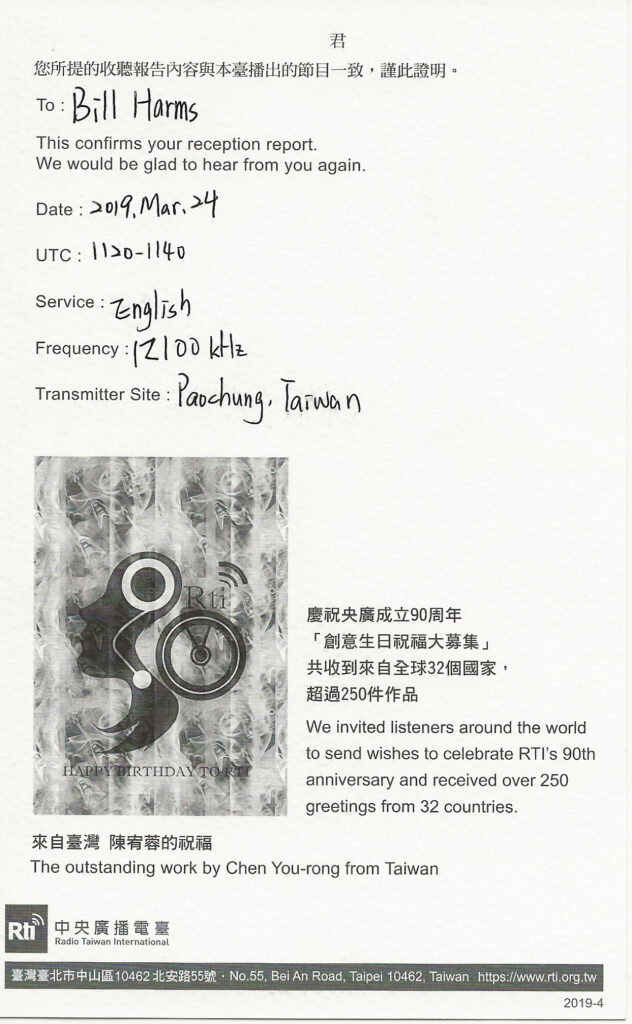
JOSF 1332 kHz
Tokai Radio Broadcasting
Nagoya
Today’s number three. Tokai Radio Broadcasting (TKB) sent this QSL for a report of JOSF 1332. Reception was made on the ArcticSDR in Norway. I sent an unanswered report to them in the 1990’s and this is their answer to my follow-up.
JOFR 1278 kHz
RKB Mainichi Broadcasting Corporation
This is number two today. RKB Mainichi Broadcasting Corporation sent this QSL for a report of JOFR 1278 kHz. Reception was made via the ArcticSDR. Over the years I sent three previous reports (one in 1976 and two in the 1990’s). Really happy with this one.
Radyo Denge Welat
Pridnestrovsky Radiotelecentr
Today I won the pick five with five QSLs showing up. The first one was Radyo Denge Welat via Pridnestrovsky Radiotelecentr on 11530 kHz. The report was sent directly to the transmitting station and an email QSL was in my email box three days later.
WHAG-AM 1410 kHz
Halfway, Maryland
I received this response from Alpha-Media Radio Group for a reception report (and follow-up) for WHAG-AM 1410. The report included a request to verify my reception by letter on their letterhead or by QSL Card if they had them. I sent $2 and a self-addressed stamped envelope for postage and handling. I used the “I want to make a connection with you” approach. Does this explain why many stations do not reply to reception reports?
I wonder if somehow the shorthand phrase “QSL” has a poor connotation with some radio station folks. That could be understandable, if the perception that DXers have no interest in their station other than receiving a precious QSL. I admit may have come across that way to station personnel at times. Maybe a change in approach is needed. Something I have been trying lately is to state something to the effect that I am happy to be part of their audience even if it is from a distance and for short time and completely avoid the use of QSL in the report. The report ends up being, “hey I heard your station, and it was a great experience. I like to make connections with radio stations I hear and would love to hear back from you.” And ask them questions about their station.Remember that stations don’t have to reply, and they are actually doing DXers a favor.
What do you think?
Radio Taipei International
Radio Taipei International (RTI) was an international broadcaster from Taiwan from the late 1990’s to 2002. RTI sent this QSL for my reception report of their broadcast via WYFR, Okeechobee, Florida. I don’t think I heard them with this moniker transmitting directly from Taiwan. In 2002, they changed their name to Radio Taiwan International, which is what they are currently called.
AFN – Tokyo
810 kHz
This QSL certificate from America Forces Network (AFN) – Tokyo on 810 is the first QSL in my collection received as an MS .pub (Publication) file. The reception was made via the AcrticSDR in Kongsfjord, Norway. Thank you to TSgt USAF DMA AFN (USA) Candace L. Reese for taking the time to prepare and send the QSL via email.
This is also the first response I have had from the US Forces Radio station on 810 kHz in Tokyo after sending an unanswered report to FEN Tokyo 43 years ago for their 810 outlet.
Voice of Asia
Taiwan
The Voice of Asia was an external broadcasting service of Taiwan which transmitted programs in English, Mandarin, Thai, and Bahasa Indonesia to Asia until 2002 when it was absorbed by Radio Taipei International. So far I have not found a date the station started its broadcasts, but it seems to have been on the air in the early 1980’s. Reception was on the difficult side on the East Coast of North America, but I did manage to hear them in Germany and in Korea.
5AN 891 kHz
ABC Adelaide
This e-QSL for 5AN 891, ABC Adelaide, popped into my email box just an hour or so ago. The reception was made via the ArcticSDR in Kongsfjord, Norway. Thank you to Graham Himmelhoch-Mutton for taking the time to answer my email and sending this QSL.
HLQS 1485 kHz
KBS Gongju First Radio
When we lived in Korea, I prepared several QSLs for Korean radio stations, in particular the local KBS stations, to sign and send back. Below you can see one that I received from KBS Gongju First Radio (KBS 공주 제1 라디오) for a Korean language reception report. The transmitted on 1485 kHz.
I had good luck with this approach with the stations I tried it with.
The translated text of the QSL is found below the images. The card was postmarked at the Gongju Post Office.
RECEPTION VERIFICATION
This verifies that Mr. Bill Harms received KBS Gongju Radio 1 as follows:
- Station name (Callsign): HLQS
- Transmitter Location: 571, Seongwang-dong, Gongju City
- Reception Date: 12 April 1991
- Reception Time: 12-13 KST
- Frequency: 1485 kHz
QSL
- Signed: Signature illegible.
Voice of Free China
The Voice of Free China (Chinese: 自由中國之聲; pinyin: Zìyóu Zhōngguó Zhīshēng) was the international broadcasting station of the Republic of China from 1949 until 1998. They sent the QSL cards below for my reception reports.
JOQR 1134 kHz
Nippon Cultural Broadcasting, Inc.
Tokyo
HAPPY HAPPY JOY JOY! Finally received a QSL for JOQR 1134 kHz (Nippon Cultural Broadcasting, Inc. in Tokyo) after two previous reports for receptions made in Korea from 43 years ago and 25 years ago went unanswered. This reception was made on the ArcticSDR in Kongsfjord, Norway. Happy about this one.
CBS
Central Broadcasting System of the Republic of China
Founded in 1928, the Central Broadcasting System was a broadcasting organization which broadcast mainly to Taiwan and the Mainland China in Mandarin and other Chinese dialects. In 1996, it was dissolved when it merged with the Voice of Free China and became part of the Broadcasting Corporation of China. The first card below is for a reception made in Spokane, Washington. The other three were made in Seoul, Korea.
JOUC NHK-2 1377 kHz
Yamaguchi
Non-verie Verification
NHK in Yamaguchi sent this letter with a nice photo of their studio for a reception report of JOUC, their NHK-2 outlet on 1377 kHz. The reception was made via the ArcticSDR in Kongsfjord, Norway. They said they are happy to hear that I was able to hear their station at a distant place but it is against their company policy to issue any kind of verification, and they apologized. I am at a loss to figure this out. On one hand, they acknowledge that I heard their station, but at the same time, they cannot issue a verification. Any thoughts anyone?
Radio Dublin International
Radio Free Asia
RFA (Radio Free Asia) is a great verifier. Over the past few years, several of their QSL cards have made it into my collection. They issue a new QSL once every four months. DXers can send reception reports to RFA’s web form at http://techweb.rfa.org/ or via email to qsl@rfa.org Their postal mail address is Radio Free Asia; 2025 M Street N.W., Suite 300; Washington, DC 20036; USA
NOTE: The reception for the HLAZ Jeju, Korea QSL was made via the Arctic SDR in Kongsfjord, Norway.
South East Asia Radio Voice – SEARV
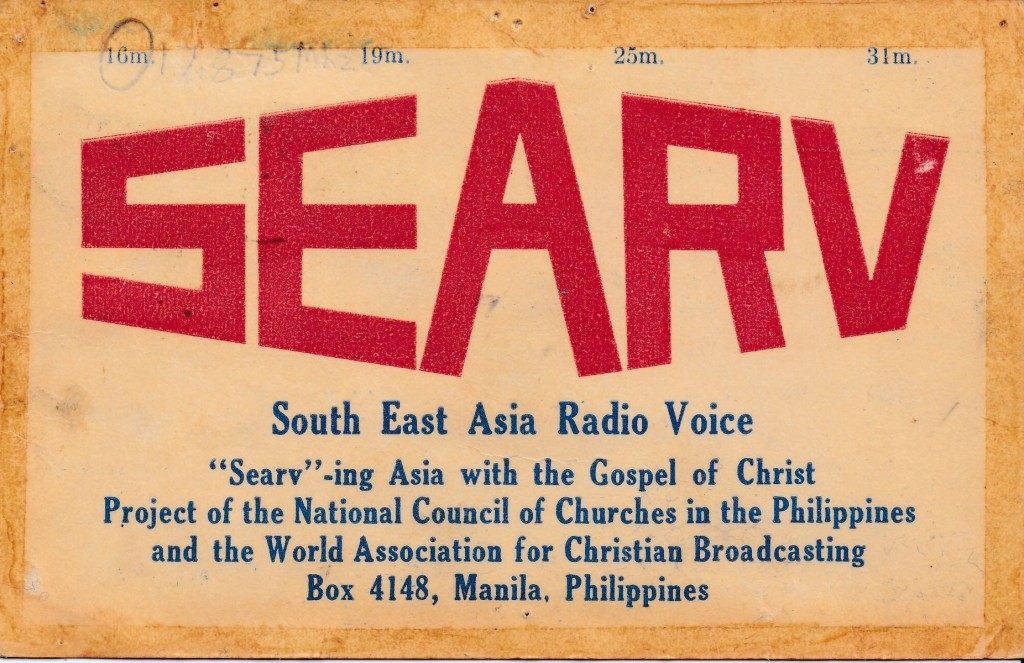 I have not been able to find much information about South East Asia Radio Voice. From what I understand, it came on the air in 1965 and was widely heard testing. I remember tuning across the bands one afternoon in 1970 and hearing their signal booming in. They requested reception reports and I got this one in return for my report. As you can see the QSL was well loved.
I have not been able to find much information about South East Asia Radio Voice. From what I understand, it came on the air in 1965 and was widely heard testing. I remember tuning across the bands one afternoon in 1970 and hearing their signal booming in. They requested reception reports and I got this one in return for my report. As you can see the QSL was well loved. 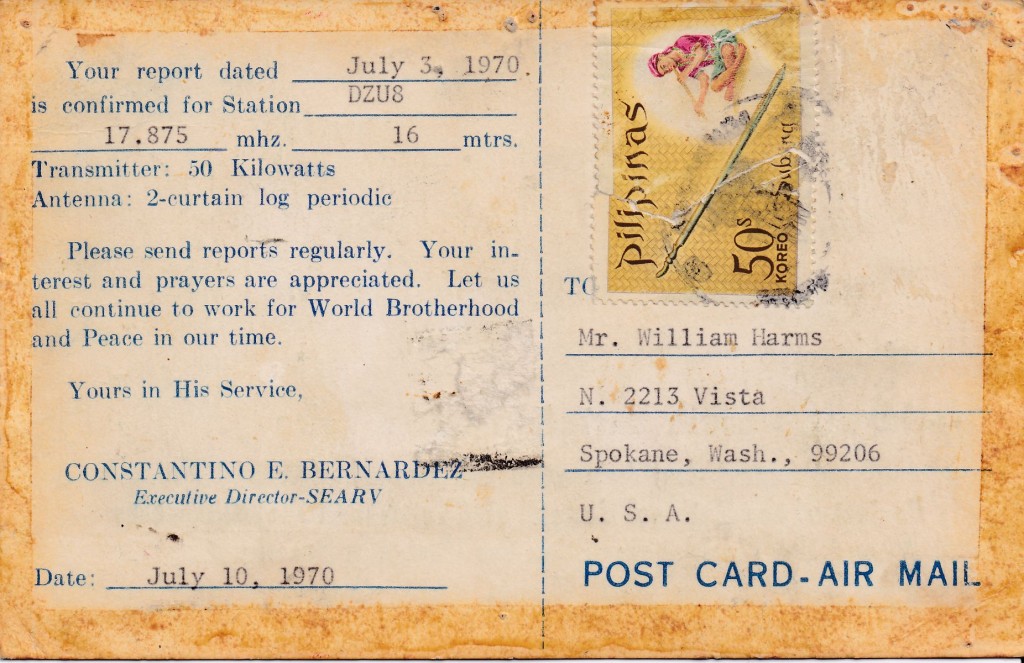
PPE 10 MHz
Observatório Nacional
Rio de Janeiro, Brazil
This QSL card and a brochure for radio station PPE on 10 MHz at the Observatório Nacional in São Cristóvão near Rio de Janeiro, Brazil arrived today in the mail. Thank you to Ricardo José de Carvalho, Chefe da Divisão do Serviço da Hora for taking the time to sign and send this card. It is the 18th QSL from a time and frequency station in my collection.
Xinjiang People’s Broadcasting Station
新疆人民广播电台
5800 kHz
Xinjiang People’s Broadcasting Station (新疆人民广播电台, Xīnjiāng Rénmín Guǎngbō Diàntái) is the name of a radio station which broadcasts from Urumchi, China. They broadcast programs in Uyghur, Chinese, Mongolian, and Kazakh languages. They were heard in Spokane, Washington in 1980, and replied with the all Chinese language QSL card and letter below. I cannot read Chinese, but a friend who does told me that they did indeed verify my reception report for their transmission on 5800 kHz.
Heilongjiang People’s Broadcasting Station,
Harbin, China
4915 kHz
Heilongjiang People’s Broadcasting Station in Harbin, China was a shortwave re-broadcaster on 4915 kHz. The name of the station in Chinese is 黑龙江人民广播电台 (Pinyin: Hēilóngjiāng Rénmín Guǎngbō Diàntái). The station’s successor Long Guang (Chinese: 龙广 Pinyin: Lóngguǎng) or Dragon Broadcaster in English does not broadcast on shortwave. I heard this station regularly on the West Coast of the USA around 1980. I sent a report to the Central Broadcasting Station in Beijing and they responded with the QSL card below.
For radio country counters, this station was located in the Manchuria portion of China (NASWA), a country that no longer has a shortwave station from what I understand.
Radio Omdurman
Sudan National Broadcasting Corporation
Radio Omdurman, the international service of Sudan National Broadcasting Corporation was occasionally active on the shortwave bands over the years. They responded with the mimeograph QSL form letter below for my reception report in 1986.
According to short-wave.info, Sudan is still on the air on 7205 kHz as Sudan Radio and on 9505 kHz as the Voice of Africa. Thank you to Dan Robinson for the information.
Radio St. Helena Day
Special Broadcast
Almost every year from the 1990’s to 2009, Radio St. Helena broadcast a special program over shortwave. The event was called St. Helena Day. DXers throughout the world anxiously waited to hear the signal from this station. I heard them five or six times over the years and this was the only QSL I received from them.
Rare QSL
KBS Daegu
2510 kHz
I’m not exactly sure how one would quantify the rarity of QSLs, but this one surely ranks high on any rarity scale. Back in December 1977, I caught a signal emerging on 2510 kHz in Korean. After a few moments, I discerned the identification: “KBS Daegu, HLKG.” Instantly, I felt compelled to send them a reception report. Several weeks later, a warmly handwritten QSL letter arrived from Mr. Oh Kap-hwan, the TV transmitting engineer at KBS Daegu. He expressed his surprise as their station typically didn’t handle QSL cards, but rather the main station in Seoul did. Nonetheless, to me, it remains a remarkable QSL.
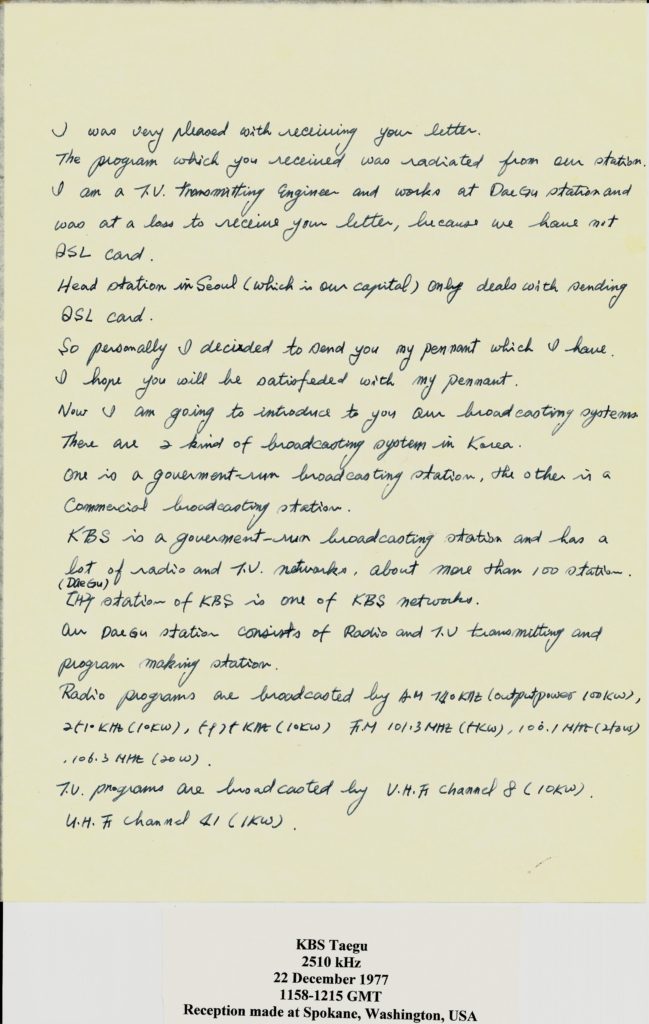
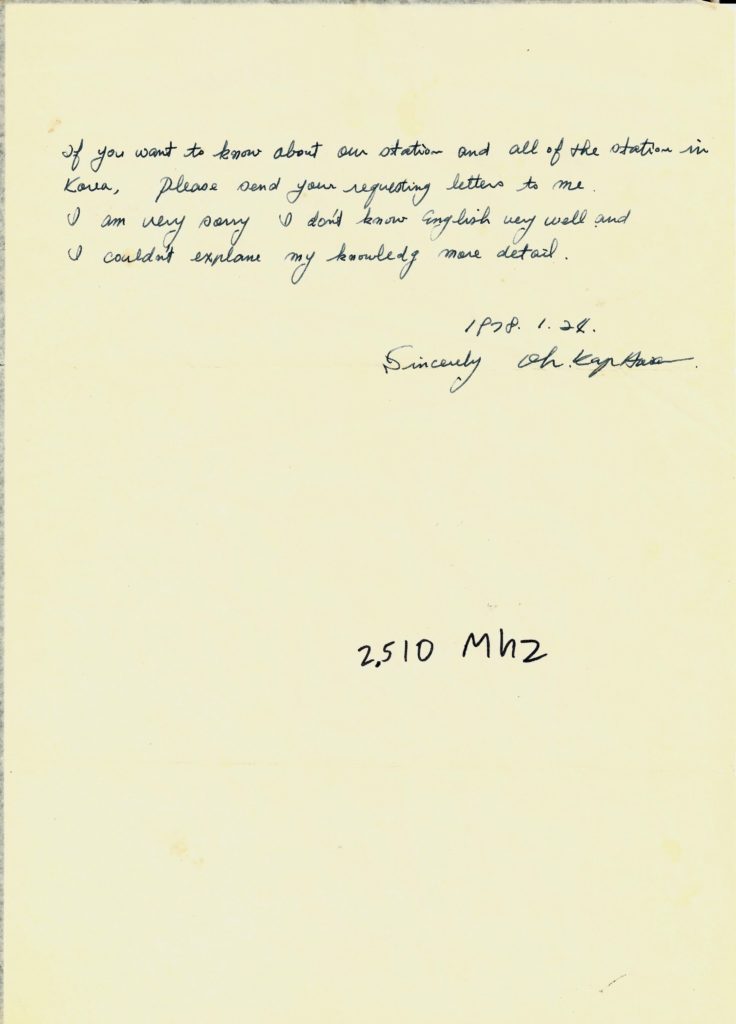
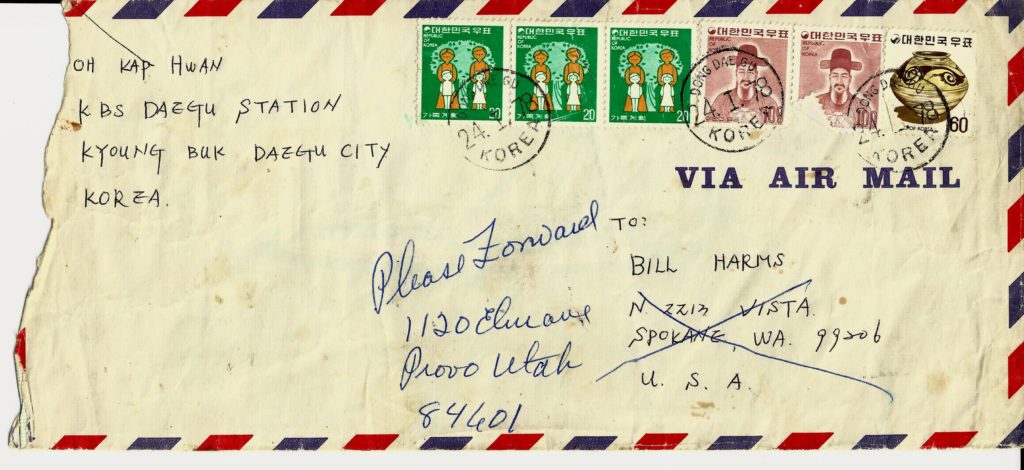
WJHR
15550 kHz
Milton, Florida
WJHR is a Christian broadcaster from Milton, Florida. They transmit on 15,550 kHz using SSB mode. They sent a package of various printed materials including a photo of the station’s transmitter for my report.
WRNO World Wide –
The Rock of New Orleans
WRNO, known as the Rock of New Orleans, debuted its rock format in February 1982 under the stewardship of Joseph Costello III. Initially featuring its own unique programming, the station later incorporated content from its counterpart, WRNO-FM 99.5. Alongside airing religious and political broadcasts, WRNO served as the shortwave platform for notable shows like the Rush Limbaugh Show and coverage of the New Orleans Saints Football Team. Among its roster of lessees was Radio Earth.
After facing a setback due to a damaged transmitter, WRNO went off the air for a span of years. In 2001, the station found new ownership in the hands of Good News World Outreach, though efforts to restore operations were hindered by Hurricane Katrina’s impact on the antenna. It wasn’t until 2009 that WRNO began broadcasting regularly once more, now accessible on 7505 kHz.
Notable memorabilia from WRNO’s history includes various QSL cards and a special listener certificate personally endorsed by Mr. Costello. Below, you’ll find examples of these QSL cards issued in response to reception reports, alongside a unique Rush Limbaugh QSL and the aforementioned charter listener certificate.
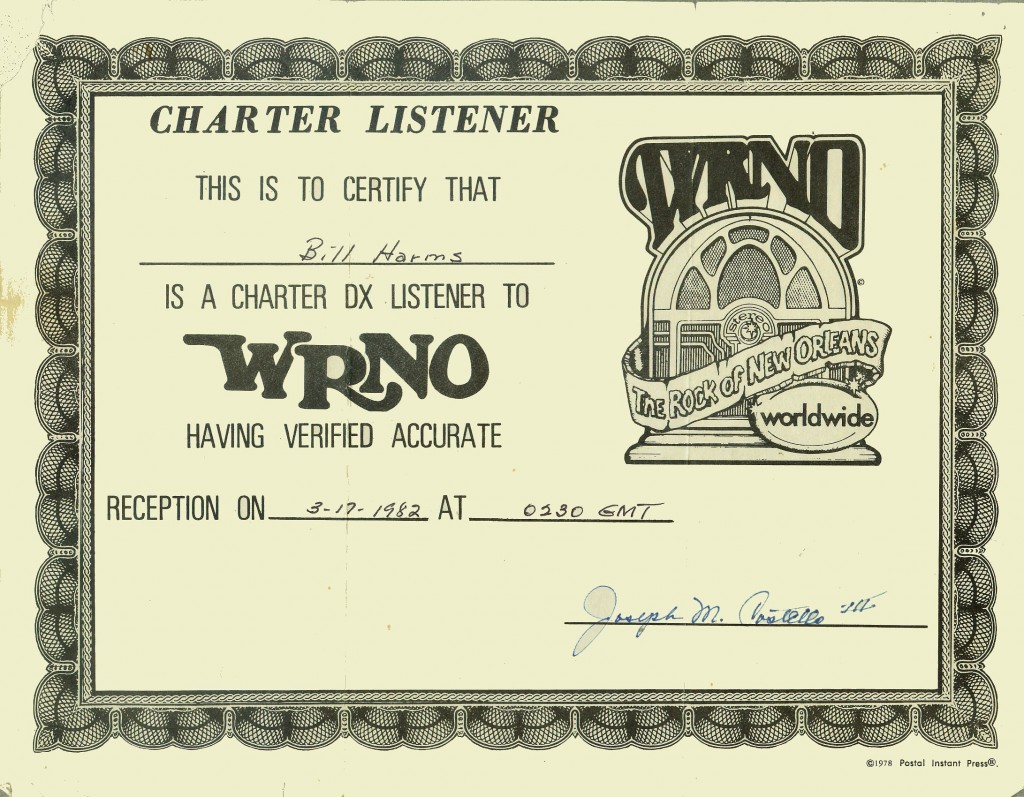
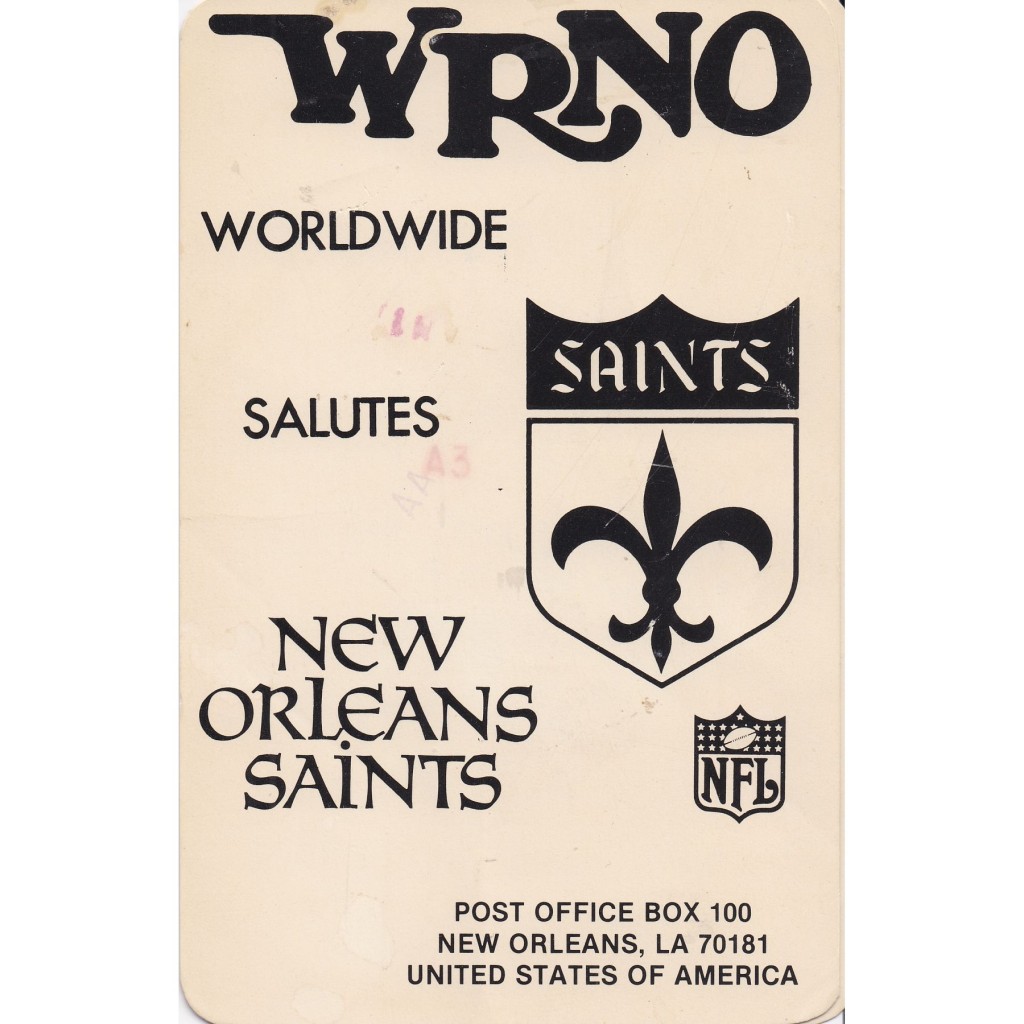
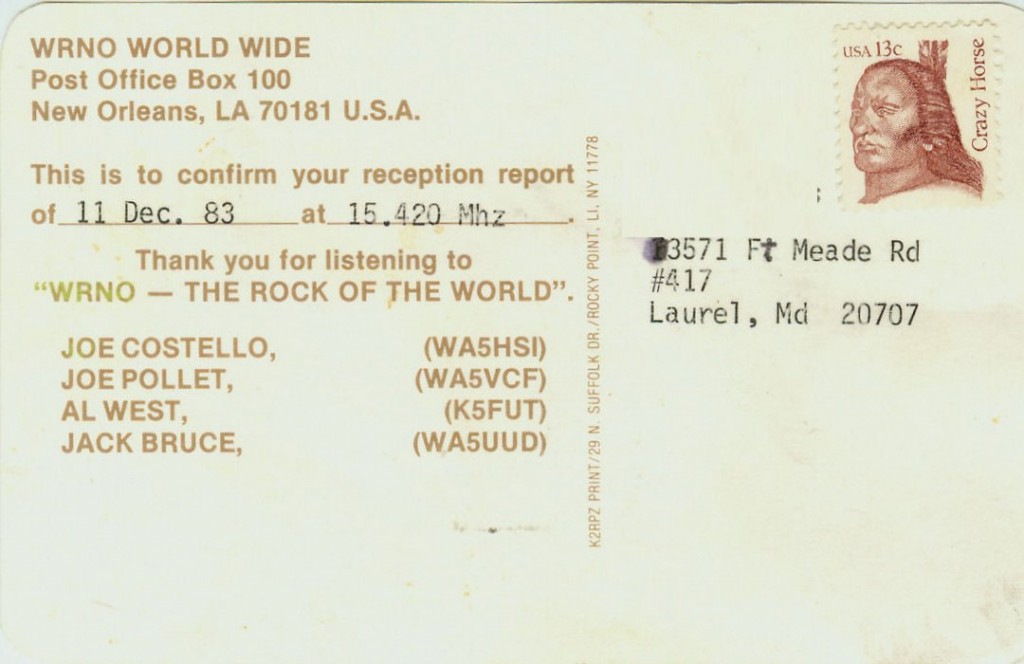
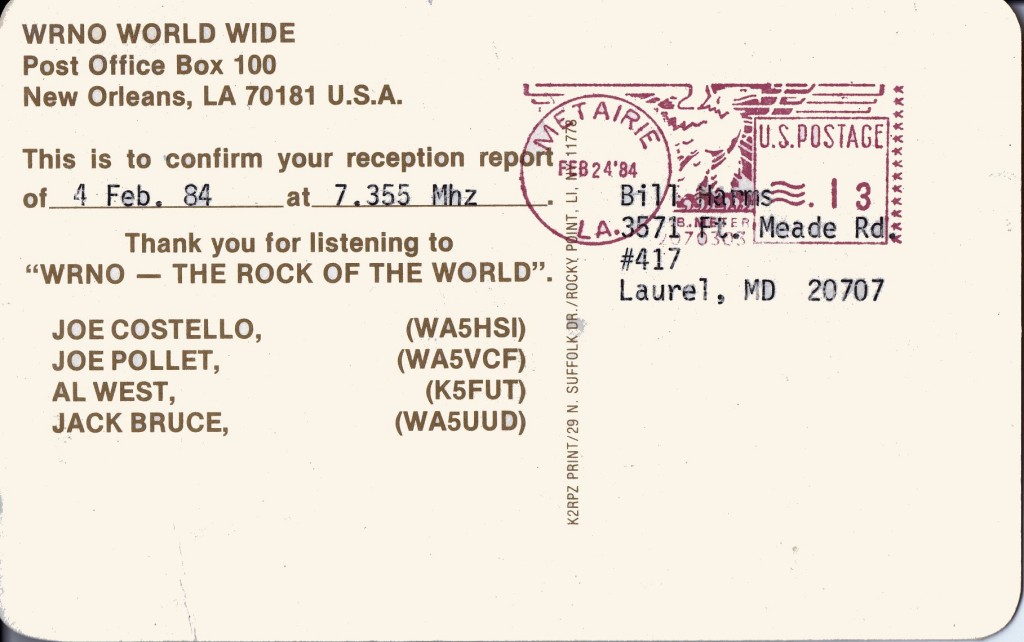
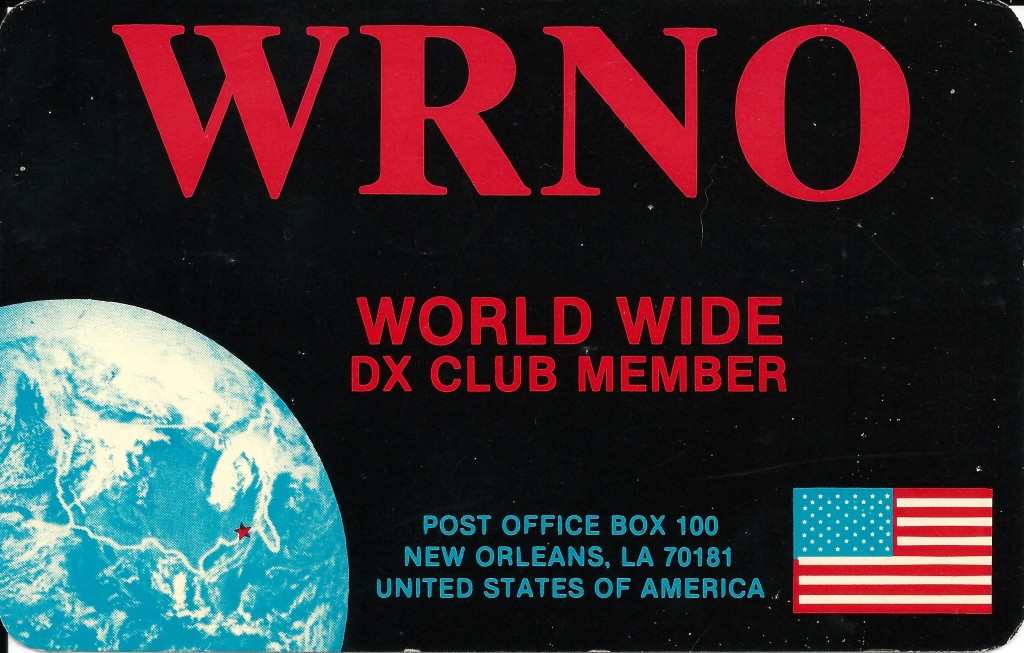
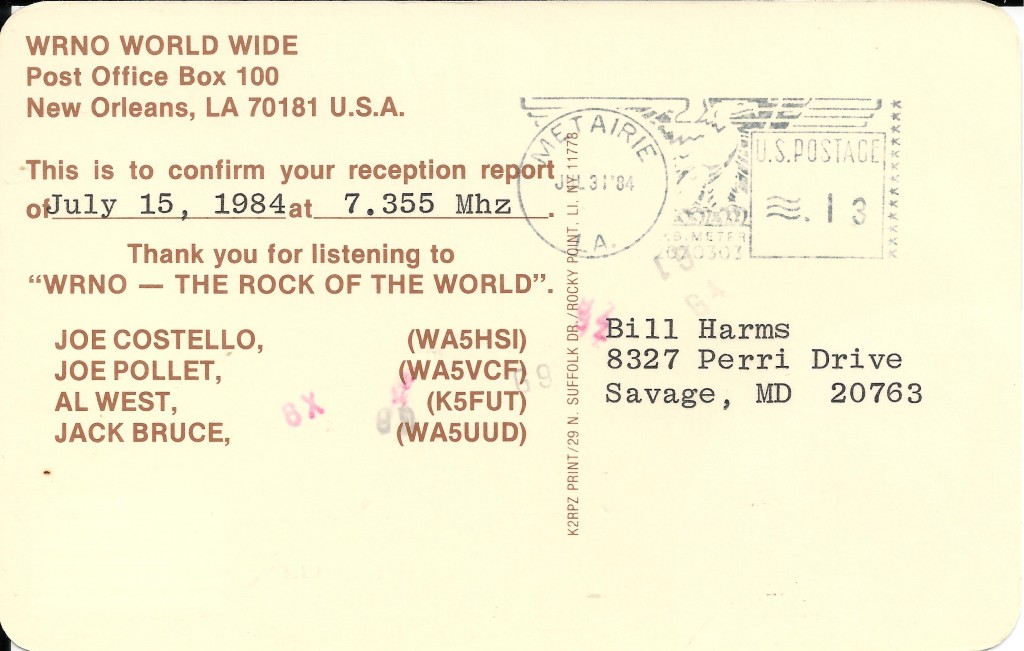
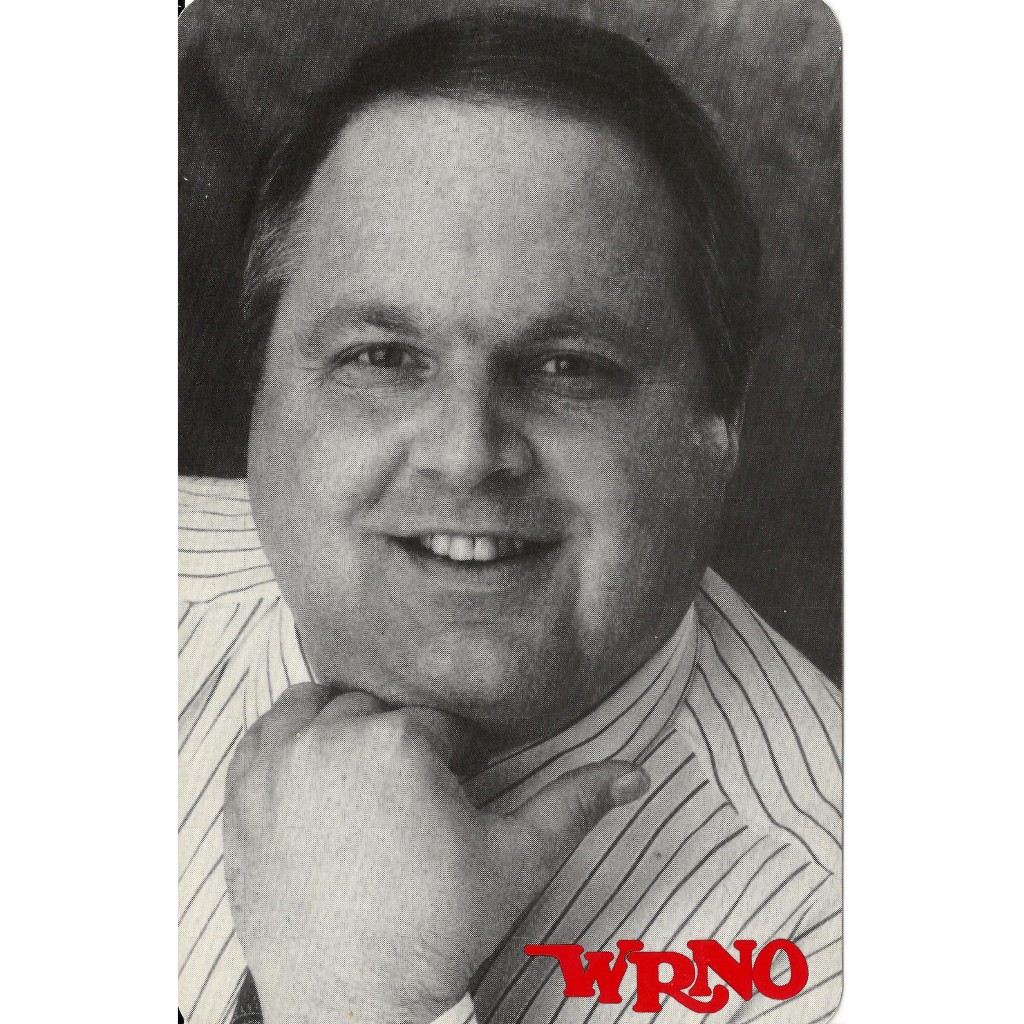
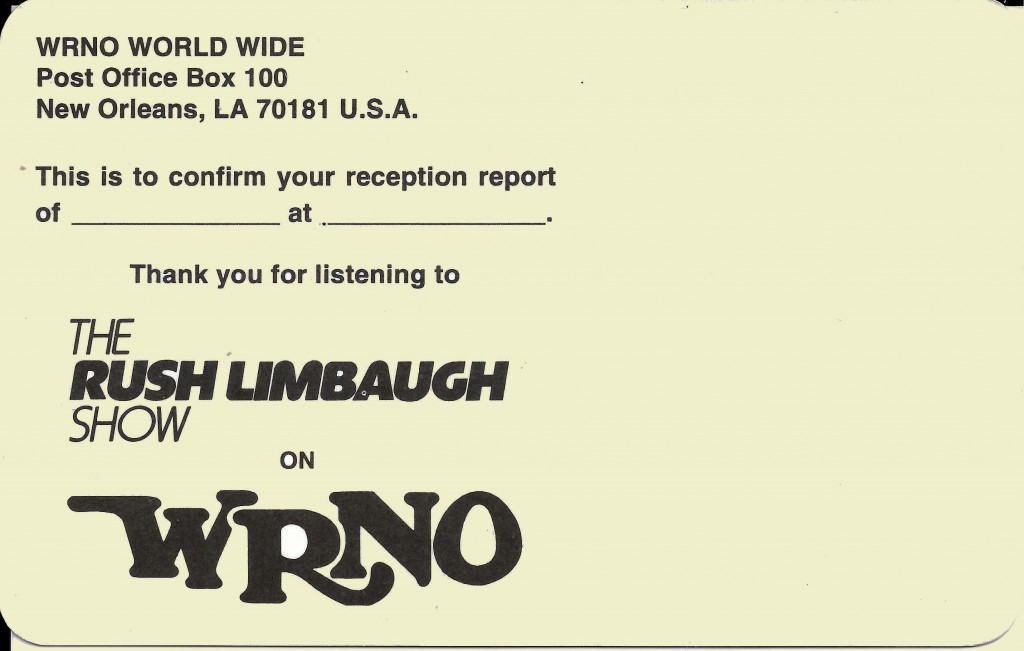
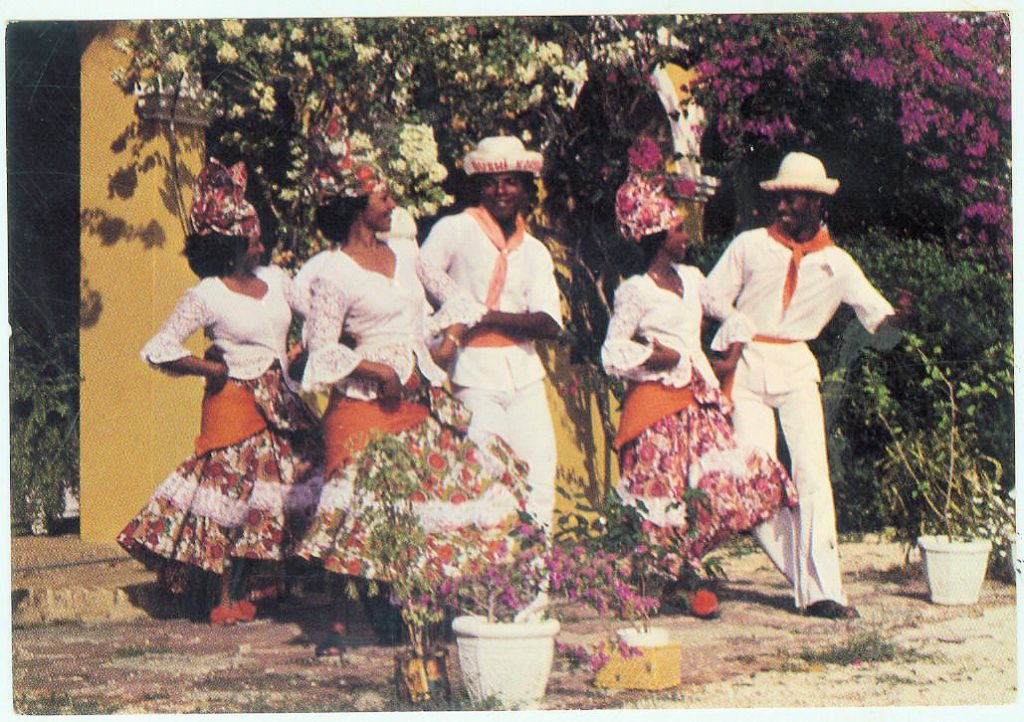
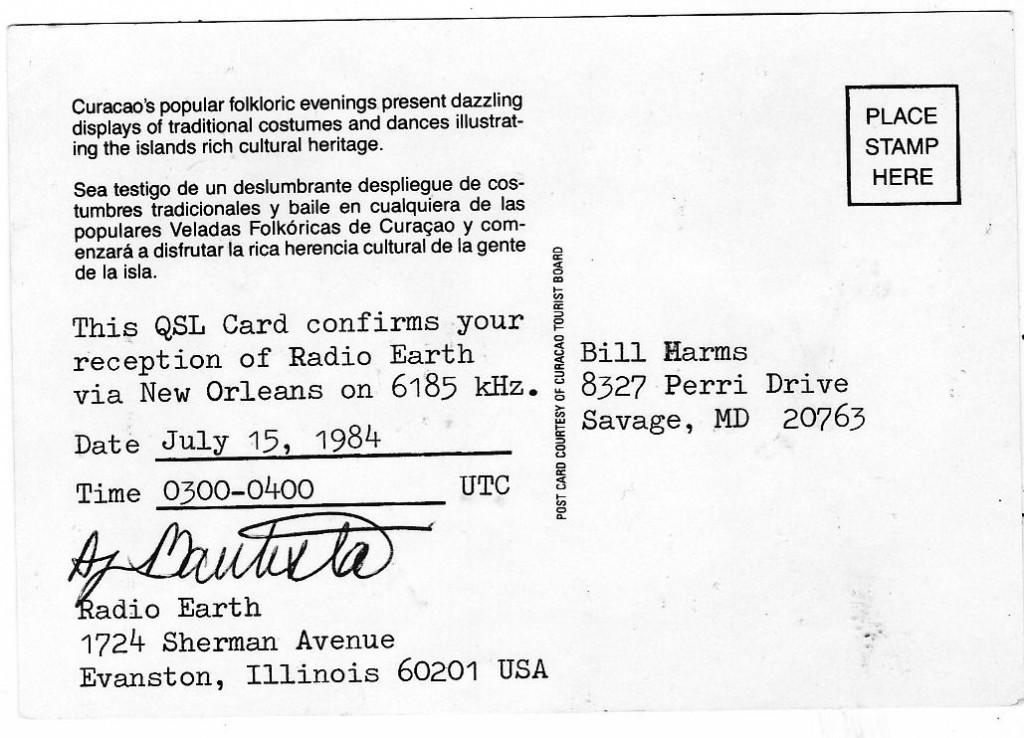
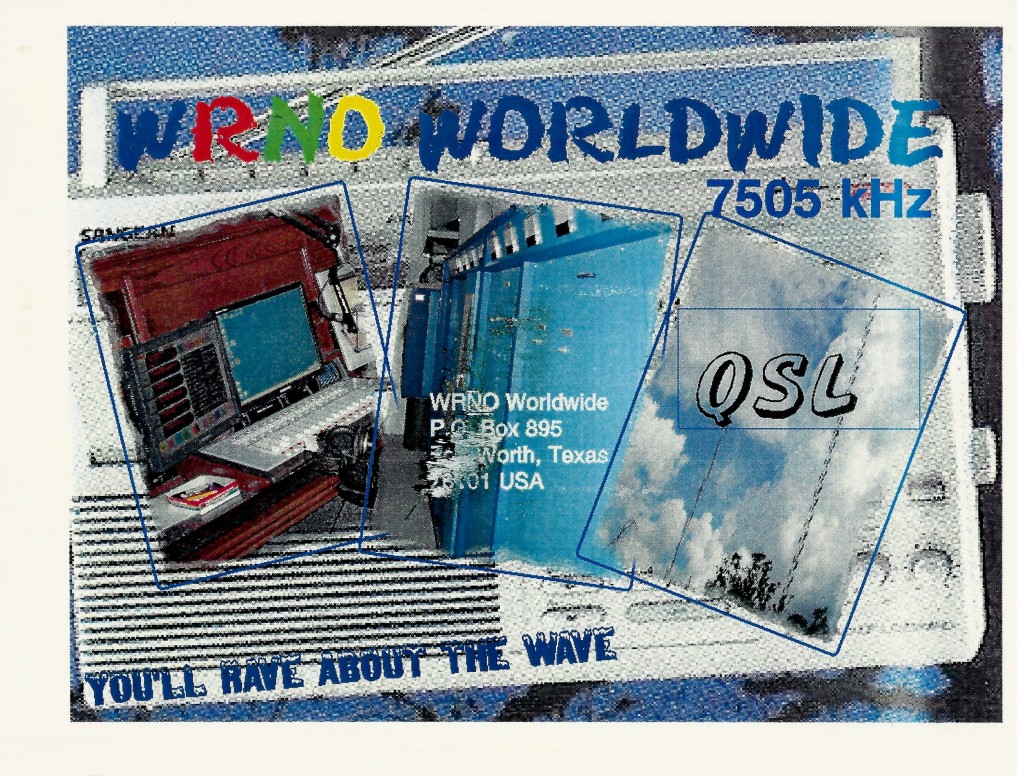
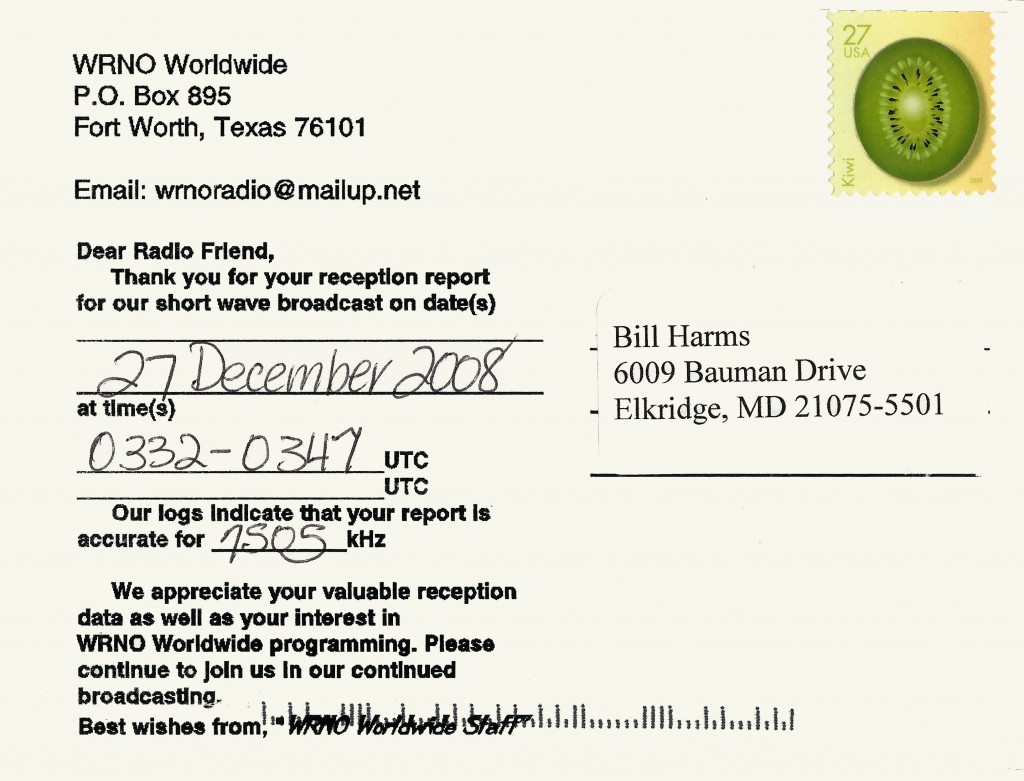
Canadian Forces Network Brunssum – CFNB
91.5 MHz
This is a verification for a reception report of Canadian Forces Network Brunssum, Netherlands, heard on 13 July 1989 on 91.5 MHz. Like my report for AFN-SHAPE Maastrict, my original report must have gotten lost in the mail. They sent a copy of their original answer and a new letter for a follow-up in 1991. This station went off the air in 2014. I am happy with this one.
Radio San Marino International
Radio San Marino International was an unlicensed station which claimed to be broadcasting from the Republic of San Marino. Most of the DX world was not convinced at the time. Instead the consensus was that its signal emitted from Germany. It was widely heard throughout Europe and North America, and beyond in December 1997 on 7580 kHz. I was fortunate to pick them up. They responded with the following QSL card.
Kol Israel
Israel Broadcasting Authority
Kol Israel, the external service of the Israel Broadcasting Authority (IBA), was a main fixture on the shortwave bands for many years (1948 to the mid-2000’s). The same shortwave transmitters would also re-broadcast their domestic services as well. I also happened to pick up their Home Service on medium wave in Germany and they sent a QSL for my reception report.
Where was BFBS’s Shortwave transmitter site located?
Do any fellow DXers possess QSL cards from the BFBS broadcasts on shortwave during Operation Granby (the British phase of the Gulf War, 1990-1991) or the Iraq War in 2003? If you possess additional details regarding these broadcasts, kindly share them.
Now, onto the intriguing puzzle: where was the transmitter site for the BFBS broadcast during the Gulf War in 1991? My aim is to determine if other DXers caught these transmissions and secured QSL cards. Concurrently, I’m scouring the internet for pertinent information.
During that period, BFBS broadcasts were widely noted and documented by DXers. There was considerable speculation regarding the transmitter’s location, with potential sites including Moosbrunn, Austria; the BBC East Mediterranean Shortwave Relay Station (BEMRS) in Zygi, Cyprus (east of Limassol); Julich, Germany, or even some Merlin Broadcast Ltd. facility.
Fortunately, a crucial clue emerged from the verie signer’s statement on the QSL card, indicating the “site” as Akrotiri, Cyprus. This revelation essentially discounts the BEMRS in Zygi, as Akrotiri lies to the west and south of Limassol, while Zygi is positioned to the east of Limassol.
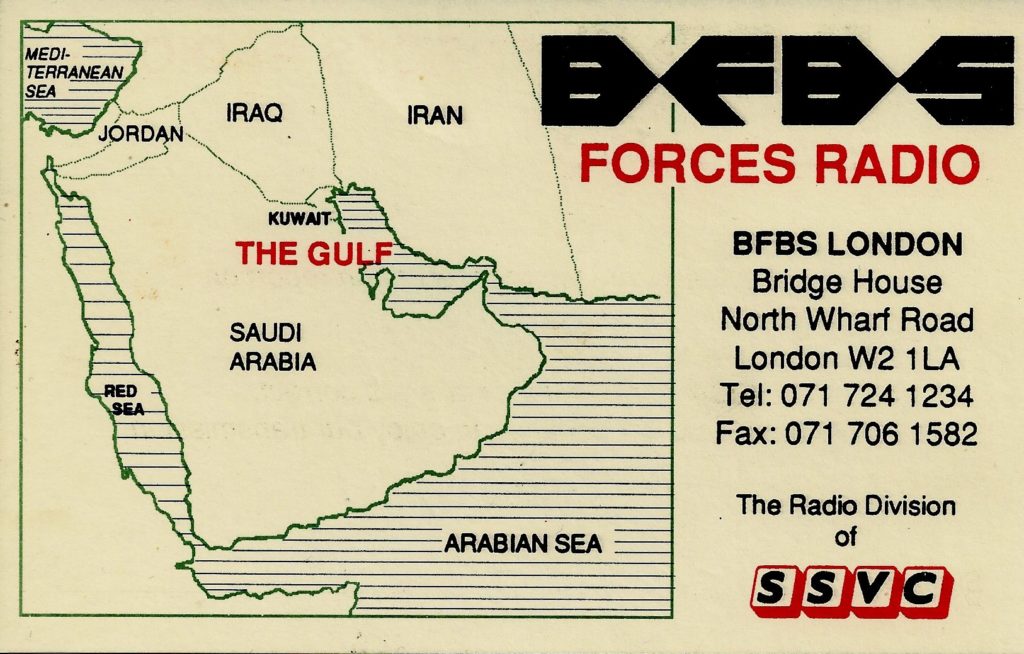
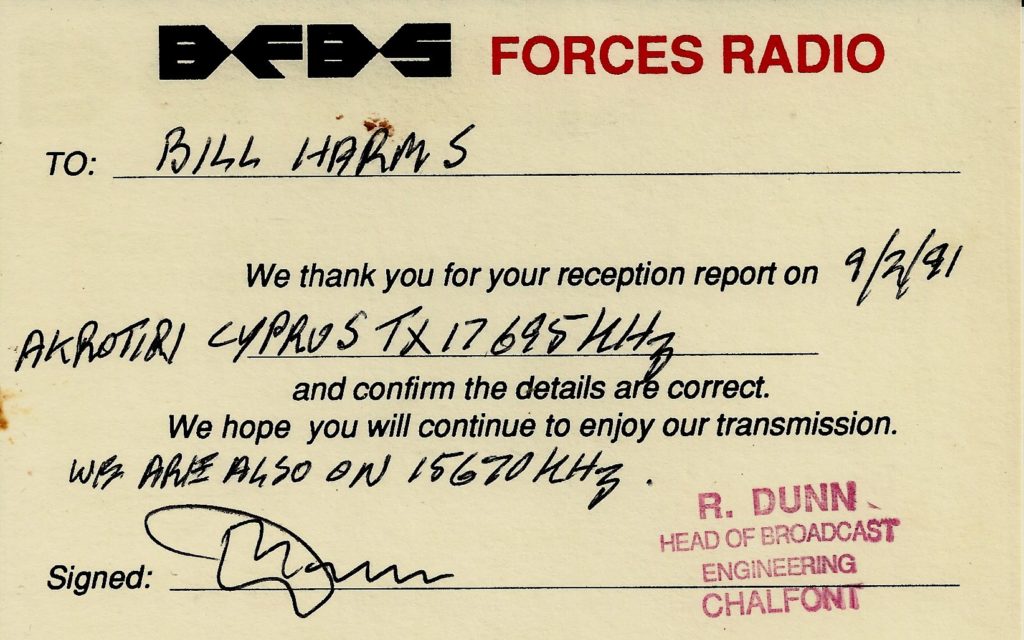
This map below clearly shows the location of Zygi/Zyyi, where the BBC Shortwave East Mediterranean Relay Site is located and Akrotiri Sovereign Base Area, where I believe the BFBS shortwave transmitter was located. Note that City Limassol is in between the two locations.
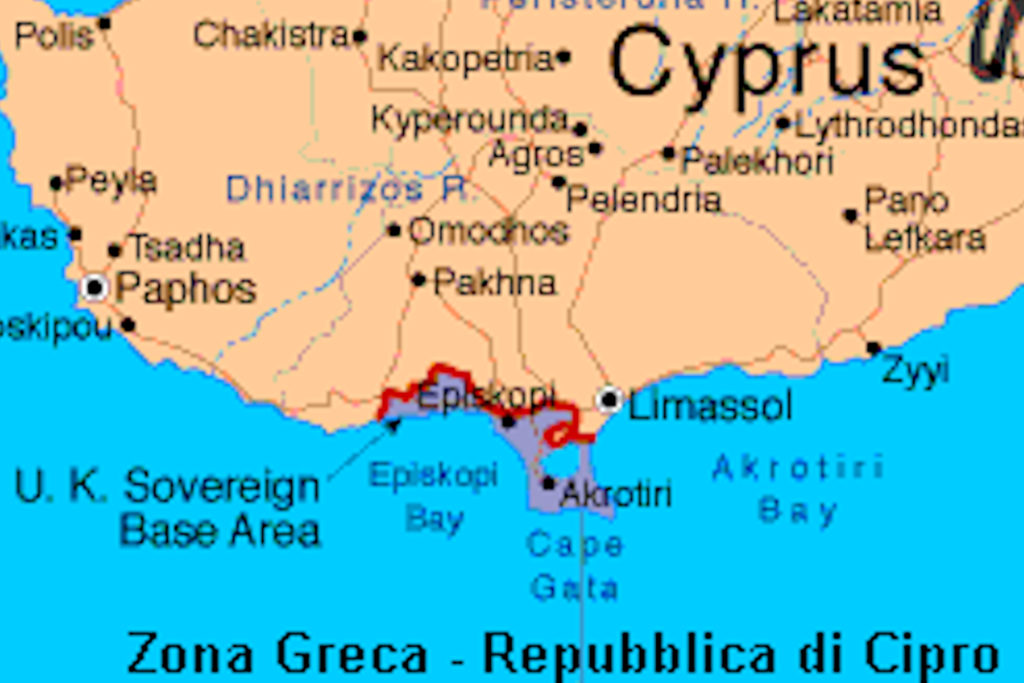
The QSL letter received by DXer Andree Bollin below sheds more light on the transmitter site that BFBS have used during Operation Granby (Gulf war 1990/1). The verification signer M. E. Townley of BFBS Cyprus revealed some interesting history about BFBS’s broadcasts which were transmitted on Shortwave. More importantly, Townley stated that “the transmitter is located adjacent to the Akrotiri salt lake in the south of Cyprus and uses a specially designed USB drive into a 10Kw transmitter. The aerial is a Log periodic array which is directional toward the Gulf. “
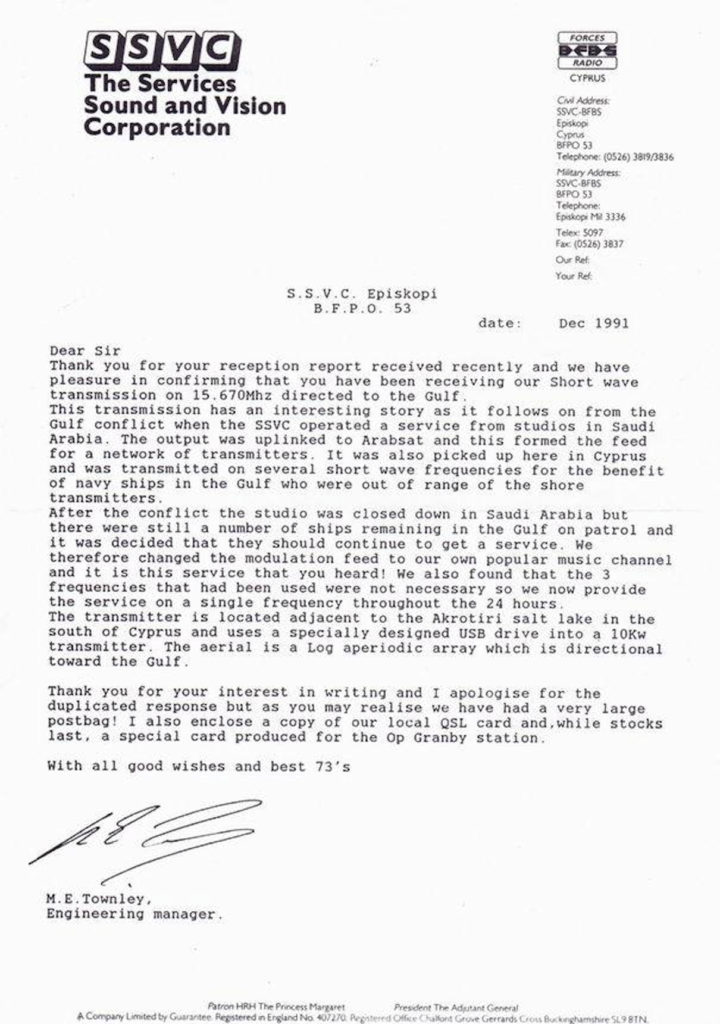
https://www.nationmaster.com/country-info/profiles/Akrotiri/Media
https://www.nationmaster.com/country-info/profiles/Cyprus/Media
Rádio Renascença
Anyone familiar with Rádio Renascença? This religious broadcaster regularly heard in the 1970’s and 1980’s on shortwave. Although no longer transmitting on shortwave, today Rádio Renascença operates a radio network on a number of outlets on FM.
